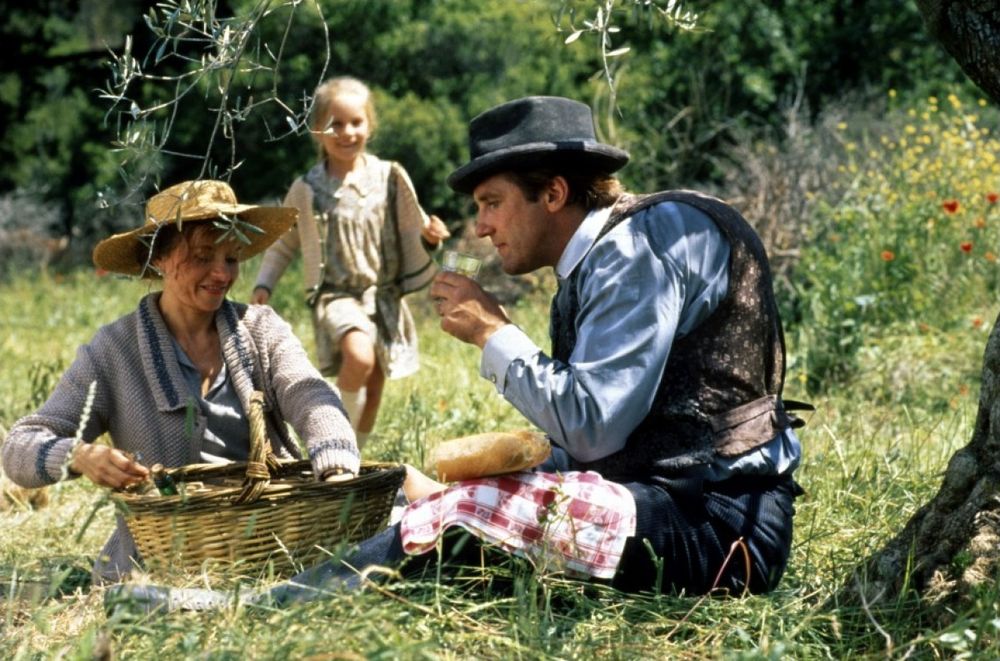 The setting is Provence, where Jean Cadoret and his family try to make a go of living on a property his wife Aimee inherited. Cheated, betrayed, and bankrupted, the project fails. This picnic is one of the family’s happier moments. See: Claude Berri. Jean de...
The setting is Provence, where Jean Cadoret and his family try to make a go of living on a property his wife Aimee inherited. Cheated, betrayed, and bankrupted, the project fails. This picnic is one of the family’s happier moments. See: Claude Berri. Jean de...
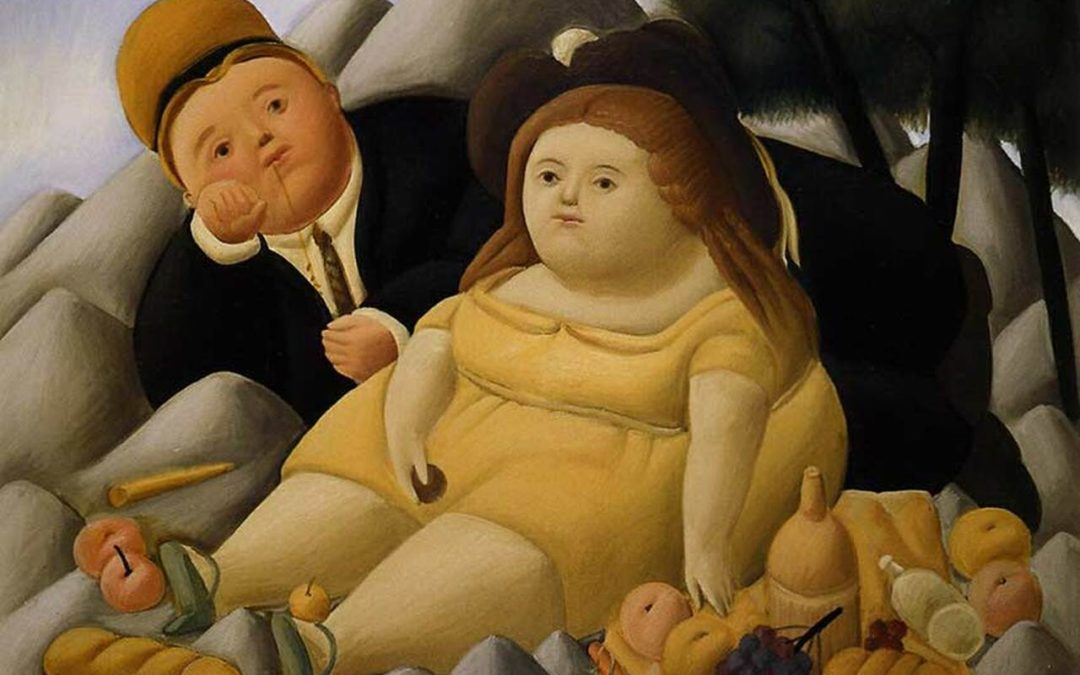 PicnicWit.com provides a comprehensive but not exhaustive collection of examples from various sources, including literature, fine arts, film, music, dance, journalism, food writers, and cookbooks. Both real-life and fictional picnics are listed chronologically, each...
PicnicWit.com provides a comprehensive but not exhaustive collection of examples from various sources, including literature, fine arts, film, music, dance, journalism, food writers, and cookbooks. Both real-life and fictional picnics are listed chronologically, each...
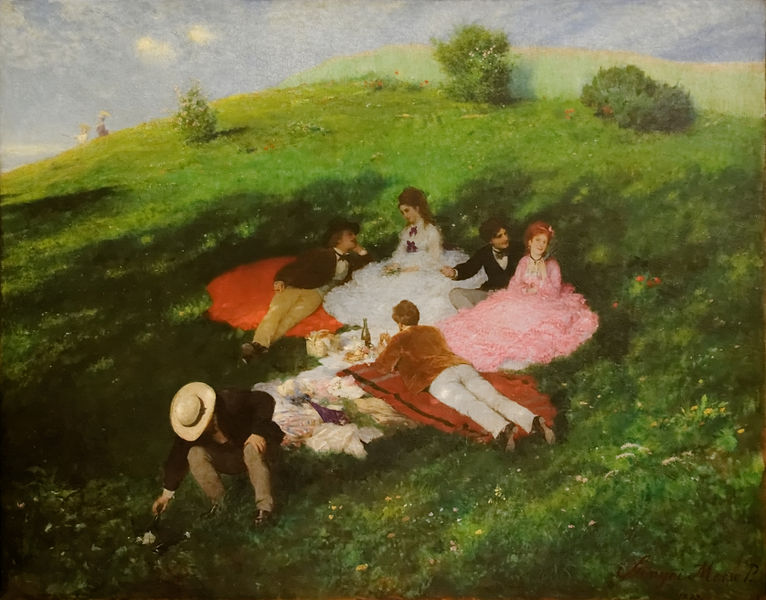 Picnickers will be satisfied only with “a perfect day for a picnic.” Spring or summer is preferred, but any season will do. Outdoors is preferred to the indoors, anywhere – on land or a sea, in backyards or parks, on beaches or rooftops—wherever a space...
Picnickers will be satisfied only with “a perfect day for a picnic.” Spring or summer is preferred, but any season will do. Outdoors is preferred to the indoors, anywhere – on land or a sea, in backyards or parks, on beaches or rooftops—wherever a space...
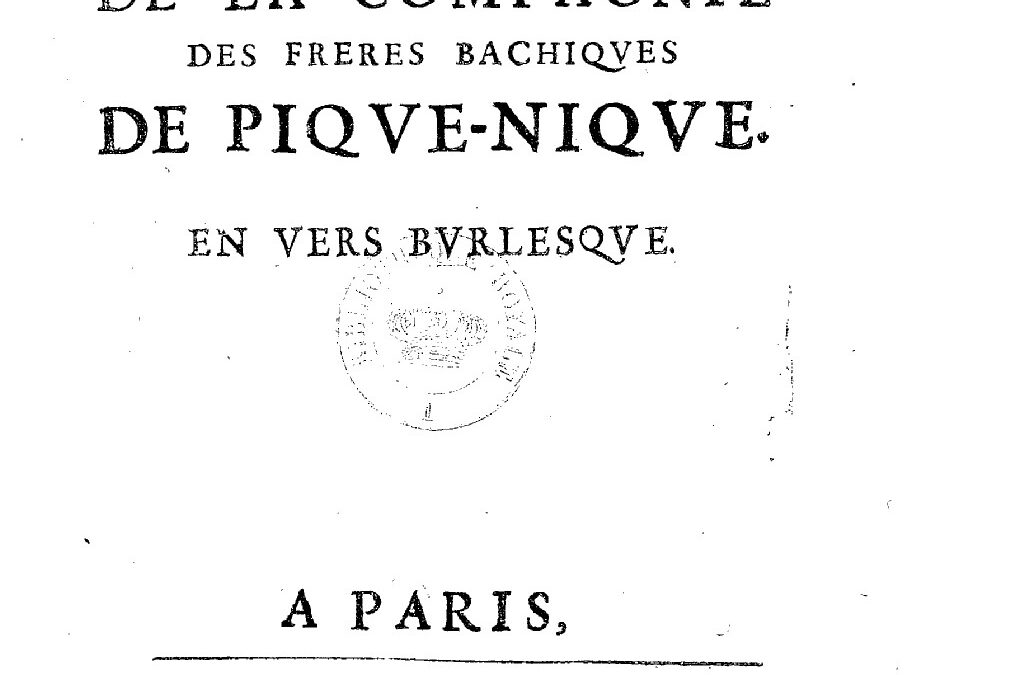 During the War of the Fronde, hundreds of satires, vers burlesques, were published in Paris, read and forgotten. All parties in the war were satirized: Jules, Cardinal Mazarin (First Minister), the Queen Mother, under-age King Louis XIV, the Prince of Condé, members...
During the War of the Fronde, hundreds of satires, vers burlesques, were published in Paris, read and forgotten. All parties in the war were satirized: Jules, Cardinal Mazarin (First Minister), the Queen Mother, under-age King Louis XIV, the Prince of Condé, members...
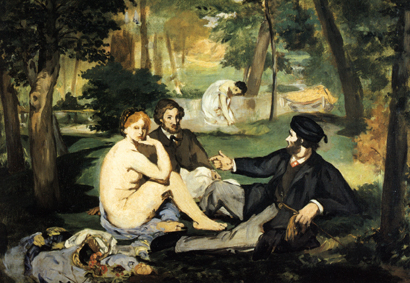 First coined in Paris, pique-nique appeared in a vers burlesque published in Paris during the War of the Fronde in 1649. Pique-Nique was the nickname given to a musketeer who turned gourmand and the Bacchic eating and drinking club, whose members shared expenses,...
First coined in Paris, pique-nique appeared in a vers burlesque published in Paris during the War of the Fronde in 1649. Pique-Nique was the nickname given to a musketeer who turned gourmand and the Bacchic eating and drinking club, whose members shared expenses,...
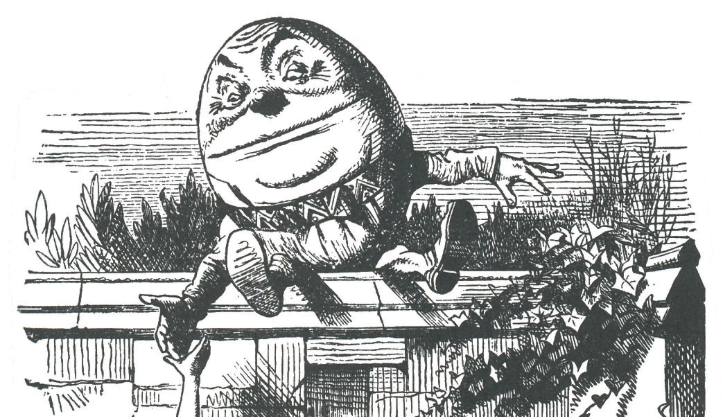 There is a possibility that pique-nique is a nonce word coined to create an impression or image, usually nonsense. Edward Lear’s “runcible spoon” or James Joyce’s “quark” are nonce words. But they had a purpose not evident for the...
There is a possibility that pique-nique is a nonce word coined to create an impression or image, usually nonsense. Edward Lear’s “runcible spoon” or James Joyce’s “quark” are nonce words. But they had a purpose not evident for the...
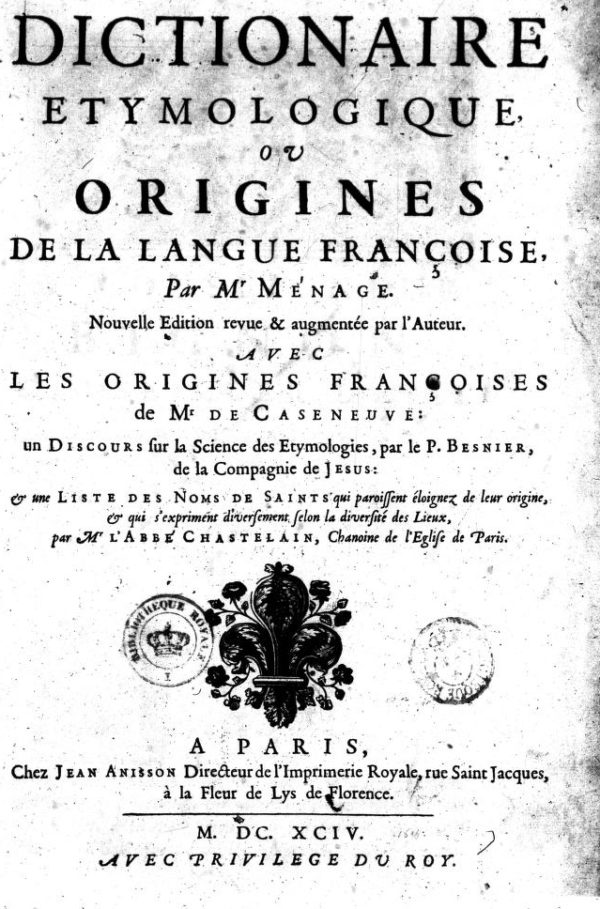 When audiences laughed at the pedant Vadius in Molière’s The Learned Ladies (1672), those in the know recognized Ménage shouting at a rival, “I defy you in verse, prose, Greek, and Latin.” When audiences laughed at the pedant Vadius in...
When audiences laughed at the pedant Vadius in Molière’s The Learned Ladies (1672), those in the know recognized Ménage shouting at a rival, “I defy you in verse, prose, Greek, and Latin.” When audiences laughed at the pedant Vadius in...
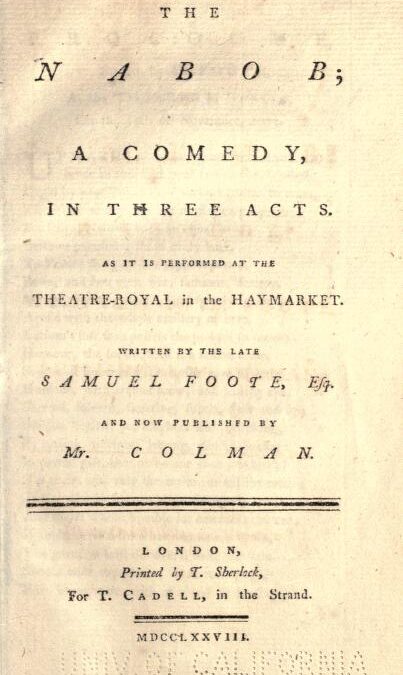 Samuel Foote’s The Nabob, now obscure, is the first link picnic with the compound word “nick-nack.” He used it in the sense of dining en piquenique, which suggests familiarity. The alliterative corruption is meant to be humorous for those who knew...
Samuel Foote’s The Nabob, now obscure, is the first link picnic with the compound word “nick-nack.” He used it in the sense of dining en piquenique, which suggests familiarity. The alliterative corruption is meant to be humorous for those who knew...
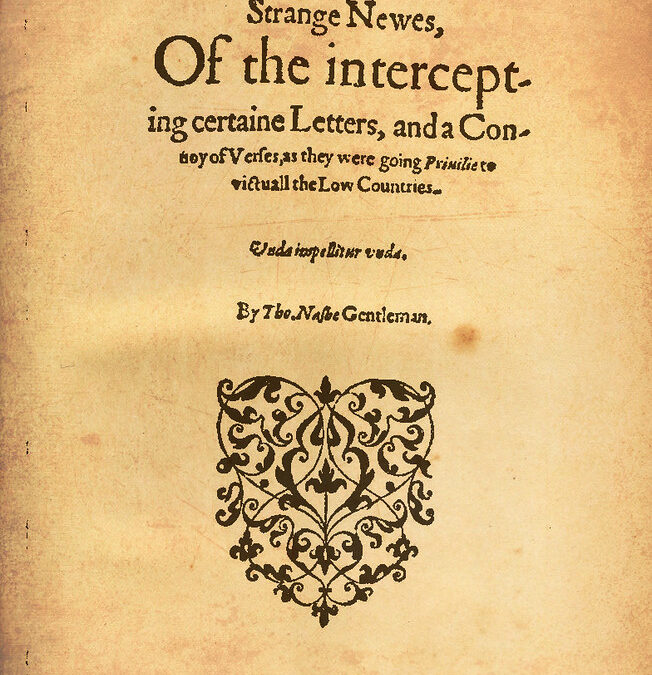 The Elizabethan spelling, potte-lucke, appeared in print fifty-one years before pique-nique appeared in a French satire in 1649. Thomas Nashe was the first to use the expression the compound word potte-lucke. He used it twice in 1592: first, in the verse satire...
The Elizabethan spelling, potte-lucke, appeared in print fifty-one years before pique-nique appeared in a French satire in 1649. Thomas Nashe was the first to use the expression the compound word potte-lucke. He used it twice in 1592: first, in the verse satire...
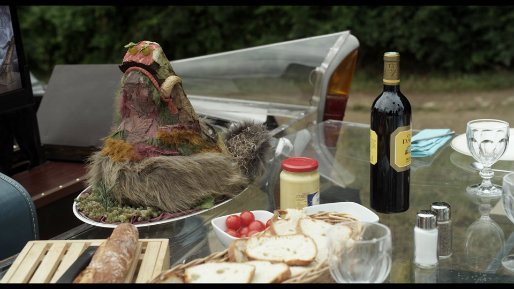 There aren’t any specific special foods that are cooked, served, or eaten at a picnic. Picnic food, however, must be transportable. Any food or drink will do, depending on your taste, how much you can carry, and the size of your basket. Eleanor Roosevelt hunched...
There aren’t any specific special foods that are cooked, served, or eaten at a picnic. Picnic food, however, must be transportable. Any food or drink will do, depending on your taste, how much you can carry, and the size of your basket. Eleanor Roosevelt hunched...
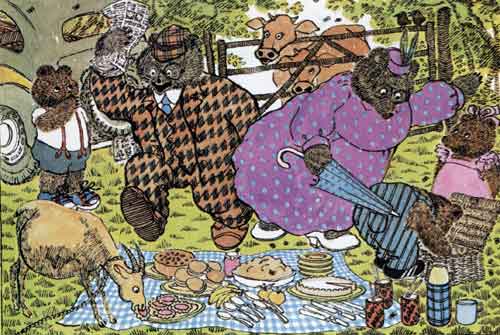 In picnic stories, unlike real-life children who are often persnickety, there are no arguments about food choices. Most importantly, most juvenile stories associate fun with baskets full of sweets, carbs, and fats. Presumably, well-behaved children require tasty...
In picnic stories, unlike real-life children who are often persnickety, there are no arguments about food choices. Most importantly, most juvenile stories associate fun with baskets full of sweets, carbs, and fats. Presumably, well-behaved children require tasty...
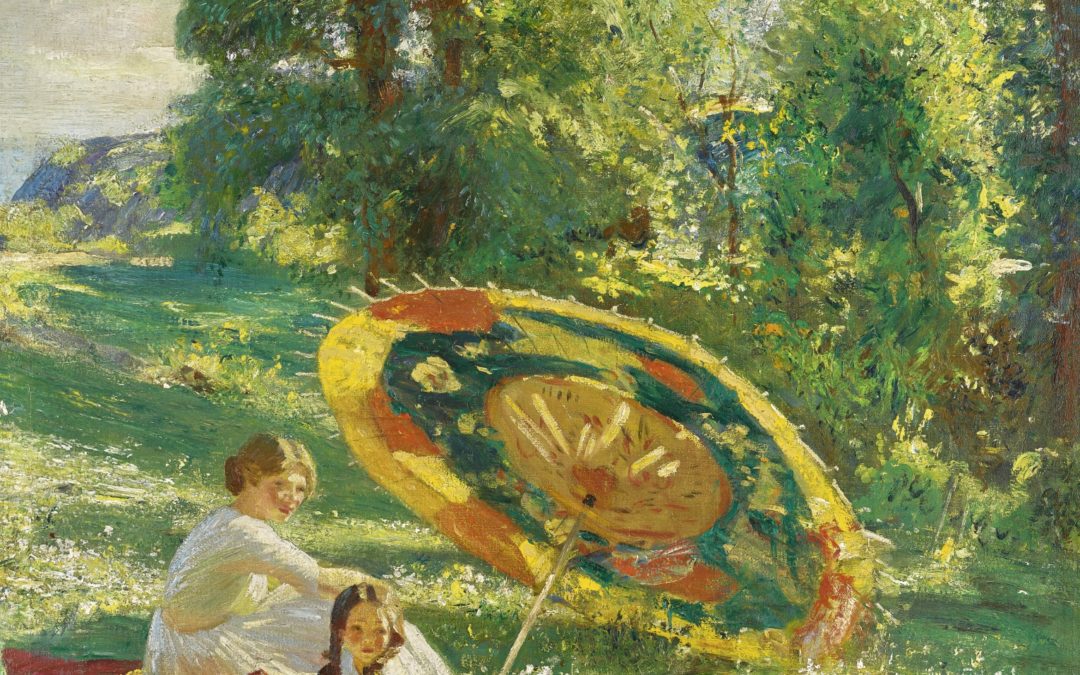 Georgina Battiscombe’s 1949 English Picnics is a pioneering study of English picnics in literature and art that has become a go-to standard. Battiscombe asserts the English picnicker “is a devotee of the simple life; for a brief moment, he apes the noble savage....
Georgina Battiscombe’s 1949 English Picnics is a pioneering study of English picnics in literature and art that has become a go-to standard. Battiscombe asserts the English picnicker “is a devotee of the simple life; for a brief moment, he apes the noble savage....
 Picnic is a universal word. Easy to speak, easy to spell, and easy to understand. We all know what a picnic is. The word suggests an image of what a picnic is and its expectations for pleasure. Brazilian Portuguese: piquenique Croatian: piknik Czech: piknik Danish:...
Picnic is a universal word. Easy to speak, easy to spell, and easy to understand. We all know what a picnic is. The word suggests an image of what a picnic is and its expectations for pleasure. Brazilian Portuguese: piquenique Croatian: piknik Czech: piknik Danish:...
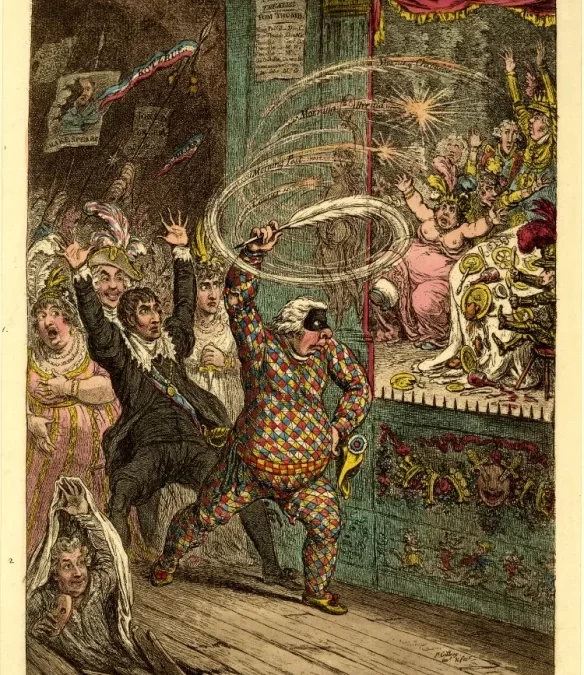 The Pic Nic Society attracted obsessive gamblers, eager amateur actors called Dilettanti, and gourmand diners. Taking advantage of a truce in a decade-long war with France (led by Napoleon, then First Consul), the Pic Nics wagered (and lost) that London might have a...
The Pic Nic Society attracted obsessive gamblers, eager amateur actors called Dilettanti, and gourmand diners. Taking advantage of a truce in a decade-long war with France (led by Napoleon, then First Consul), the Pic Nics wagered (and lost) that London might have a...
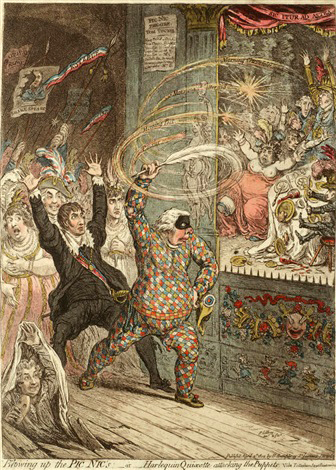 Gillray’s Blowing up the Pic Nics; – or – Harlequin Quixote attacking the Puppets. Vide Tottenham Street Pantomime (April 2, 1802) is an important reason picnic entered English common parlance. Before Gillray, pique-nique was a trendy French word known to...
Gillray’s Blowing up the Pic Nics; – or – Harlequin Quixote attacking the Puppets. Vide Tottenham Street Pantomime (April 2, 1802) is an important reason picnic entered English common parlance. Before Gillray, pique-nique was a trendy French word known to...
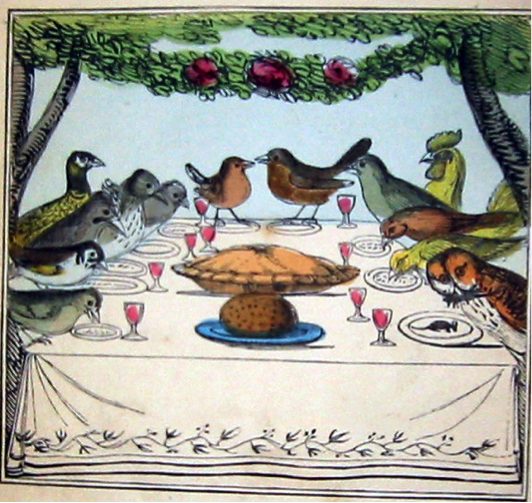 The Courtship, Marriage, and Pic Nic Dinner of Cock Robin. To Which is Added, Alas! The Doleful Death of the Bridegroom is the first outdoor meal named a picnic in our modern sense. When John Harris retold the old story of Sparrow’s fateful murder of Cock...
The Courtship, Marriage, and Pic Nic Dinner of Cock Robin. To Which is Added, Alas! The Doleful Death of the Bridegroom is the first outdoor meal named a picnic in our modern sense. When John Harris retold the old story of Sparrow’s fateful murder of Cock...
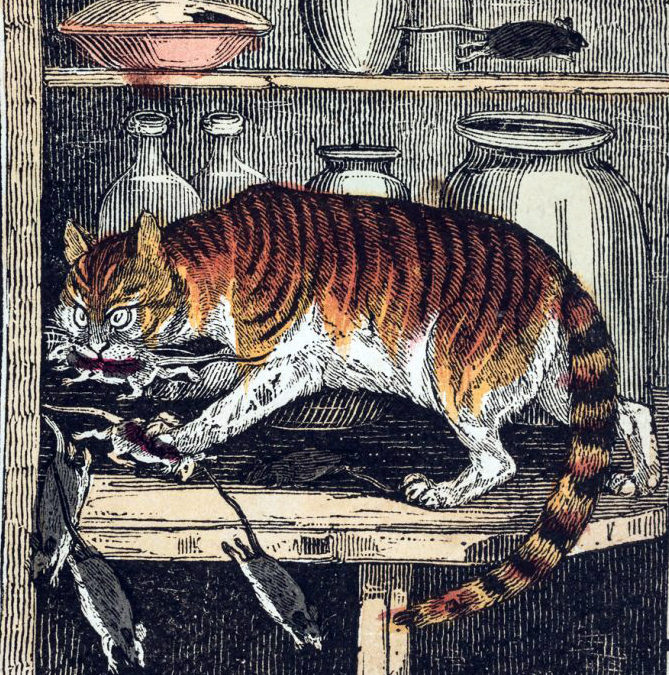 Elliott’s moral tale The Mice and Their Pic Nic failed to persuade readers that a “pic nic dinner,” especially in London, is sinful. Elliott’s readers were expected to recognize her mouse story as an adaptation of Aesop’s fable...
Elliott’s moral tale The Mice and Their Pic Nic failed to persuade readers that a “pic nic dinner,” especially in London, is sinful. Elliott’s readers were expected to recognize her mouse story as an adaptation of Aesop’s fable...
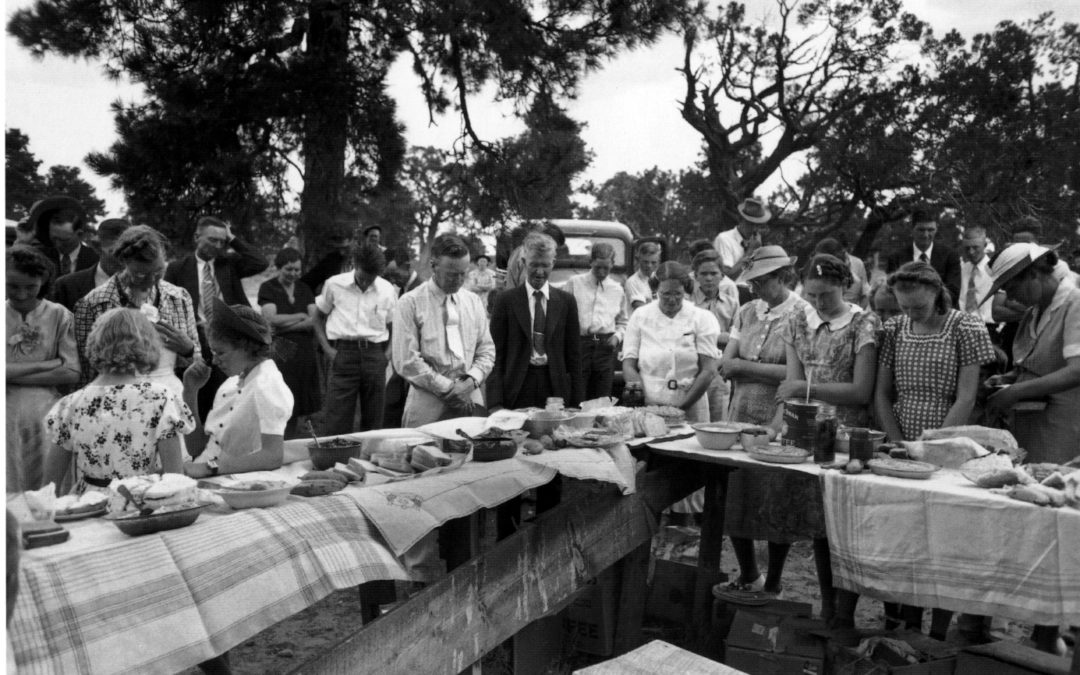 Dinner on the grounds (always with an “s”) is a Methodist revival meeting picnic. There are many geographic variations throughout the United States, but Southerners seem to hold sway, scheduling the meeting for “lay-by time,” sometime between...
Dinner on the grounds (always with an “s”) is a Methodist revival meeting picnic. There are many geographic variations throughout the United States, but Southerners seem to hold sway, scheduling the meeting for “lay-by time,” sometime between...
 Corny picnic satire was in vogue among English music before Gilbert and Sullivan’s 1871 Thespis, or The Gods Grown Old. Typical “The Pic-Nic” is sung to the air of “Here’s the Maiden of Bashful Fifteen” from Sheridan’s The...
Corny picnic satire was in vogue among English music before Gilbert and Sullivan’s 1871 Thespis, or The Gods Grown Old. Typical “The Pic-Nic” is sung to the air of “Here’s the Maiden of Bashful Fifteen” from Sheridan’s The...
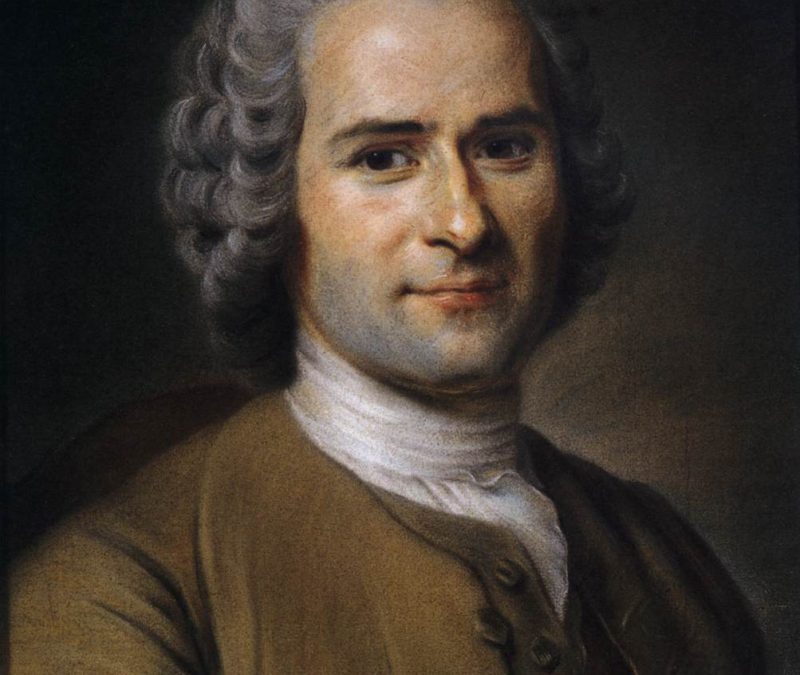 Rousseau and Abbé Etienne Condillac dined en piquenique sometime in 1745 or 1747. The date is uncertain because Rousseau is careless with dates related to the incident twenty years after in Confessions. Hard up and living in Paris in the rue Saint-Denis, Rousseau...
Rousseau and Abbé Etienne Condillac dined en piquenique sometime in 1745 or 1747. The date is uncertain because Rousseau is careless with dates related to the incident twenty years after in Confessions. Hard up and living in Paris in the rue Saint-Denis, Rousseau...
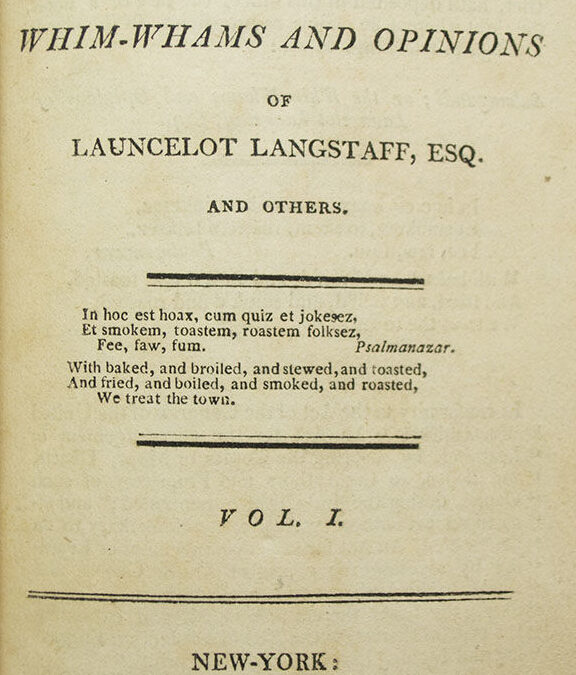 Being Anglophile and aware of London happenings, Irving probably picked up the aftermath of the Pic Nic Society scandal during his tour of Europe 1804-1806. The word stuck, but it’s used only once as an adjective to mean something silly. Under the heading “Fashions by...
Being Anglophile and aware of London happenings, Irving probably picked up the aftermath of the Pic Nic Society scandal during his tour of Europe 1804-1806. The word stuck, but it’s used only once as an adjective to mean something silly. Under the heading “Fashions by...
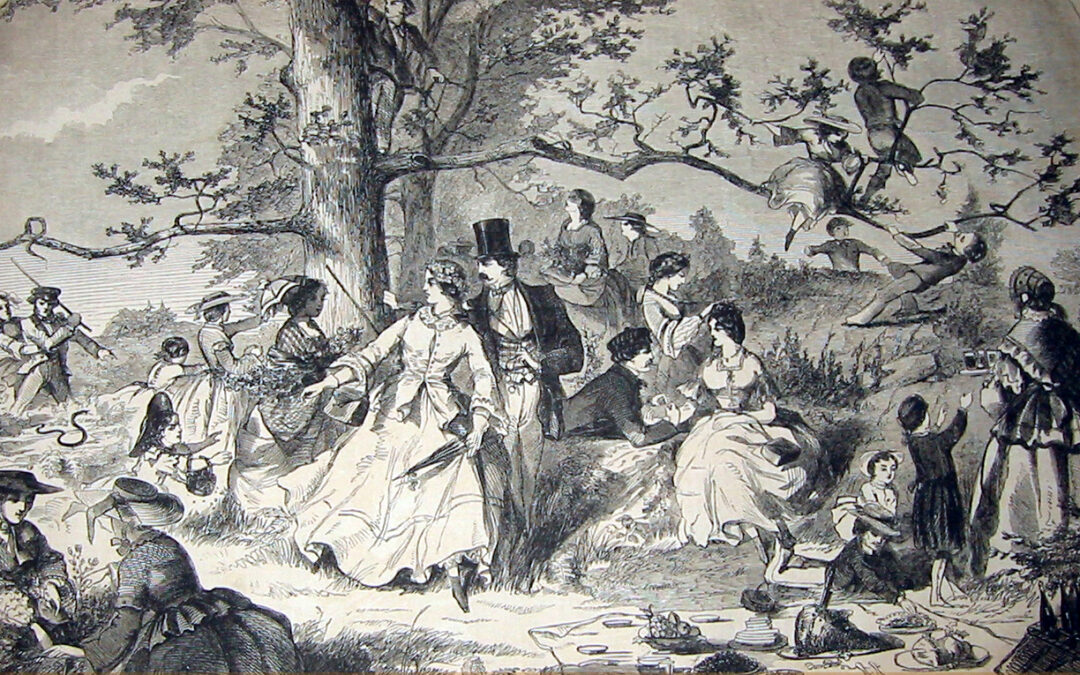 Homer’s A Picnic in the Woods is a pleasant joke, suggesting that the usually staid picnic might also be tumultuous. The action here is everywhere. A large picnic blanket is spread and filled with food: a bowl of fruit, a large ham with a knife for carving, a...
Homer’s A Picnic in the Woods is a pleasant joke, suggesting that the usually staid picnic might also be tumultuous. The action here is everywhere. A large picnic blanket is spread and filled with food: a bowl of fruit, a large ham with a knife for carving, a...
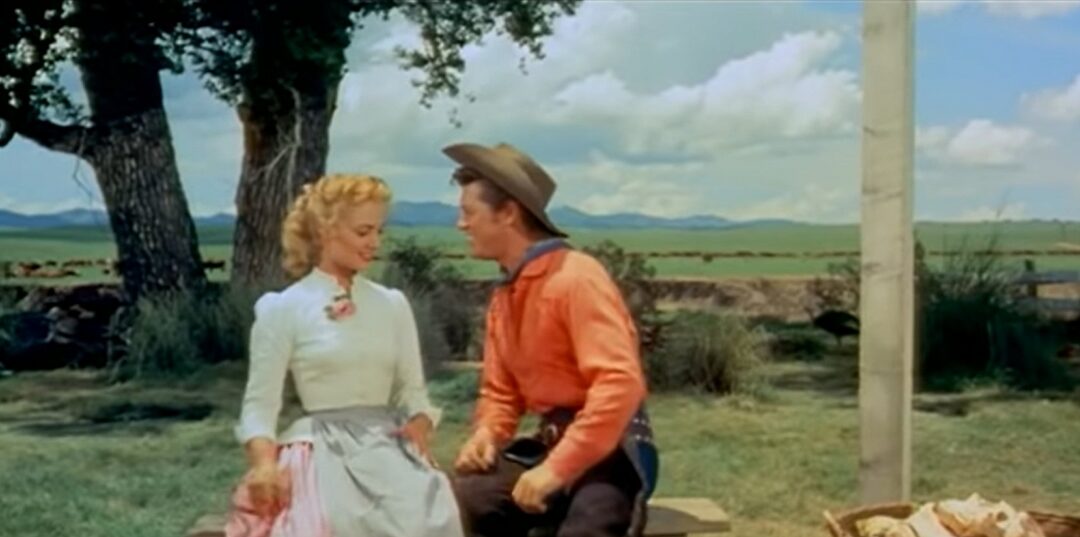 Fred Zinnemann’s Oklahoma! is an adaptation of Richard Rodgers and Oscar Hammerstein II’s Oklahoma! (1943) is an adaptation of Lynn Riggs’ Green Grow the Lilacs (1931). Hammerstein wrote one (Act 2) to intensify the rivalry between Curly McClain and...
Fred Zinnemann’s Oklahoma! is an adaptation of Richard Rodgers and Oscar Hammerstein II’s Oklahoma! (1943) is an adaptation of Lynn Riggs’ Green Grow the Lilacs (1931). Hammerstein wrote one (Act 2) to intensify the rivalry between Curly McClain and...
 Donald Duck’s beach picnic makes a joke of expectations. Intending a pleasant day at the beach, Donald is upset and bedeviled with turmoil. Especially the ants, dressed in war paint like “Native Americans,” steal Donald’s picnic. The idea is...
Donald Duck’s beach picnic makes a joke of expectations. Intending a pleasant day at the beach, Donald is upset and bedeviled with turmoil. Especially the ants, dressed in war paint like “Native Americans,” steal Donald’s picnic. The idea is...
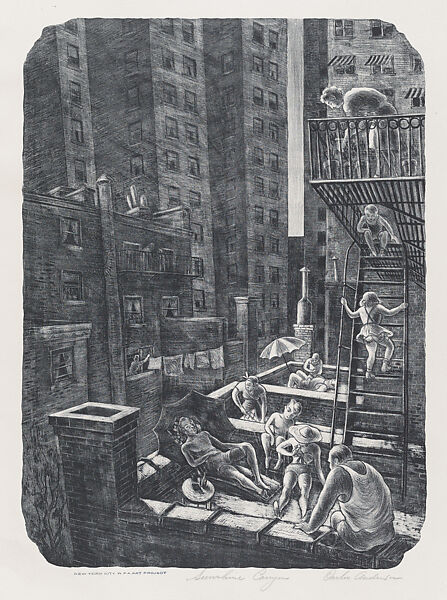 Anderson’s rooftop is an example of the urban version of tar beach. For another example, see Ringgold’s Tar Beach. See Carlos Anderson Sunshine Canyon (1943c.)
Anderson’s rooftop is an example of the urban version of tar beach. For another example, see Ringgold’s Tar Beach. See Carlos Anderson Sunshine Canyon (1943c.)
 Renoir’s close adaptation of Guy de Maupassant’s Partie de Campagne is about the sad romantic consequences of a family picnic. Even the menu is Maupassant’s: fried fish, stewed rabbit [fricassee], salad, beer, claret, and coffee. However, Renoir...
Renoir’s close adaptation of Guy de Maupassant’s Partie de Campagne is about the sad romantic consequences of a family picnic. Even the menu is Maupassant’s: fried fish, stewed rabbit [fricassee], salad, beer, claret, and coffee. However, Renoir...
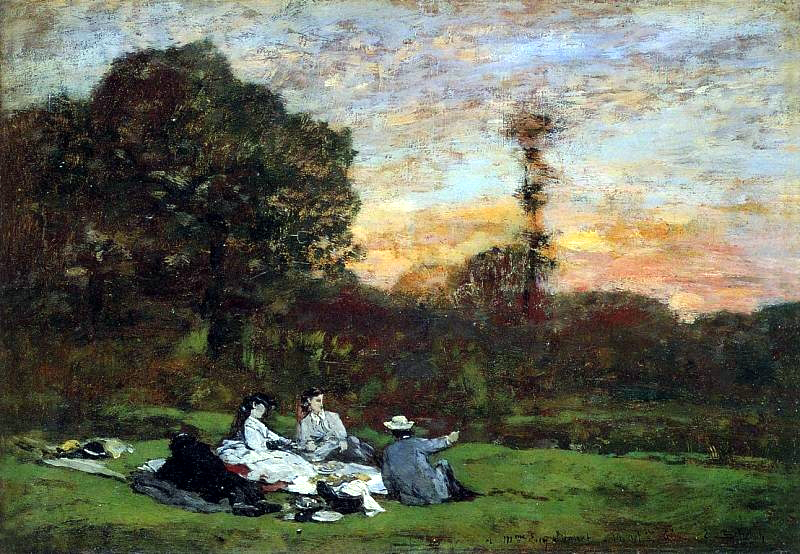 Boudin’s Luncheon Grass, the Family of Eugene Manet (1866) is a typical landscape with picnickers. Unlike Manet’s Luncheon, this is not confrontational or sexual. Because Boudin was a friend of the Manet family, especially Eugène, this picture of them...
Boudin’s Luncheon Grass, the Family of Eugene Manet (1866) is a typical landscape with picnickers. Unlike Manet’s Luncheon, this is not confrontational or sexual. Because Boudin was a friend of the Manet family, especially Eugène, this picture of them...
 Thomas Wright found songs, now obscure, about women having meals in taverns and bathhouses that are suspiciously like picnics. He writes about this in The History of Domestic Manners and Sentiments in England, suggesting that sharing food and entertainment is common...
Thomas Wright found songs, now obscure, about women having meals in taverns and bathhouses that are suspiciously like picnics. He writes about this in The History of Domestic Manners and Sentiments in England, suggesting that sharing food and entertainment is common...
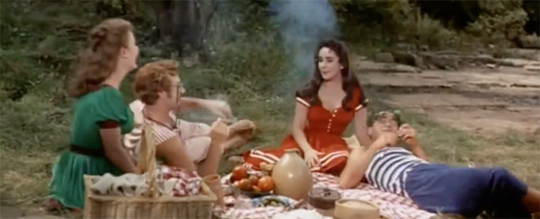 Dmytryk’s picnic is a traditional affair on the rocky ledge of the Shawmucky River: a blanket, food, and a demijohn of corn liquor. It begins happily and ends with a kiss. The day’s happiness is a prelude to John Shawnessey’s love affair and unfortunate marriage to...
Dmytryk’s picnic is a traditional affair on the rocky ledge of the Shawmucky River: a blanket, food, and a demijohn of corn liquor. It begins happily and ends with a kiss. The day’s happiness is a prelude to John Shawnessey’s love affair and unfortunate marriage to...
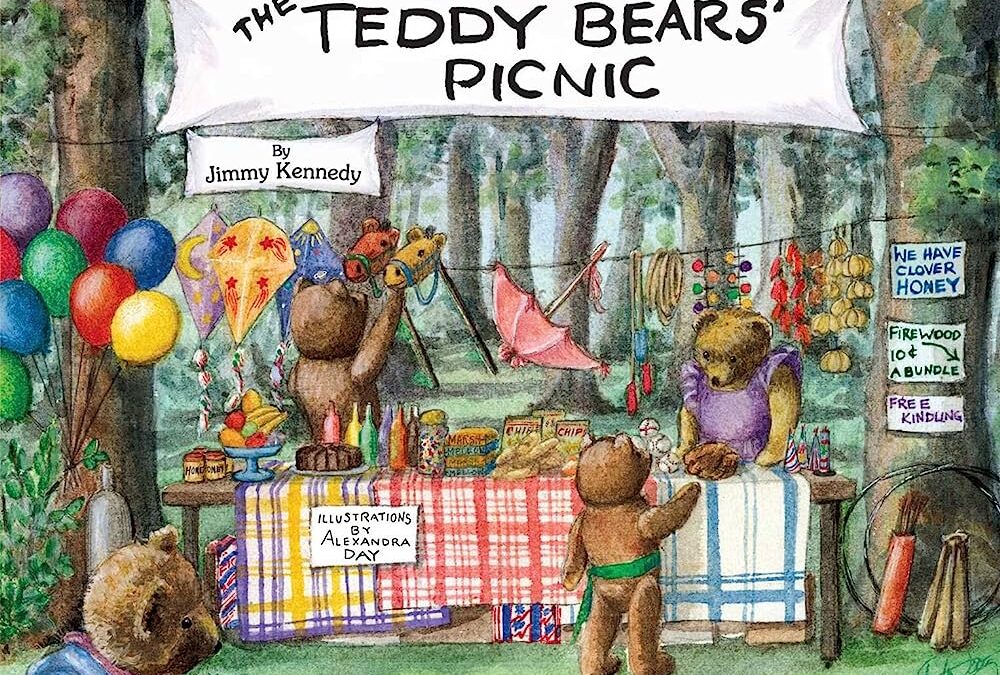 As they should, Day’s illustrations for The Teddy Bears’ Picnic emphasize a picnic where the bears are stocked with honey, bananas, pears, oranges, cake, soda, jellybeans, marshmallows, and chips. Inexplicably included are garlands of red peppers and garlic. See...
As they should, Day’s illustrations for The Teddy Bears’ Picnic emphasize a picnic where the bears are stocked with honey, bananas, pears, oranges, cake, soda, jellybeans, marshmallows, and chips. Inexplicably included are garlands of red peppers and garlic. See...
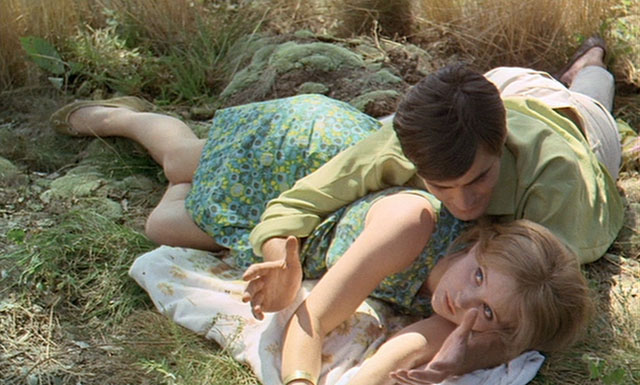 Varda’s satirical idea is that family happiness depends on male arrogance and female docility. She suggests that if wives are replaceable, a man can lose one and plug in another. Voila, happiness. François Chevaliers supposes that a husband needs a mistress to...
Varda’s satirical idea is that family happiness depends on male arrogance and female docility. She suggests that if wives are replaceable, a man can lose one and plug in another. Voila, happiness. François Chevaliers supposes that a husband needs a mistress to...
 Among the best picnics, adult or otherwise, A Picnic in the Woods sets an example of optimistic picnic fun. It begins with the usual refrain: “It’s a beautiful day for a picnic!” as Mickey Mouse, Minnie Mouse, and Mickey’s nephews Ferdy and...
Among the best picnics, adult or otherwise, A Picnic in the Woods sets an example of optimistic picnic fun. It begins with the usual refrain: “It’s a beautiful day for a picnic!” as Mickey Mouse, Minnie Mouse, and Mickey’s nephews Ferdy and...
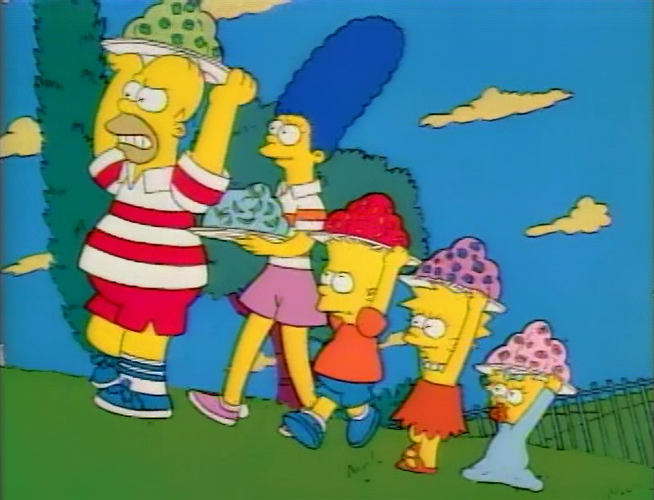 If the Simpsons ever do any right, it’s a miracle, and the picnic at Mr. Bruns’s mansion is a typical disaster. Thinking that the boss likes dessert, Homer, Marge, Bart, and Lisa bring gelatin dessert to the picnic. (So does everyone else.) It’s an...
If the Simpsons ever do any right, it’s a miracle, and the picnic at Mr. Bruns’s mansion is a typical disaster. Thinking that the boss likes dessert, Homer, Marge, Bart, and Lisa bring gelatin dessert to the picnic. (So does everyone else.) It’s an...
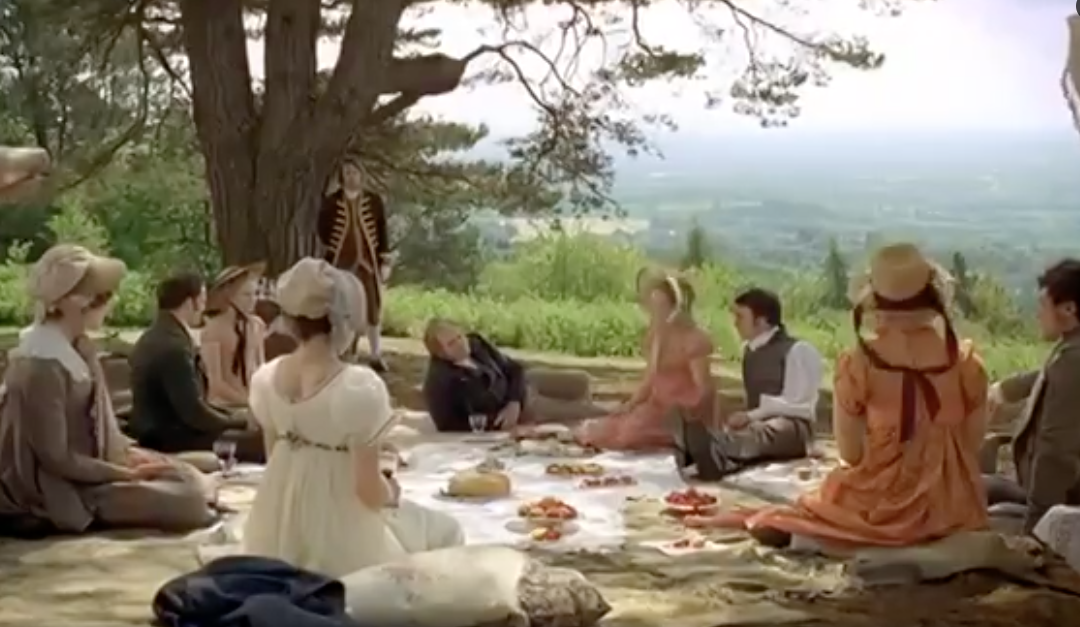 O’Hanlon supposes Box Hill picnic must be a combination of informality and gentility. Servants carry amenities for a regiment so that Emma, Knightley, et al. sits on a sparkling white cloth (with cushions, of course) drinking wine in crystal goblets, served by...
O’Hanlon supposes Box Hill picnic must be a combination of informality and gentility. Servants carry amenities for a regiment so that Emma, Knightley, et al. sits on a sparkling white cloth (with cushions, of course) drinking wine in crystal goblets, served by...
 The picnic at the Castello San Salvatore in Portofino’s vicinity is a happy fairy tale. * Saint Salvatore suggests salvation for the four women, all suffering from emotional depression and finding friendship and renewal of love. Mike Newell’s Enchanted...
The picnic at the Castello San Salvatore in Portofino’s vicinity is a happy fairy tale. * Saint Salvatore suggests salvation for the four women, all suffering from emotional depression and finding friendship and renewal of love. Mike Newell’s Enchanted...
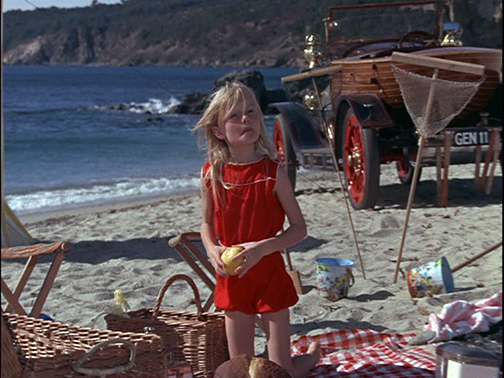 Hughes’ Chitty Chitty Bang Bang is a romantic musical comedy so loosely based on the novel that Fleming would have difficulty recognizing it. Of course, Chitty Chitty Bang Bang, the magical automobile, is present. Commander Potts and his children Jemima...
Hughes’ Chitty Chitty Bang Bang is a romantic musical comedy so loosely based on the novel that Fleming would have difficulty recognizing it. Of course, Chitty Chitty Bang Bang, the magical automobile, is present. Commander Potts and his children Jemima...
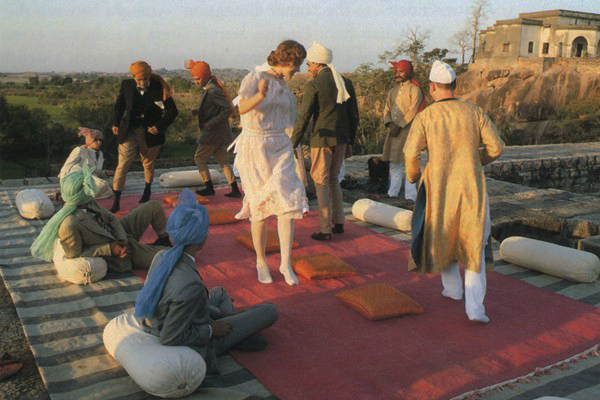 Ruth Prawer Jhabvala’s Heat and Dust has two picnics. But as the screenwriter for James Ivory’s film, she included only Olivia Rivers, a British colonial wife, picnic with the Nawab, the local ruler of a small state in central India. Bored with her husband, Rivers...
Ruth Prawer Jhabvala’s Heat and Dust has two picnics. But as the screenwriter for James Ivory’s film, she included only Olivia Rivers, a British colonial wife, picnic with the Nawab, the local ruler of a small state in central India. Bored with her husband, Rivers...
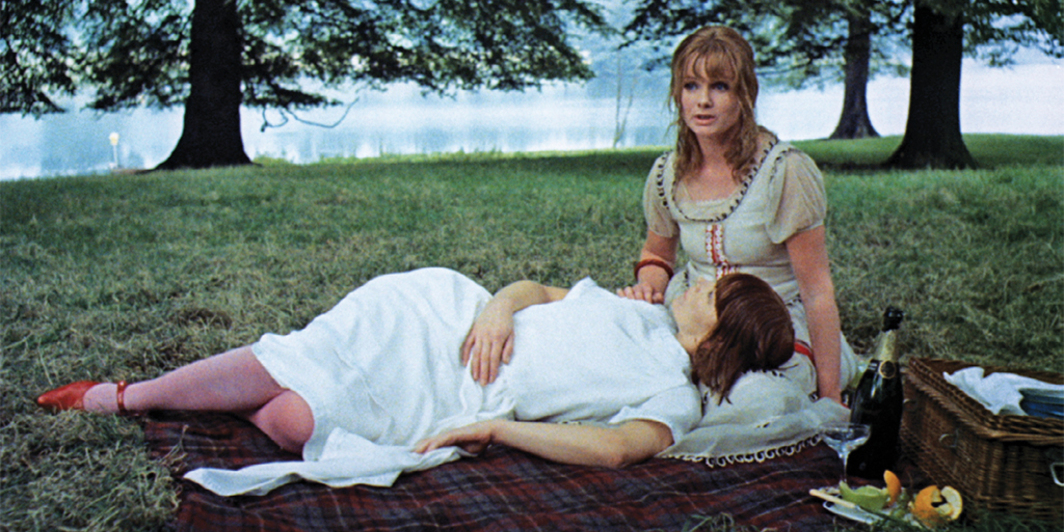 As in Lawrence’s Women in Love, Russell’s water party, a euphemism for a picnic, begins happily in the bright light of the early afternoon but ends dismally in the evening, partially illuminated by gaudy party lights. More like a country fair than an...
As in Lawrence’s Women in Love, Russell’s water party, a euphemism for a picnic, begins happily in the bright light of the early afternoon but ends dismally in the evening, partially illuminated by gaudy party lights. More like a country fair than an...
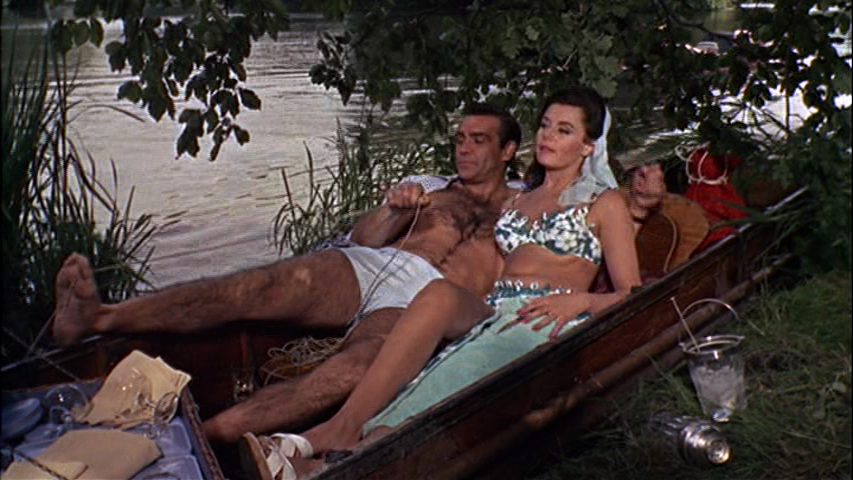 Young’s picnic Russia With Love is not in Ian Fleming’s novel. Young’s picnic begins when Bond and his current lover Sylvia Trench are punting in a boat on /River Cherwell in Oxford. It’s summer. They are tied up in the shade, dressed in bathing suits, and comfortably...
Young’s picnic Russia With Love is not in Ian Fleming’s novel. Young’s picnic begins when Bond and his current lover Sylvia Trench are punting in a boat on /River Cherwell in Oxford. It’s summer. They are tied up in the shade, dressed in bathing suits, and comfortably...
 If you do not know the picnickers are Bonnie Parker and Clyde Barrow, bank robbers and murderers, Penn’s picnics seem ordinary. Penn figured that picnics make good human interest episodes and would humanize Bonnie and Clyde’s selfishness and essential...
If you do not know the picnickers are Bonnie Parker and Clyde Barrow, bank robbers and murderers, Penn’s picnics seem ordinary. Penn figured that picnics make good human interest episodes and would humanize Bonnie and Clyde’s selfishness and essential...
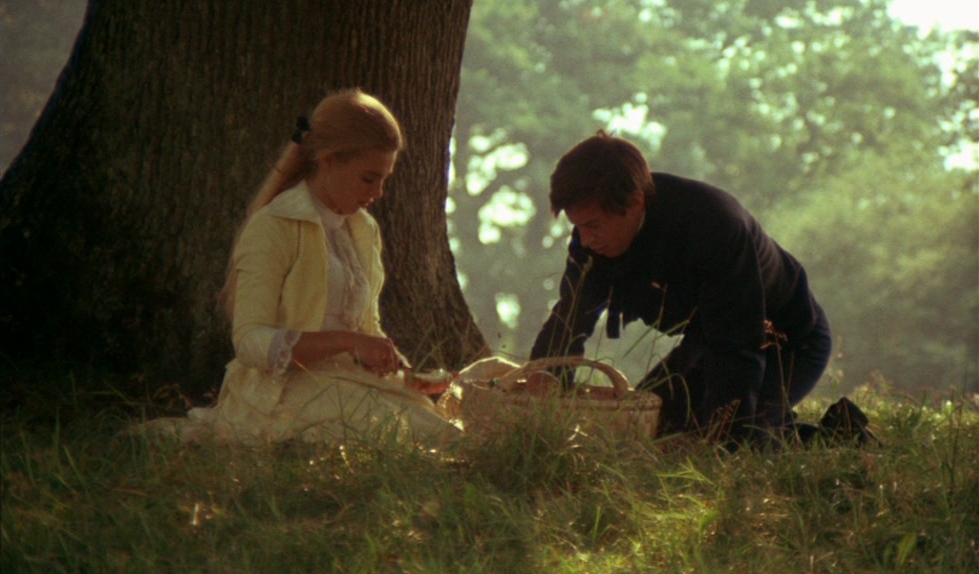 Widerberg’s Elvira Madigan has two picnics. The first is a lover’s idyll; the second is sad and deadly. When Elvira Madigan, aka Hedvig Jensen, a circus performer, and Count Sixten Sparre, a married cavalry officer, eloped, their life together was a picnic. Their...
Widerberg’s Elvira Madigan has two picnics. The first is a lover’s idyll; the second is sad and deadly. When Elvira Madigan, aka Hedvig Jensen, a circus performer, and Count Sixten Sparre, a married cavalry officer, eloped, their life together was a picnic. Their...
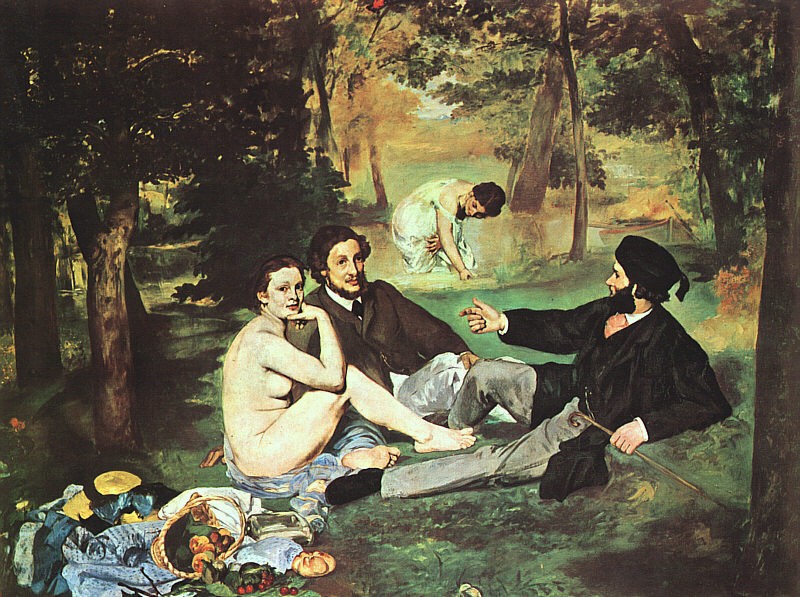 Manet’s Le déjeuner sur l’herbe is a French euphemism for picnic in English. Pique-nique was not used for an alfresco luncheon but for dinner indoors, repas de pique-nique. When it was exhibited in 1863 at the Salon des Refusés, the painting was titled Le...
Manet’s Le déjeuner sur l’herbe is a French euphemism for picnic in English. Pique-nique was not used for an alfresco luncheon but for dinner indoors, repas de pique-nique. When it was exhibited in 1863 at the Salon des Refusés, the painting was titled Le...
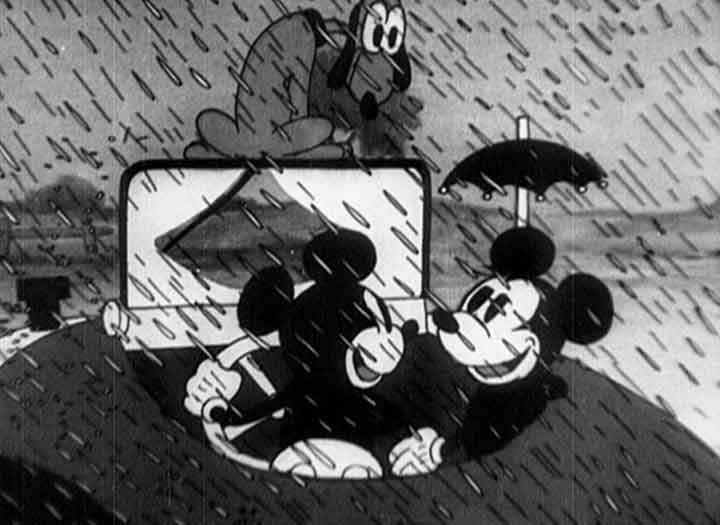 Disney’s seven-minute cartoon The Picnic packs as many picnic conventions as possible: a motorcar drive to the country, a stream, shady tree, a wicker basket, a gingham cloth jammed with a gourmand feast of sandwiches, Swiss cheese, mustard, pickles, olives, honey,...
Disney’s seven-minute cartoon The Picnic packs as many picnic conventions as possible: a motorcar drive to the country, a stream, shady tree, a wicker basket, a gingham cloth jammed with a gourmand feast of sandwiches, Swiss cheese, mustard, pickles, olives, honey,...
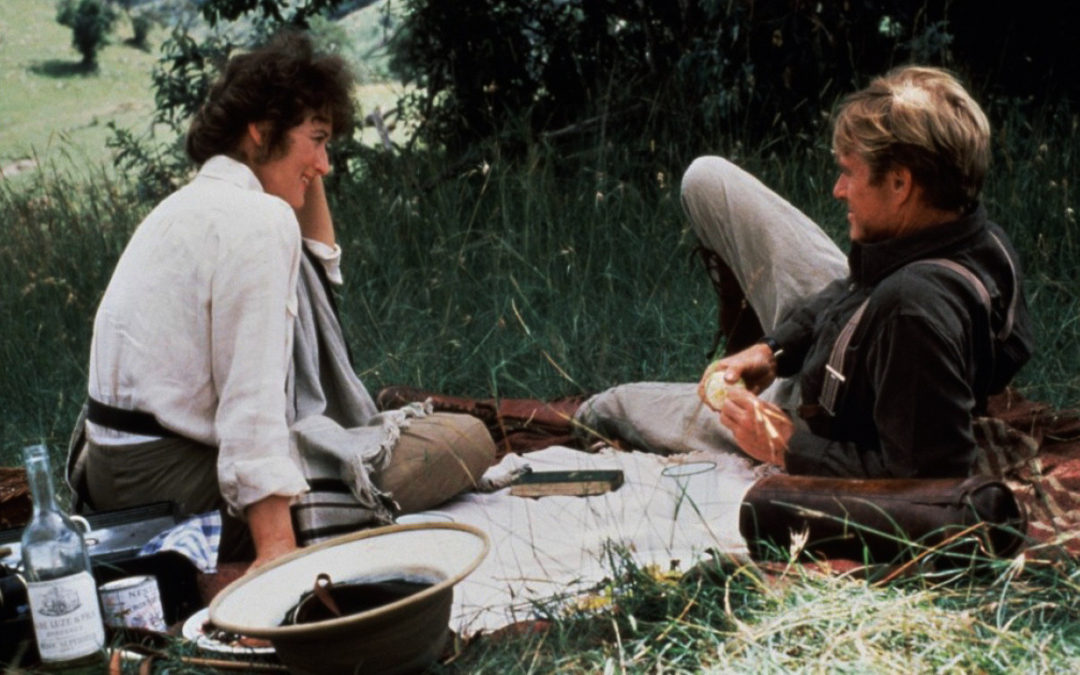 Blixen’s Out of Africa is a memoir without picnics. But Pollack and his screenwriter Kurt Luedke have added two picnic episodes that reveal Blixen’s characteristic vanity and romantic nature. Neither is a particularly happy picnic. The first picnic is in...
Blixen’s Out of Africa is a memoir without picnics. But Pollack and his screenwriter Kurt Luedke have added two picnic episodes that reveal Blixen’s characteristic vanity and romantic nature. Neither is a particularly happy picnic. The first picnic is in...
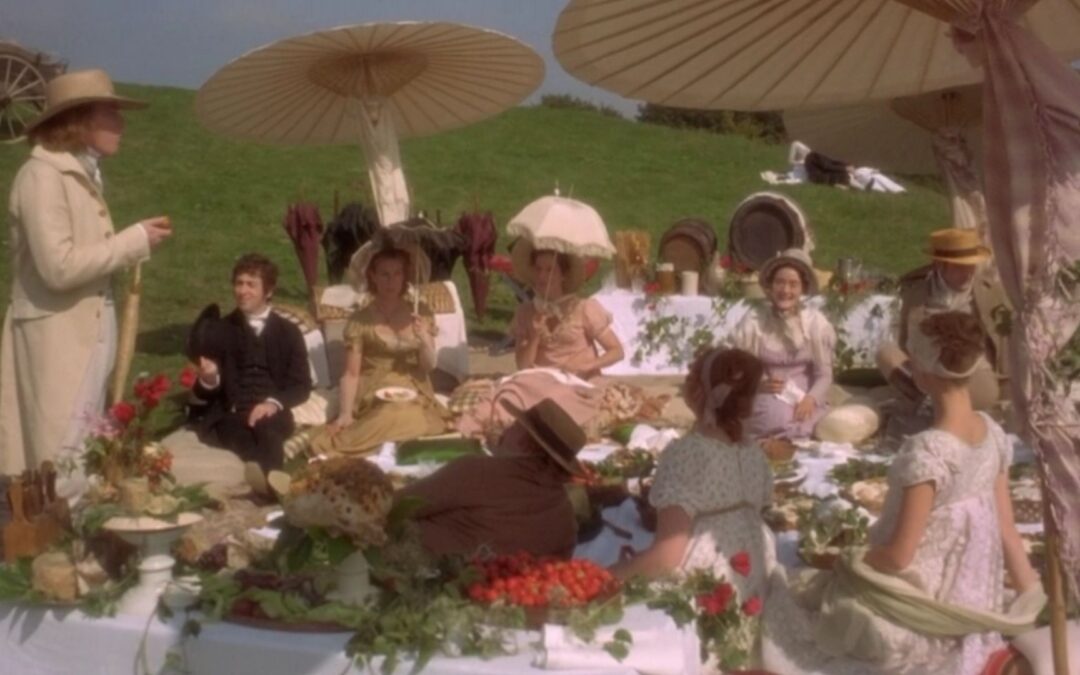 By the last count, seven directors have filmed Austen’s Emma. None of them are definitive or even alike. A list is provided as a separate entry. McGrath’s Emma is lively, and his picnic episode at Donwell Abbey and Box Hill is reasonably close to...
By the last count, seven directors have filmed Austen’s Emma. None of them are definitive or even alike. A list is provided as a separate entry. McGrath’s Emma is lively, and his picnic episode at Donwell Abbey and Box Hill is reasonably close to...
 The picnic in Gondry’s Mood Indigo [L’Écume des jours] is his invention, a goofy addition to Boris Vian’s surrealistic novel L’Écume des jours. * It’s the love story of Colin, who is manic and unpredictable, and Chloe, who is stable until she meets...
The picnic in Gondry’s Mood Indigo [L’Écume des jours] is his invention, a goofy addition to Boris Vian’s surrealistic novel L’Écume des jours. * It’s the love story of Colin, who is manic and unpredictable, and Chloe, who is stable until she meets...
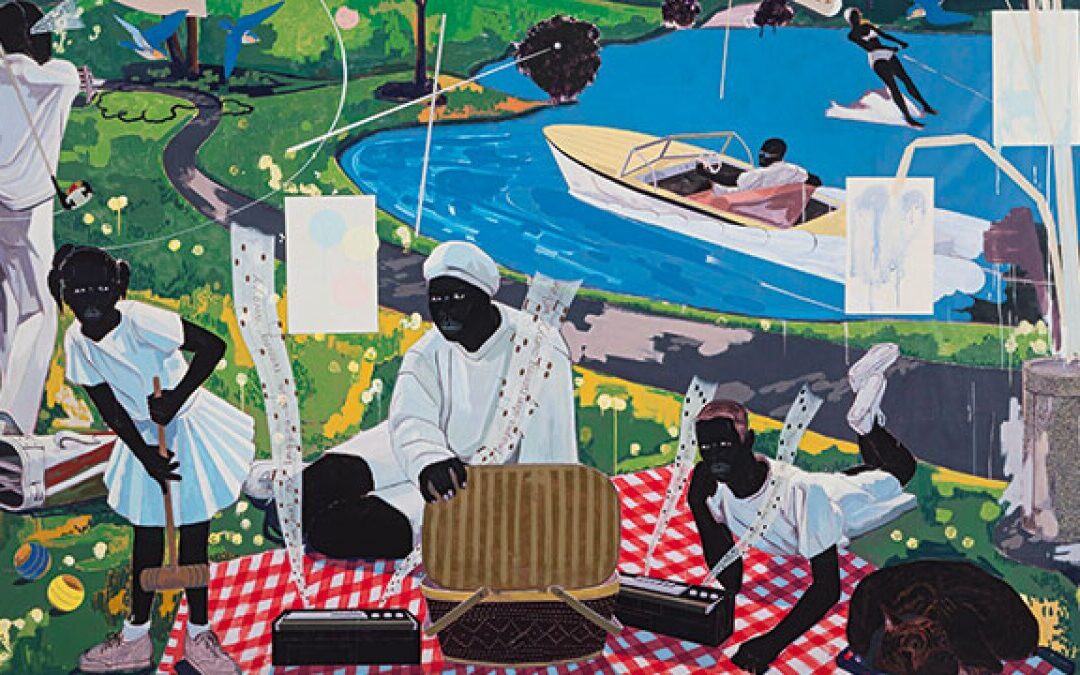 Marshall’s title of Past Times is ambiguous. Usually, leisure activities are “pastimes,” but as two words “past times” suggests his memories of picnics or, more generally, the pleasantries of leisure. His ambiguity is intentional, especially because this is a picnic...
Marshall’s title of Past Times is ambiguous. Usually, leisure activities are “pastimes,” but as two words “past times” suggests his memories of picnics or, more generally, the pleasantries of leisure. His ambiguity is intentional, especially because this is a picnic...
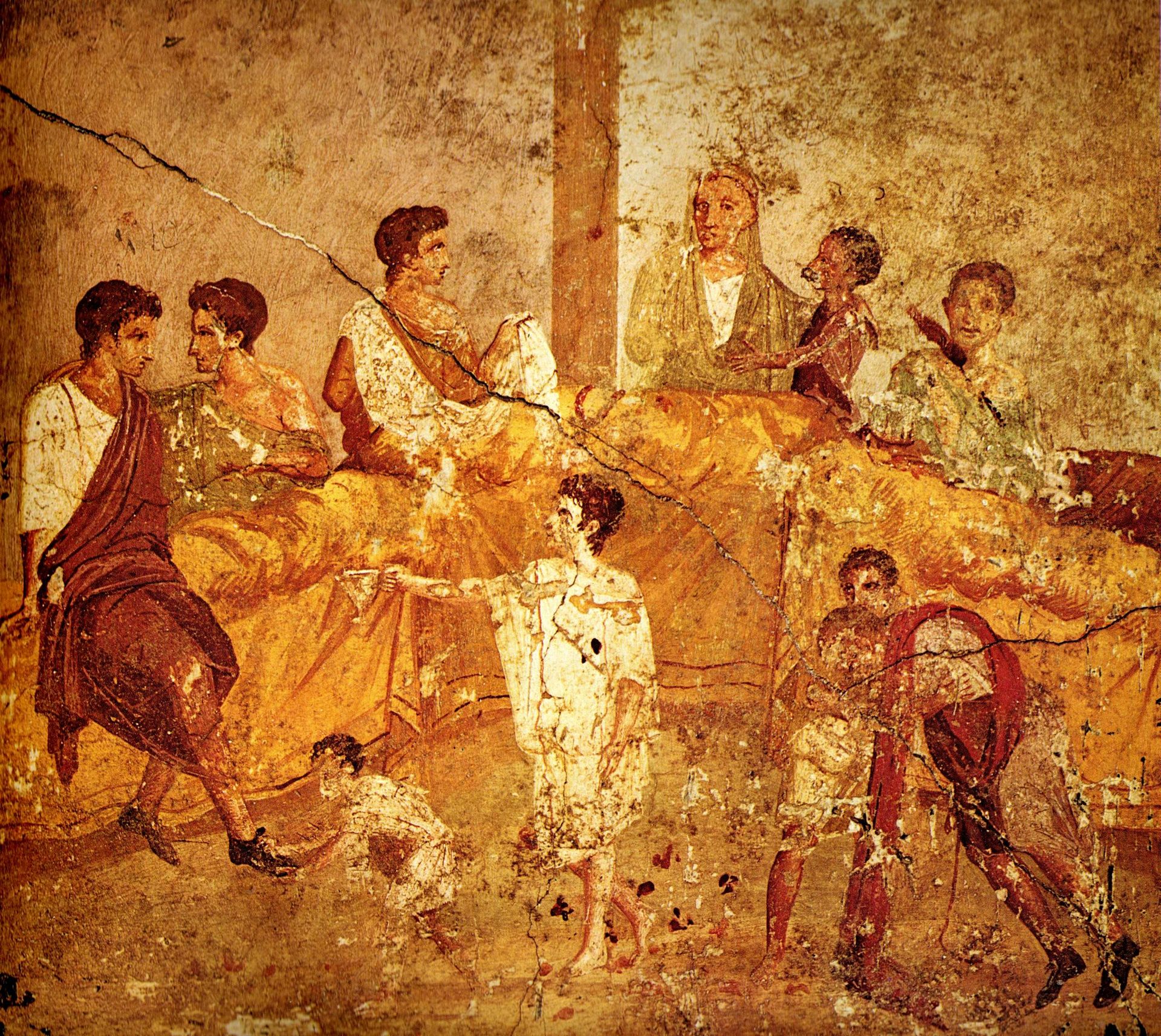 Horace delights in a rustic country dinner resembling eranos, the Greek custom of dining where each guest contributes something. A guest might contribute money, food, drink, or entertainment. Horace’s adaptation of this custom required that his guest provide...
Horace delights in a rustic country dinner resembling eranos, the Greek custom of dining where each guest contributes something. A guest might contribute money, food, drink, or entertainment. Horace’s adaptation of this custom required that his guest provide...
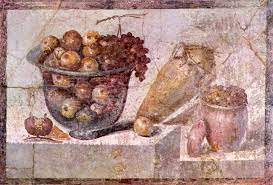 Seneca says that eating ripe figs at a picnic brings “me a New Year feast every day, and I make the New Year happy and prosperous by good thoughts and greatness of soul.” Figs—only figs—that he claims is a substitute for bread. It is among the oddest main dishes for a...
Seneca says that eating ripe figs at a picnic brings “me a New Year feast every day, and I make the New Year happy and prosperous by good thoughts and greatness of soul.” Figs—only figs—that he claims is a substitute for bread. It is among the oddest main dishes for a...
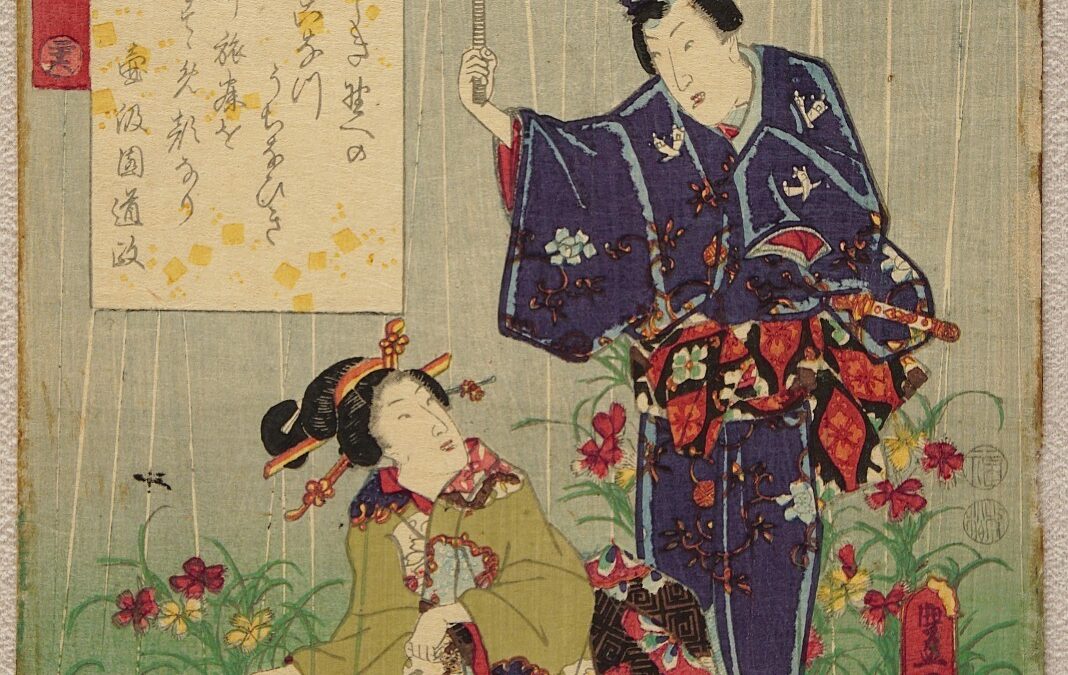 to relax at a palace fishing pavilion with close friends. Arthur Whaley translates the outing as a picnic, though Lady Murasaki has no such vocabulary word. The chapter is “Wild Carnations” or Tokonatsu One very hot day Genji, finding the air at the New...
to relax at a palace fishing pavilion with close friends. Arthur Whaley translates the outing as a picnic, though Lady Murasaki has no such vocabulary word. The chapter is “Wild Carnations” or Tokonatsu One very hot day Genji, finding the air at the New...
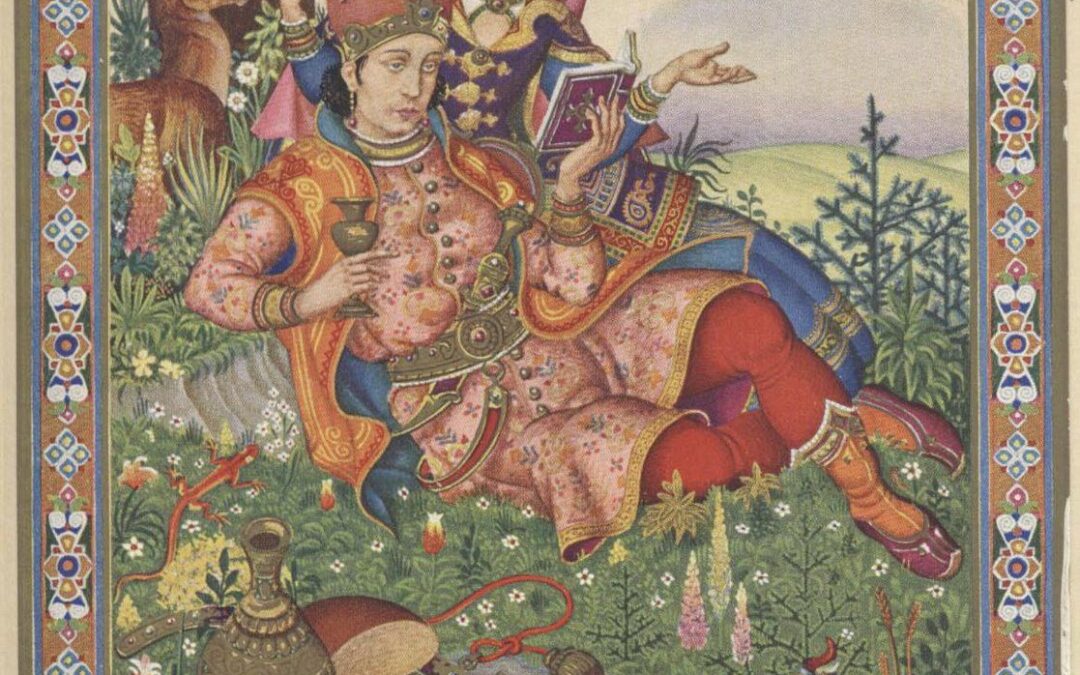 Omar Khayyam is better known for his love poems than his philosophy. His vision of lovers picnicking is in Rubáiyát “XI” in the collection of his poetry titled The Rubáiyát of Omar Khayyám, most often read in Edward Fitzgerald translation: A Book of Verses...
Omar Khayyam is better known for his love poems than his philosophy. His vision of lovers picnicking is in Rubáiyát “XI” in the collection of his poetry titled The Rubáiyát of Omar Khayyám, most often read in Edward Fitzgerald translation: A Book of Verses...
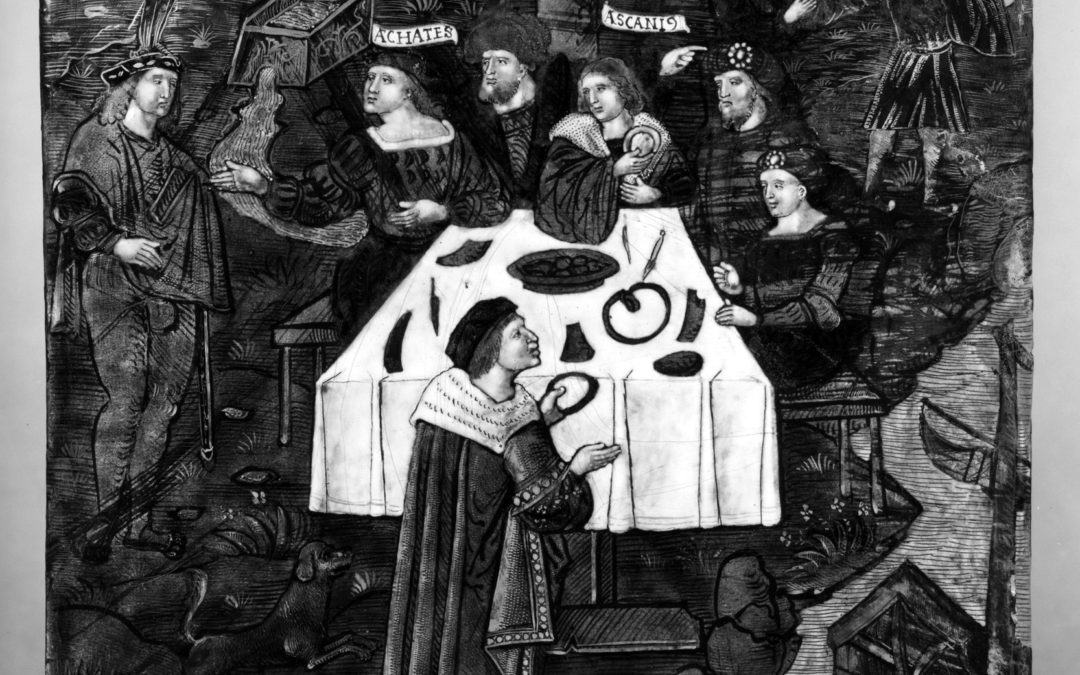 A prophecy held that Aeneas and companions would know where to build the new Troy when being desperately hungry, they ate their plates—trenchers made of thick slices of stale bread. This revelation occurs at their first meal in Latium. Virgil’s details,...
A prophecy held that Aeneas and companions would know where to build the new Troy when being desperately hungry, they ate their plates—trenchers made of thick slices of stale bread. This revelation occurs at their first meal in Latium. Virgil’s details,...
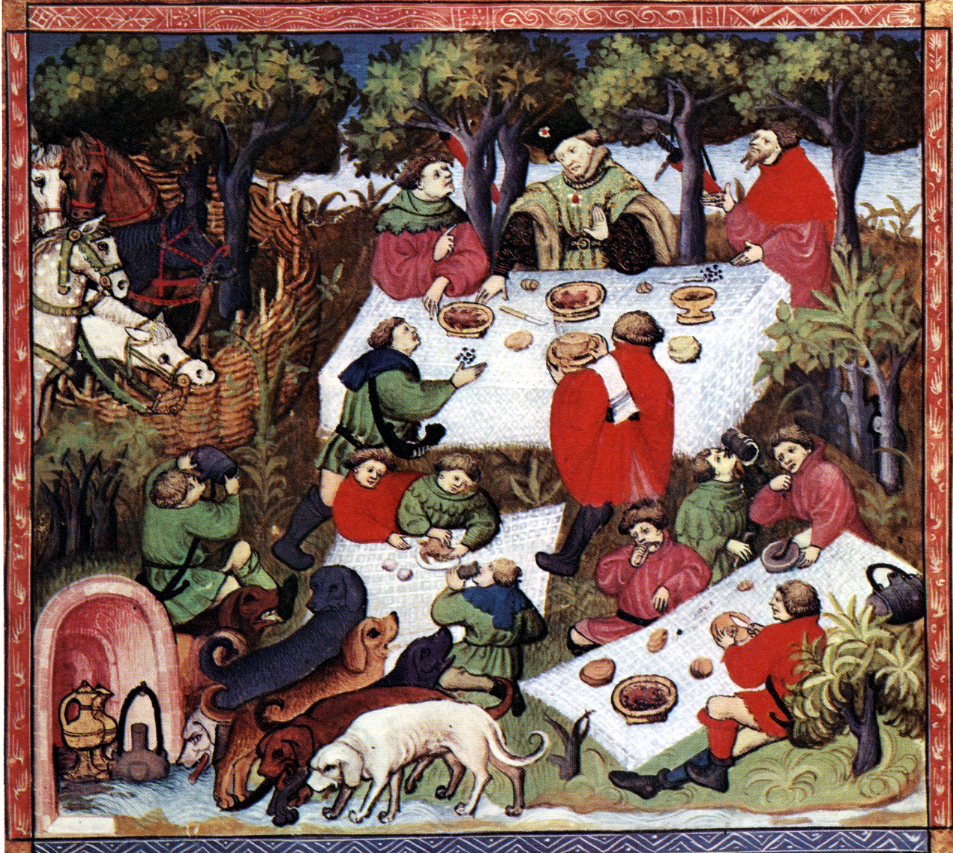 Gaston III’s The Book of Hunt formalized the hunter’s assemblée as the model for a meal during a hunt. It is not a picnic. Gaston did not intend this gathering as a luncheon but as an early morning meeting during which the day’s hunt was discussed...
Gaston III’s The Book of Hunt formalized the hunter’s assemblée as the model for a meal during a hunt. It is not a picnic. Gaston did not intend this gathering as a luncheon but as an early morning meeting during which the day’s hunt was discussed...
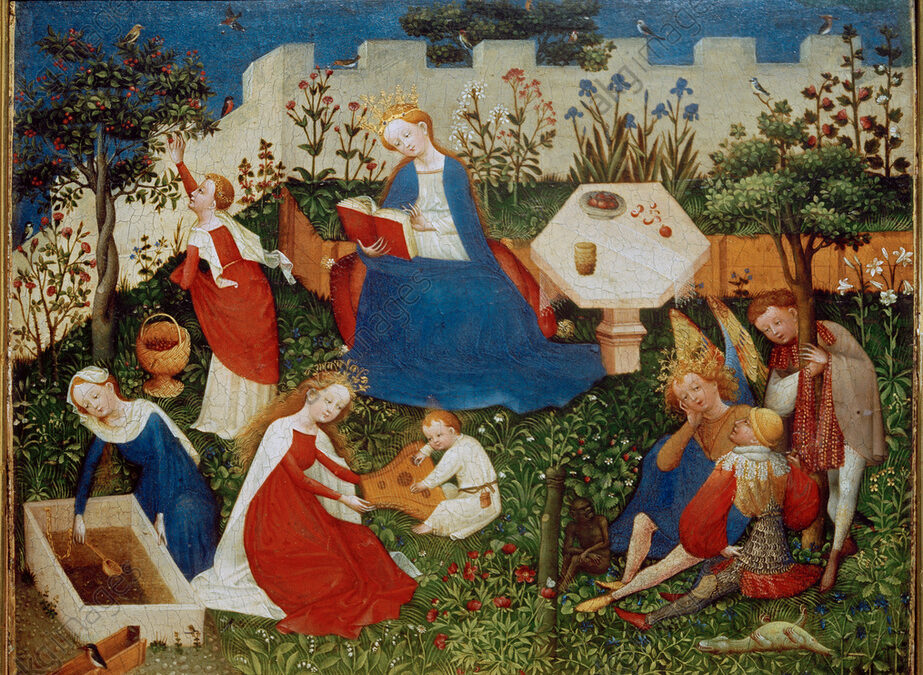 The Garden of Paradise recasts in a contemporary Hortus Conclusus as an allegory of life before the Fall. Tucked into a protected garden, free from original sin, homage the Virgin Mary and the baby Jesus are at ease. The secluded garden offers serenity in a busy...
The Garden of Paradise recasts in a contemporary Hortus Conclusus as an allegory of life before the Fall. Tucked into a protected garden, free from original sin, homage the Virgin Mary and the baby Jesus are at ease. The secluded garden offers serenity in a busy...
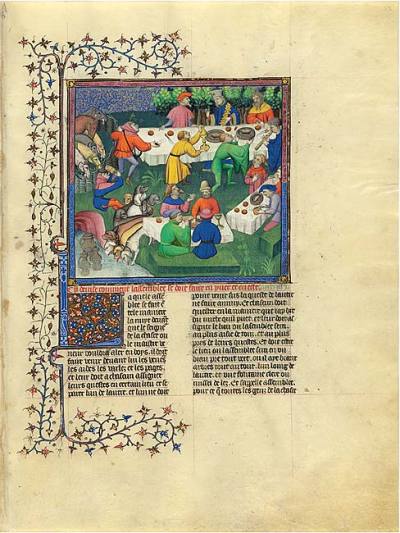 When Edward Langley, 2nd Duke of York, translated Gaston’s Le livre de chasse (1389) into English, French was still the language of the Court and elsewhere. He renamed it The Master of Game.* Like Chaucer, Edward’s translation decided to write in English...
When Edward Langley, 2nd Duke of York, translated Gaston’s Le livre de chasse (1389) into English, French was still the language of the Court and elsewhere. He renamed it The Master of Game.* Like Chaucer, Edward’s translation decided to write in English...
 In The Lives of the Painters, Vasari offers Piero as a preternaturally gloomy man. “As he discoursed,” Vasari says, “he would twist everything to the strangest meanings ever heard.” Why else would an artist paint a wedding picnic dinner ending...
In The Lives of the Painters, Vasari offers Piero as a preternaturally gloomy man. “As he discoursed,” Vasari says, “he would twist everything to the strangest meanings ever heard.” Why else would an artist paint a wedding picnic dinner ending...
 When Alfonso d’Este, the Duke of Ferrara, and his wife Lucrezia Borgia, asked for a painting expressing worldly delights, drinking, and sensuality, Giovanni Bellini could not refuse the offer though he was eighty-five and in failing health. The Feast of the Gods...
When Alfonso d’Este, the Duke of Ferrara, and his wife Lucrezia Borgia, asked for a painting expressing worldly delights, drinking, and sensuality, Giovanni Bellini could not refuse the offer though he was eighty-five and in failing health. The Feast of the Gods...
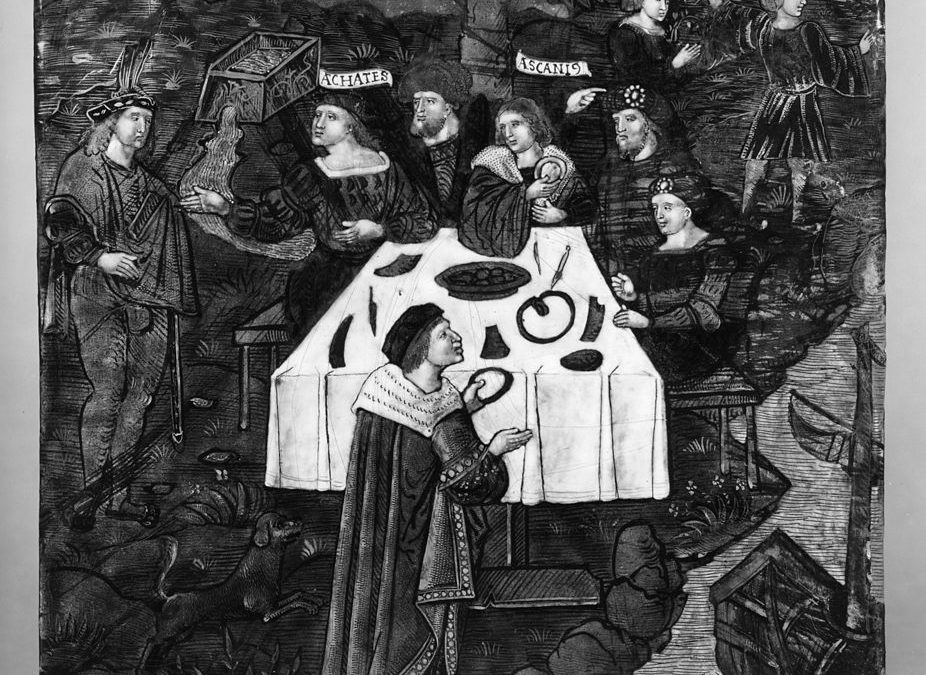 Brant illustrates Aeneas and his crew a regular luncheon meal set at a table. Aeneas sits in a chair (left), listening to his son Ascanius say, “See, we devour the plates which we fed.” See Sebastian Brant. Works of Virgil [Publius Vergilius Maronis...
Brant illustrates Aeneas and his crew a regular luncheon meal set at a table. Aeneas sits in a chair (left), listening to his son Ascanius say, “See, we devour the plates which we fed.” See Sebastian Brant. Works of Virgil [Publius Vergilius Maronis...
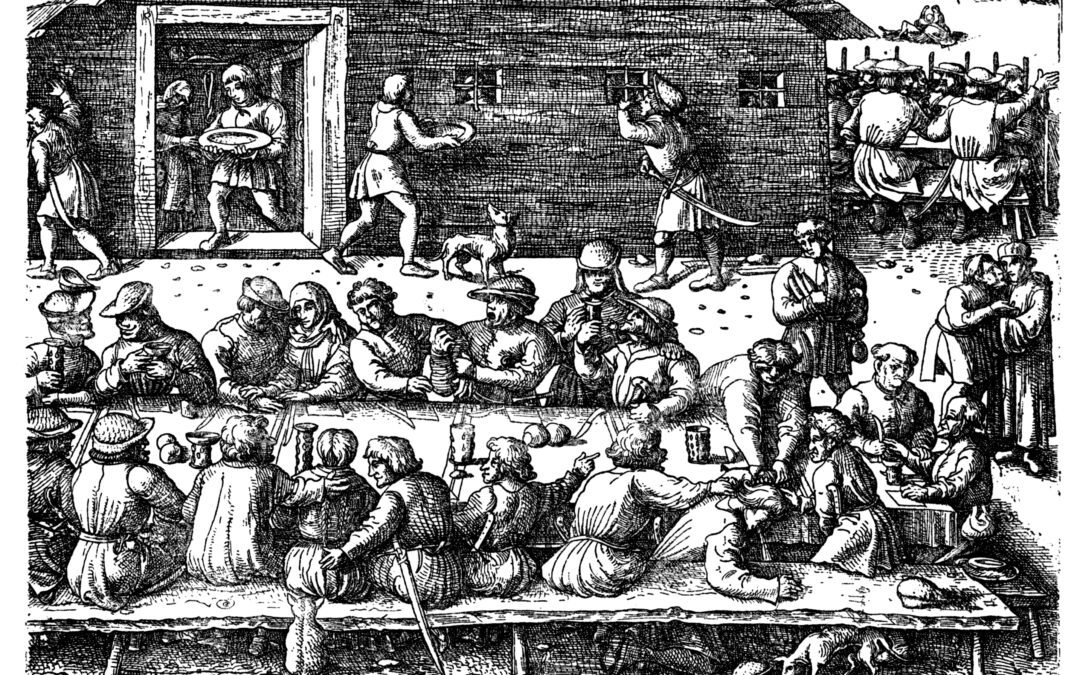 Hopfer’s Peasants at Table at a Rustic Festival [or Tafelnde Bauern beim dorflichen Fest or Peasants at Table at a Rustic Festival, also called a kermesse, may celebrate a patron saint, though in this instance, it seems secular, most likely, a celebration of spring....
Hopfer’s Peasants at Table at a Rustic Festival [or Tafelnde Bauern beim dorflichen Fest or Peasants at Table at a Rustic Festival, also called a kermesse, may celebrate a patron saint, though in this instance, it seems secular, most likely, a celebration of spring....
 Veronese’s Moses Rescued from the Water is a fête champêtre, and Pharaoh’s daughter enjoys alfresco entertainment. Surrounded by courtiers and ladies waiting, Pharaoh’s daughter’s pleasantries are interrupted when Miriam presents her with the infant Moses. The scene...
Veronese’s Moses Rescued from the Water is a fête champêtre, and Pharaoh’s daughter enjoys alfresco entertainment. Surrounded by courtiers and ladies waiting, Pharaoh’s daughter’s pleasantries are interrupted when Miriam presents her with the infant Moses. The scene...
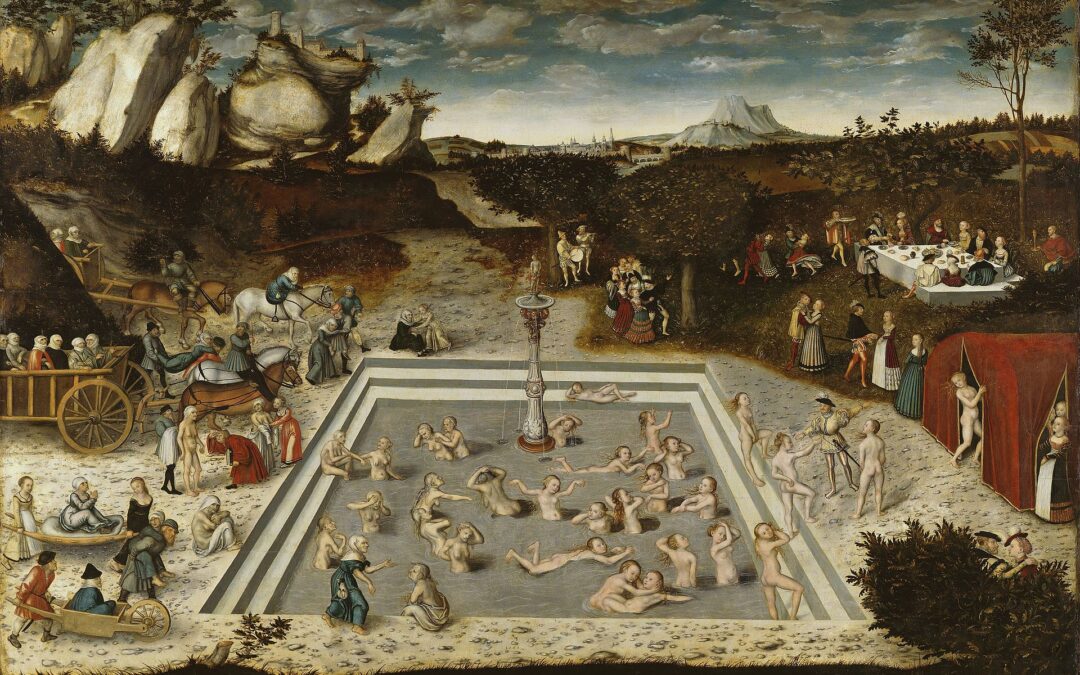 Cranach’s paintings often conflate the spiritual and erotic, particularly The Fountain of Youth and The Golden Age, both completed in 1546. The subjects seem pagan, but his friendship with Martin Luther deeply influenced Cranach. The Fountain of Youth...
Cranach’s paintings often conflate the spiritual and erotic, particularly The Fountain of Youth and The Golden Age, both completed in 1546. The subjects seem pagan, but his friendship with Martin Luther deeply influenced Cranach. The Fountain of Youth...
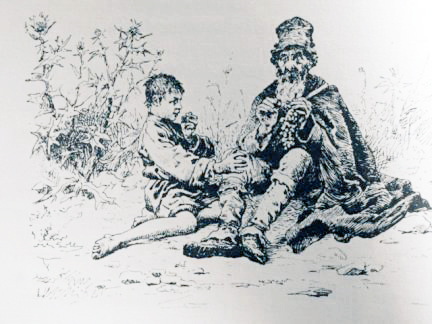 Merienda first appears in the anonymous picaresque novel The Life of Lazarillo de Tormes in 1554, * ninety-five years before the French word pique-nique in 1649. It is used to denote a snack. But when Francesco de Quevedo uses merienda in El Buscon (The Swindler), it...
Merienda first appears in the anonymous picaresque novel The Life of Lazarillo de Tormes in 1554, * ninety-five years before the French word pique-nique in 1649. It is used to denote a snack. But when Francesco de Quevedo uses merienda in El Buscon (The Swindler), it...
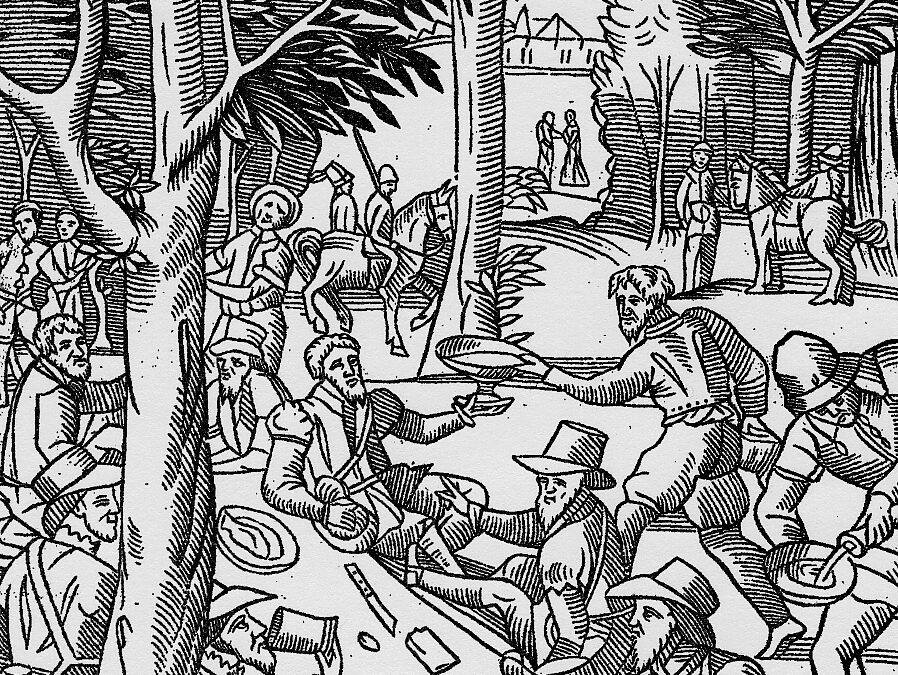 Fouilloux’s La Venerie, aka Hunting, differs from Gaston’s 1389 description (See Le livre de chasse). Accordingly, the assemblée is replaced with un repas chasse, a hunters’ lunch attended only by men. However, when George Gascoigne adapted La...
Fouilloux’s La Venerie, aka Hunting, differs from Gaston’s 1389 description (See Le livre de chasse). Accordingly, the assemblée is replaced with un repas chasse, a hunters’ lunch attended only by men. However, when George Gascoigne adapted La...
 Bruegel the Elder’s The Land of Cockaigne, aka Het Luilekkerland, makes you think it’s a picnic. Not. It’s a satirical look at Cockaigne, a mythical place where it’s always spring and never winter, in which life is all play and no work,...
Bruegel the Elder’s The Land of Cockaigne, aka Het Luilekkerland, makes you think it’s a picnic. Not. It’s a satirical look at Cockaigne, a mythical place where it’s always spring and never winter, in which life is all play and no work,...
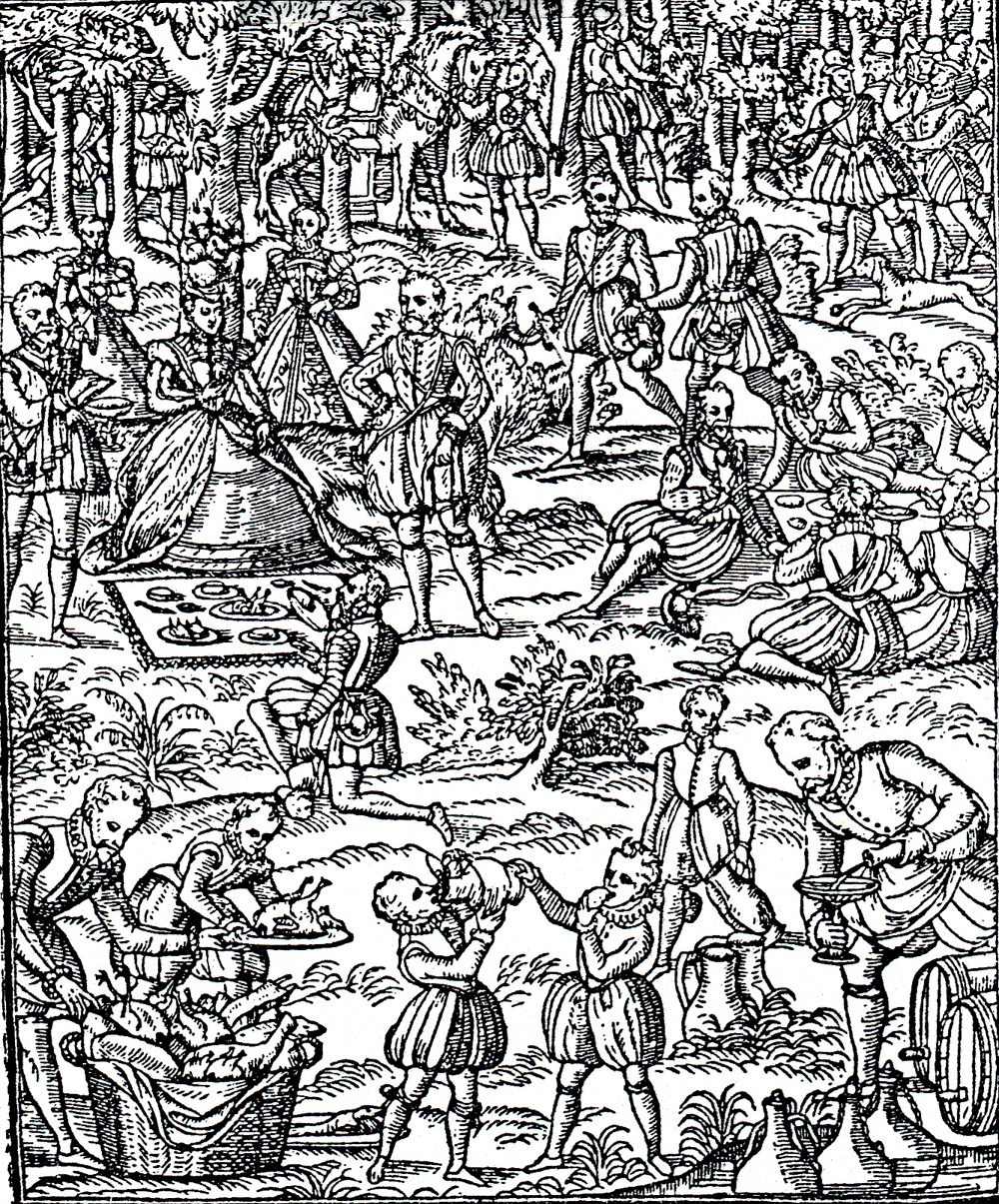 Gascoigne adapted Gaston Phébus’s The Book of the Hunt (1380) and Jacques du Fouilloux’s in La Venerie (1560) into English, retitling the work The Noble Arte of Venerie or Hunting (1575). (The book is dedicated to Lord Clinton, Elizabeth’s master of...
Gascoigne adapted Gaston Phébus’s The Book of the Hunt (1380) and Jacques du Fouilloux’s in La Venerie (1560) into English, retitling the work The Noble Arte of Venerie or Hunting (1575). (The book is dedicated to Lord Clinton, Elizabeth’s master of...
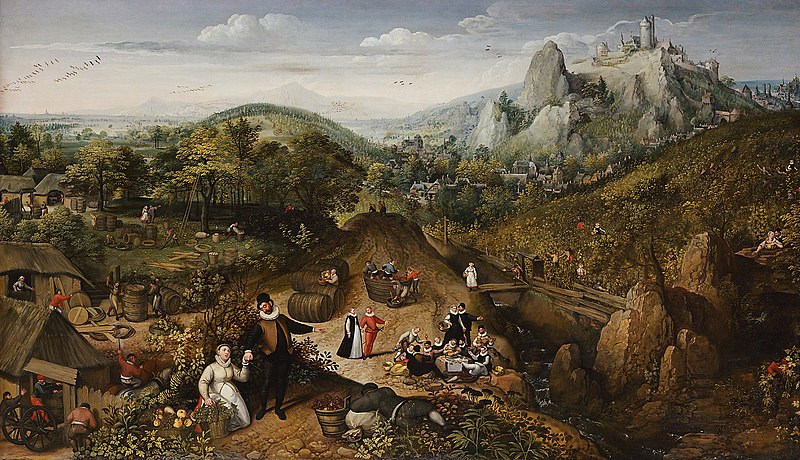 Valckenborch must have loved dining, food, and wine. His paintings are filled with depictions of meats, fish, and fruits, so he might be called a painter of feasting. His calendar paintings, such as the one celebrating October’s bountiful grape harvest, include an...
Valckenborch must have loved dining, food, and wine. His paintings are filled with depictions of meats, fish, and fruits, so he might be called a painter of feasting. His calendar paintings, such as the one celebrating October’s bountiful grape harvest, include an...
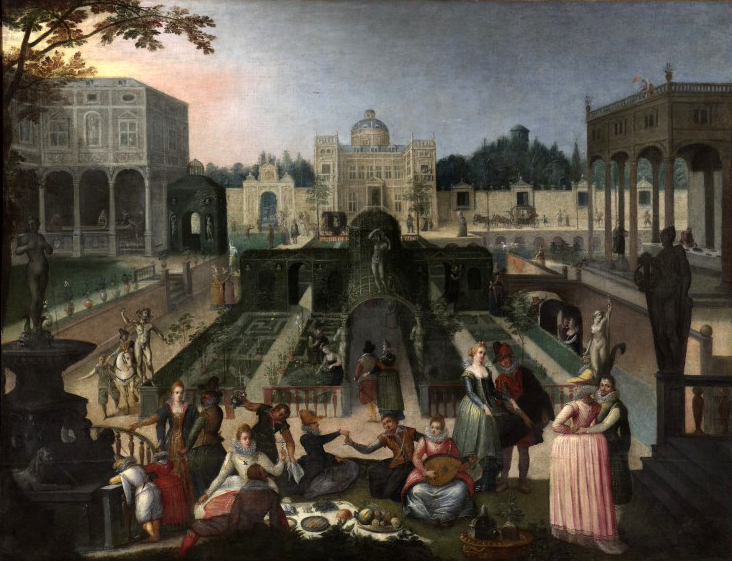 Feast In The Park Of The Duke Of Mantua or Fête dans le Jardin du Duc de Mantoue is picnicky but not a feast. The curators of the Musée des Beaux-Arts probably assign the title. It is a garden of lovers dining alfresco in an imaginary architectural setting. The...
Feast In The Park Of The Duke Of Mantua or Fête dans le Jardin du Duc de Mantoue is picnicky but not a feast. The curators of the Musée des Beaux-Arts probably assign the title. It is a garden of lovers dining alfresco in an imaginary architectural setting. The...
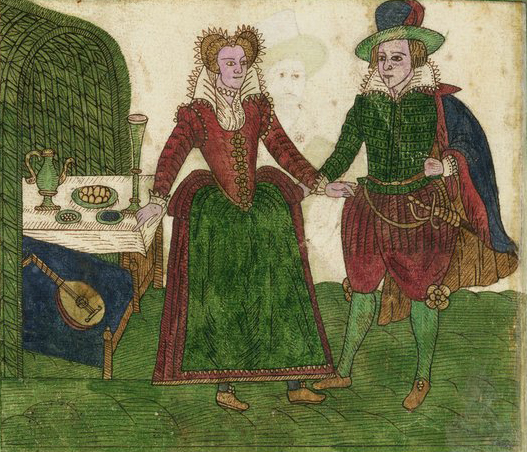 Trevelyon’s Miscellany is a meticulously illustrated compendium of 1608. It’s stocked with a calendar, scenes from the Bible, current events, court, political figures, costumes, fabric designs, games, dances, etc. It’s among the marvels of bookcraft...
Trevelyon’s Miscellany is a meticulously illustrated compendium of 1608. It’s stocked with a calendar, scenes from the Bible, current events, court, political figures, costumes, fabric designs, games, dances, etc. It’s among the marvels of bookcraft...
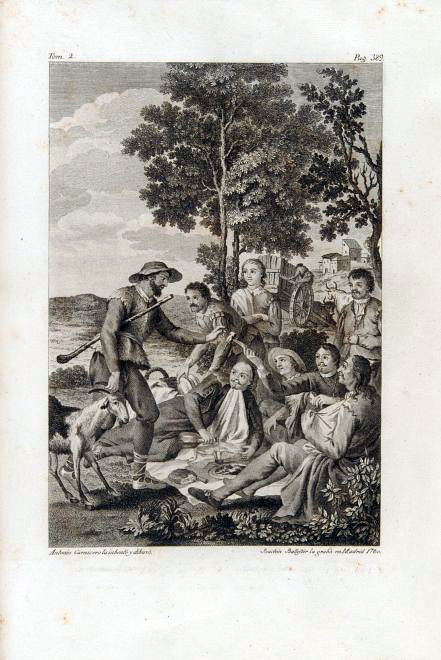 Cervantes’s merienda looks like a picnic on the grass. It occurs while, Don Quixote and Sancho engage in a spirited discussion of the uses of enchantment and the power of imagination with the Canon, the curate, and the barber. They sit on the grass waiting for...
Cervantes’s merienda looks like a picnic on the grass. It occurs while, Don Quixote and Sancho engage in a spirited discussion of the uses of enchantment and the power of imagination with the Canon, the curate, and the barber. They sit on the grass waiting for...
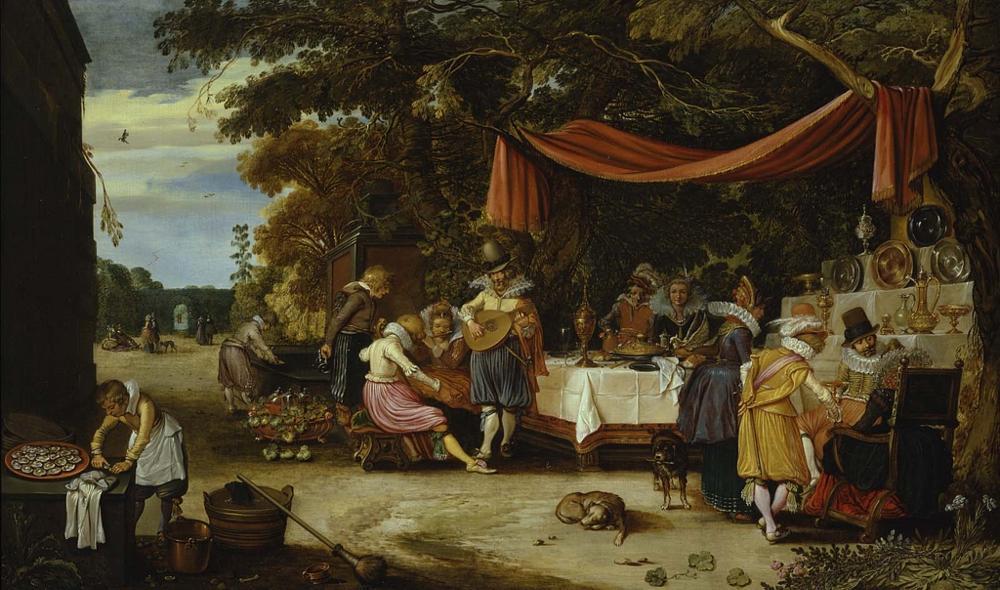 Van de Velde’s reputation is now based on his naturalistic landscape. But he was in demand among the affluent Amsterdam community, for whom he painted many scenes of their parties, especially garden parties, of which An Elegant Company in a Garden is an exemplar. The...
Van de Velde’s reputation is now based on his naturalistic landscape. But he was in demand among the affluent Amsterdam community, for whom he painted many scenes of their parties, especially garden parties, of which An Elegant Company in a Garden is an exemplar. The...
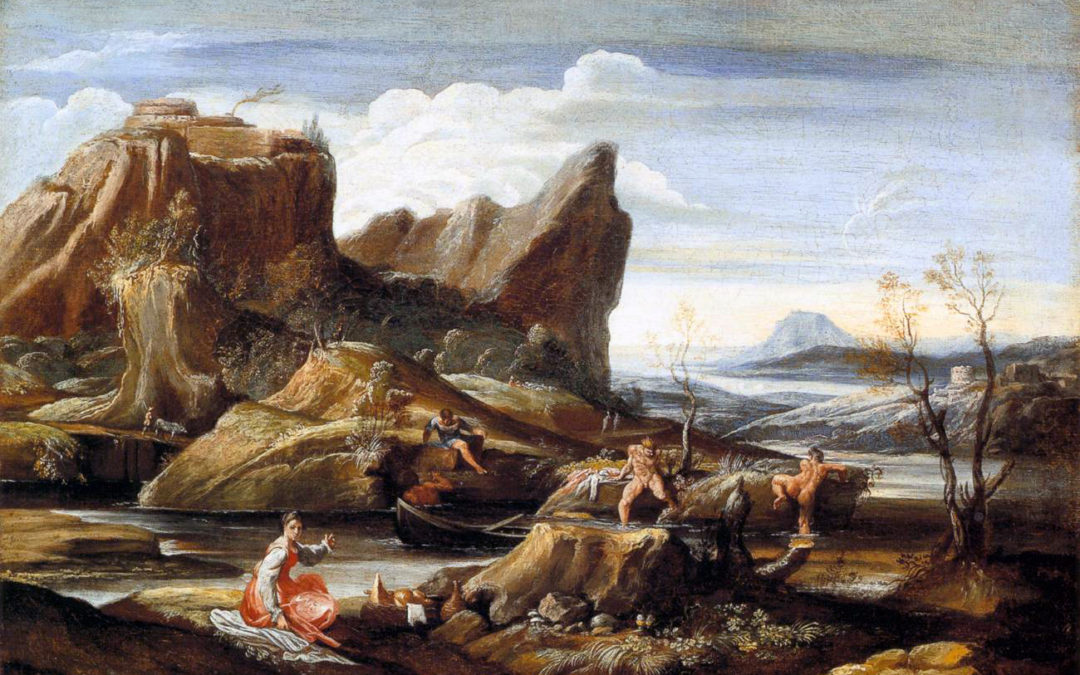 Though it is unmistakably a merienda at the beach, the title given for this painting in the Pitti Palace is Landscape with Bathers. The seashore is a tumultuous blend of barren, jutting rocks. But Carracci, the focus of which is a serene woman dressed in red sitting...
Though it is unmistakably a merienda at the beach, the title given for this painting in the Pitti Palace is Landscape with Bathers. The seashore is a tumultuous blend of barren, jutting rocks. But Carracci, the focus of which is a serene woman dressed in red sitting...
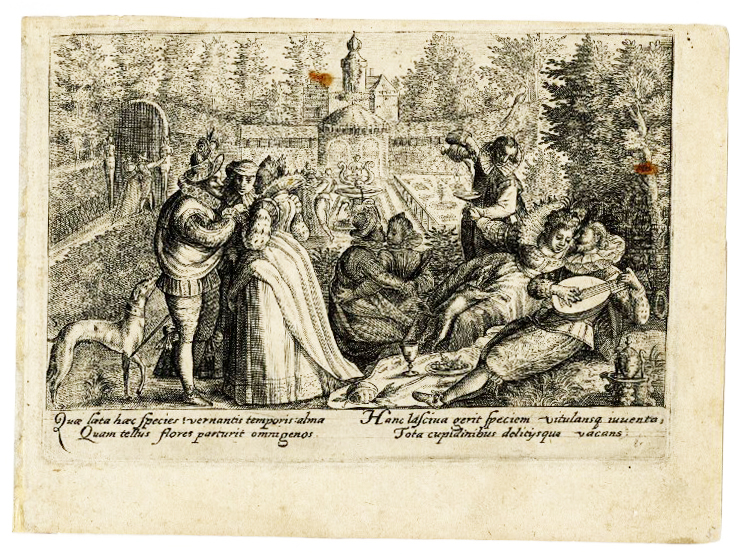 Early in the 16th century, Dutch emblem books primers or handbooks for youthful aristocrats. Among the more socially and sexually suggestive of these books are The Garden of Love [Hortus Voluptatum] (1599) and New Mirror for Youth [Nieuwen ieucht spieghel] (1617),...
Early in the 16th century, Dutch emblem books primers or handbooks for youthful aristocrats. Among the more socially and sexually suggestive of these books are The Garden of Love [Hortus Voluptatum] (1599) and New Mirror for Youth [Nieuwen ieucht spieghel] (1617),...
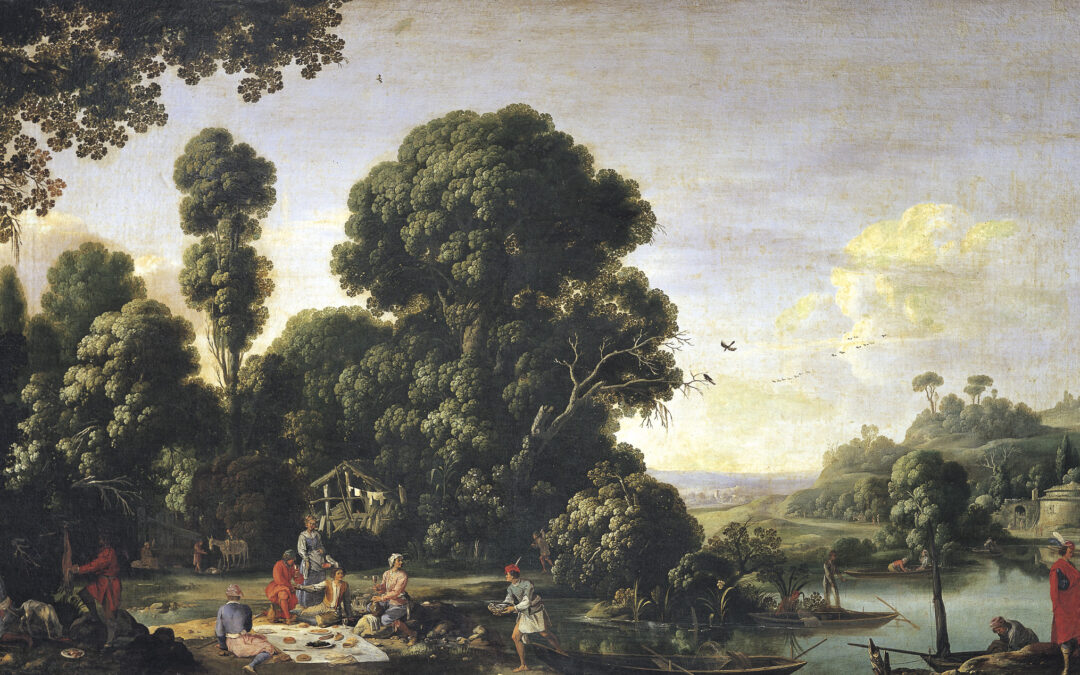 Napoletano’s Merenda sull’erba is a landscape with Florentines enjoying an informal outdoor lunch by a lake. Merenda is Italian for picnic, which was not coined until 1649 in Paris. The picnickers have spread their cloth in the shade. To the left, a cook works at a...
Napoletano’s Merenda sull’erba is a landscape with Florentines enjoying an informal outdoor lunch by a lake. Merenda is Italian for picnic, which was not coined until 1649 in Paris. The picnickers have spread their cloth in the shade. To the left, a cook works at a...
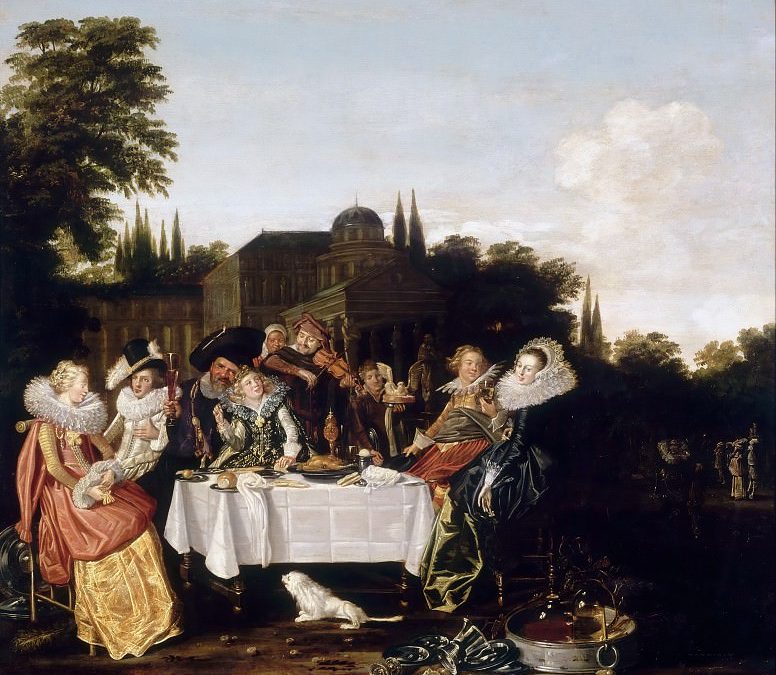 Hals’s Banquet in the Country is a portrait of an aristocratic or merchant family dining alfresco in the garden of their estate. It’s meant to display social importance, status, and wealth. This picnicking subject was one of many Hals painted. See Dirck Hals. Banquet...
Hals’s Banquet in the Country is a portrait of an aristocratic or merchant family dining alfresco in the garden of their estate. It’s meant to display social importance, status, and wealth. This picnicking subject was one of many Hals painted. See Dirck Hals. Banquet...
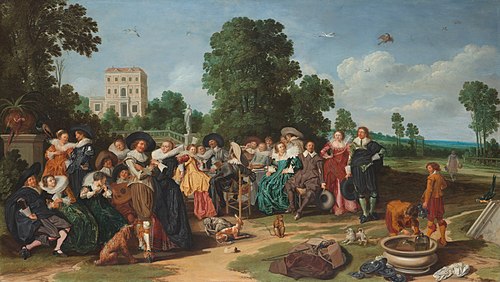 Hals’s De_buitenpartij (627) is of family and friends dining outside in the garden of their estate. It was meant to show off. Featured Image: Dirck Hals. Debuiten partij or The Fête Champetre (1627). There are two other versions of this group. Rijksmuseum, Amsterdam...
Hals’s De_buitenpartij (627) is of family and friends dining outside in the garden of their estate. It was meant to show off. Featured Image: Dirck Hals. Debuiten partij or The Fête Champetre (1627). There are two other versions of this group. Rijksmuseum, Amsterdam...
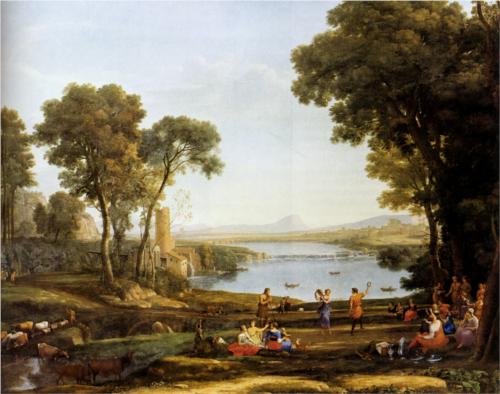 Claude should have named his painting scampagnata (holiday in the country), merenda sull’erba, or lolazione sull’erba (picnic on the grass). But Claude enhanced Landscape with the Marriage of Isaac and Rebecca with a biblical allusion to Genesis, 24, the...
Claude should have named his painting scampagnata (holiday in the country), merenda sull’erba, or lolazione sull’erba (picnic on the grass). But Claude enhanced Landscape with the Marriage of Isaac and Rebecca with a biblical allusion to Genesis, 24, the...
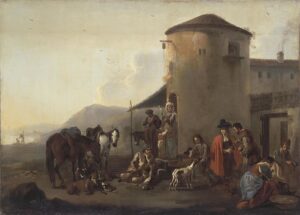 Miel’s halt on the hunt and repas de chasse depicts hunters stopped by a rustic inn. In the Prado’s La Merienda, hunters have spread a cloth beside their horses and are settling in to relax. This is a perfunctory meal of sliced ham, cheese, bread, and wine. Unlike...
Miel’s halt on the hunt and repas de chasse depicts hunters stopped by a rustic inn. In the Prado’s La Merienda, hunters have spread a cloth beside their horses and are settling in to relax. This is a perfunctory meal of sliced ham, cheese, bread, and wine. Unlike...
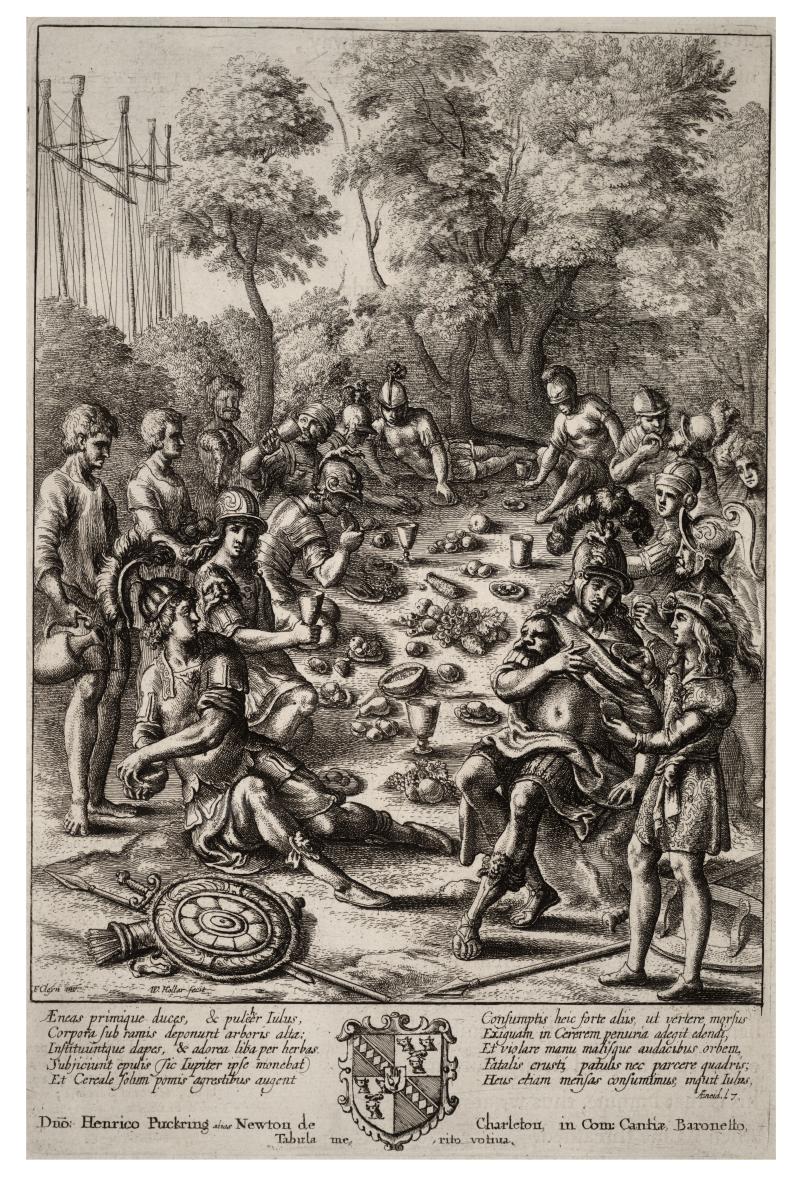 Hollar illustrates the key moment in Virgil’s Aeneid (19 CE) when Aeneas realized that he had reached the land where he would build a new city where Trojans would prosper. The chosen moment is when Aeneas and his crew bivouac in a forest clearing in Latium and...
Hollar illustrates the key moment in Virgil’s Aeneid (19 CE) when Aeneas realized that he had reached the land where he would build a new city where Trojans would prosper. The chosen moment is when Aeneas and his crew bivouac in a forest clearing in Latium and...
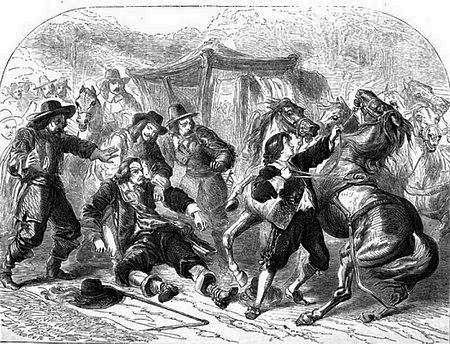 Cromwell, the Lord Protector of England, “picnicked” in Hyde Park in 1654. According to Cromwell’s secretary of state Edmund Ludlow, “His highness, only accompanied with secretary Thurloe and some few of his gentlemen and servants, went to take...
Cromwell, the Lord Protector of England, “picnicked” in Hyde Park in 1654. According to Cromwell’s secretary of state Edmund Ludlow, “His highness, only accompanied with secretary Thurloe and some few of his gentlemen and servants, went to take...
 Milton never uses the word picnic or any synonym but knows the concept and uses it freely for satiating Adam and Eve in Paradise before the Fall in Paradise Lost. Because they had no means of cooking, Milton supposes that Adam and Eve were inadvertent Vegans...
Milton never uses the word picnic or any synonym but knows the concept and uses it freely for satiating Adam and Eve in Paradise before the Fall in Paradise Lost. Because they had no means of cooking, Milton supposes that Adam and Eve were inadvertent Vegans...
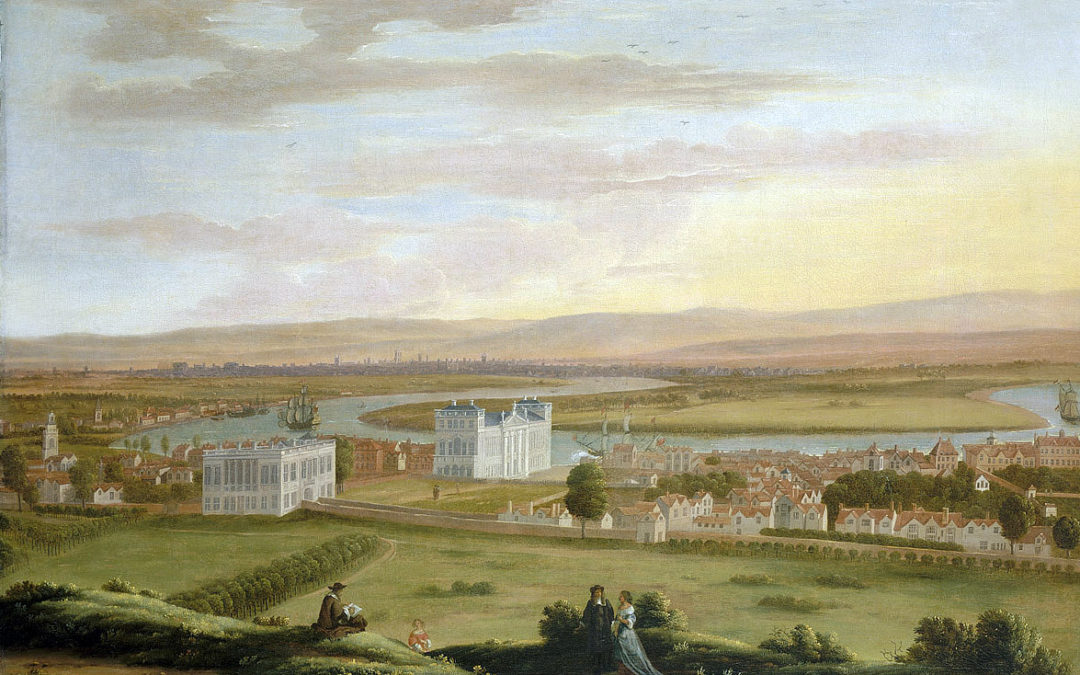 Pepys’s “frolique” is a euphemism for a picnic, which did not exist as a word in English. It was among his favorite ways to spend an afternoon with friends idling. It was a favorite way for him to spend an afternoon with friends idling. We know this...
Pepys’s “frolique” is a euphemism for a picnic, which did not exist as a word in English. It was among his favorite ways to spend an afternoon with friends idling. It was a favorite way for him to spend an afternoon with friends idling. We know this...
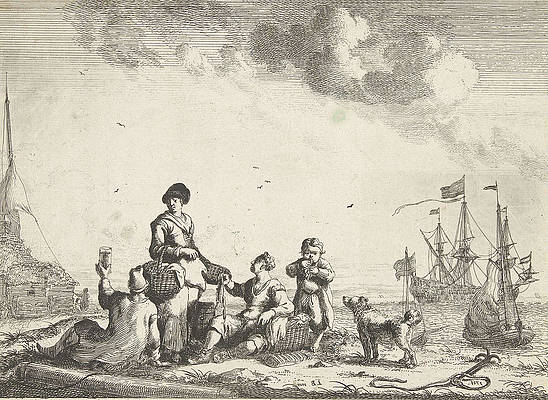 Bakhuizen embellished this seascape (his usual subject) with a group of picnickers. Picnick ann zee’s contemporary title is appropriate but inaccurate because picnic was not applied to an alfresco meal in 1701. Pique-nique had only been included in Gilles...
Bakhuizen embellished this seascape (his usual subject) with a group of picnickers. Picnick ann zee’s contemporary title is appropriate but inaccurate because picnic was not applied to an alfresco meal in 1701. Pique-nique had only been included in Gilles...
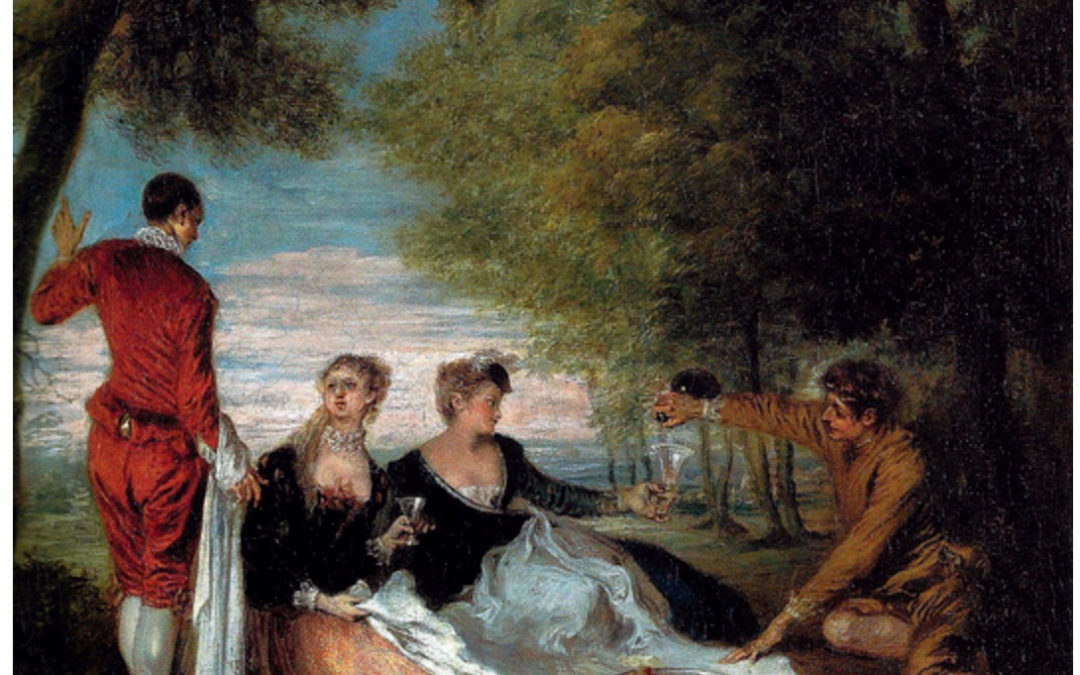 Watteau’s The Collation or Lunch in the Open (1710-1720s c.) is intimate and picnicky. Among his works, it is the most like a déjeuner sur l’herbe, except for his hunt luncheon subjects. As usual, for the French, the subject is not referred to as un...
Watteau’s The Collation or Lunch in the Open (1710-1720s c.) is intimate and picnicky. Among his works, it is the most like a déjeuner sur l’herbe, except for his hunt luncheon subjects. As usual, for the French, the subject is not referred to as un...
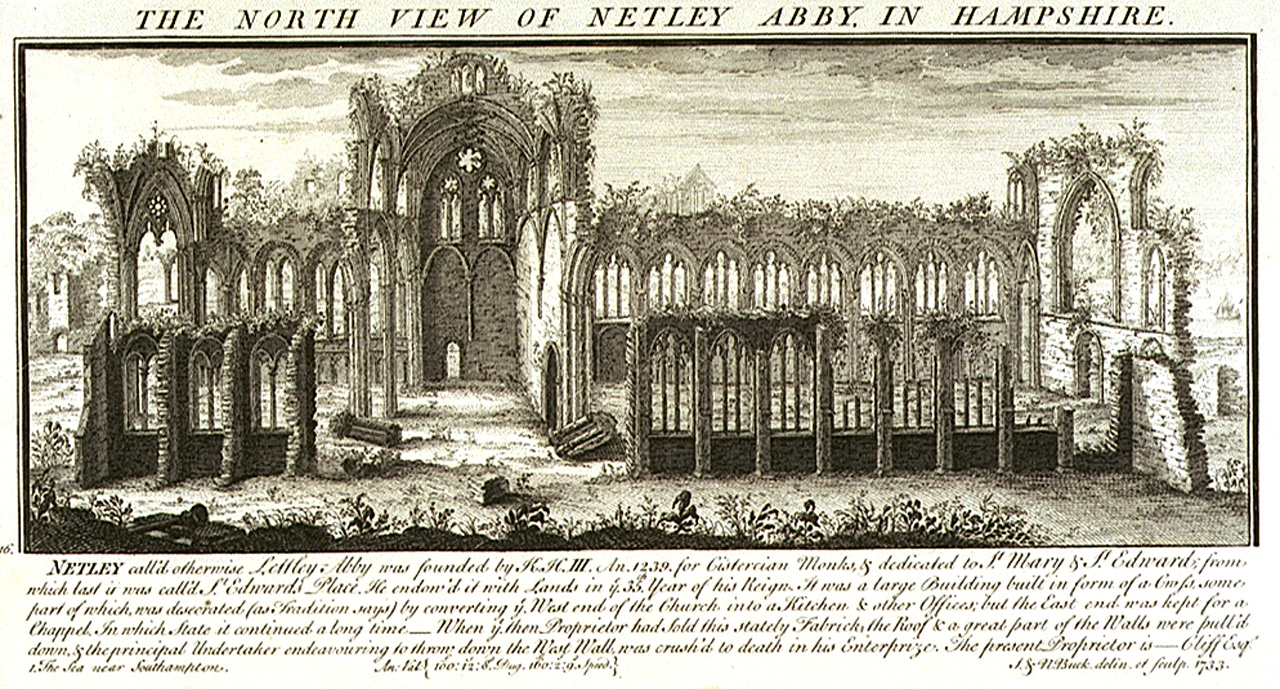 Writing to his dear friend (and probable mistress) Martha Blount, Pope related his adventure at Netley Abbey and his alfresco luncheon there. He does not call it a picnic because the word was not used in English parlance until 1806. (See Harris’s The happy...
Writing to his dear friend (and probable mistress) Martha Blount, Pope related his adventure at Netley Abbey and his alfresco luncheon there. He does not call it a picnic because the word was not used in English parlance until 1806. (See Harris’s The happy...
 This view of Bath from the southeast by Samuel and Nathaniel Buck shows the distant city from the hills above the River Avon. Beneath the view is a brief history of the city to 1734. Though the Bucks did not have the word picnic, they embellished with shepherds and...
This view of Bath from the southeast by Samuel and Nathaniel Buck shows the distant city from the hills above the River Avon. Beneath the view is a brief history of the city to 1734. Though the Bucks did not have the word picnic, they embellished with shepherds and...
 De Troy’s hunt meals were designed for aristocratic patrons. Two paintings Hunt Breakfast and The Death of a Stag were commissioned as companions pieces by Louis XV and designed for his private dining room in Fontainebleau. Hunt Breakfast depicts the high spirits of...
De Troy’s hunt meals were designed for aristocratic patrons. Two paintings Hunt Breakfast and The Death of a Stag were commissioned as companions pieces by Louis XV and designed for his private dining room in Fontainebleau. Hunt Breakfast depicts the high spirits of...
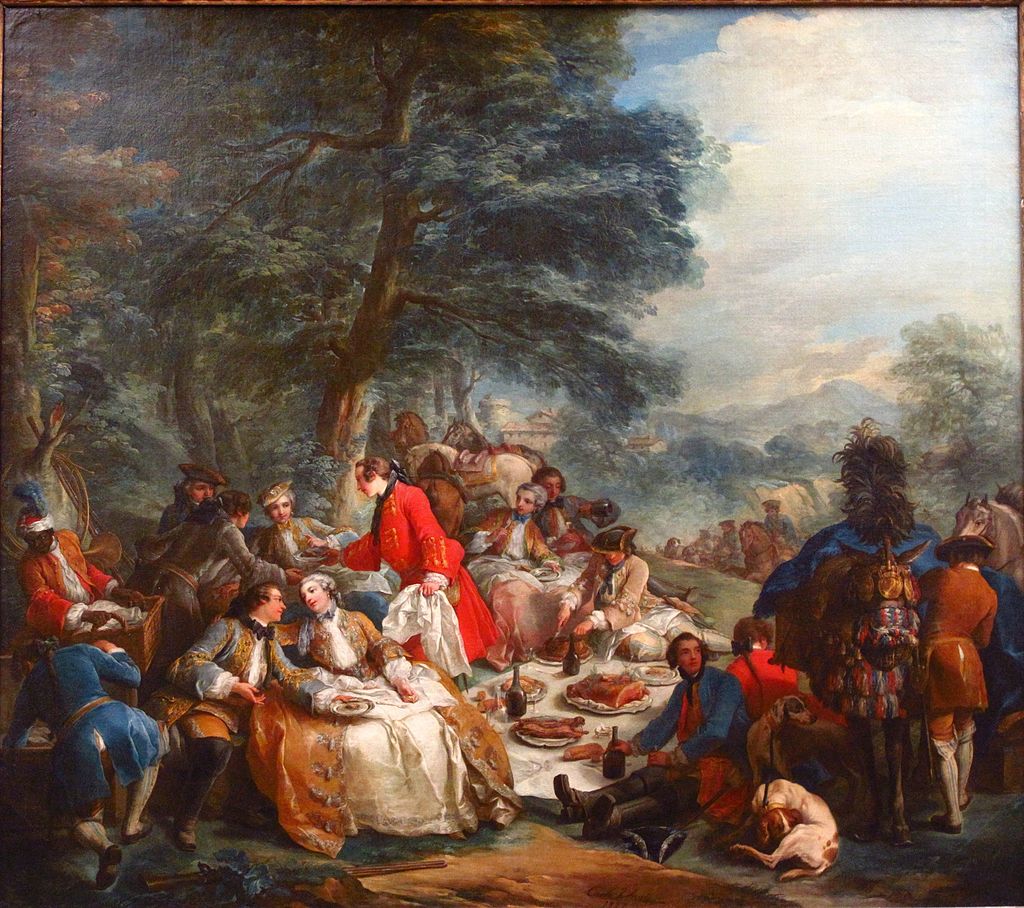 As usual among the French, a halt on the hunt is never referred to as a picnic, although that’s what it is. Van Loo’s Halte de chasse is a narrative of a stop during the hunt, at which the ladies meet the hunters at a predetermined place, called a tryst,...
As usual among the French, a halt on the hunt is never referred to as a picnic, although that’s what it is. Van Loo’s Halte de chasse is a narrative of a stop during the hunt, at which the ladies meet the hunters at a predetermined place, called a tryst,...
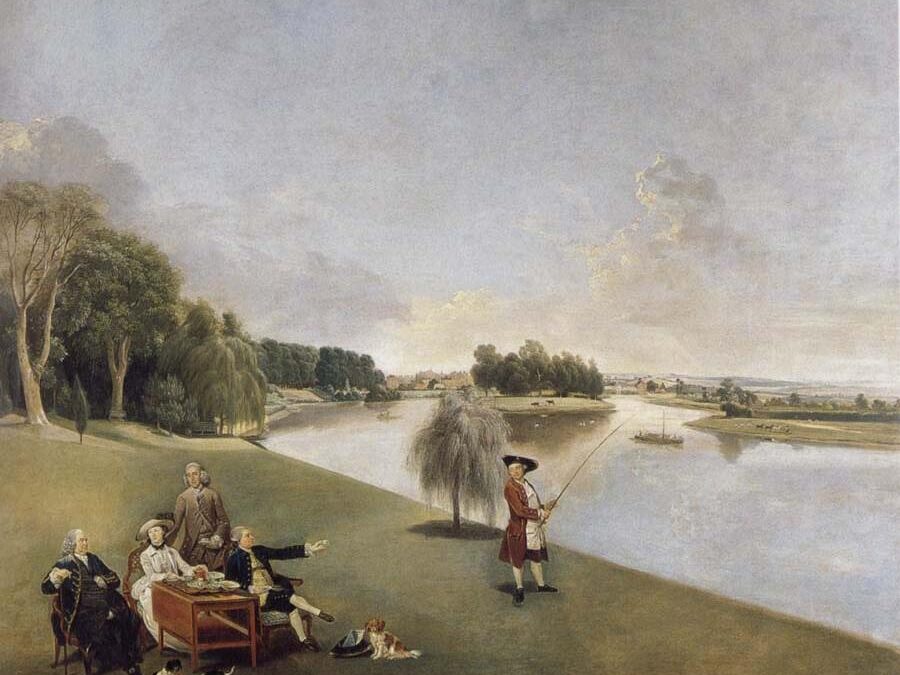 Zoffany’s The Garden of Hampton House, with Mr and Mrs David Garrick Taking Tea is a conversation portrait of the Garricks on their lawn in Twickenham. The occasion is a tea party. The group includes Garrick, gesturing towards his brother David, with the fishing rod,...
Zoffany’s The Garden of Hampton House, with Mr and Mrs David Garrick Taking Tea is a conversation portrait of the Garricks on their lawn in Twickenham. The occasion is a tea party. The group includes Garrick, gesturing towards his brother David, with the fishing rod,...
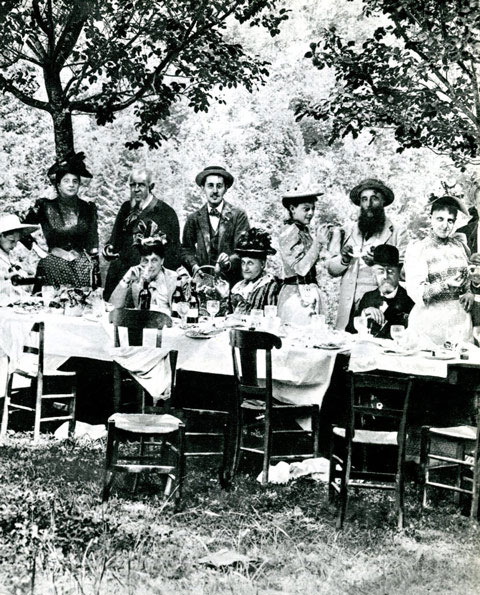 Proust’s Within a Budding Grove [aka In the Shadow of Young Girls in Flower] is sometimes remembered for young Marcel’s picnics on the bluffs at Balbec, a fictional town in Normandy. (Proust does not use pique-nique because this is an outdoor meal.) With a...
Proust’s Within a Budding Grove [aka In the Shadow of Young Girls in Flower] is sometimes remembered for young Marcel’s picnics on the bluffs at Balbec, a fictional town in Normandy. (Proust does not use pique-nique because this is an outdoor meal.) With a...
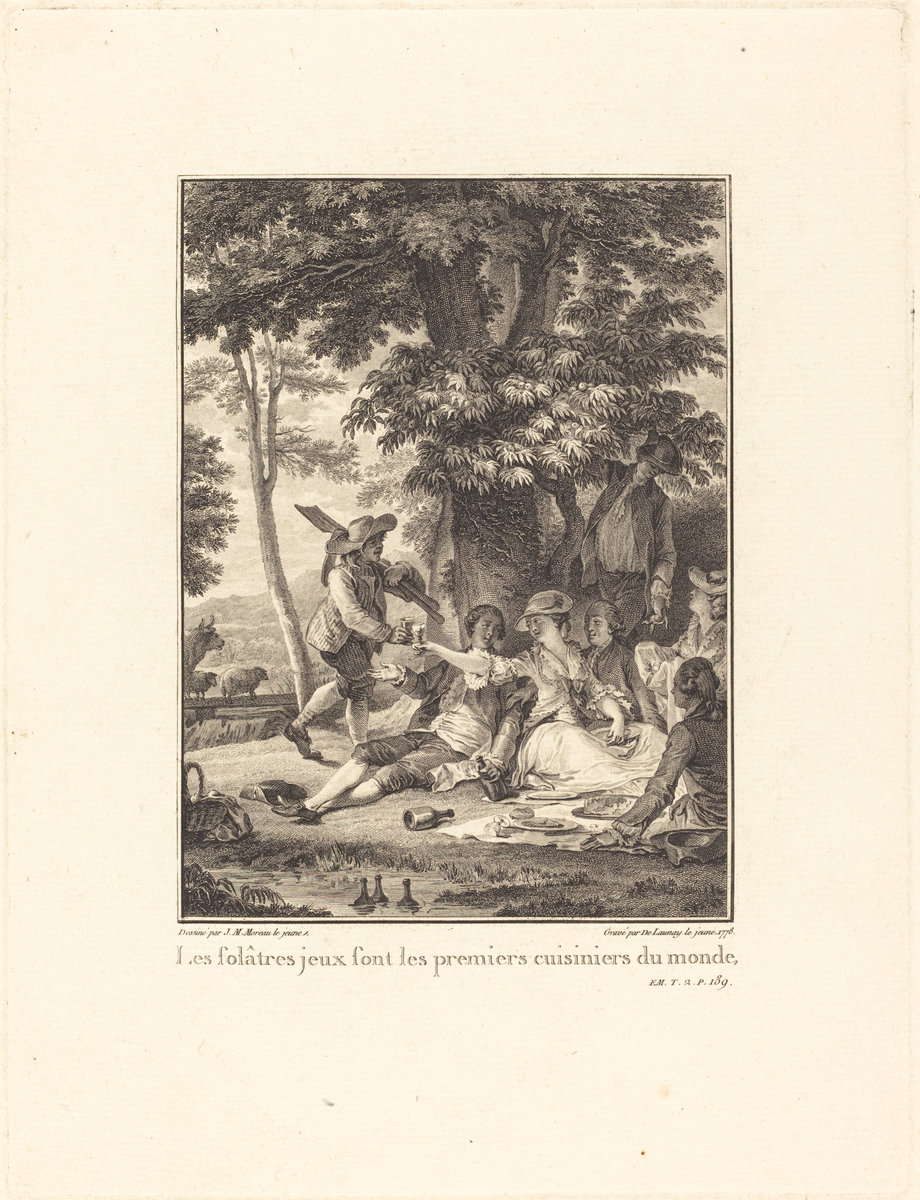 Rousseau was not thinking of a pique-nique when he wrote, “The turf will be our chairs and table, the banks of the stream our sideboard, and our dessert is hanging on the trees.” He knew that pique-nique was an indoor meal for which friends shared the...
Rousseau was not thinking of a pique-nique when he wrote, “The turf will be our chairs and table, the banks of the stream our sideboard, and our dessert is hanging on the trees.” He knew that pique-nique was an indoor meal for which friends shared the...
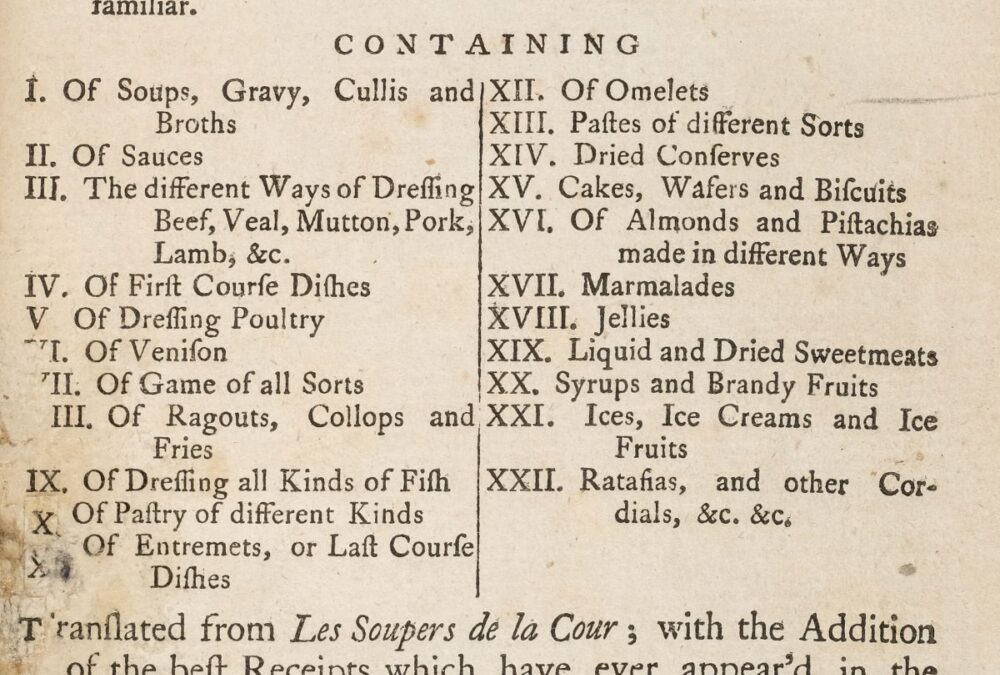 Among Clermont’s recommendations for traveling is a cold Perigord pie. It’s an expensive food ordinary folks might not afford, but a favorite of the posh Pic Nic Club of London. clermont’s text is a translation of Menon’s 1755 Soupers de la cour. Pâté de...
Among Clermont’s recommendations for traveling is a cold Perigord pie. It’s an expensive food ordinary folks might not afford, but a favorite of the posh Pic Nic Club of London. clermont’s text is a translation of Menon’s 1755 Soupers de la cour. Pâté de...
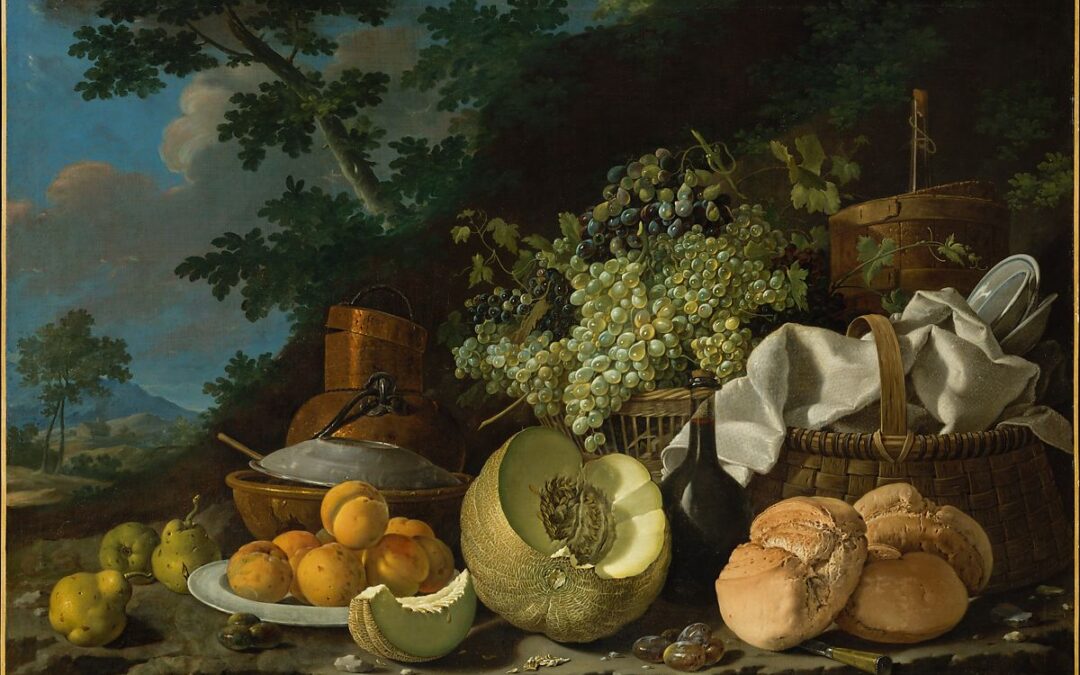 Meléndez was a painter of food, perhaps obsessively so. La Merienda or The Afternoon Meal is among his many still life works there is food ready to be eaten but without any people about to do so. In this instance, it’s a picnic without picnickers though someone...
Meléndez was a painter of food, perhaps obsessively so. La Merienda or The Afternoon Meal is among his many still life works there is food ready to be eaten but without any people about to do so. In this instance, it’s a picnic without picnickers though someone...
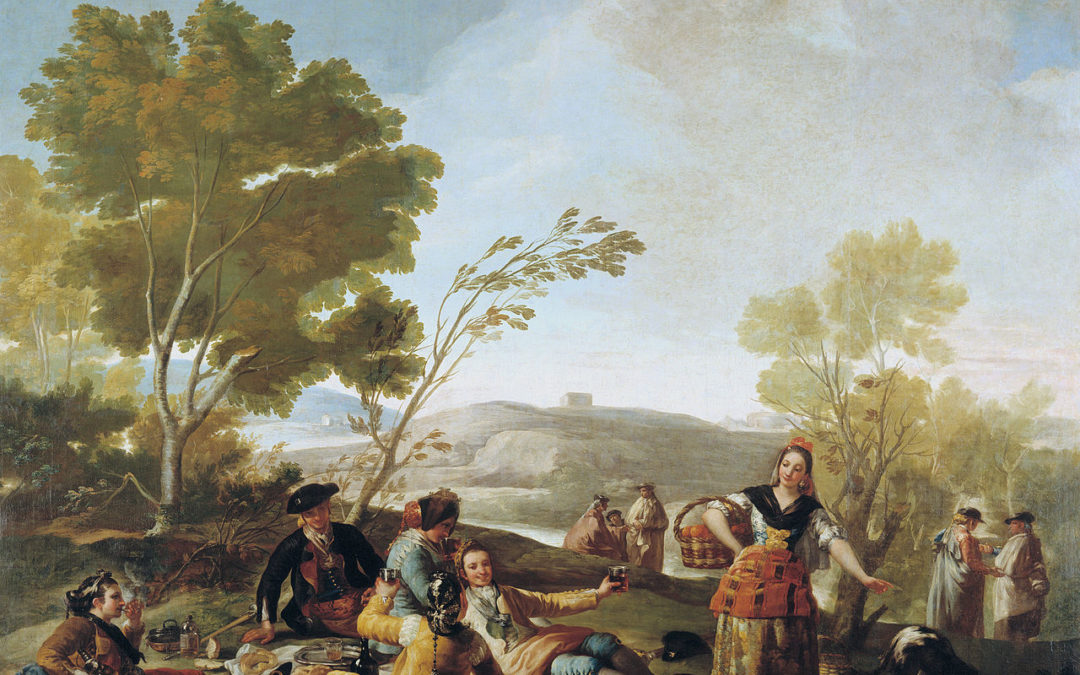 Merienda a orillas del Manzanares [Picnic At the Edge of the Manzanares River] is a painting for a tapestry intended for the dining room of the Prince and Princess of Asturias in the San Lorenzo Palace in Madrid. Goya described the subject as a merienda, a snack, or a...
Merienda a orillas del Manzanares [Picnic At the Edge of the Manzanares River] is a painting for a tapestry intended for the dining room of the Prince and Princess of Asturias in the San Lorenzo Palace in Madrid. Goya described the subject as a merienda, a snack, or a...
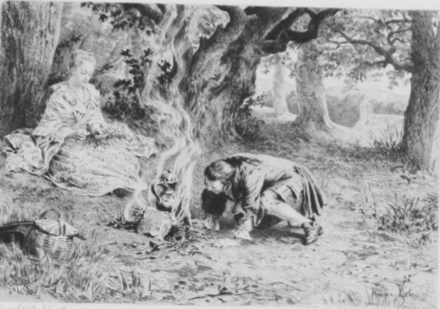 Les Rêvieries du Promeneur Solitaire or Reveries of a Solitary Walker was written in 1776-78, left unfinished, and published posthumously in 1782. It’s composed of ten “walks” or personal essays; the fourth includes the episode about dining in Madame...
Les Rêvieries du Promeneur Solitaire or Reveries of a Solitary Walker was written in 1776-78, left unfinished, and published posthumously in 1782. It’s composed of ten “walks” or personal essays; the fourth includes the episode about dining in Madame...
 Lima was a thriving major colonial town now grown into Chile’s capital and largest city with a population of 10 million. Two centuries ago, an unidentified artist of the Lima School painted A Merry Company on the Banks of the Rímac, a happy picnic in which elegant...
Lima was a thriving major colonial town now grown into Chile’s capital and largest city with a population of 10 million. Two centuries ago, an unidentified artist of the Lima School painted A Merry Company on the Banks of the Rímac, a happy picnic in which elegant...
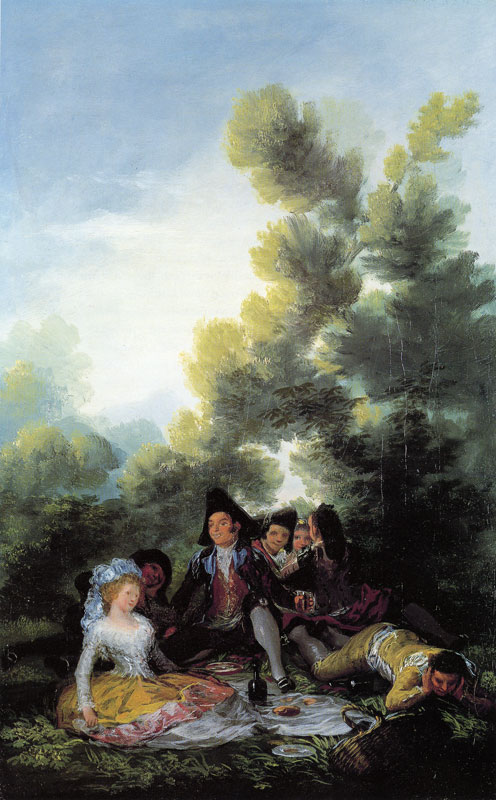 The etymological record of merienda is a blank between 1554 and 1626. After surfacing in Lazarillo de Tormes as a snack, it does not reappear until Quevedo’s El Buscon denotes a typical alfresco picnic. The change in meaning is unaccountable. In this instance,...
The etymological record of merienda is a blank between 1554 and 1626. After surfacing in Lazarillo de Tormes as a snack, it does not reappear until Quevedo’s El Buscon denotes a typical alfresco picnic. The change in meaning is unaccountable. In this instance,...
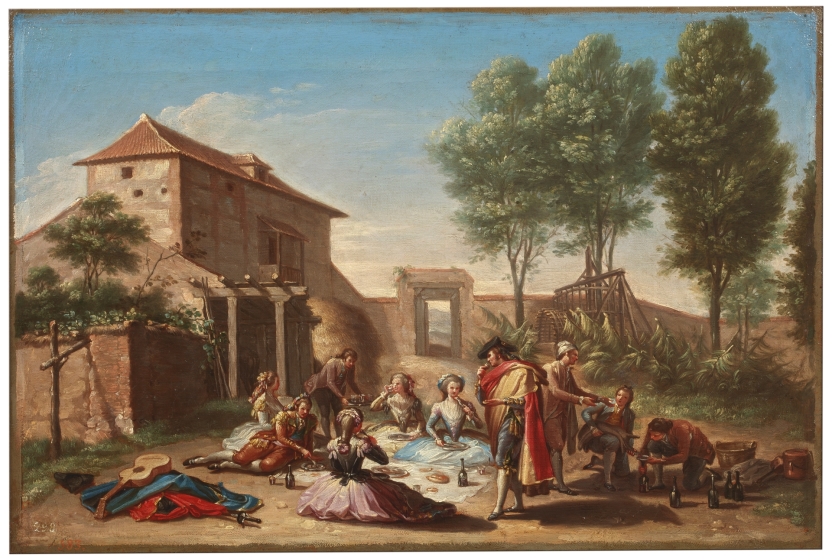 Bayeu’s Picnic in the Country [aka Merienda en el Campo] is a study of a proposed tapestry destined for the royal palaces of the Spanish monarchy now exhibited in the Prado’s Salon de Consejos. The picnickers have gathered around awhile cloth set on the...
Bayeu’s Picnic in the Country [aka Merienda en el Campo] is a study of a proposed tapestry destined for the royal palaces of the Spanish monarchy now exhibited in the Prado’s Salon de Consejos. The picnickers have gathered around awhile cloth set on the...
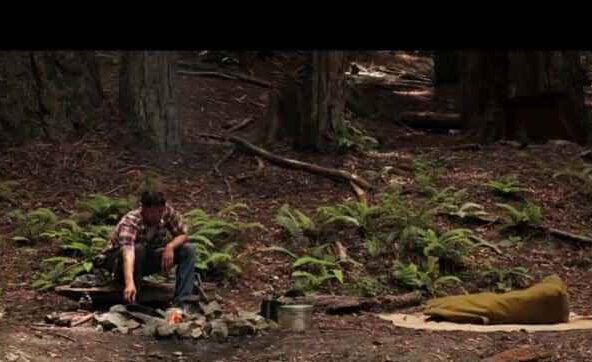 It resembles a picnic; it’s recreational, but it’s lunch on a trout-fishing excursion on Michigan’s Upper Peninsula. In Ernest Hemingway’s story “Big Two-Hearted River, Part Two,” Nick Adams breaks to have a sandwich. Nick is...
It resembles a picnic; it’s recreational, but it’s lunch on a trout-fishing excursion on Michigan’s Upper Peninsula. In Ernest Hemingway’s story “Big Two-Hearted River, Part Two,” Nick Adams breaks to have a sandwich. Nick is...
 Picnic, the English phonetic spelling of pique-nique, owes its introduction in English parlance to the Pic Nics, a London club that had a brief run from 1801-1803. We remember the Pic Nics because James Gillray lampooned and mocked them. We recognize that this was...
Picnic, the English phonetic spelling of pique-nique, owes its introduction in English parlance to the Pic Nics, a London club that had a brief run from 1801-1803. We remember the Pic Nics because James Gillray lampooned and mocked them. We recognize that this was...
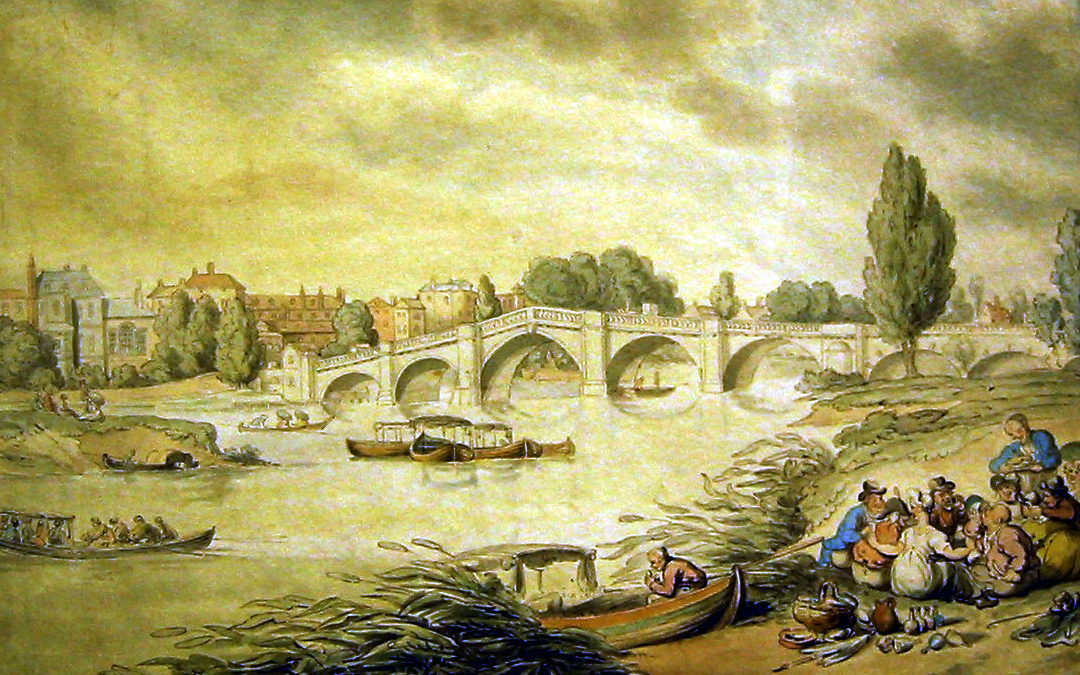 Rowlandson’s Richmond Bridge, Surrey documents a picnic party at low tide on the Thames’s sandy shore opposite Hampton Court. It was common for Londoners to hire a water taxi to transport picnicker out of the city and into the country for an afternoon of eating and...
Rowlandson’s Richmond Bridge, Surrey documents a picnic party at low tide on the Thames’s sandy shore opposite Hampton Court. It was common for Londoners to hire a water taxi to transport picnicker out of the city and into the country for an afternoon of eating and...
 Stuart’s firsthand memories of the time that parallel Henry Angelo’s playful attitude towards the Pic Nic society. She attempts a comic attitude, that really masks her antagonism. “Its partisans, “she wrote in her journal, “might have been pursued to the stake or...
Stuart’s firsthand memories of the time that parallel Henry Angelo’s playful attitude towards the Pic Nic society. She attempts a comic attitude, that really masks her antagonism. “Its partisans, “she wrote in her journal, “might have been pursued to the stake or...
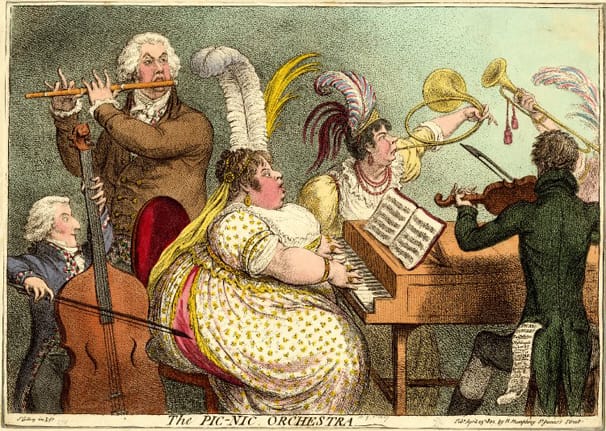 Gillray’s caricature Dilettanti Theatrical; or a Peep at the Green Room. Vide Pic-Nic Orgies lampoons the Pic Nic Society. For a brief time, the Pic Nics were one of Gillray’s prime targets, and his satire Blowing up the Pic Nics helped to hound the society into...
Gillray’s caricature Dilettanti Theatrical; or a Peep at the Green Room. Vide Pic-Nic Orgies lampoons the Pic Nic Society. For a brief time, the Pic Nics were one of Gillray’s prime targets, and his satire Blowing up the Pic Nics helped to hound the society into...
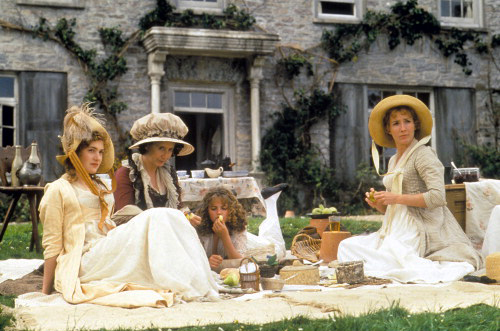 Emma insults Miss Bates. But she outdoes herself in Sense and Sensibility, in which she deflates her characters’ high expectations by abruptly canceling the picnic. The “party of pleasure,” Austen’s euphemism for a picnic, was intended at...
Emma insults Miss Bates. But she outdoes herself in Sense and Sensibility, in which she deflates her characters’ high expectations by abruptly canceling the picnic. The “party of pleasure,” Austen’s euphemism for a picnic, was intended at...
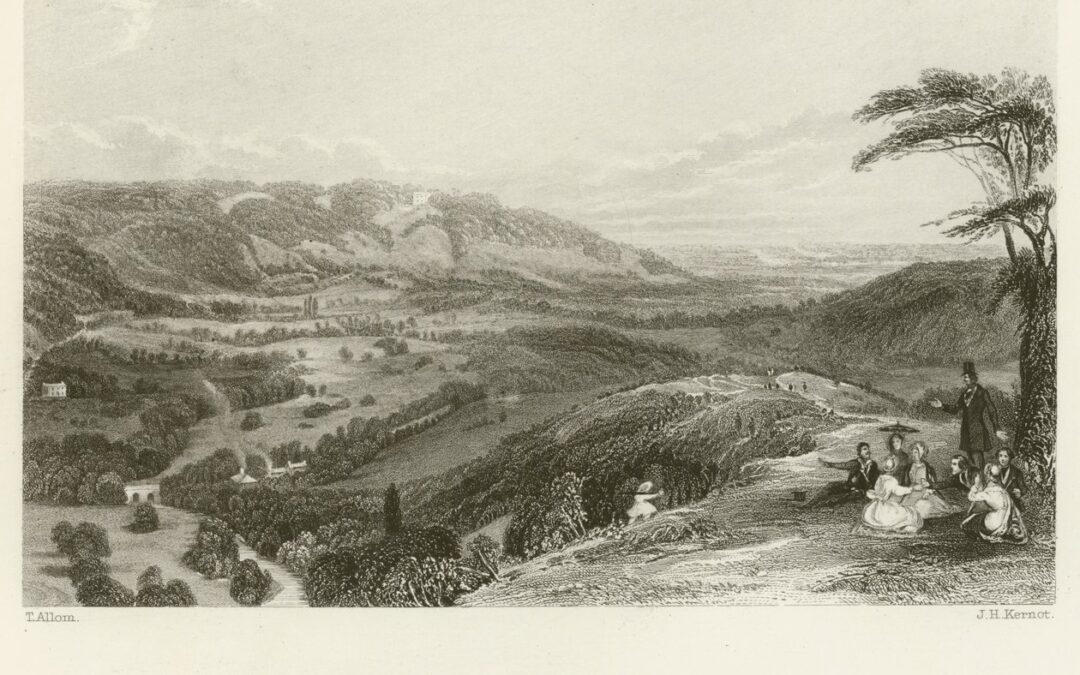 Austen’s Emma has two picnic episodes, one of which never happens * and the other a proper picnic at Box Hill. During strawberry season, Emma Woodhouse and her crowd gather in Knightley’s Donwell Abbey garden. Mrs. Elston’s enthusiastic plan for a...
Austen’s Emma has two picnic episodes, one of which never happens * and the other a proper picnic at Box Hill. During strawberry season, Emma Woodhouse and her crowd gather in Knightley’s Donwell Abbey garden. Mrs. Elston’s enthusiastic plan for a...
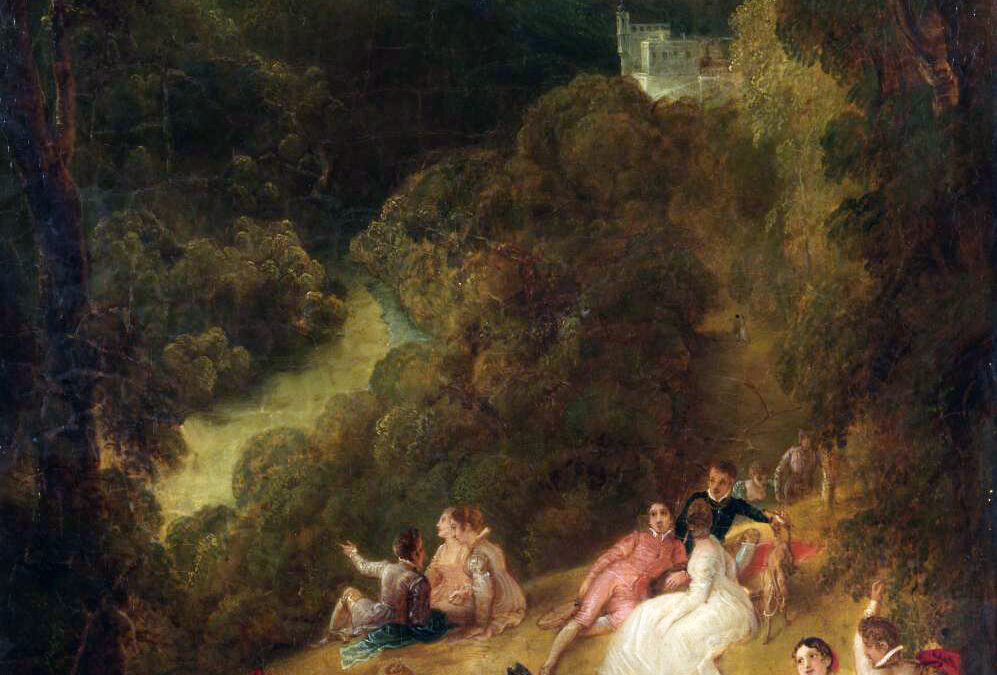 Thomas Stothard’s San Souci is a picnic in the style of the fête galante associated with Jean-Antoine Watteau. Couples dressed in 17th-century clothing enjoy their leisure in varying poses of elegant courting. The foreground includes a picnic cloth with food and...
Thomas Stothard’s San Souci is a picnic in the style of the fête galante associated with Jean-Antoine Watteau. Couples dressed in 17th-century clothing enjoy their leisure in varying poses of elegant courting. The foreground includes a picnic cloth with food and...
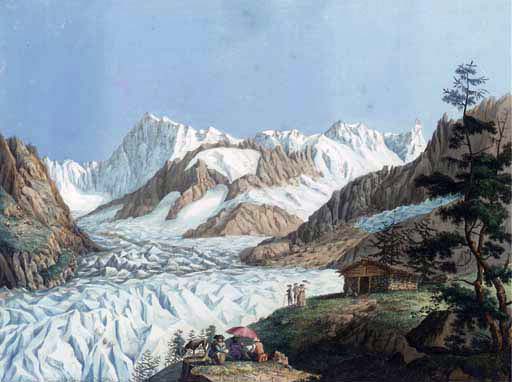 ” “The most desolate place in the world” where Mary Shelley thought she was overlooking the Mer de Glace, Sea of Ice, grinding into the Chamonix valley. Her descriptive phrase suggests that she and her traveling companions, Percy Shelley (her lover)...
” “The most desolate place in the world” where Mary Shelley thought she was overlooking the Mer de Glace, Sea of Ice, grinding into the Chamonix valley. Her descriptive phrase suggests that she and her traveling companions, Percy Shelley (her lover)...
 Five years into his six-year exile on St. Helena, Napoleon was pale, tired-looking, and fat, though his face showed no fatigue or illness. Still, after a ten-mile journey on horseback (on hilly terrain), he uncharacteristically stopped for a social visit at Mount...
Five years into his six-year exile on St. Helena, Napoleon was pale, tired-looking, and fat, though his face showed no fatigue or illness. Still, after a ten-mile journey on horseback (on hilly terrain), he uncharacteristically stopped for a social visit at Mount...
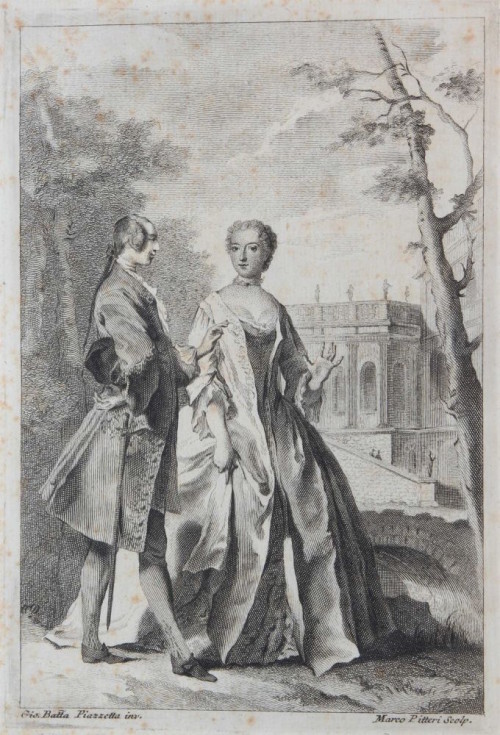 Writing in 1804, Longchamps suggests that sharing the bill at dinner, dîner en manière de pique-nique was stylish in the 1740s. Perhaps, but it was an old memory, and by then, dining en pique-nique was common. Longchamps explains that while in the employ of Emilie du...
Writing in 1804, Longchamps suggests that sharing the bill at dinner, dîner en manière de pique-nique was stylish in the 1740s. Perhaps, but it was an old memory, and by then, dining en pique-nique was common. Longchamps explains that while in the employ of Emilie du...
 As a passionate hunter, Brillat-Savarin enjoyed traditional midday luncheon trysts or haltes de chasse. he describes the gathering in “Meditation XV” in Physiologie du Gout, or The Psychology of Taste. According to French usage, the halte de chasse is not...
As a passionate hunter, Brillat-Savarin enjoyed traditional midday luncheon trysts or haltes de chasse. he describes the gathering in “Meditation XV” in Physiologie du Gout, or The Psychology of Taste. According to French usage, the halte de chasse is not...
 Five couples picnicking on the grass are upset by a swarm of bees. Their table is in disarray as people run helter-skelter; hats fly, tempers flare, and a dog barks. A man pours water on a fainting woman that misses her mouth but not her breasts. Round up the usual...
Five couples picnicking on the grass are upset by a swarm of bees. Their table is in disarray as people run helter-skelter; hats fly, tempers flare, and a dog barks. A man pours water on a fainting woman that misses her mouth but not her breasts. Round up the usual...
 Another picnic ruined, etc., etc. See George Cruikshank. The Gipseying Party Alarm’d at the Uninvited Guest (1827), engraving. London: John Fairburn, 1827....
Another picnic ruined, etc., etc. See George Cruikshank. The Gipseying Party Alarm’d at the Uninvited Guest (1827), engraving. London: John Fairburn, 1827....
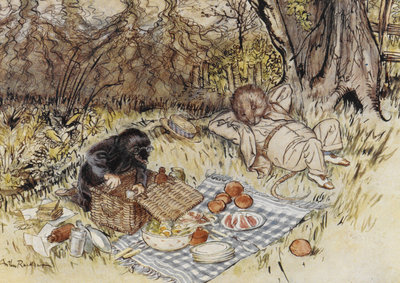 Grahame’s picnic in The Wind in the Willows (1908) is a wonder. What child (or adult) could ever conceive of a picnic for one eating basket full of “cold chicken. ....
Grahame’s picnic in The Wind in the Willows (1908) is a wonder. What child (or adult) could ever conceive of a picnic for one eating basket full of “cold chicken. ....
 Angelo, London’s most renowned fencing master, was an original Pic Nic. His in Reminiscences of Henry Angelo (1830) is among the few first-hand depictions of the society. Angel explains that “the plan [for the Pic Nics] was derived from a friendly custom...
Angelo, London’s most renowned fencing master, was an original Pic Nic. His in Reminiscences of Henry Angelo (1830) is among the few first-hand depictions of the society. Angel explains that “the plan [for the Pic Nics] was derived from a friendly custom...
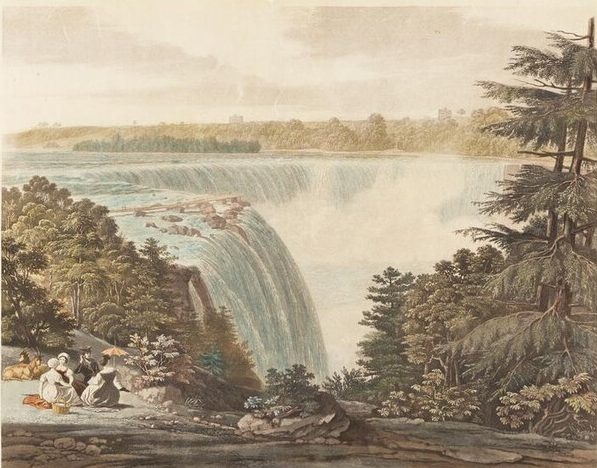 Bennett added picnickers to his Niagara Falls landscape to make the vastness of the falls seem more accessible. He placed a group of picnickers on Goat Island in the left foreground and positioned the falls beyond them. The inclusion of picnickers was pleasing and...
Bennett added picnickers to his Niagara Falls landscape to make the vastness of the falls seem more accessible. He placed a group of picnickers on Goat Island in the left foreground and positioned the falls beyond them. The inclusion of picnickers was pleasing and...
 Sandwiches in the United States are mentioned first by Frances Trollope in Domestic Manners of the Americans. Their contents are unknown, and they were brought along for a hellish “pic-nic” party in the woods in the environs of Cincinnati circa 1829....
Sandwiches in the United States are mentioned first by Frances Trollope in Domestic Manners of the Americans. Their contents are unknown, and they were brought along for a hellish “pic-nic” party in the woods in the environs of Cincinnati circa 1829....
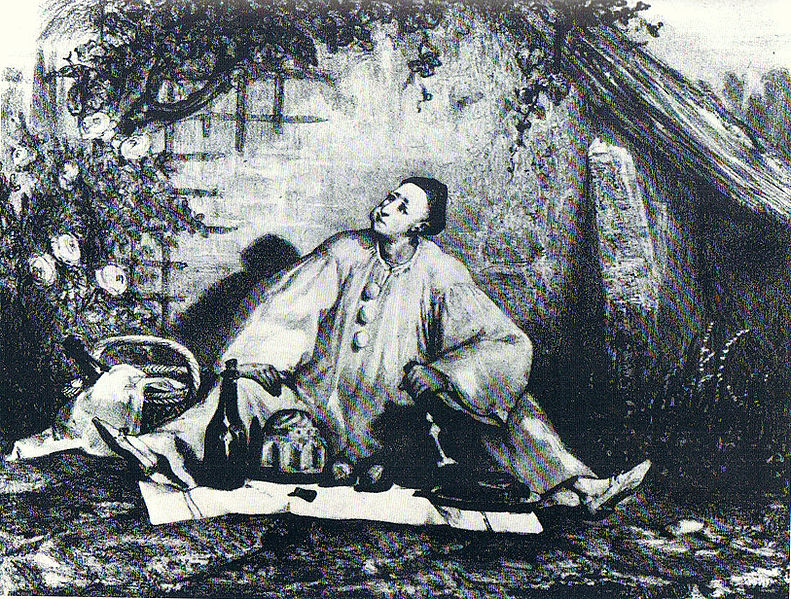 Bouquet’s Le repas de Pierrot, Pierrot’s Dinner, suggests a picnic. The scene depicts the actor Jean-Gaspard Deburau as Pierrot, a star stock character in the Théâtre des Funambules (Theater of the Tightrope Walkers). Pierrot always losses. From the look...
Bouquet’s Le repas de Pierrot, Pierrot’s Dinner, suggests a picnic. The scene depicts the actor Jean-Gaspard Deburau as Pierrot, a star stock character in the Théâtre des Funambules (Theater of the Tightrope Walkers). Pierrot always losses. From the look...
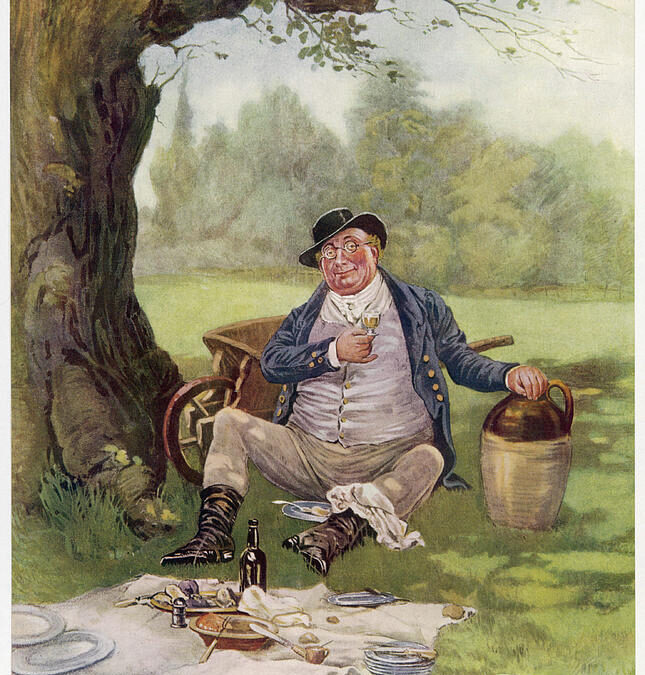 “A Pleasant Day With An Unpleasant Termination” is Dickens’s comic send-up of the Halt on the Hunt, particularly Jean-Anthelme Brillat-Savarin’s The Physiology of Taste, or Meditations on Transcendental Gastronomy (1825). Much of the comedy...
“A Pleasant Day With An Unpleasant Termination” is Dickens’s comic send-up of the Halt on the Hunt, particularly Jean-Anthelme Brillat-Savarin’s The Physiology of Taste, or Meditations on Transcendental Gastronomy (1825). Much of the comedy...
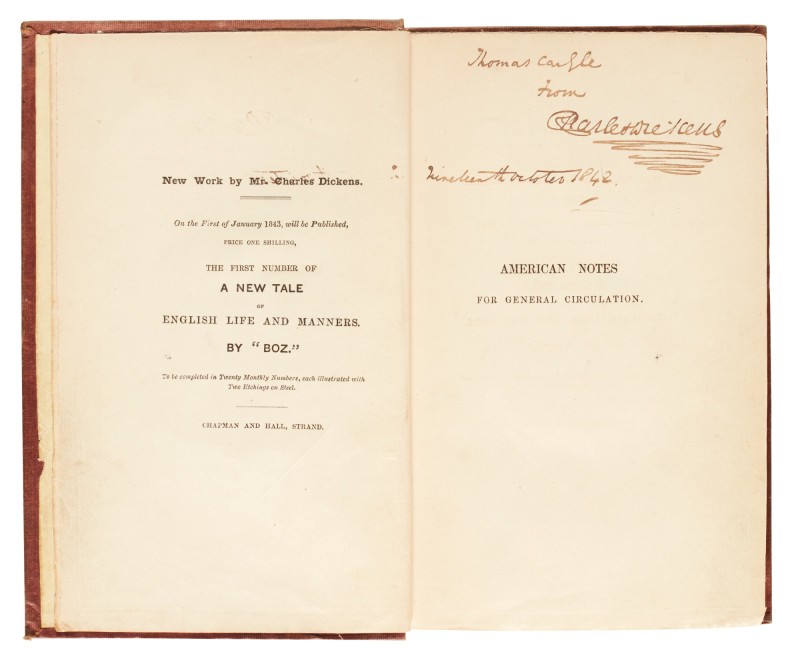 “A Jaunt to the Looking-Glass Prairie and Back” left Dickens with mixed feelings. The weather was hot and the journey tedious, but the picnic on Looking-Glass Prairie” was something Dickens wanted, mostly because he had been told that any sightseer...
“A Jaunt to the Looking-Glass Prairie and Back” left Dickens with mixed feelings. The weather was hot and the journey tedious, but the picnic on Looking-Glass Prairie” was something Dickens wanted, mostly because he had been told that any sightseer...
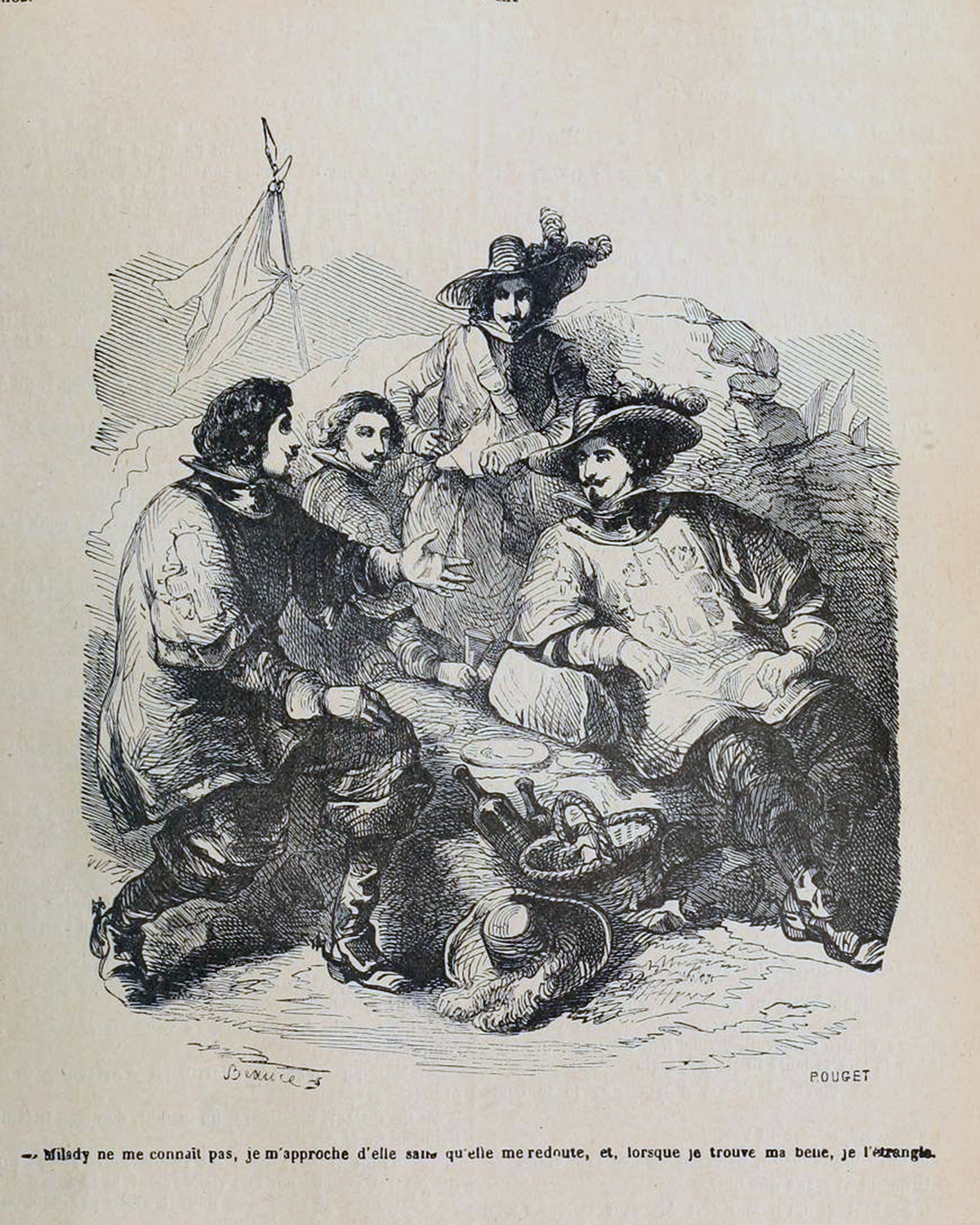 The battlefield déjeuner sur l’herbe in The Three Musketeers set a pattern for sardonic picnic humor. * Dumas and Auguste Maquet (his co-author) add comic relief to the severe Siege of La Rochelle when during a lull in the battle, Athos makes a bet that he,...
The battlefield déjeuner sur l’herbe in The Three Musketeers set a pattern for sardonic picnic humor. * Dumas and Auguste Maquet (his co-author) add comic relief to the severe Siege of La Rochelle when during a lull in the battle, Athos makes a bet that he,...
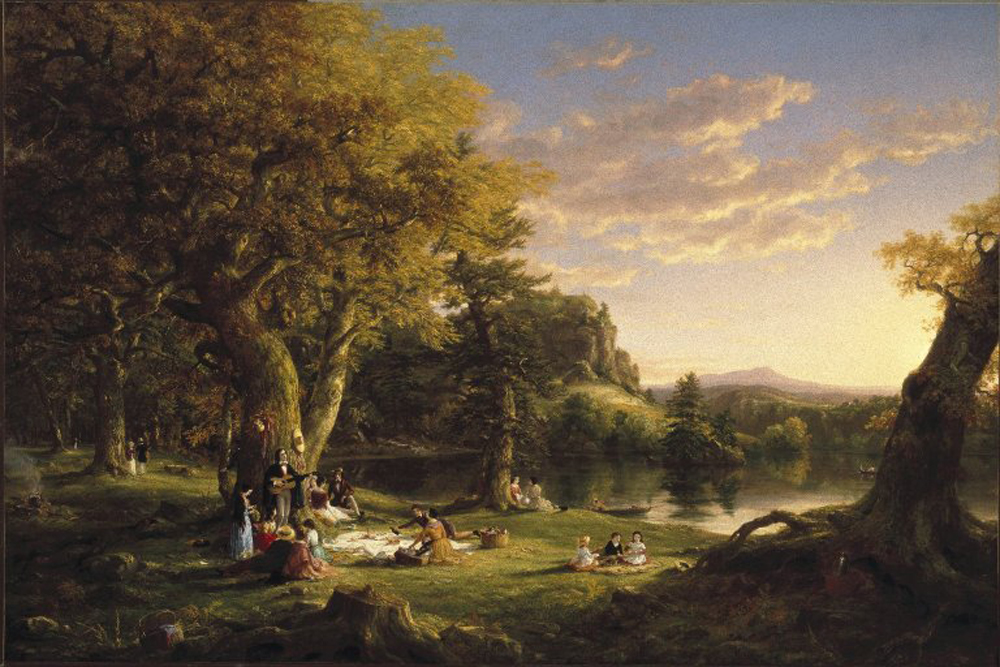 Cole’s Pic-Nic Party is a standout for its joie de vivre. It’s not just another of Cole’s numerous “sylvan” scenes,” which his hyperbolic biographer Louis Noble described as being “all American, wide, bright polished water,...
Cole’s Pic-Nic Party is a standout for its joie de vivre. It’s not just another of Cole’s numerous “sylvan” scenes,” which his hyperbolic biographer Louis Noble described as being “all American, wide, bright polished water,...
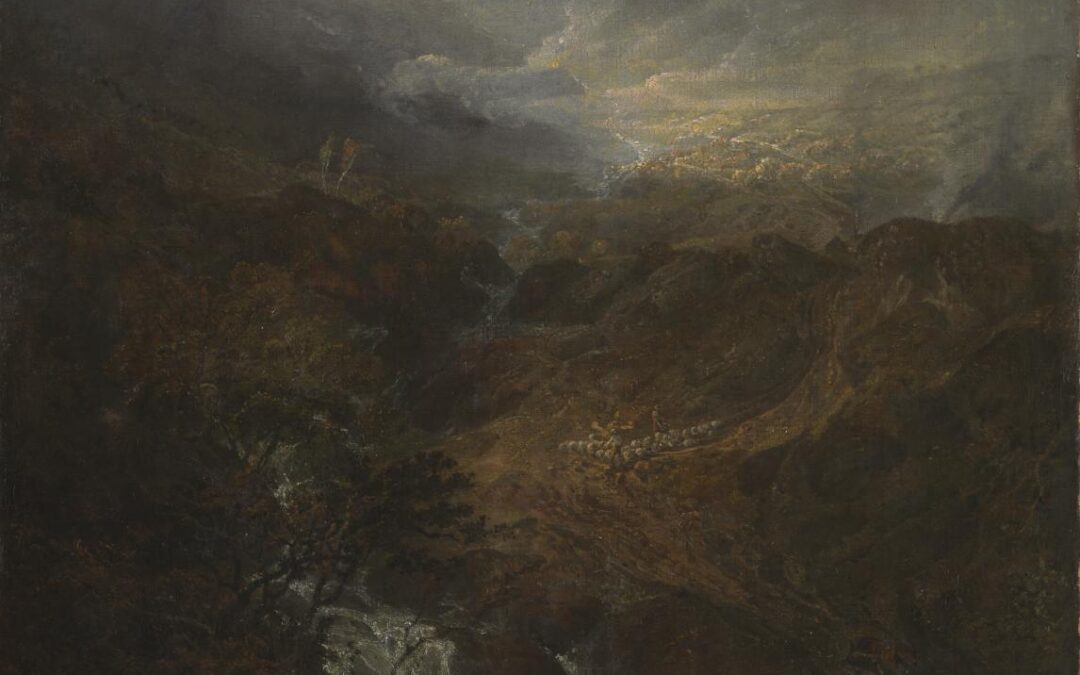 Sometime in 1798-1799, the date is unclear; Woodsworth describes a picnic in The Prelude. He does not refer to this adventure as a picnic because the word was unknown to him at this time. He probably became familiar with the word a decade later because John Wilson...
Sometime in 1798-1799, the date is unclear; Woodsworth describes a picnic in The Prelude. He does not refer to this adventure as a picnic because the word was unknown to him at this time. He probably became familiar with the word a decade later because John Wilson...
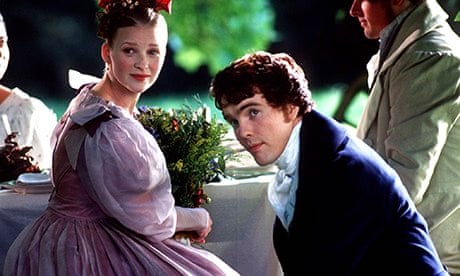 “Blissful” is Dickens’s word to describe Copperfield’s tenderest memories of Dora Spenlow’s picnic birthday party. He’s about nineteen and obsessed, getting up before 6 AM to buy flowers, so they are fresh. The picnic is near...
“Blissful” is Dickens’s word to describe Copperfield’s tenderest memories of Dora Spenlow’s picnic birthday party. He’s about nineteen and obsessed, getting up before 6 AM to buy flowers, so they are fresh. The picnic is near...
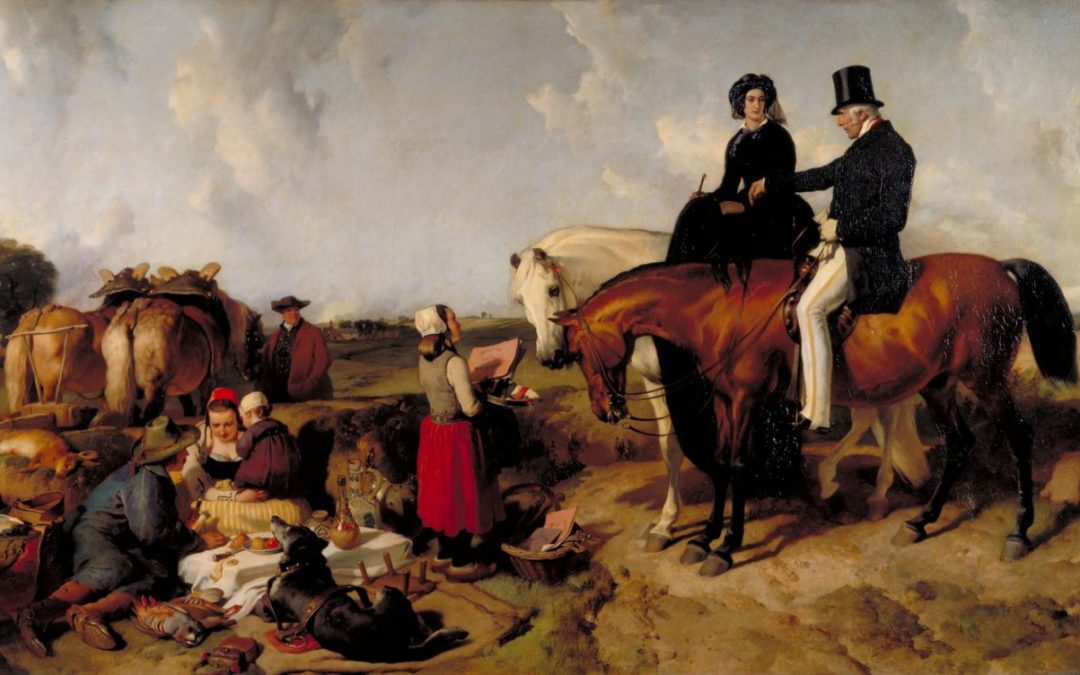 Landseer’s A Dialogue at Waterloo is a portrait of Arthur Wellesley, Duke of Wellington, and his daughter-in-law, Lady Douro, visiting the battlefield. As the Duke describes the scene as thirty-five years before, they are accosted by a young peasant girl selling...
Landseer’s A Dialogue at Waterloo is a portrait of Arthur Wellesley, Duke of Wellington, and his daughter-in-law, Lady Douro, visiting the battlefield. As the Duke describes the scene as thirty-five years before, they are accosted by a young peasant girl selling...
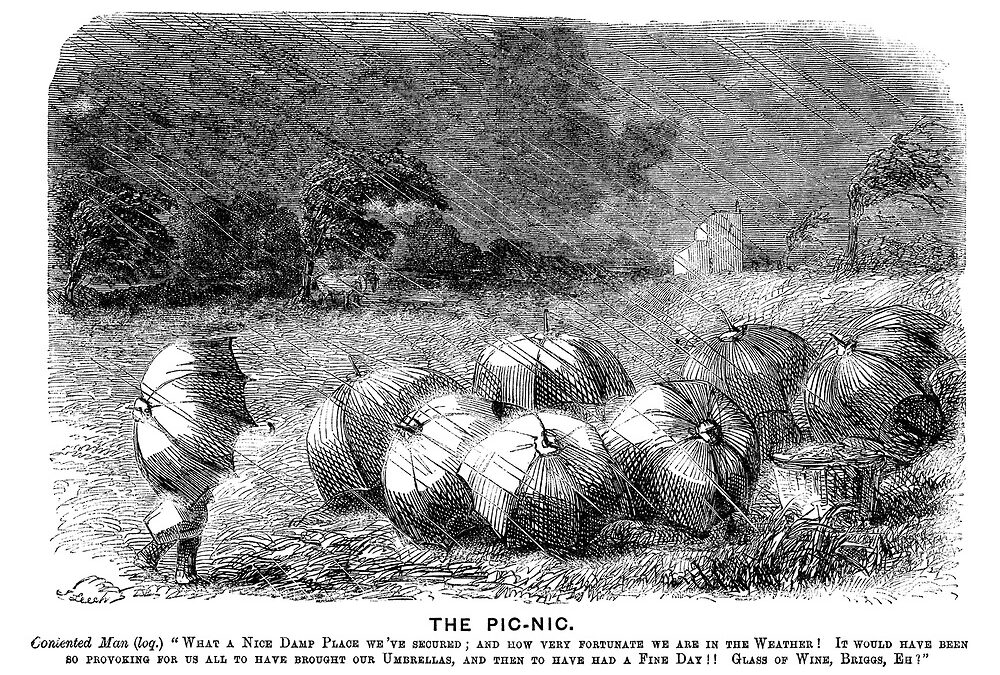 For whom a rainy day will not stop the picnic, Stoic Brits are the butt of Leech’s satiric humor. Visually, you see a group of umbrellas in an open field lashed by rain. The legend is, “What a nice damp place we have secured; and how very fortunate we are...
For whom a rainy day will not stop the picnic, Stoic Brits are the butt of Leech’s satiric humor. Visually, you see a group of umbrellas in an open field lashed by rain. The legend is, “What a nice damp place we have secured; and how very fortunate we are...
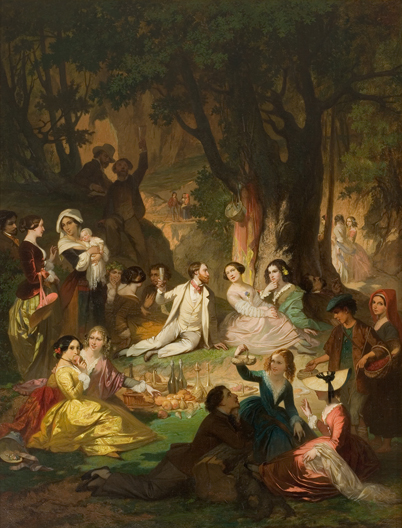 It’s unclear why Glaize selected a goûter champêtre or picnic for a portrait of his patron Alfred Bruyas. Perhaps Glaize meant to highlight Bruyas, dressed white, in a theatrical social setting as a man among many women. He spotlights his patron in the center,...
It’s unclear why Glaize selected a goûter champêtre or picnic for a portrait of his patron Alfred Bruyas. Perhaps Glaize meant to highlight Bruyas, dressed white, in a theatrical social setting as a man among many women. He spotlights his patron in the center,...
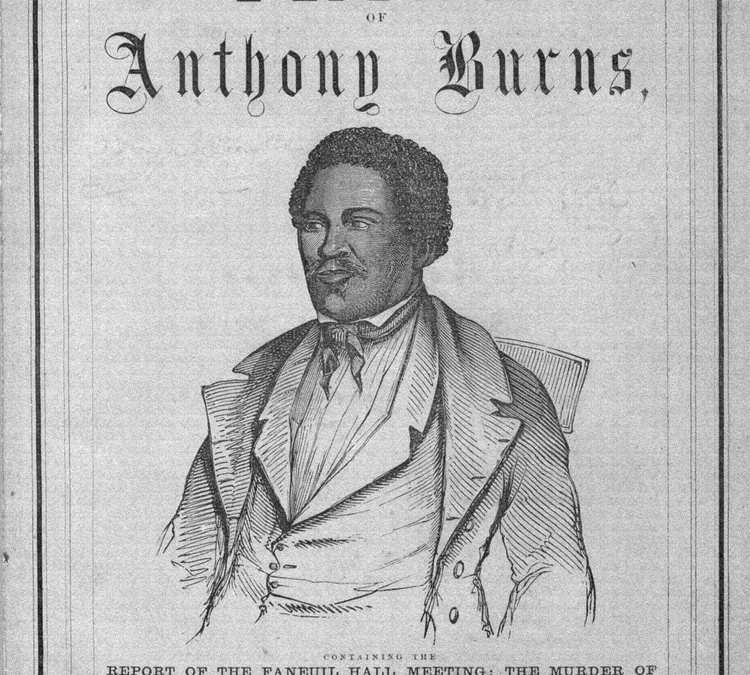 At the Harmony Grove picnic dedicated to abolishing slavery, Thoreau read portions of what became his essay “Slavery in Massachusetts” completed later that year. The occasion was a Fourth of July celebration, and among Thoreau’s concerns was the fugitive Henry...
At the Harmony Grove picnic dedicated to abolishing slavery, Thoreau read portions of what became his essay “Slavery in Massachusetts” completed later that year. The occasion was a Fourth of July celebration, and among Thoreau’s concerns was the fugitive Henry...
 According to family lore, Llewelyn photographed his wife Emma each year on her birthday, September 23, 1855. From a picnic point of view, it’s fortuitous because, to my knowledge, this is the first photograph ever of a picnic. *Llewelyn was a pioneer...
According to family lore, Llewelyn photographed his wife Emma each year on her birthday, September 23, 1855. From a picnic point of view, it’s fortuitous because, to my knowledge, this is the first photograph ever of a picnic. *Llewelyn was a pioneer...
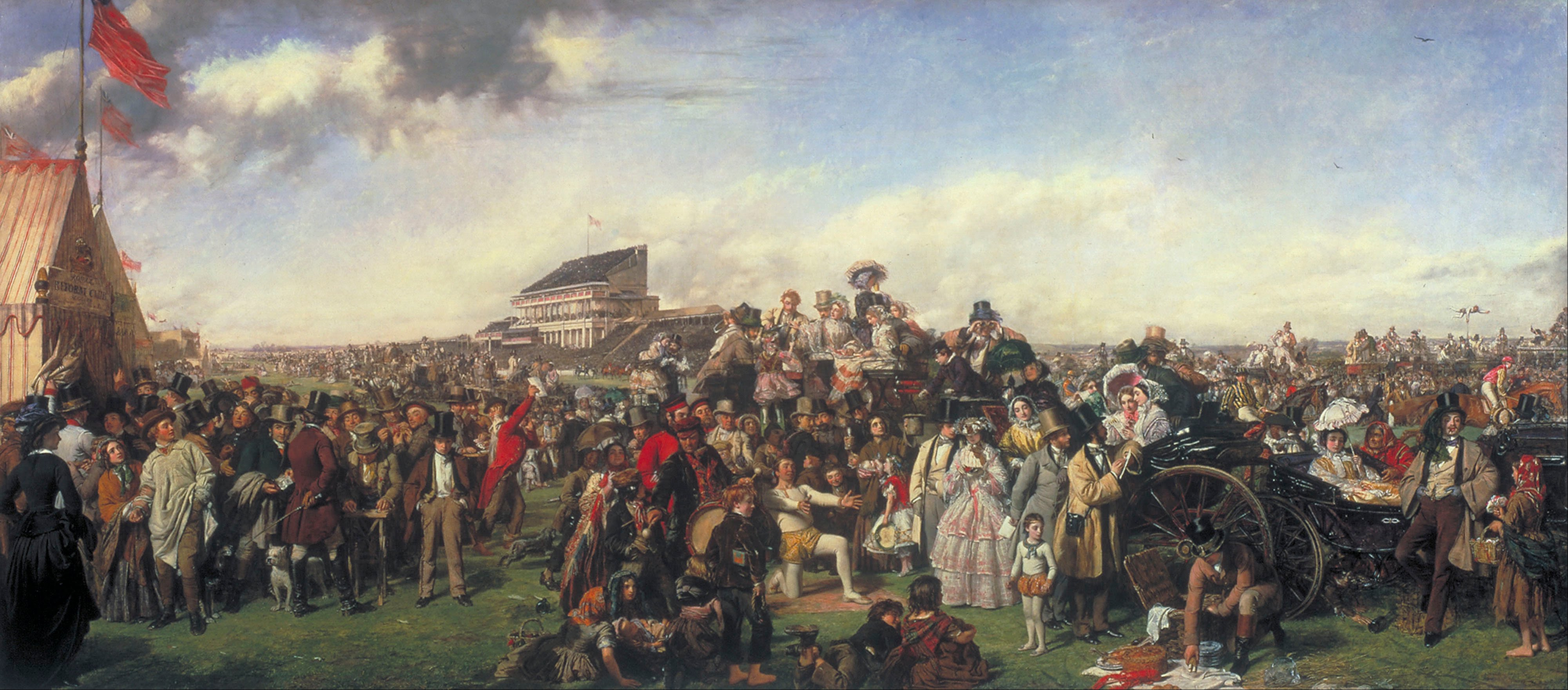 “My first Derby,” William Powell Frith explained, “had no interest for me as a race, but as giving me the opportunity of studying life and character.” after considerable preparation, Frith eventually painted the scene as an amusement tinged...
“My first Derby,” William Powell Frith explained, “had no interest for me as a race, but as giving me the opportunity of studying life and character.” after considerable preparation, Frith eventually painted the scene as an amusement tinged...
 In An Englishwoman in America (1856), Bird finds the view of Niagara Falls marred by picnic detritus. On first impression, Bird was astonished at the falls and the mist’s power and the roar. But a closer look revealed that the falls are “disfigured,” for “Not...
In An Englishwoman in America (1856), Bird finds the view of Niagara Falls marred by picnic detritus. On first impression, Bird was astonished at the falls and the mist’s power and the roar. But a closer look revealed that the falls are “disfigured,” for “Not...
 Flaubert’s Madame Bovary is attack on the French bourgeoisie’s crudities and lack of taste. A pivotal moment occurs at Emma Rouault’s wedding party, a vaguely picnicky outdoor event. The party foreshadows Emma’s disastrous relationship with...
Flaubert’s Madame Bovary is attack on the French bourgeoisie’s crudities and lack of taste. A pivotal moment occurs at Emma Rouault’s wedding party, a vaguely picnicky outdoor event. The party foreshadows Emma’s disastrous relationship with...
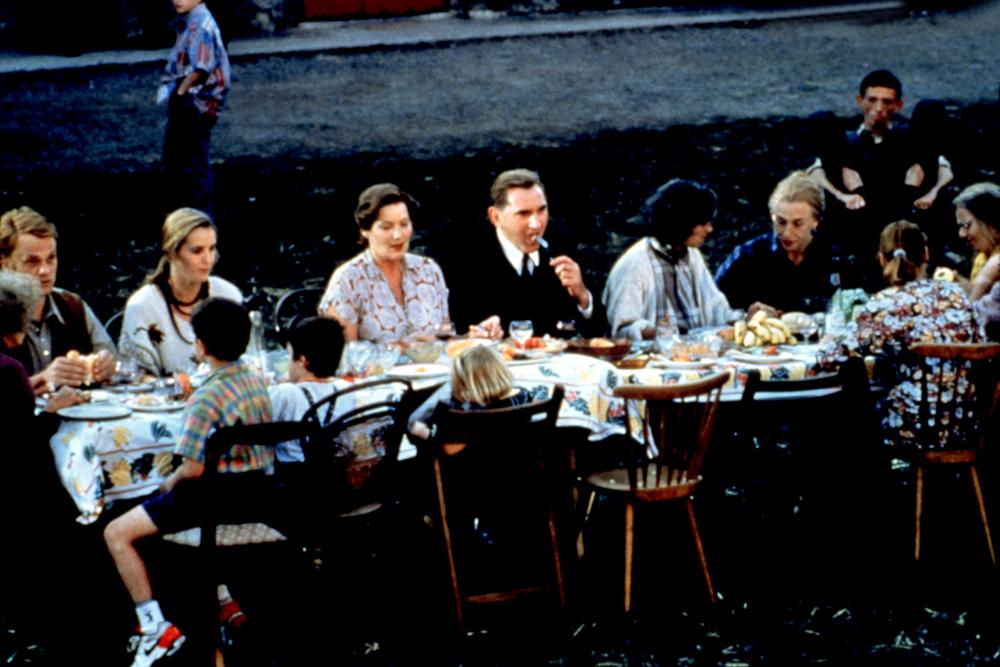 Antonia is the matriarch of an extended family: her daughter, child, and partner, her friends, and castoffs who need a home. Each year, a long table is set in the barnyard for the extended family to picnic. See Marleen Gorris. Antonia’s Line (1995). Screenplay by...
Antonia is the matriarch of an extended family: her daughter, child, and partner, her friends, and castoffs who need a home. Each year, a long table is set in the barnyard for the extended family to picnic. See Marleen Gorris. Antonia’s Line (1995). Screenplay by...
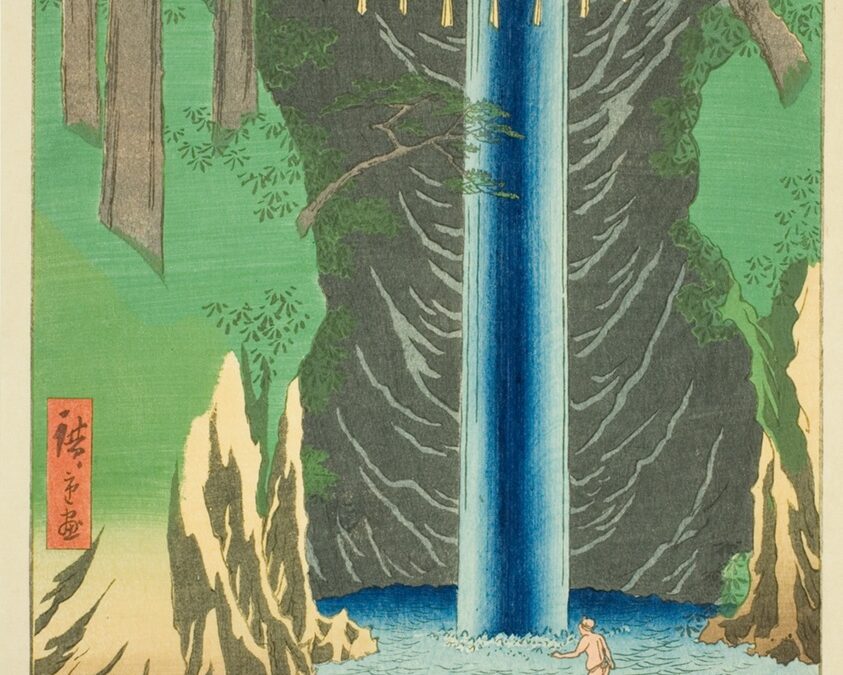 The Fūdo Falls is known for its spiritual and curative powers. A rope with tassels marks a sacred Shinto space. It’s among the most well-known scenic waterfalls in Japan. ButHiroshige’s vision of the falls is his own. Picnickers sit at a table below the falls. In the...
The Fūdo Falls is known for its spiritual and curative powers. A rope with tassels marks a sacred Shinto space. It’s among the most well-known scenic waterfalls in Japan. ButHiroshige’s vision of the falls is his own. Picnickers sit at a table below the falls. In the...
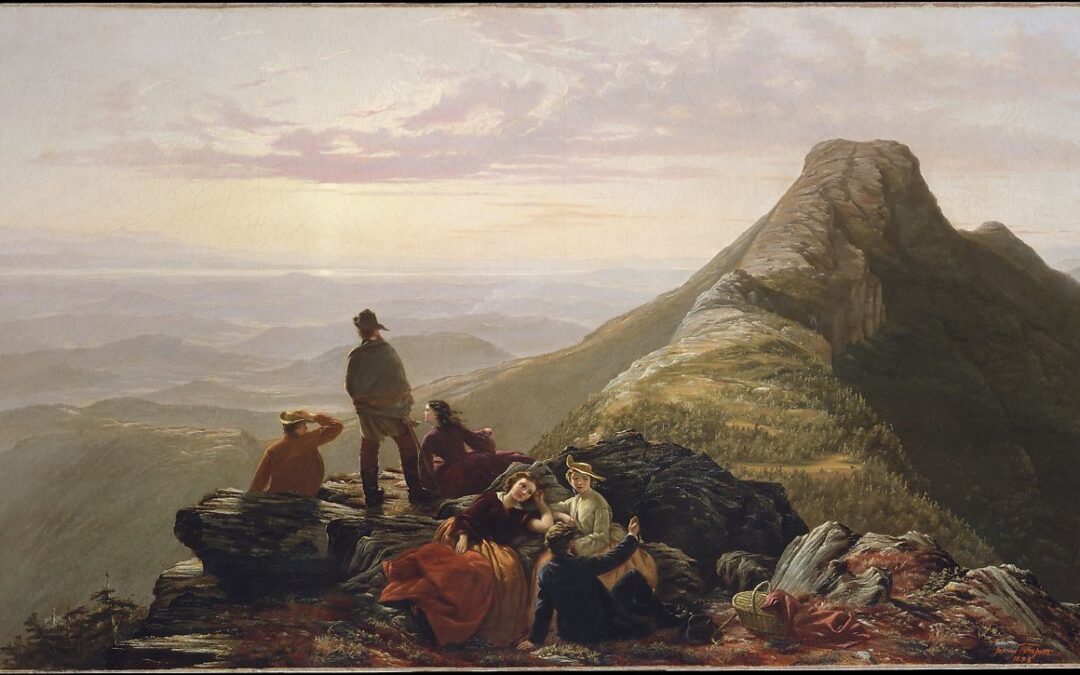 Six hikers have reached a plateau near Mansfield Mountain’s top and are ready to picnic just before sunset. Thompson titled the painting a Belated Party to provide tension, and we wonder if the picnickers will safely walk down the 4400-foot mountain in the...
Six hikers have reached a plateau near Mansfield Mountain’s top and are ready to picnic just before sunset. Thompson titled the painting a Belated Party to provide tension, and we wonder if the picnickers will safely walk down the 4400-foot mountain in the...
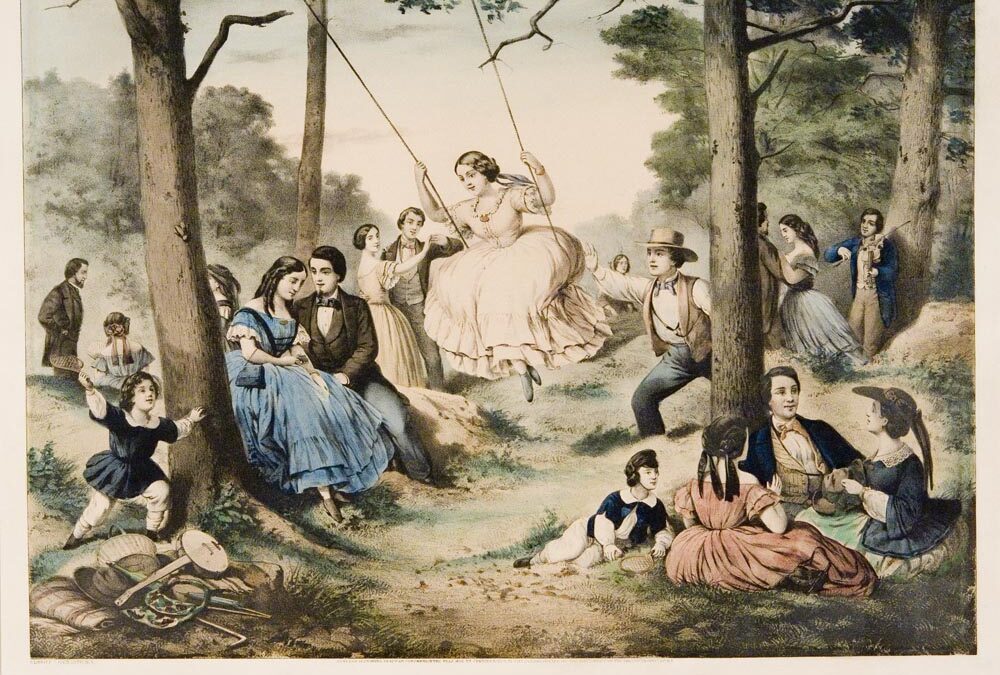 Nathaniel Currier and James Merritt Ives’ lithographs The Pic-Nic Party and The Childrens Pic-Nic are picnics without food or drink. In The Pic-Nic Party, the central figure is a woman on a swing pushed by a young man, probably her beau. Just in front of her is a...
Exalting himself as a star hunter, “un homme libre,” or free man, Courbet painted himself in the center of Le Repas de chasse. Many luncheons, repas de chasse, were already painted by Watteau, Van Loo, De Troyes, and others, but their aristocratic...
Picnicking in the Woods. Harper’s Weekly, Vol. II, September 4, 1858. Woodblock
Nathaniel Currier and James Merritt Ives’ lithographs The Pic-Nic Party and The Childrens Pic-Nic are picnics without food or drink. In The Pic-Nic Party, the central figure is a woman on a swing pushed by a young man, probably her beau. Just in front of her is a...
Exalting himself as a star hunter, “un homme libre,” or free man, Courbet painted himself in the center of Le Repas de chasse. Many luncheons, repas de chasse, were already painted by Watteau, Van Loo, De Troyes, and others, but their aristocratic...
Picnicking in the Woods. Harper’s Weekly, Vol. II, September 4, 1858. Woodblock
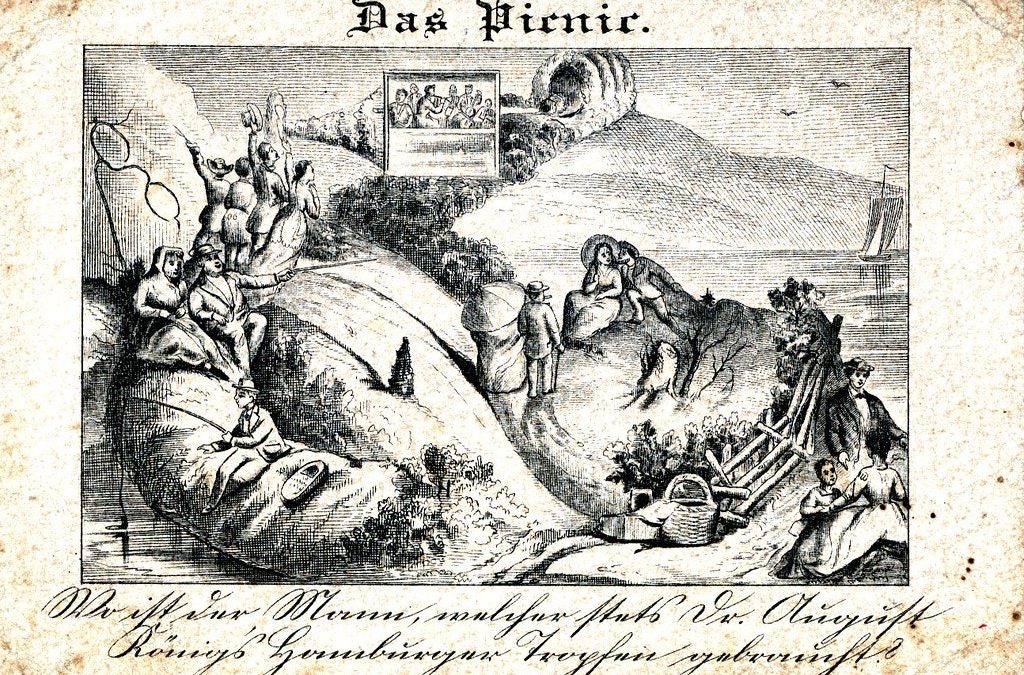 “Das Picnic” is an advertisement for Hamburger Tropfen, Dr. August König’s patent medicine, written in German by an American company in New Castle, Wisconsin. The ad’s image is a picture puzzle, and the legend is “Wo ist der Mann, welcher stets...
“Das Picnic” is an advertisement for Hamburger Tropfen, Dr. August König’s patent medicine, written in German by an American company in New Castle, Wisconsin. The ad’s image is a picture puzzle, and the legend is “Wo ist der Mann, welcher stets...
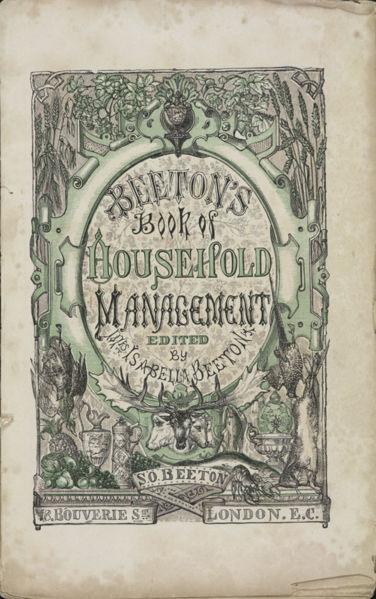 Beeton’s picnic entry appears almost as an afterthought in the last chapter of Household Management. As with other formal dinner suggestions, the picnic is not a casual affair but a staged “dinner held in the “rough.” Where Beeton situates...
Beeton’s picnic entry appears almost as an afterthought in the last chapter of Household Management. As with other formal dinner suggestions, the picnic is not a casual affair but a staged “dinner held in the “rough.” Where Beeton situates...
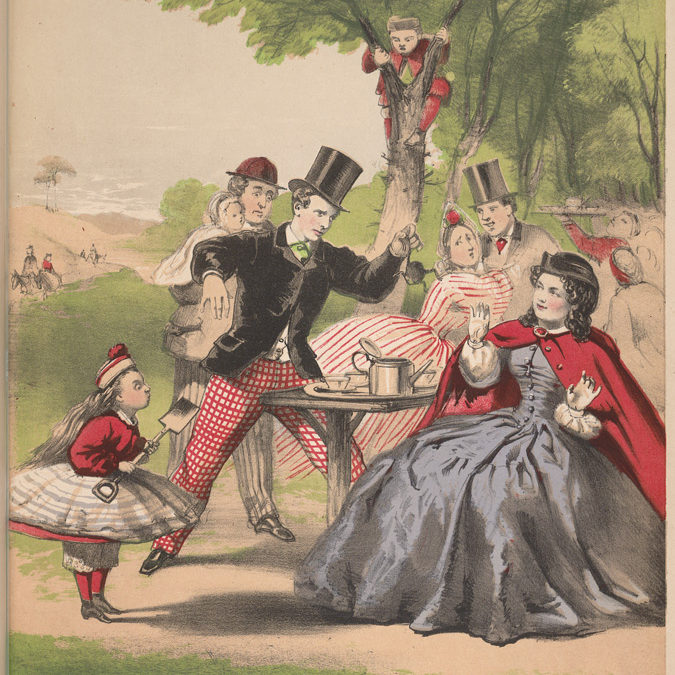 Williams’s Popular Song Hampstead Is the Place to Ruralise Hampstead Is the Place to Ruralise, All on a Summer Day (1861) is a comic hymn dedicated to the pleasures of Hampstead Heath. The euphemism “ruralizing,” like gypsying, had been in use since...
Williams’s Popular Song Hampstead Is the Place to Ruralise Hampstead Is the Place to Ruralise, All on a Summer Day (1861) is a comic hymn dedicated to the pleasures of Hampstead Heath. The euphemism “ruralizing,” like gypsying, had been in use since...
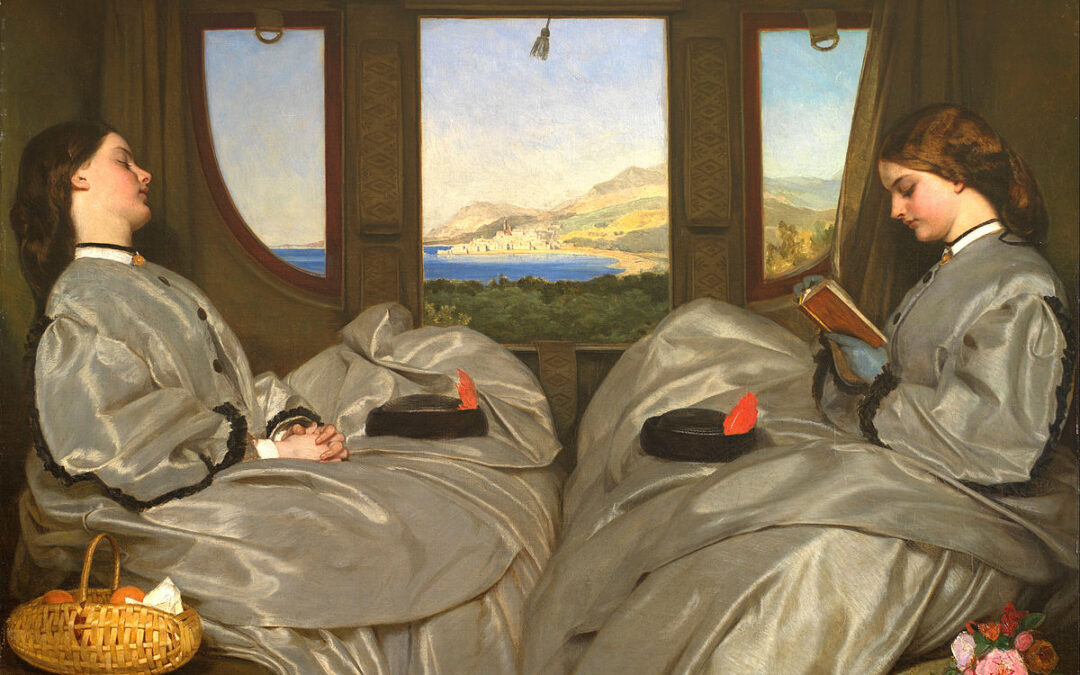 Egg‘s Traveling Companions is a testimony of the ease and comfort of train travel. The two elegantly dressed women, virtually mirroring images of each other, sit without even looking out of the window at the long view of the shoreline beyond. One reads the other...
Egg‘s Traveling Companions is a testimony of the ease and comfort of train travel. The two elegantly dressed women, virtually mirroring images of each other, sit without even looking out of the window at the long view of the shoreline beyond. One reads the other...
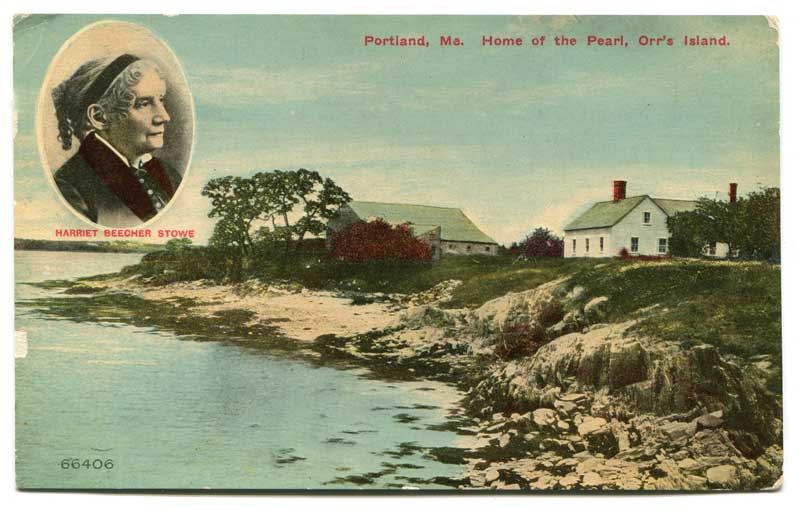 Stowe’s The Pearl of Orr’s Island, published ten years after Uncle Tom’s Cabin (1852), is a story of the people who speak in the vernacular of Maine, on the road to the Kennebec, below the town of Bath. Its basis is Shakespeare’s The Tempest,...
Stowe’s The Pearl of Orr’s Island, published ten years after Uncle Tom’s Cabin (1852), is a story of the people who speak in the vernacular of Maine, on the road to the Kennebec, below the town of Bath. Its basis is Shakespeare’s The Tempest,...
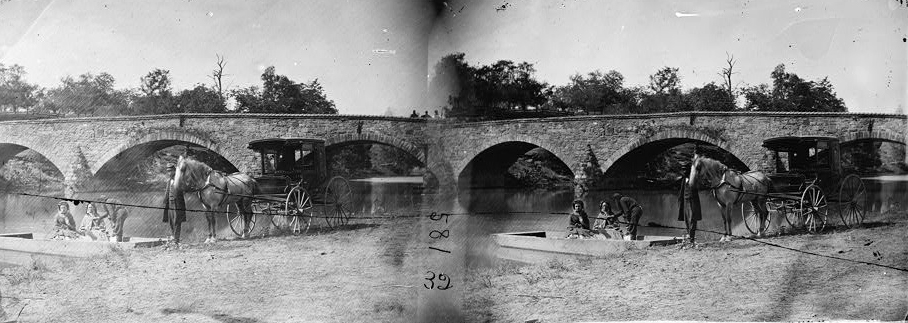 Gardener’s A Pic-Nic Party is set in a skiff on the shore of Antietam Creek. He thought it was an apt allusion to the cliché “War is not a Picnic,” but when published, no one noticed. It dropped from sight, lost in more dramatic images in...
Gardener’s A Pic-Nic Party is set in a skiff on the shore of Antietam Creek. He thought it was an apt allusion to the cliché “War is not a Picnic,” but when published, no one noticed. It dropped from sight, lost in more dramatic images in...
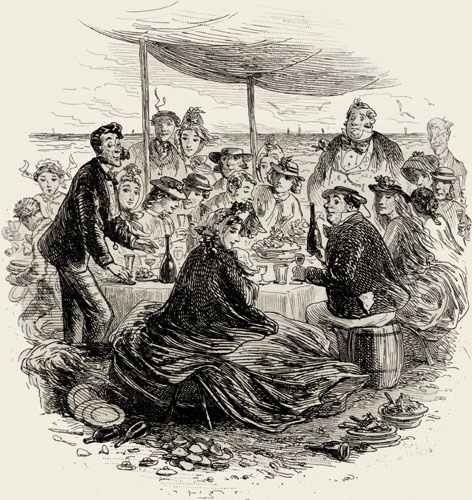 Trollope’s beach picnic in Can You Forgive Her (1864) is highlighted with a stern warning: “Yarmouth is not a happy place for a picnic. A picnic should be held among green things. Green turf is absolutely essential. There should be, if possible, rocks, old...
Trollope’s beach picnic in Can You Forgive Her (1864) is highlighted with a stern warning: “Yarmouth is not a happy place for a picnic. A picnic should be held among green things. Green turf is absolutely essential. There should be, if possible, rocks, old...
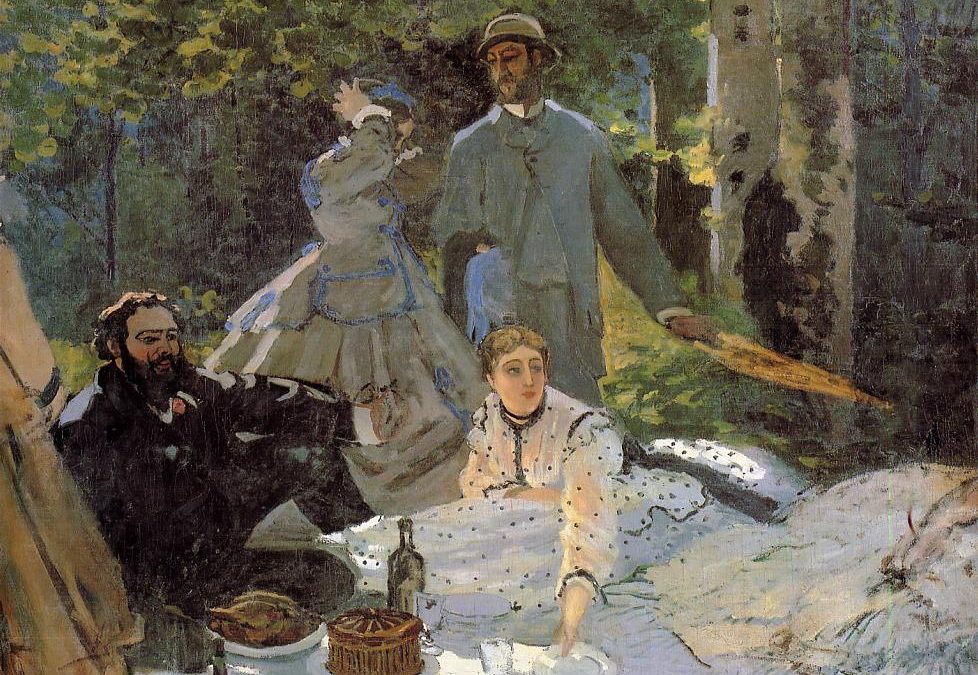 Monet responded to Manet’s Le déjeuner sur l’herbe his painting in 1865 but left it uncompleted. Unlike Manet, who painted in the studio, Monet painted outdoors. This presented logistical problems because his picnic was to be monumental, approximately 15 x 20...
Monet responded to Manet’s Le déjeuner sur l’herbe his painting in 1865 but left it uncompleted. Unlike Manet, who painted in the studio, Monet painted outdoors. This presented logistical problems because his picnic was to be monumental, approximately 15 x 20...
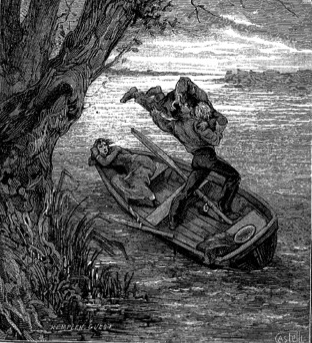 Thérèse Raquin and her lover Laurent Le Claire murder her husband Camille at a picnic. It’s a pivotal episode, proving Zola’s contention that people acting out the “fatalities of their flesh” become brutes humaines. Everything about this picnic...
Thérèse Raquin and her lover Laurent Le Claire murder her husband Camille at a picnic. It’s a pivotal episode, proving Zola’s contention that people acting out the “fatalities of their flesh” become brutes humaines. Everything about this picnic...
 Zola’s Madeleine Férat is dedicated to Édouard Manet. Defying the critical mainstream, Zola accepted Manet’s visual realism and his frank sensualism of Le déjeuner sur l’herbe and Olympia, which Zola defended against adverse criticism. Zola’s...
Zola’s Madeleine Férat is dedicated to Édouard Manet. Defying the critical mainstream, Zola accepted Manet’s visual realism and his frank sensualism of Le déjeuner sur l’herbe and Olympia, which Zola defended against adverse criticism. Zola’s...
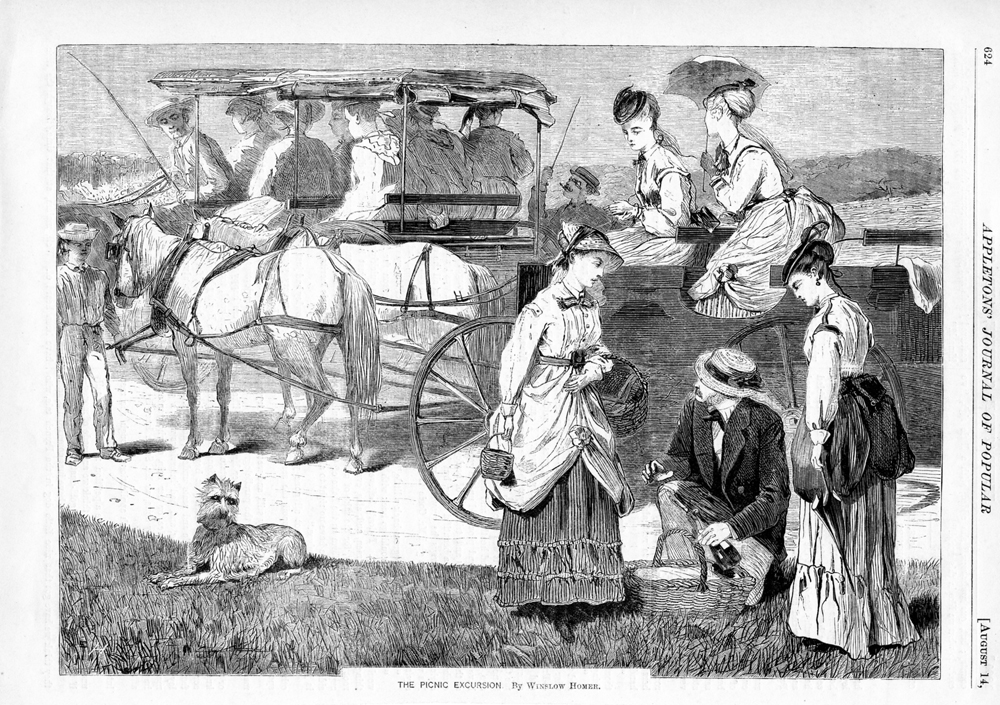 When Appleton’s Journal commissioned Winslow Homer to illustrate a short essay, “Picnic Excursions,” it’s unclear if he ever read the text, partly because he titled his composition The Picnic Excursion. Perhaps he considered that picnics are...
When Appleton’s Journal commissioned Winslow Homer to illustrate a short essay, “Picnic Excursions,” it’s unclear if he ever read the text, partly because he titled his composition The Picnic Excursion. Perhaps he considered that picnics are...
 James Jacques Joseph Tissot’s La Partie carrée, aka The Foursome, is more sexually suggestive than the English title indicates. The French title Partie Carrée suggests a sexual tryst and alludes to Édouard Manet’s The Luncheon on the Grass (1863)....
James Jacques Joseph Tissot’s La Partie carrée, aka The Foursome, is more sexually suggestive than the English title indicates. The French title Partie Carrée suggests a sexual tryst and alludes to Édouard Manet’s The Luncheon on the Grass (1863)....
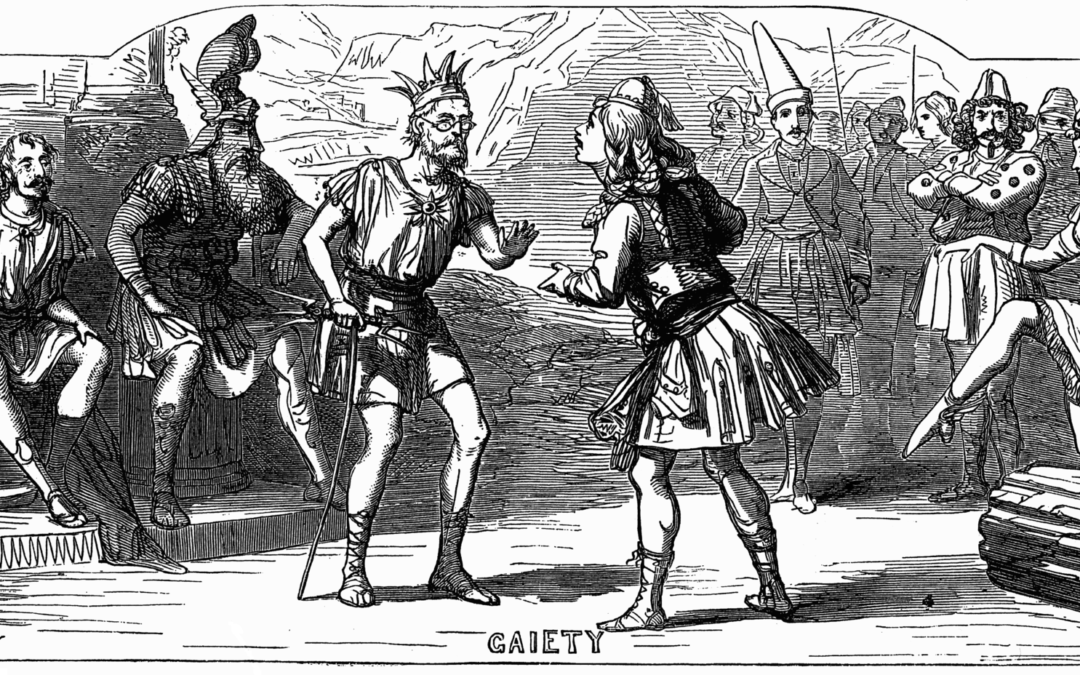 Gilbert and Sullivan’s Thespis or the Gods Grown Old is an early collaboration and not one of their best. It’s a topsy-turvy derivative version of Jacques Offenbach’s operetta Orpheus in the Underworld or Orphée aux envers. Instead of comedy in the...
Gilbert and Sullivan’s Thespis or the Gods Grown Old is an early collaboration and not one of their best. It’s a topsy-turvy derivative version of Jacques Offenbach’s operetta Orpheus in the Underworld or Orphée aux envers. Instead of comedy in the...
 For London: A Pilgrimage, Doré and Jerrold visited Epsom in 1869 to experience the tumult of Derby-Day— the race, the carnival atmosphere, and picnic luncheons on carriage tops. Unlike William Powell Frith’s The Derby Day, Dore and Jerrold were keen to exploit...
For London: A Pilgrimage, Doré and Jerrold visited Epsom in 1869 to experience the tumult of Derby-Day— the race, the carnival atmosphere, and picnic luncheons on carriage tops. Unlike William Powell Frith’s The Derby Day, Dore and Jerrold were keen to exploit...
 Majális is Merse’s staid Hungarian middle-class-style homage to Manet’s Dejeuner sur L’herbe. Though this is obviously a picnic, the title means “Mayfair.” Merse does not use the Hungarian loanword piknik or the expression jó s Majális zórakozás, a pleasant amusement...
Majális is Merse’s staid Hungarian middle-class-style homage to Manet’s Dejeuner sur L’herbe. Though this is obviously a picnic, the title means “Mayfair.” Merse does not use the Hungarian loanword piknik or the expression jó s Majális zórakozás, a pleasant amusement...
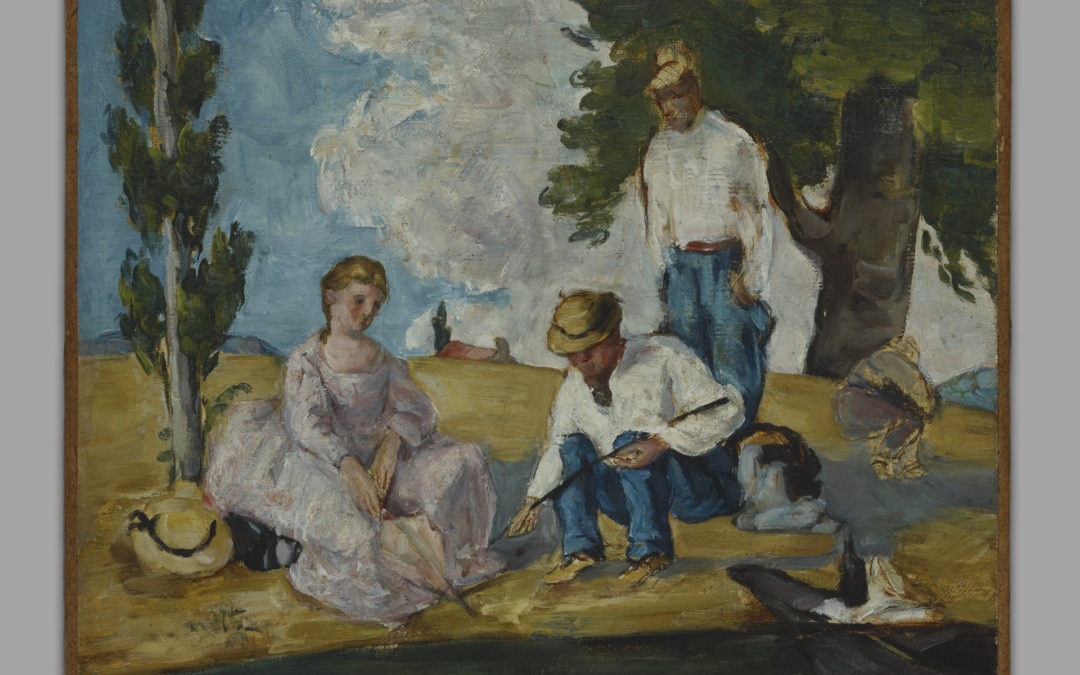 Cezanne’s Picnic on a Riverbank (1873-1874) is a partie de campagne that may be a vague allusion to Manet’s Luncheon on the Grass (1863) A trio of two men and a woman congregate on the riverbank. The woman sits alone, hat off, her parasol between her legs....
Cezanne’s Picnic on a Riverbank (1873-1874) is a partie de campagne that may be a vague allusion to Manet’s Luncheon on the Grass (1863) A trio of two men and a woman congregate on the riverbank. The woman sits alone, hat off, her parasol between her legs....
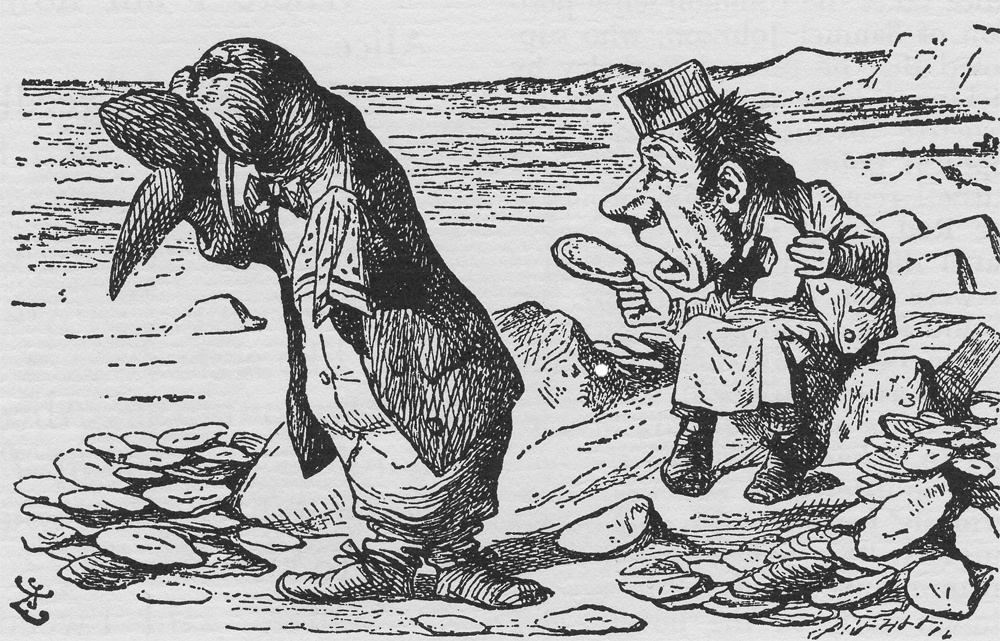 Carroll upends beach picnic expectations in Through the Looking-Glass and What Alice Found There (1871). Still, its tenor is darkly mocking, qualities evident in Tweedledee’s poem “The Walrus and the Carpenter” Of course, everyone laughs at the silly...
Carroll upends beach picnic expectations in Through the Looking-Glass and What Alice Found There (1871). Still, its tenor is darkly mocking, qualities evident in Tweedledee’s poem “The Walrus and the Carpenter” Of course, everyone laughs at the silly...
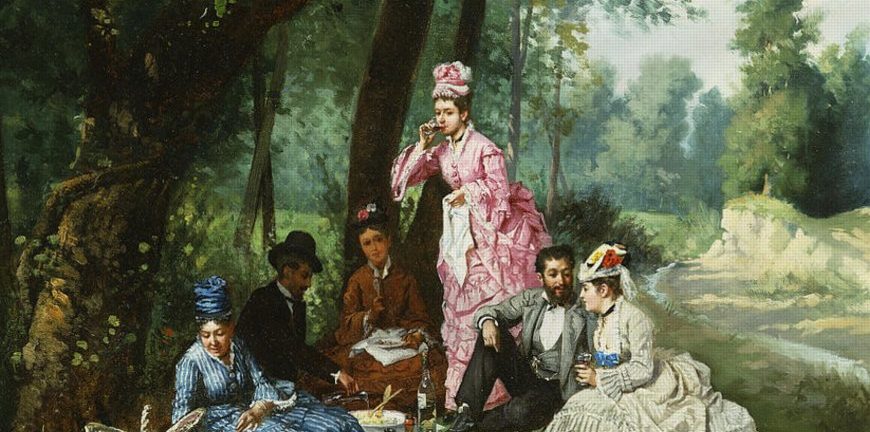 Garcia Mencia’s middle-class picnickers have out to the country for afternoon lunch. They are well provisioned. Compare Garica Mencía’s La merienda with Pál Szinyei Merse’s Majális (1873). See Antonio Garcia Mencía. La Merienda (1874). Oil on...
Garcia Mencia’s middle-class picnickers have out to the country for afternoon lunch. They are well provisioned. Compare Garica Mencía’s La merienda with Pál Szinyei Merse’s Majális (1873). See Antonio Garcia Mencía. La Merienda (1874). Oil on...
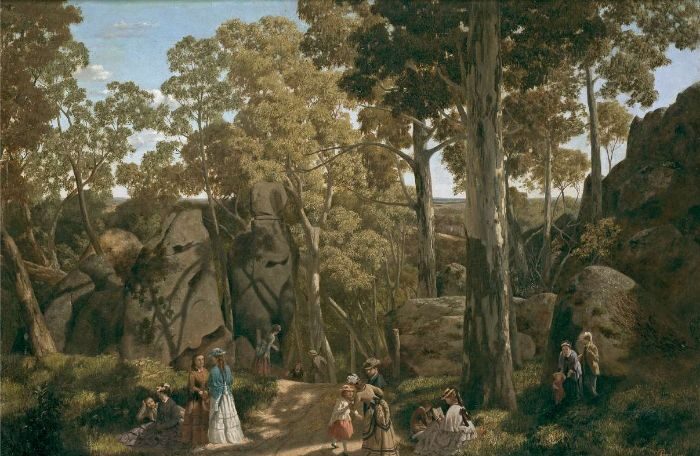 Ford’s painting At Hanging Rock of sightseers picnicking is an inspiration to Lindsay’s novel Picnic at Hanging Rock (1967). The picnickers are middle class and dressed in everyday clothing that is ill-suited to the country locale. They walk, converse, read, and...
Ford’s painting At Hanging Rock of sightseers picnicking is an inspiration to Lindsay’s novel Picnic at Hanging Rock (1967). The picnickers are middle class and dressed in everyday clothing that is ill-suited to the country locale. They walk, converse, read, and...
 Becky Sharp’s “pic-nic” begins with “a giddy and rollicking company” on an island in the Mississippi. After traveling by old ferryboat three miles below the town of Hannibal, the picnickers “swarmed ashore and soon the forest distances and craggy heights echoed...
Becky Sharp’s “pic-nic” begins with “a giddy and rollicking company” on an island in the Mississippi. After traveling by old ferryboat three miles below the town of Hannibal, the picnickers “swarmed ashore and soon the forest distances and craggy heights echoed...
![James [Jacques]Tissot Holyday (1876c.)](https://picnicwit.com/wp-content/uploads/2017/04/James-Jaques-Tissot.-Holyday-1109-1080x675.jpg) The epitome of a Victorian picnic is Tissot’s Holyday. Tissot arranged a picnic of a family and friends in the garden of his home in St. John Woods. They sit beside a sparkling white cloth, china, flatware, a cake, sliced cheese on a platter, a platter of grapes, tea,...
The epitome of a Victorian picnic is Tissot’s Holyday. Tissot arranged a picnic of a family and friends in the garden of his home in St. John Woods. They sit beside a sparkling white cloth, china, flatware, a cake, sliced cheese on a platter, a platter of grapes, tea,...
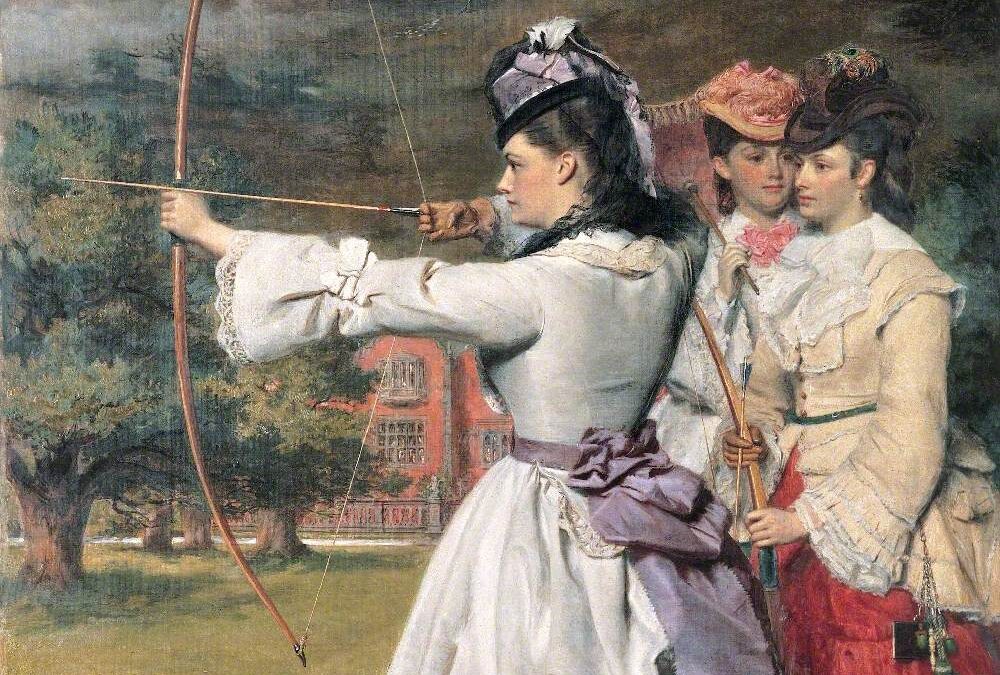 Eliot uses sport to illustrate gender relationships. Daniel Deronda has two archery picnics that do not meet the usual expectations of being joyous. Both archery picnics are metaphors in which Gwendolyn Harleth and the other women archers are contrasted to the goddess...
Eliot uses sport to illustrate gender relationships. Daniel Deronda has two archery picnics that do not meet the usual expectations of being joyous. Both archery picnics are metaphors in which Gwendolyn Harleth and the other women archers are contrasted to the goddess...
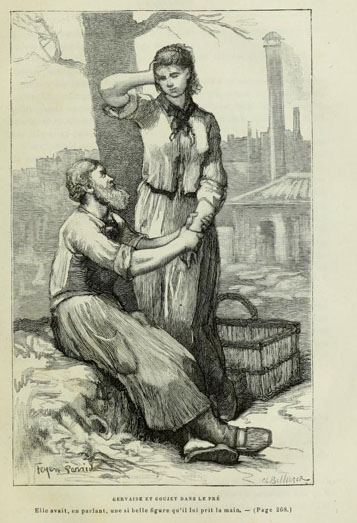 Zola’s pique-nique at the Moulin-d’argent [Silver Windmill] is not a picnic in our contemporary sense. According to French usage, it was a style of dining indoors. When Gervaise Macquart and Coupeau host their wedding party, each guest is expected to pay a...
Zola’s pique-nique at the Moulin-d’argent [Silver Windmill] is not a picnic in our contemporary sense. According to French usage, it was a style of dining indoors. When Gervaise Macquart and Coupeau host their wedding party, each guest is expected to pay a...
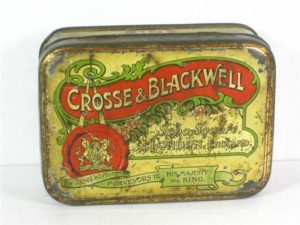 Picnic Ham is a staple cut of pork that’s cheap and needs extensive cooking or smoking. It is sometimes retailed as a picnic shoulder or pork shoulder since it is the entire front leg and shoulder. Retailers cut the meat in two, about six pounds, and may call it...
Picnic Ham is a staple cut of pork that’s cheap and needs extensive cooking or smoking. It is sometimes retailed as a picnic shoulder or pork shoulder since it is the entire front leg and shoulder. Retailers cut the meat in two, about six pounds, and may call it...
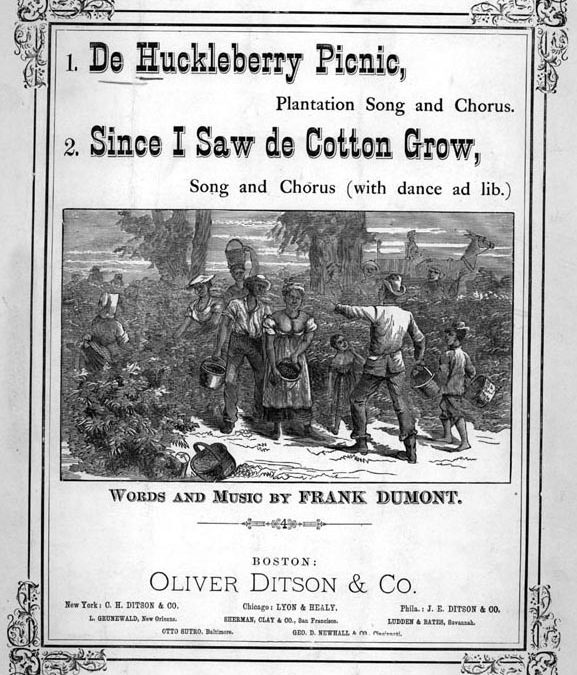 Dumont was not African American. But he was among the most influential vaudeville minstrel players, playwrights, and songwriters of the 19th century. The Witmark Amateur Minstrel Guide, which he published in 1899, was a standard primer for minstrelsy. “De...
Dumont was not African American. But he was among the most influential vaudeville minstrel players, playwrights, and songwriters of the 19th century. The Witmark Amateur Minstrel Guide, which he published in 1899, was a standard primer for minstrelsy. “De...
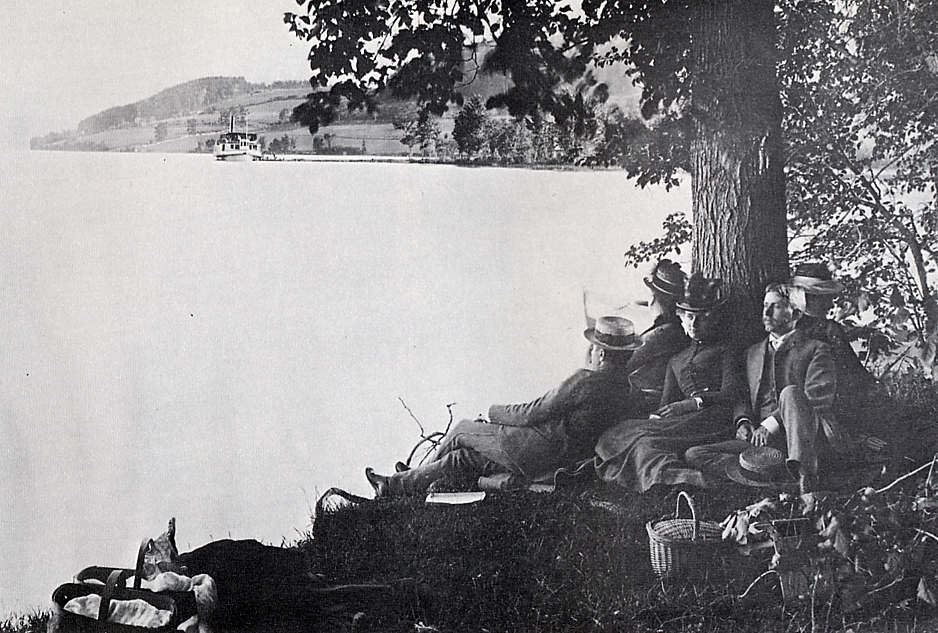 Dakin’s photographs are a record of the family in the 1880s and early 1890s in Cherry Valley, Otsego County, New York According to Pauline Dakin Taft,the family “had a passion for picnics. There were picnics all the time at any time of day. Perhaps the lake was a...
Dakin’s photographs are a record of the family in the 1880s and early 1890s in Cherry Valley, Otsego County, New York According to Pauline Dakin Taft,the family “had a passion for picnics. There were picnics all the time at any time of day. Perhaps the lake was a...
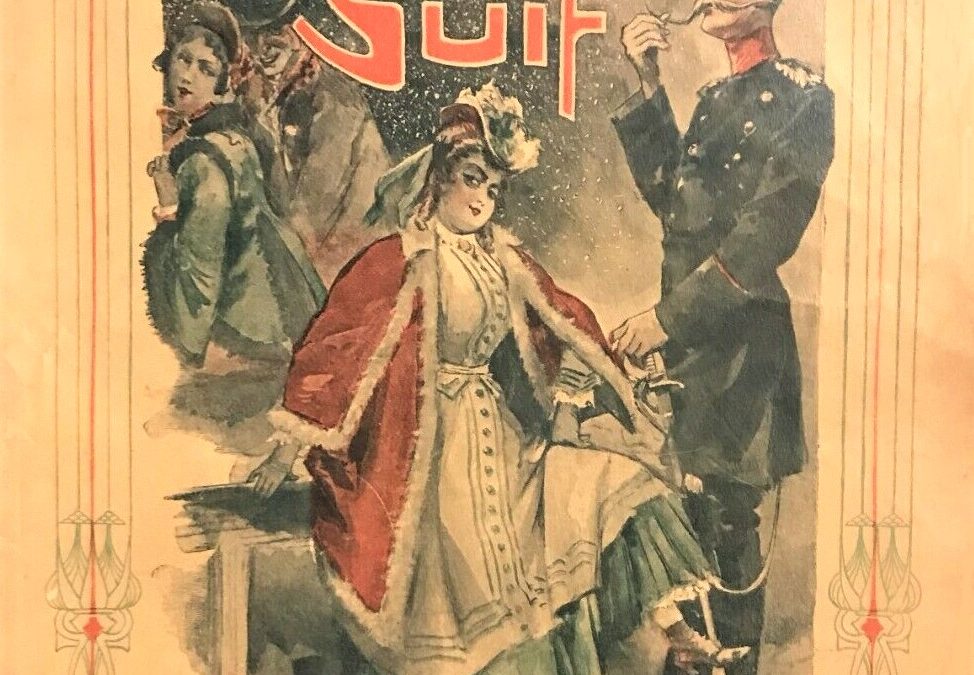 De Maupassant knows that the picnic of this story is not the picnic you expect. Instead of grass, the setting is s a four-horse coach carrying ten passengers fleeing the Prussian army advancing on Rouen for safety at Le Havre. Instead of being congenial, all but one...
De Maupassant knows that the picnic of this story is not the picnic you expect. Instead of grass, the setting is s a four-horse coach carrying ten passengers fleeing the Prussian army advancing on Rouen for safety at Le Havre. Instead of being congenial, all but one...
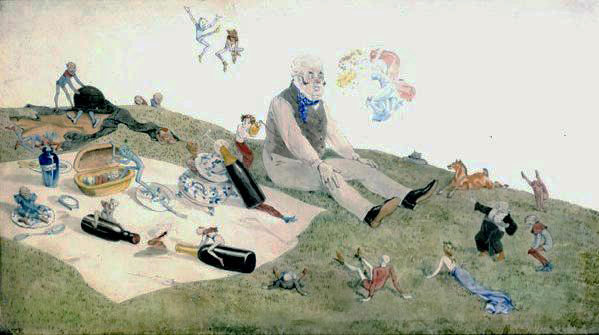 Altamont’s The Enchanted Picnic (1882) is a sad picnic that is neither enchanted nor pleasurable. The picnicker, perhaps Doyle himself, having finished four bottles of wine and champagne, is pleasantly suffering delirium tremens. Instead of monsters, the drunk...
Altamont’s The Enchanted Picnic (1882) is a sad picnic that is neither enchanted nor pleasurable. The picnicker, perhaps Doyle himself, having finished four bottles of wine and champagne, is pleasantly suffering delirium tremens. Instead of monsters, the drunk...
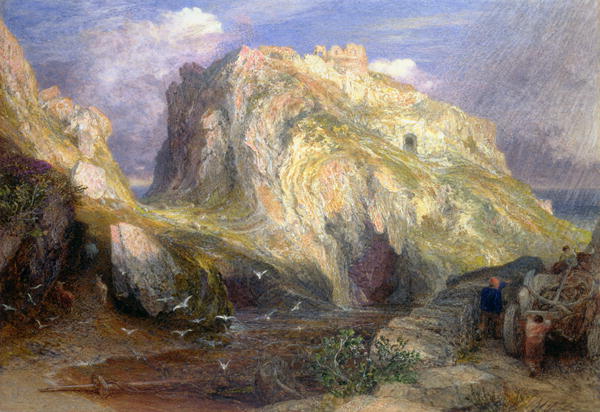 Tintagel Castle and its Arthurian associations have perennial romantic appeal—but Mary Elizabeth Braddon is the first to fictionalize a picnic on the crag, and it’s her addition to Britain’s mythology. With lunch from a local inn, Christabel Courtnay,...
Tintagel Castle and its Arthurian associations have perennial romantic appeal—but Mary Elizabeth Braddon is the first to fictionalize a picnic on the crag, and it’s her addition to Britain’s mythology. With lunch from a local inn, Christabel Courtnay,...
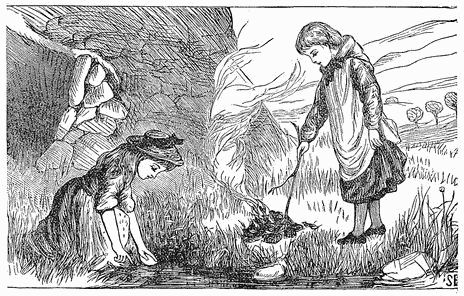 Greenaway’s primer for early readers is based on a series of adventures and activities for middle-class children with illustrations by Greenaway and text by Thomas Hartford. The story for “Moll and Jane’s Picnic” is a simple recipe for a...
Greenaway’s primer for early readers is based on a series of adventures and activities for middle-class children with illustrations by Greenaway and text by Thomas Hartford. The story for “Moll and Jane’s Picnic” is a simple recipe for a...
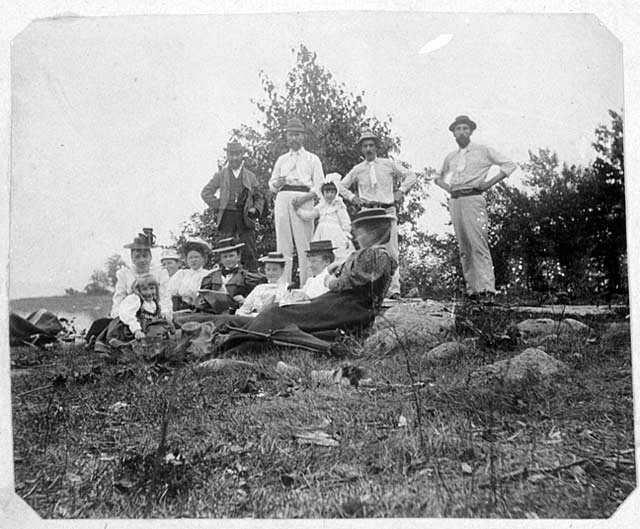 “People do all sorts of things at picnics” is Howells’s paradoxical foreshadowing of a love match that begins on a picnic on the rocky shore of the Bay of Fundy and then goes wrong. Though the picnickers are convivial, they mask their feelings, at...
“People do all sorts of things at picnics” is Howells’s paradoxical foreshadowing of a love match that begins on a picnic on the rocky shore of the Bay of Fundy and then goes wrong. Though the picnickers are convivial, they mask their feelings, at...
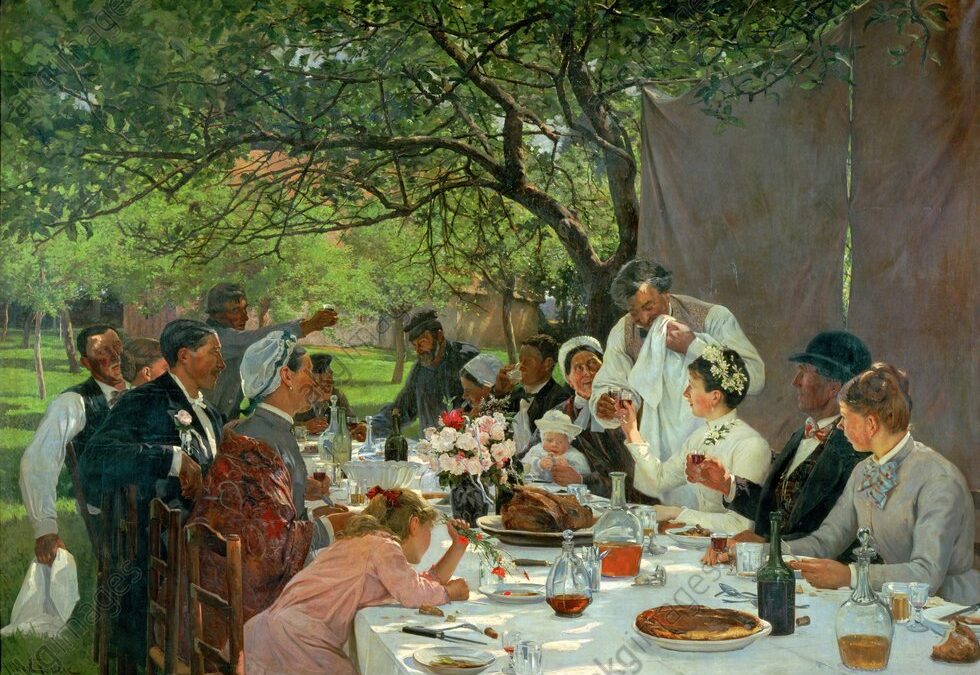 Unlike Gustave Flaubert’s wedding party in Madame Bovary (a town about fifty miles east), where decorum is flouted, drunkenness prevails, Fourie’s agricultural bourgeoisie is well-mannered, and etiquette is etiquette observed. * This is an intentional contrast. Even...
Unlike Gustave Flaubert’s wedding party in Madame Bovary (a town about fifty miles east), where decorum is flouted, drunkenness prevails, Fourie’s agricultural bourgeoisie is well-mannered, and etiquette is etiquette observed. * This is an intentional contrast. Even...
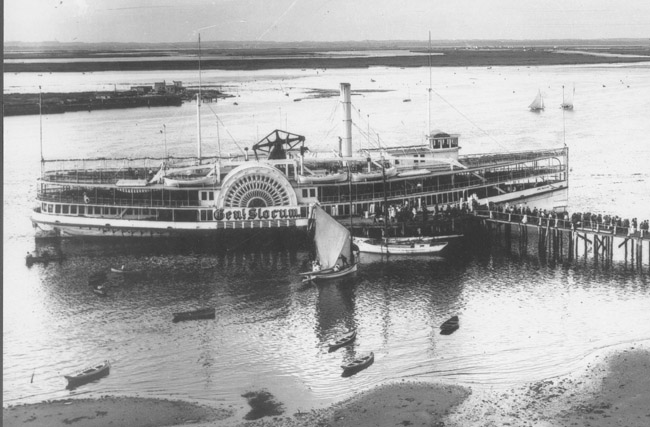 Searching for the joy and peace of a picnic doesn’t always mean it’s attainable. One thousand congregants of St. Mark’s Lutheran Church boarded General Slocum’s steamship at its birth on the East River in lower Manhattan and died. They expected...
Searching for the joy and peace of a picnic doesn’t always mean it’s attainable. One thousand congregants of St. Mark’s Lutheran Church boarded General Slocum’s steamship at its birth on the East River in lower Manhattan and died. They expected...
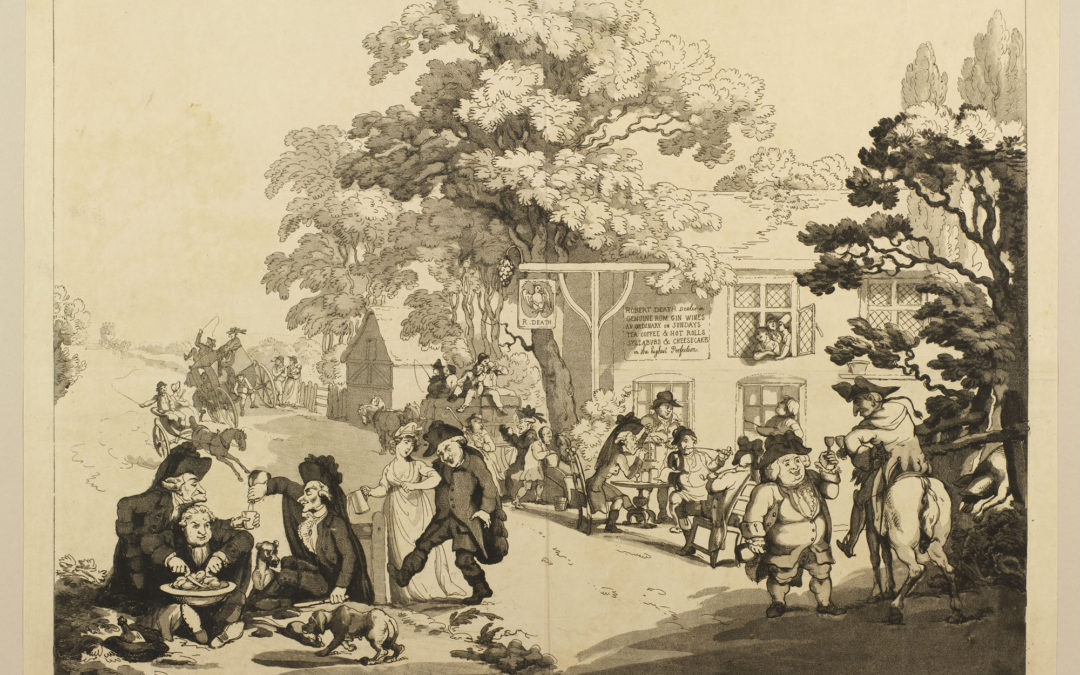 Toombs’s “The Undertakers’ Picnic,” a popular song of the 1890s, is doggerel: On the grass was spread a splendid dinner, Fit enough to please a saint or sinner, Not a soul of them grew any thinner When they took the...
Toombs’s “The Undertakers’ Picnic,” a popular song of the 1890s, is doggerel: On the grass was spread a splendid dinner, Fit enough to please a saint or sinner, Not a soul of them grew any thinner When they took the...
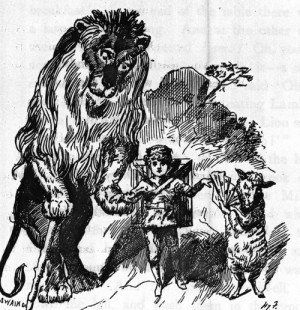 Carroll’s picnic in Sylvie and Bruno Concluded is mean-spirited. Carroll wanted to transcend Alice and get to issues of religion, society, and politics, narrated by the childish fairies Bruno (about 5) and Sylvie (about 9). “Bruno’s Picnic” and...
Carroll’s picnic in Sylvie and Bruno Concluded is mean-spirited. Carroll wanted to transcend Alice and get to issues of religion, society, and politics, narrated by the childish fairies Bruno (about 5) and Sylvie (about 9). “Bruno’s Picnic” and...
 Fontane’s take on adultery in Effi Briest is a long, long sad story hinging on a beach-picnic-love affair. At first, it’s a recreational outing for Effi Briest and a friend, Major von Crampas. But soon, the recreation becomes a cover for lust. Though...
Fontane’s take on adultery in Effi Briest is a long, long sad story hinging on a beach-picnic-love affair. At first, it’s a recreational outing for Effi Briest and a friend, Major von Crampas. But soon, the recreation becomes a cover for lust. Though...
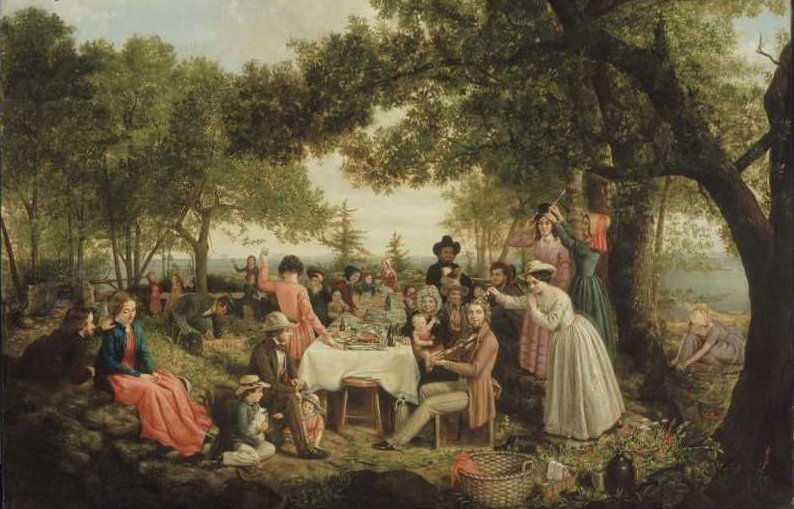 Jewett’s “The Reunion” and “The End of the Feast” are episodes describing the Bowden picnic reunion in Dunnet Landing, a fictional town in Maine. The Bowdens sit at long tables in a grove of trees overlooking the sea. It’s a festive...
Jewett’s “The Reunion” and “The End of the Feast” are episodes describing the Bowden picnic reunion in Dunnet Landing, a fictional town in Maine. The Bowdens sit at long tables in a grove of trees overlooking the sea. It’s a festive...
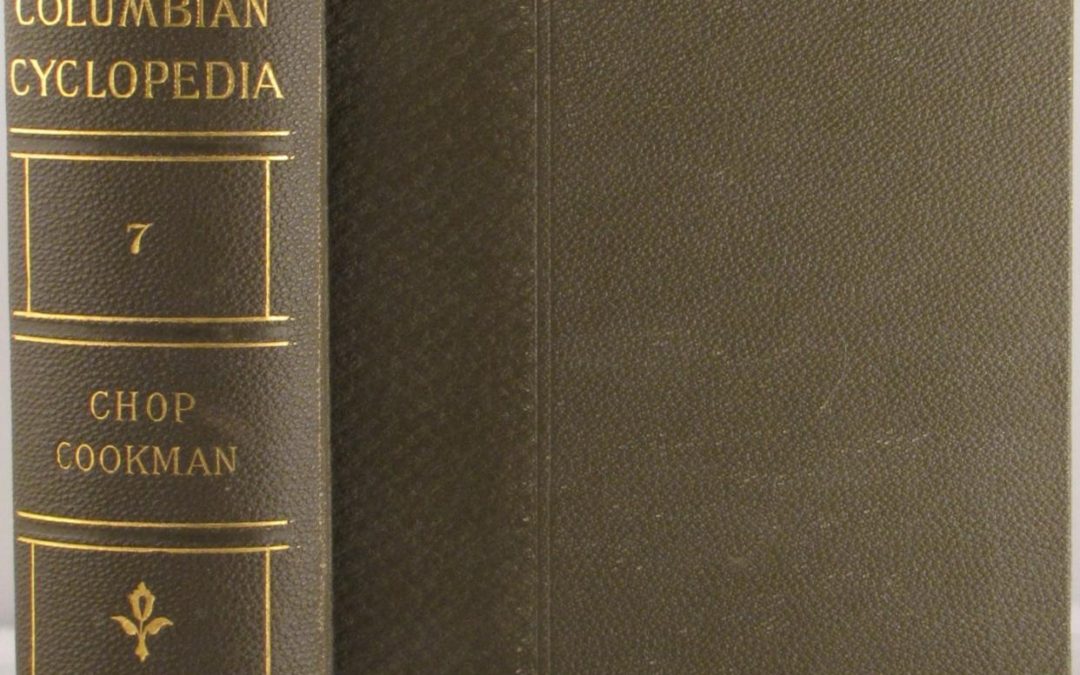 Confused etymology. The editors should have known better than to claim that the “F. pique-nique is derived from Eng. picnic, and not vice versa.” PICNIC, n. pik’nlk [Eng. pick, to eat by morsels; nick, the former familiar name of the tankard for...
Confused etymology. The editors should have known better than to claim that the “F. pique-nique is derived from Eng. picnic, and not vice versa.” PICNIC, n. pik’nlk [Eng. pick, to eat by morsels; nick, the former familiar name of the tankard for...
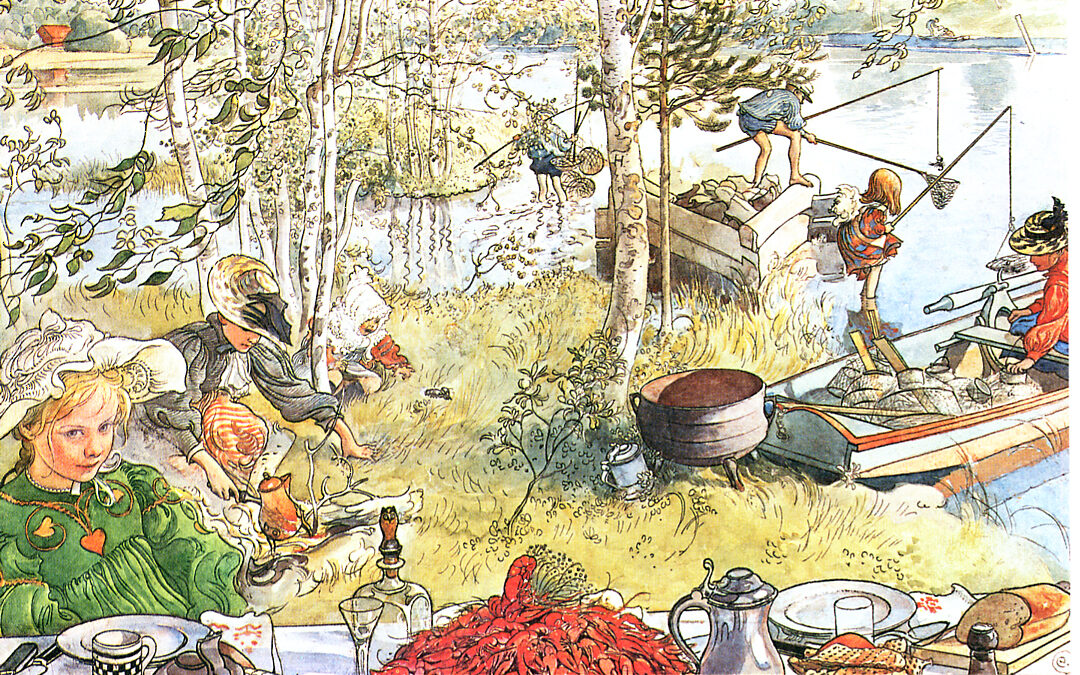 Larsson’s Crayfishing celebrates picnicking in late August when the crayfish are plentiful, the weather is temperate, and the days are very long. Larsson’s family scene shows the wholesomeness of family. In the immediate foreground, a child eyes the mounds of food on...
Larsson’s Crayfishing celebrates picnicking in late August when the crayfish are plentiful, the weather is temperate, and the days are very long. Larsson’s family scene shows the wholesomeness of family. In the immediate foreground, a child eyes the mounds of food on...
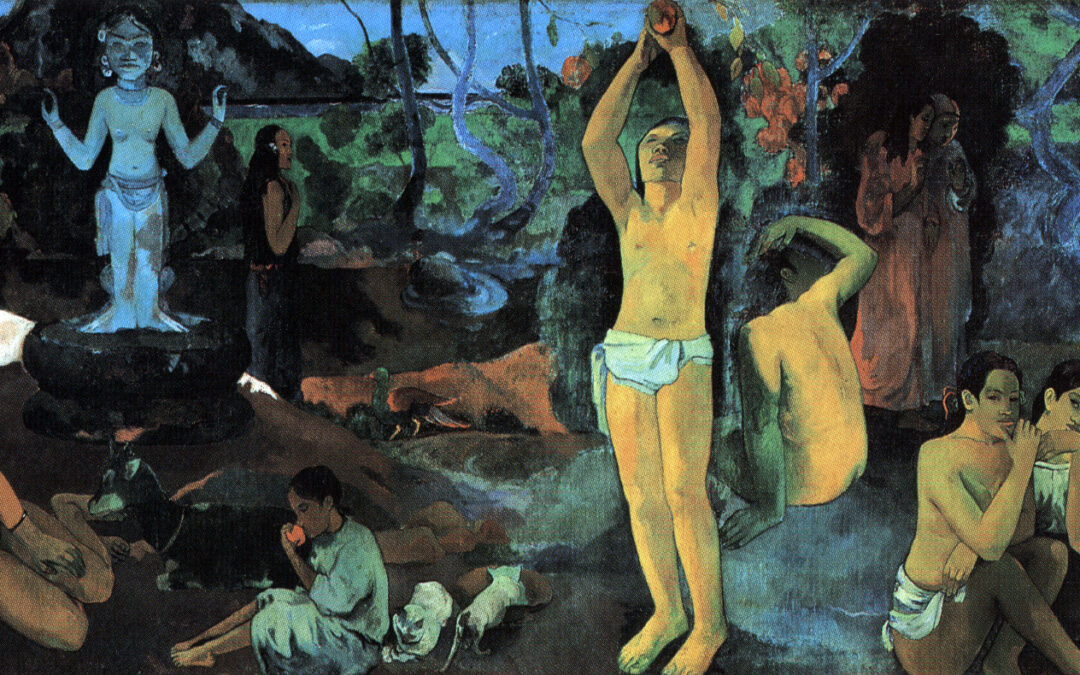 Gauguin’s Where Do We Come From? What Are We? Where Are We Going? Vague vaguely suggests a picnic. Escaped from France, Gauguin seemed to believe his Tahitian life was picnicky. “Everything in the landscape blinded me, dazzled me,” he wrote in the Noa Noa journal. It...
Gauguin’s Where Do We Come From? What Are We? Where Are We Going? Vague vaguely suggests a picnic. Escaped from France, Gauguin seemed to believe his Tahitian life was picnicky. “Everything in the landscape blinded me, dazzled me,” he wrote in the Noa Noa journal. It...
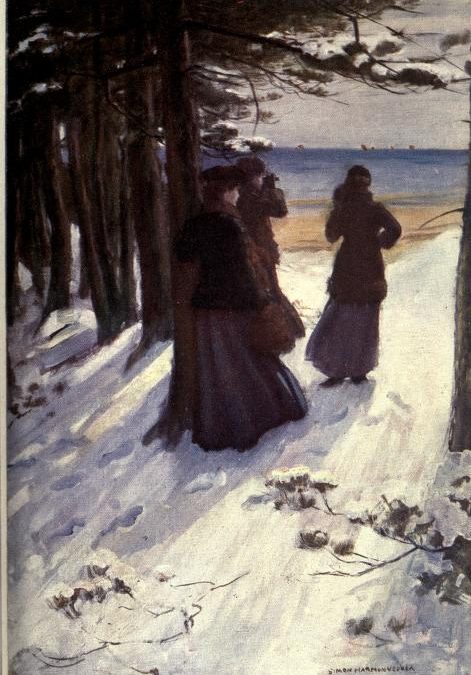 Winter picnics are few, and among the best is Elizabeth von Arnim’s on a freezing afternoon on a bluff above the Baltic. On a brilliant January day, Elizabeth’s birthday, she travels about three hours in a horse-drawn carriage over deep snow to a bluff...
Winter picnics are few, and among the best is Elizabeth von Arnim’s on a freezing afternoon on a bluff above the Baltic. On a brilliant January day, Elizabeth’s birthday, she travels about three hours in a horse-drawn carriage over deep snow to a bluff...
 Le Pique-Nique was probably not Toulouse-Lautrec’s title because the French did not use pique-nique for such a meal. The subject is the Pierrot, the sad-sack clown, with whom Lautrec identified as a man who does not get the genuine affection of the woman he loves....
Le Pique-Nique was probably not Toulouse-Lautrec’s title because the French did not use pique-nique for such a meal. The subject is the Pierrot, the sad-sack clown, with whom Lautrec identified as a man who does not get the genuine affection of the woman he loves....
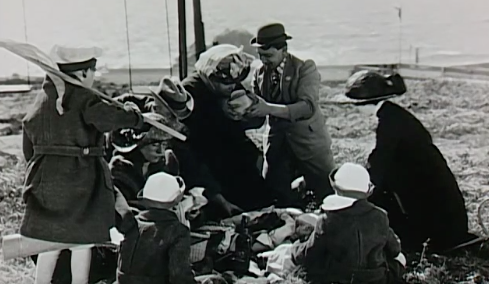 Norris’s picnic in McTeague is a moment of pleasure in a sad novel. McTeague’s courtship of Trina Sieppe intensifies at the Sieppe family’s Sunday picnic at Schuetzen Park. When Mrs. Sieppe asks him, “Don’t you think picnics are fine fun,...
Norris’s picnic in McTeague is a moment of pleasure in a sad novel. McTeague’s courtship of Trina Sieppe intensifies at the Sieppe family’s Sunday picnic at Schuetzen Park. When Mrs. Sieppe asks him, “Don’t you think picnics are fine fun,...
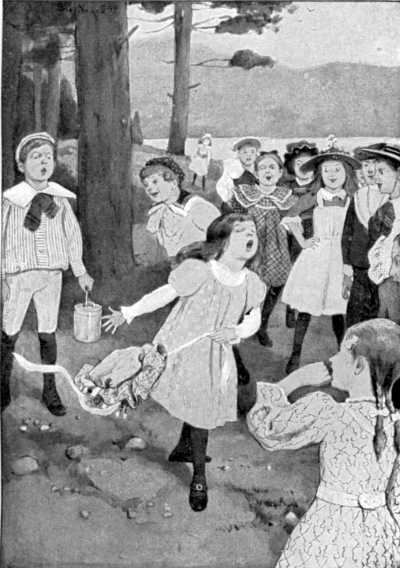 Stephen Crane’s Whilomville Stories were written in haste and provided ready money. Maggie, A Girl of the Streets, written when he was twenty-three years old, lacks the polish of Crane’s future writing. Maggie was self-published and made no money....
Stephen Crane’s Whilomville Stories were written in haste and provided ready money. Maggie, A Girl of the Streets, written when he was twenty-three years old, lacks the polish of Crane’s future writing. Maggie was self-published and made no money....
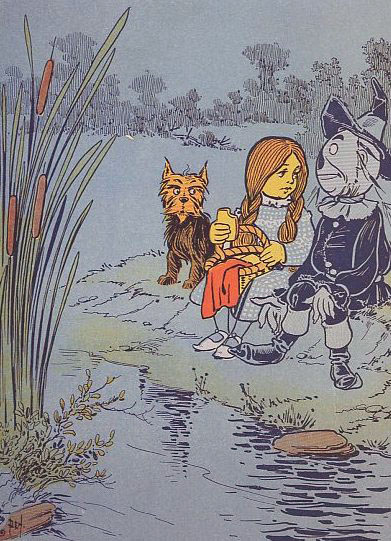 Have you ever noticed that when Dorothy says, “There’s no place like home,” she’s eating a picnic lunch? Dorothy has just left Munchkin Country and is on her way to the Emerald City of Oz in the company of the Strawman. Though her meal is a...
Have you ever noticed that when Dorothy says, “There’s no place like home,” she’s eating a picnic lunch? Dorothy has just left Munchkin Country and is on her way to the Emerald City of Oz in the company of the Strawman. Though her meal is a...
 Loudi’s storybook for girls is about a fairy who drives three girls from their farm to new places abroad in a magical flying automobile to the pyramids of the Madeira Islands, Constantinople. Loud is an author and illustrator Many stops Constantinople, Madeira See...
Loudi’s storybook for girls is about a fairy who drives three girls from their farm to new places abroad in a magical flying automobile to the pyramids of the Madeira Islands, Constantinople. Loud is an author and illustrator Many stops Constantinople, Madeira See...
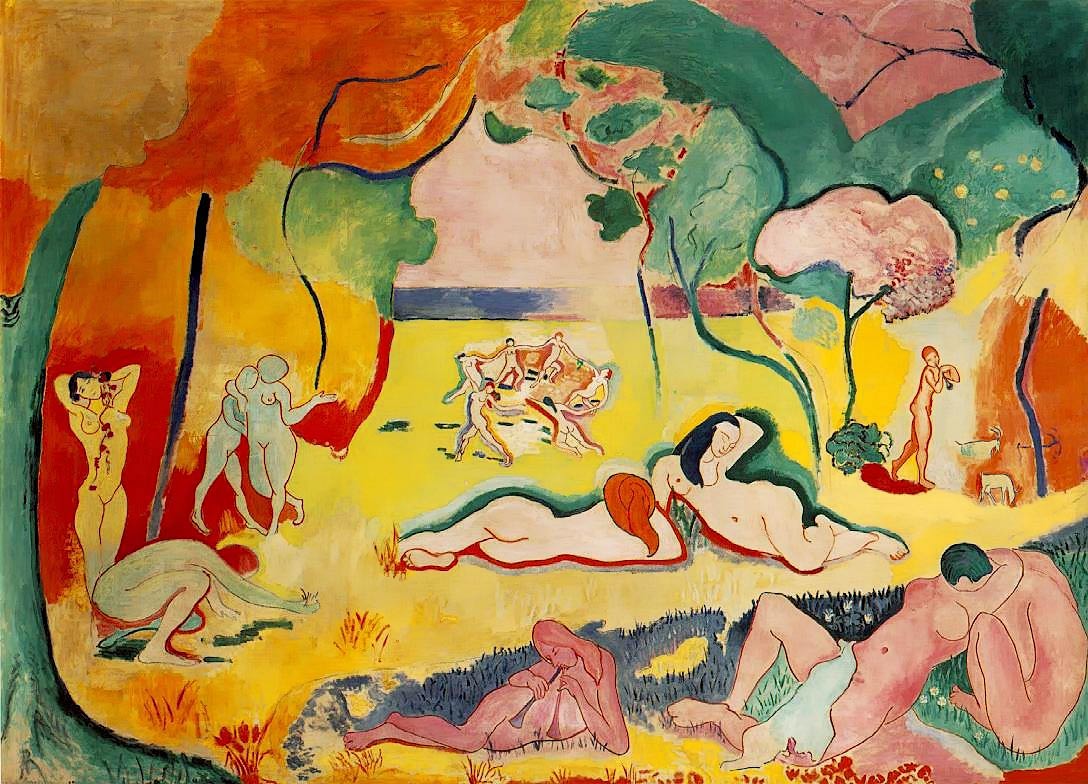 Matisse completed The Joy of Life [Le Bonheur de Vivre] (1905-1906), a lovers’ picnic in a garden. There is a cloth, though there is neither food nor drink. Who was it that said, “Love is not all: it is not meat nor drink”? [Also see Matisse’s Calm, Luxury, and...
Matisse completed The Joy of Life [Le Bonheur de Vivre] (1905-1906), a lovers’ picnic in a garden. There is a cloth, though there is neither food nor drink. Who was it that said, “Love is not all: it is not meat nor drink”? [Also see Matisse’s Calm, Luxury, and...
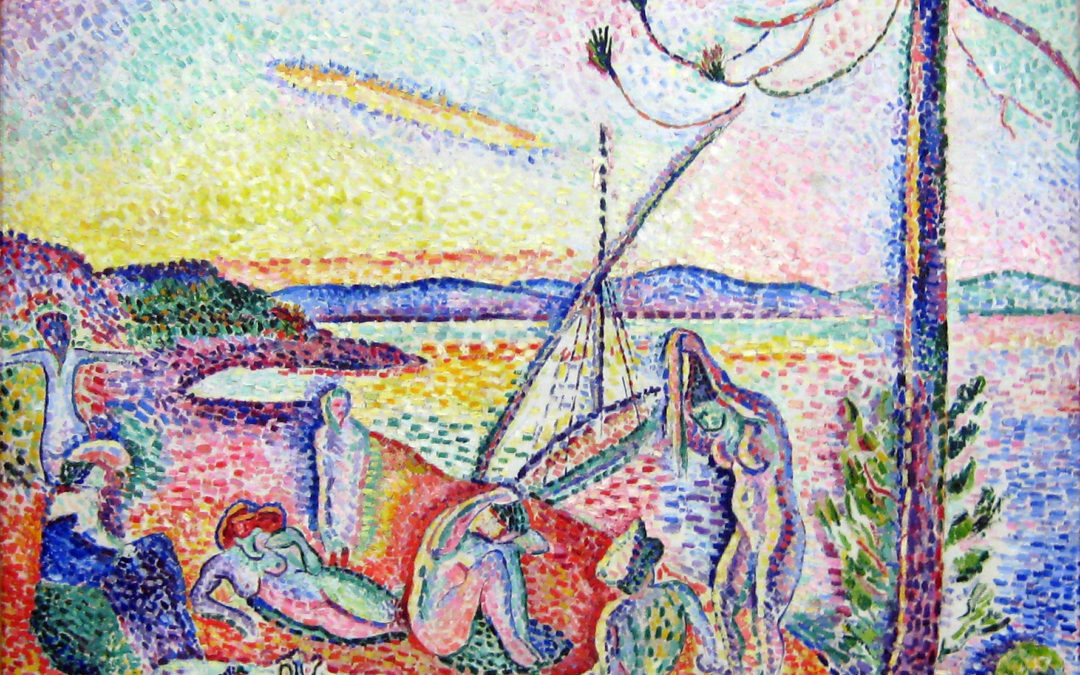 Luxe, Calme et Volupté, or Calm, Luxury, and Sensual Pleasure, was Matisse’s shimmering beach picnic at Saint-Tropez, was a belated response to Édouard Manet’s Luncheon on the Grass (1864). Painted in Saint-Tropez, Matisse’s atmosphere vibrates with glowing reds,...
Luxe, Calme et Volupté, or Calm, Luxury, and Sensual Pleasure, was Matisse’s shimmering beach picnic at Saint-Tropez, was a belated response to Édouard Manet’s Luncheon on the Grass (1864). Painted in Saint-Tropez, Matisse’s atmosphere vibrates with glowing reds,...
 Sargent’s painting Group with Parasols, aka Siesta, (1905) a group of picnickers, including Sargent, sleeping on the grass shaded by parasols. Featured Image: A sleepy pinic. See John Singer Sargent. The group with Parasols, aka Siesta (1905), oil on canvas ...
Sargent’s painting Group with Parasols, aka Siesta, (1905) a group of picnickers, including Sargent, sleeping on the grass shaded by parasols. Featured Image: A sleepy pinic. See John Singer Sargent. The group with Parasols, aka Siesta (1905), oil on canvas ...
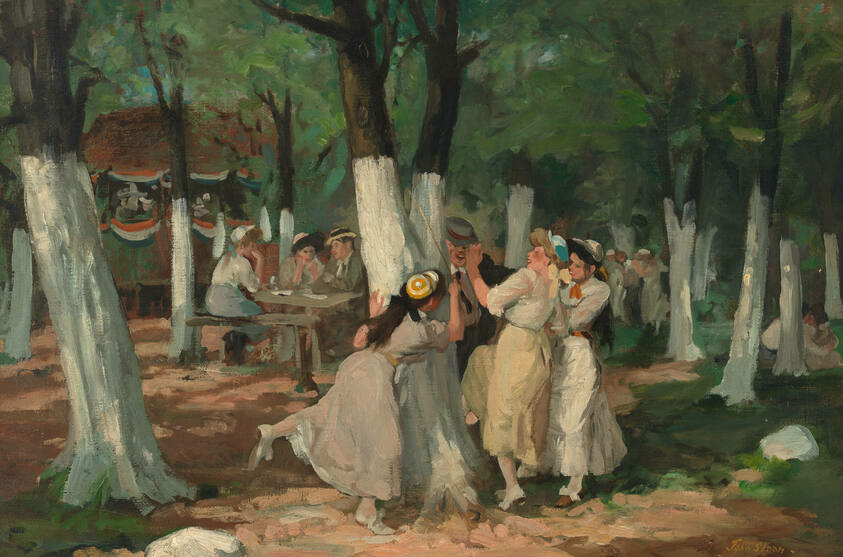 Sloan’s picnics are happy, and he uses the picnic theme intermittently, beginning with The Picnic Grounds, especially with South Beach Bathers (1909), The Picnic on the Ridge (1920), and Picnic, Arroyo Hondo (1938). The Picnic Grounds is a summer scene where young...
Sloan’s picnics are happy, and he uses the picnic theme intermittently, beginning with The Picnic Grounds, especially with South Beach Bathers (1909), The Picnic on the Ridge (1920), and Picnic, Arroyo Hondo (1938). The Picnic Grounds is a summer scene where young...
 Knight developed her style while at the Lamorna Art Colony in west Cornwall. She was nineteen years old and married to Harold Knight. Among more experienced artists and congenial surroundings, she realized the freedom of expression and technique that lasted...
Knight developed her style while at the Lamorna Art Colony in west Cornwall. She was nineteen years old and married to Harold Knight. Among more experienced artists and congenial surroundings, she realized the freedom of expression and technique that lasted...
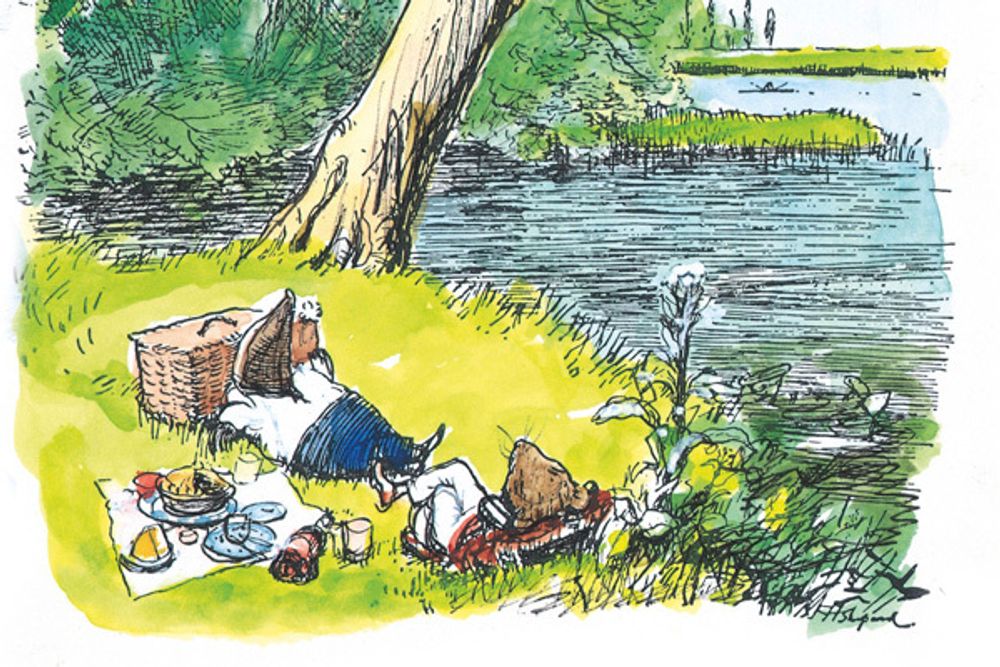 Grahame’s picnic in The Wind in the Willows (1908) is a wonder. What child (or adult) could ever conceive of a picnic for one eating basket full of “cold chicken. ....
Grahame’s picnic in The Wind in the Willows (1908) is a wonder. What child (or adult) could ever conceive of a picnic for one eating basket full of “cold chicken. ....
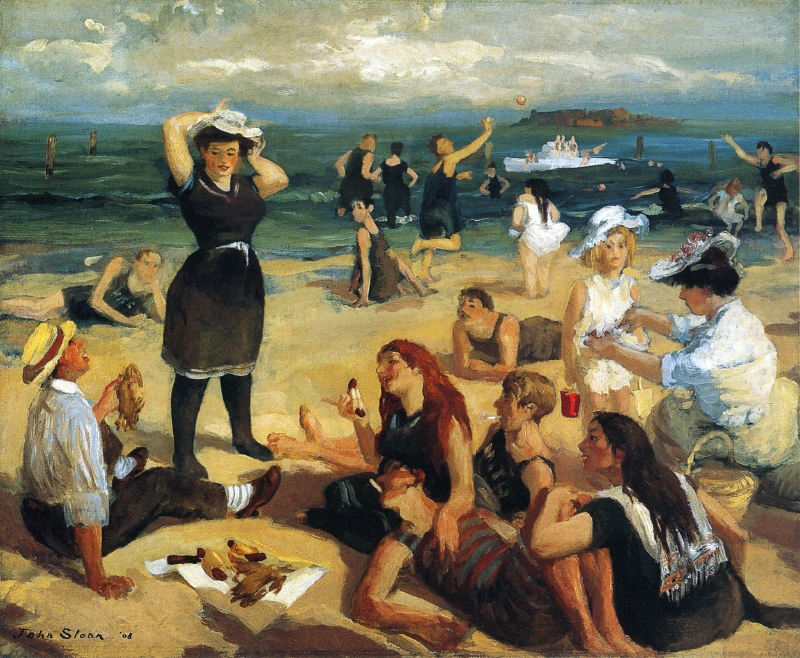 Sloan’s diary for his outing to South Beach and the Happy Land Amusement Park is laconic: June 23, 1907: “Dolly and I went to Staten Island, South Beach this afternoon by Municipal Ferry and Train. Our first visit and we found the place to our liking. Reminds one of...
Sloan’s diary for his outing to South Beach and the Happy Land Amusement Park is laconic: June 23, 1907: “Dolly and I went to Staten Island, South Beach this afternoon by Municipal Ferry and Train. Our first visit and we found the place to our liking. Reminds one of...
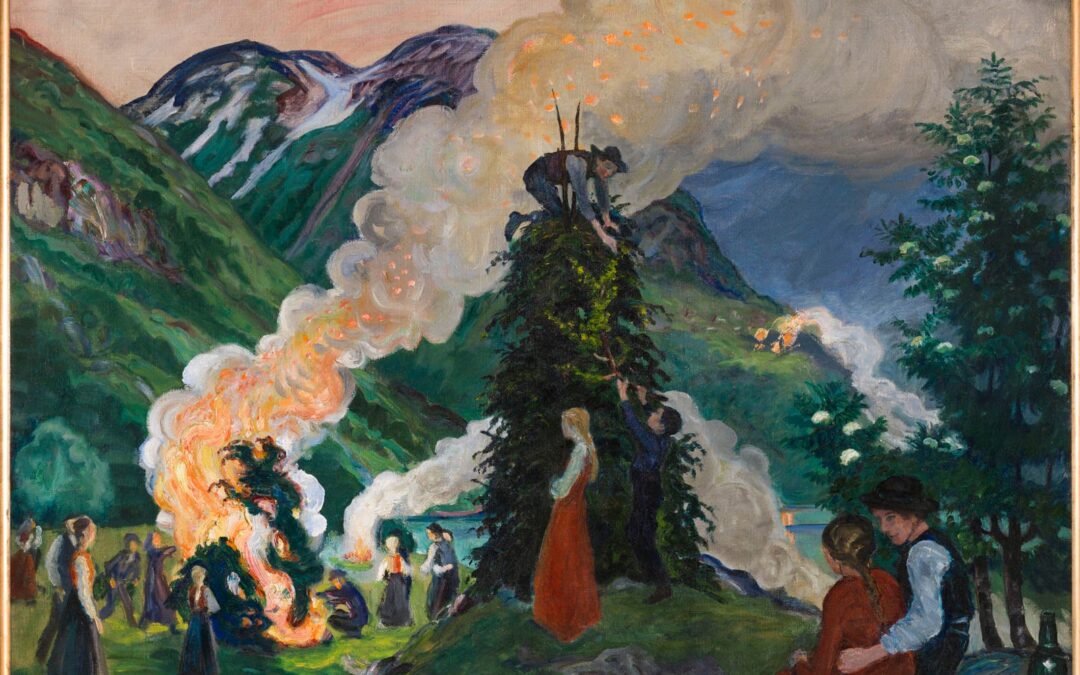 Astrum’s recurring theme is the picnic bonfires lighted on Midsummer’s Eve, June 23, marking the summer solstice. Though it’s a pagan holdover, Christians celebrate the evening honoring St. John the Baptist’s birthday on June 24. In deeply...
Astrum’s recurring theme is the picnic bonfires lighted on Midsummer’s Eve, June 23, marking the summer solstice. Though it’s a pagan holdover, Christians celebrate the evening honoring St. John the Baptist’s birthday on June 24. In deeply...
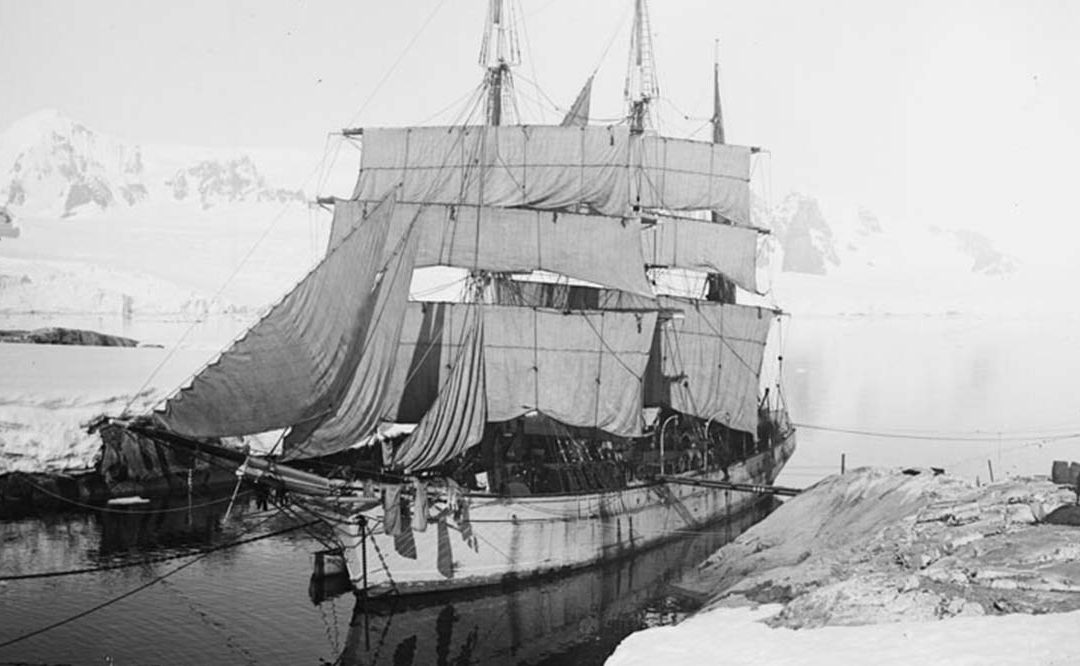 Charcot, Doctor of Medicine, and polar explorer picnicked twice in Antarctica. Each time, he used the situation to divert his crew from the boredom of being ice-bound. Charcot does not mention what they ate or drank in 1904 but uncharacteristically notes the episode...
Charcot, Doctor of Medicine, and polar explorer picnicked twice in Antarctica. Each time, he used the situation to divert his crew from the boredom of being ice-bound. Charcot does not mention what they ate or drank in 1904 but uncharacteristically notes the episode...
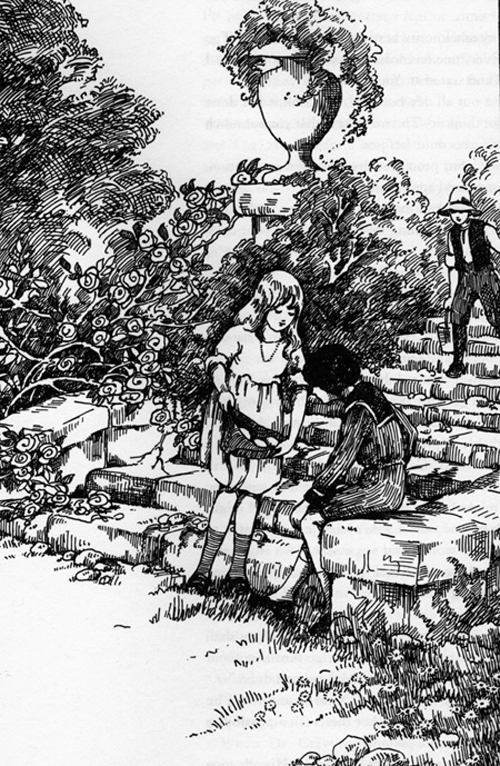 The real secret of The Secret Garden is that with enough picnics and plenty of food, any youth will be happy. Burnett’s The Secret Garden picnics occur in a derelict walled garden where Colin Craven, a fearful, make-believe invalid, and his cousin, Mary Lennox,...
The real secret of The Secret Garden is that with enough picnics and plenty of food, any youth will be happy. Burnett’s The Secret Garden picnics occur in a derelict walled garden where Colin Craven, a fearful, make-believe invalid, and his cousin, Mary Lennox,...
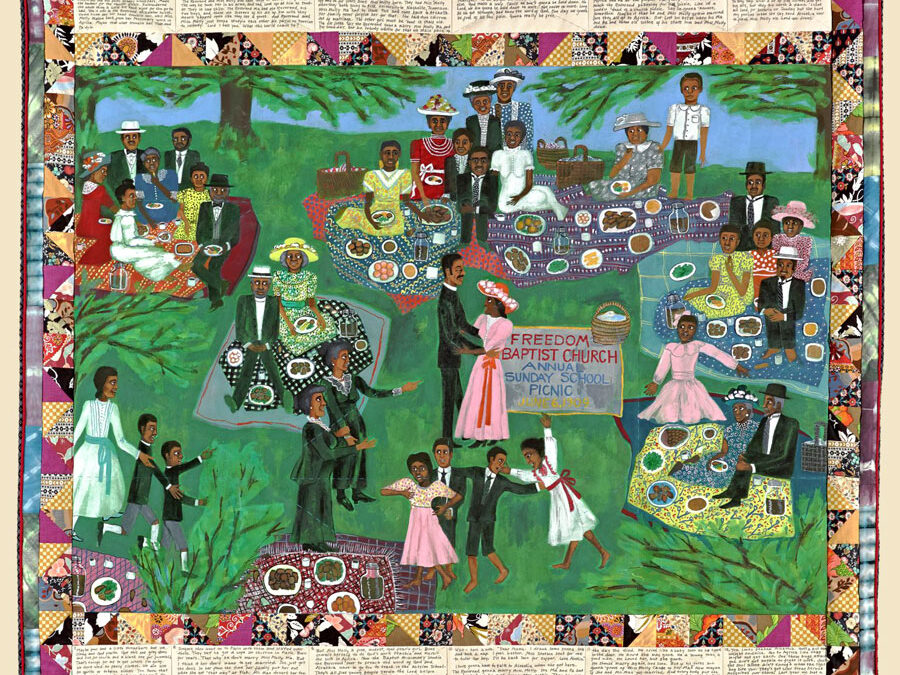 Washington’s “all day meeting” is also known as “dinner on the grounds.” It agrees with versions of meetings by William A. Clary, Edna Lewis, Bebe Meaders and maya Angelou. I’ve cited Washington’s whole passage because...
Washington’s “all day meeting” is also known as “dinner on the grounds.” It agrees with versions of meetings by William A. Clary, Edna Lewis, Bebe Meaders and maya Angelou. I’ve cited Washington’s whole passage because...
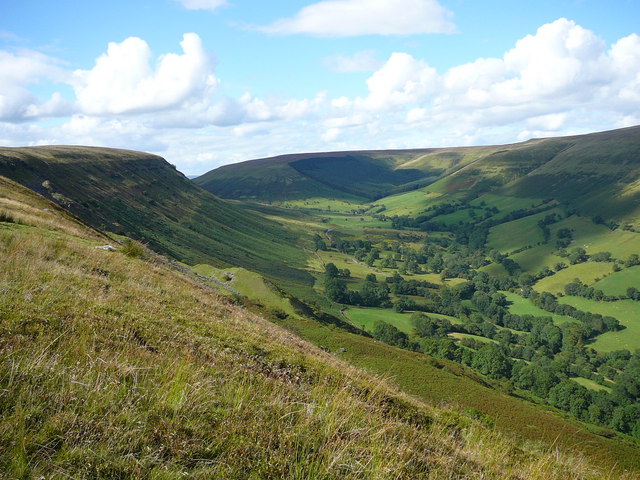 The Curate’s Friend” is one of two Forster’s coming-out stories published in The Celestial Omnibus (1911). In “The Story of a Panic,” it’s Pan who rapes a young boy. But in “The Curate’s Friend,” it’s a Faun...
The Curate’s Friend” is one of two Forster’s coming-out stories published in The Celestial Omnibus (1911). In “The Story of a Panic,” it’s Pan who rapes a young boy. But in “The Curate’s Friend,” it’s a Faun...
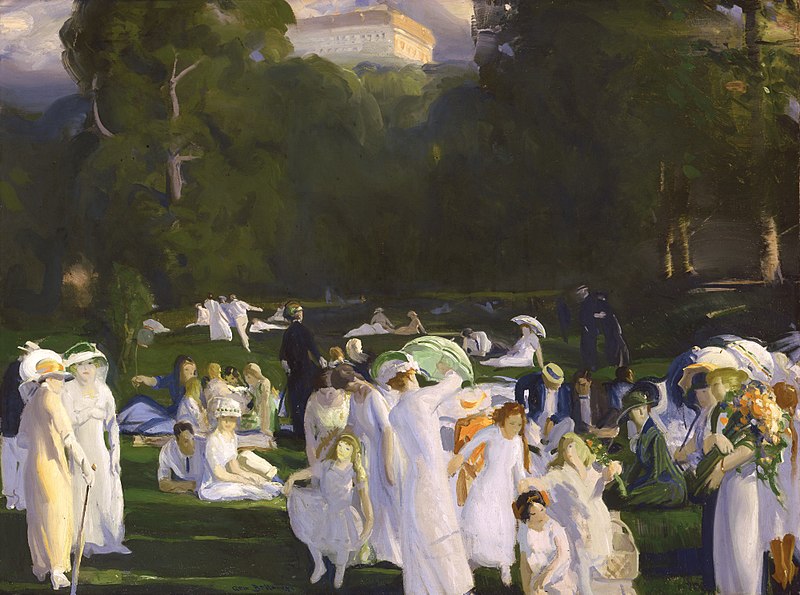 Bellow’s A Day in June (1913) captures a picnicky day in Central Park, New York, where well-dressed crowds lounge in a meadow beyond the Plaza Hotel. Bellows painted his family in the left middle distance among those enjoying the summer day. He wears a dark tie and...
Bellow’s A Day in June (1913) captures a picnicky day in Central Park, New York, where well-dressed crowds lounge in a meadow beyond the Plaza Hotel. Bellows painted his family in the left middle distance among those enjoying the summer day. He wears a dark tie and...
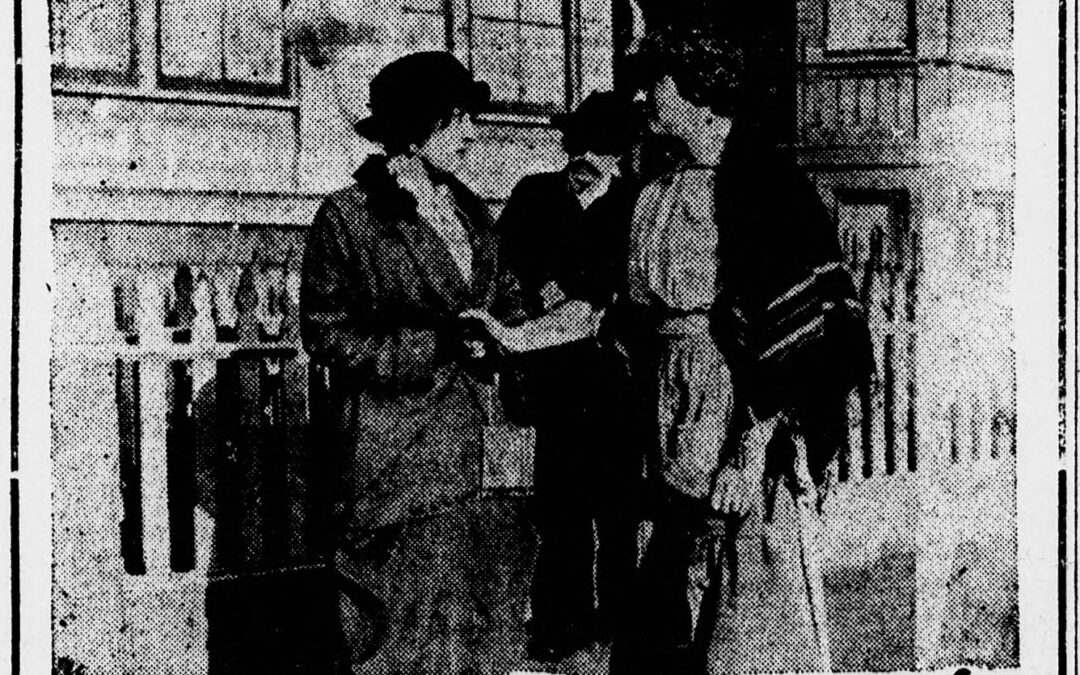 Picnicking sandwiches and much more food play an important part in the courtship of Billy Roberts, a wagon driver, and Saxon Brown, a laundress, in Jack London’s Valley of the Moon. Intending to propose marriage, Billy and Saxon drive into the hills beyond...
Picnicking sandwiches and much more food play an important part in the courtship of Billy Roberts, a wagon driver, and Saxon Brown, a laundress, in Jack London’s Valley of the Moon. Intending to propose marriage, Billy and Saxon drive into the hills beyond...
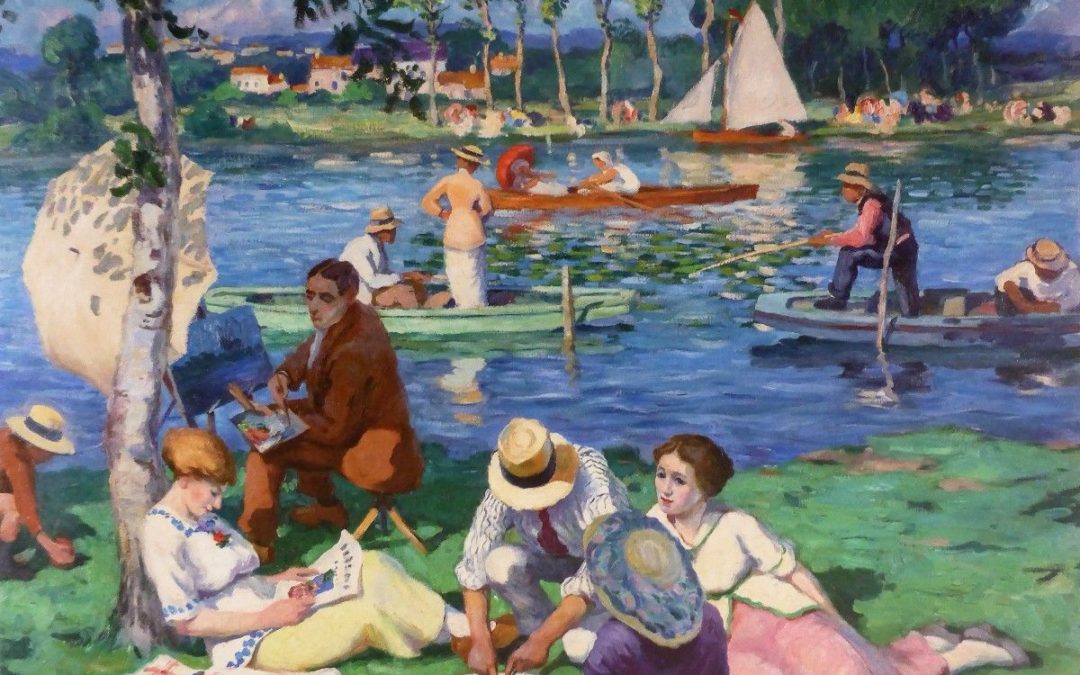 Gaston Balande’s <em>Lunch on the Banks of the Seine </em> and <em>Camping</em> (1930s) Balande’s painting Déjeuner au bord de la Seine or Picnic by a River epitomizes Parisians at play along the Seine just at the start of World War I. Camping...
Gaston Balande’s <em>Lunch on the Banks of the Seine </em> and <em>Camping</em> (1930s) Balande’s painting Déjeuner au bord de la Seine or Picnic by a River epitomizes Parisians at play along the Seine just at the start of World War I. Camping...
 Claude Debussy and his daughter Claude-Emma (about ten years old) sit on a picnic carpet spread on the grass in a park. They are not dressed casually: he wears a summer suit, striped, white shirt with cufflinks, and a bow tie. He stares at wearing a summer dress,...
Claude Debussy and his daughter Claude-Emma (about ten years old) sit on a picnic carpet spread on the grass in a park. They are not dressed casually: he wears a summer suit, striped, white shirt with cufflinks, and a bow tie. He stares at wearing a summer dress,...
 Larned suggests any food is picnic food as long as it can be transported. The motorcar made this wish viable, if not practical, and One Hundred Picnic Suggestions is the first cookbook dedicated to picnicking. The cover shows a picnic basket, sandwiches, and thermos...
Larned suggests any food is picnic food as long as it can be transported. The motorcar made this wish viable, if not practical, and One Hundred Picnic Suggestions is the first cookbook dedicated to picnicking. The cover shows a picnic basket, sandwiches, and thermos...
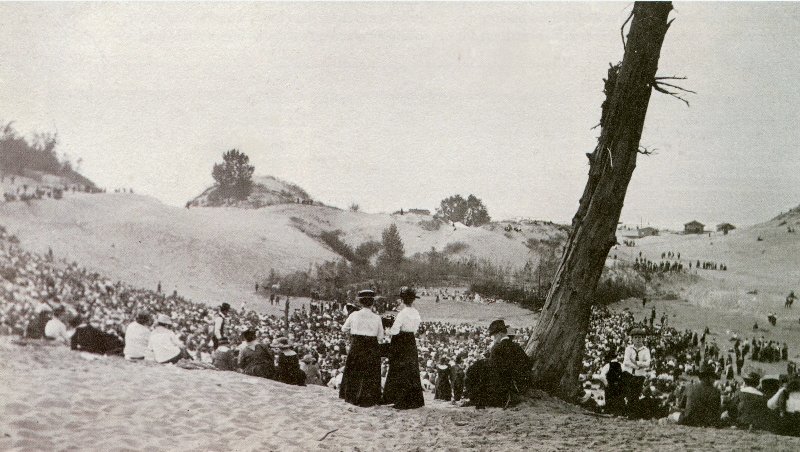 Fanny Brandeis is a new woman, whose career comes first, and when Clarence Heyl, an unacknowledged suitor, asks her to picnic, she says that she’s so busy working that she has forgotten how. But the next morning, Fanny is sitting in a train heading out from...
Fanny Brandeis is a new woman, whose career comes first, and when Clarence Heyl, an unacknowledged suitor, asks her to picnic, she says that she’s so busy working that she has forgotten how. But the next morning, Fanny is sitting in a train heading out from...
 Stettheimer liked whimsy and humor in her paintings but included jokes only her friends would recognize. Her outlook is surreal. She preferred the outdoors, like Picnic in Bedford Hills, because interiors are less joyful than an outdoor scene. Like Matisse’s The Red...
Stettheimer liked whimsy and humor in her paintings but included jokes only her friends would recognize. Her outlook is surreal. She preferred the outdoors, like Picnic in Bedford Hills, because interiors are less joyful than an outdoor scene. Like Matisse’s The Red...
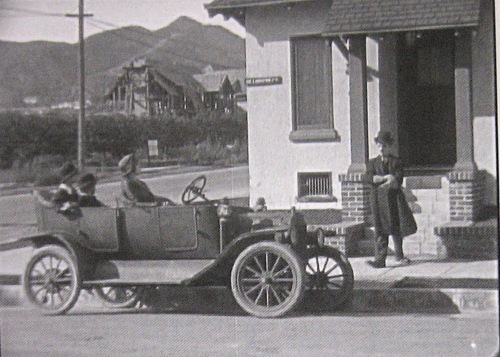 Chaplin’s A Day’s Pleasure called Charlie’s Picnic is an excursion in San Pedro harbor. It’s not a picnic, and Chaplin preferred A Day’s Pleasure as an ironic title because the story is a series of ironic misfortunes: seasickness, fistfights, and a return home that...
Chaplin’s A Day’s Pleasure called Charlie’s Picnic is an excursion in San Pedro harbor. It’s not a picnic, and Chaplin preferred A Day’s Pleasure as an ironic title because the story is a series of ironic misfortunes: seasickness, fistfights, and a return home that...
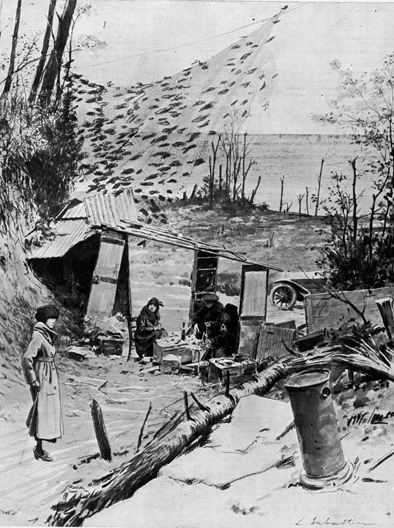 When the war began in 1914, picnic baskets were shelved. But when the peace was negotiated at Versailles in June 1919, wickers were dusted off and repacked. Signaling the change, The Illustrated London News editors suggested that it was time for picnicking—in the...
When the war began in 1914, picnic baskets were shelved. But when the peace was negotiated at Versailles in June 1919, wickers were dusted off and repacked. Signaling the change, The Illustrated London News editors suggested that it was time for picnicking—in the...
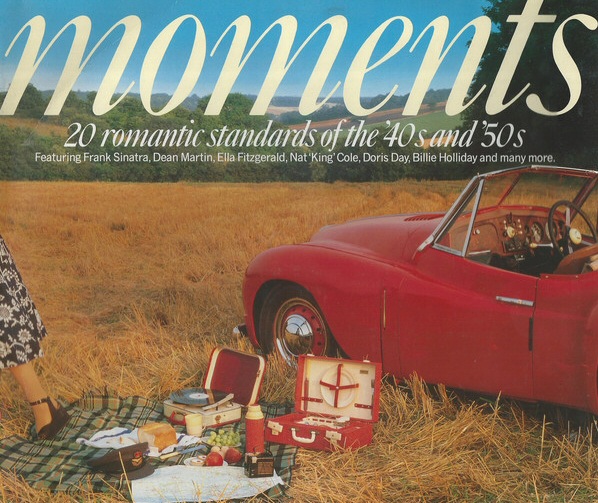 Exuberantly ushering in the 1920s, Jowett Motor Cars, then a popular English firm, suggested that motoring provided the means to escape from work and the city: “Have you glimpsed a bit of heaven whilst “picnicing” [sic] by the scented pinewood?” Their ad shows a...
Exuberantly ushering in the 1920s, Jowett Motor Cars, then a popular English firm, suggested that motoring provided the means to escape from work and the city: “Have you glimpsed a bit of heaven whilst “picnicing” [sic] by the scented pinewood?” Their ad shows a...
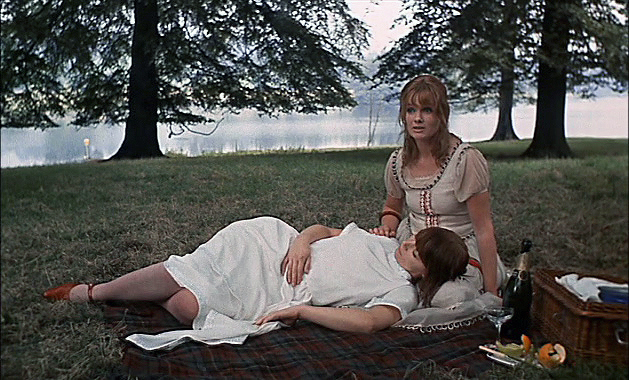 “How lovely it is to be free,” said Ursula, running swiftly here and there between the tree trunks, quite naked, her hair blowing loose. The grove was of beech trees, big and splendid, a steel-grey scaffolding of trunks and boughs, with level sprays of...
“How lovely it is to be free,” said Ursula, running swiftly here and there between the tree trunks, quite naked, her hair blowing loose. The grove was of beech trees, big and splendid, a steel-grey scaffolding of trunks and boughs, with level sprays of...
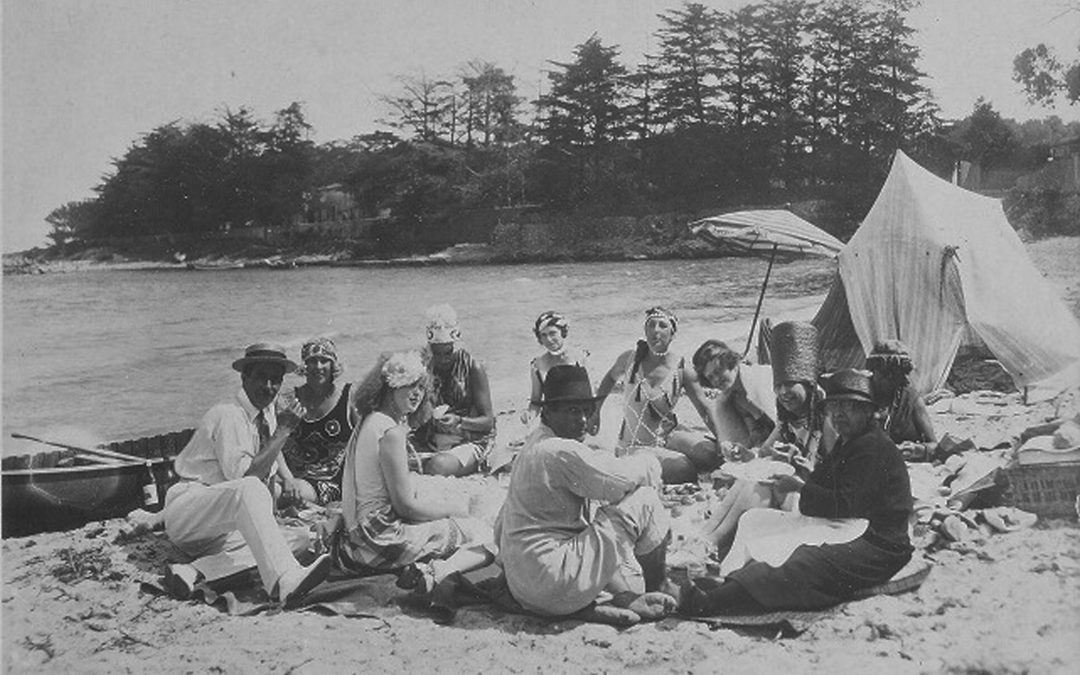 Villa America, Sara, and Gerald Murphy’s home in Antibes looked down on La Garoupe, where they spread oriental carpets on the sand and drank wine and cold Veuve Cliquot. They were prodigious drinkers, but what they ate was a mystery. During the 1920s, their home was a...
Villa America, Sara, and Gerald Murphy’s home in Antibes looked down on La Garoupe, where they spread oriental carpets on the sand and drank wine and cold Veuve Cliquot. They were prodigious drinkers, but what they ate was a mystery. During the 1920s, their home was a...
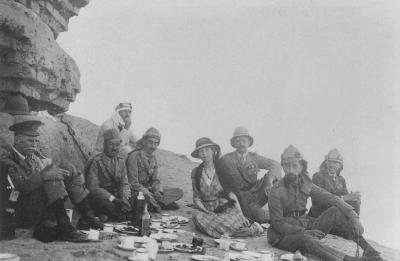 Bell often picnicked for entertainment and worked as Oriental Secretary to the High Commissioner in Baghdad) and spy. Often, the two were indistinguishable. Once using the picnic as a deception, she and her companions took an official (not identified) to a lonely...
Bell often picnicked for entertainment and worked as Oriental Secretary to the High Commissioner in Baghdad) and spy. Often, the two were indistinguishable. Once using the picnic as a deception, she and her companions took an official (not identified) to a lonely...
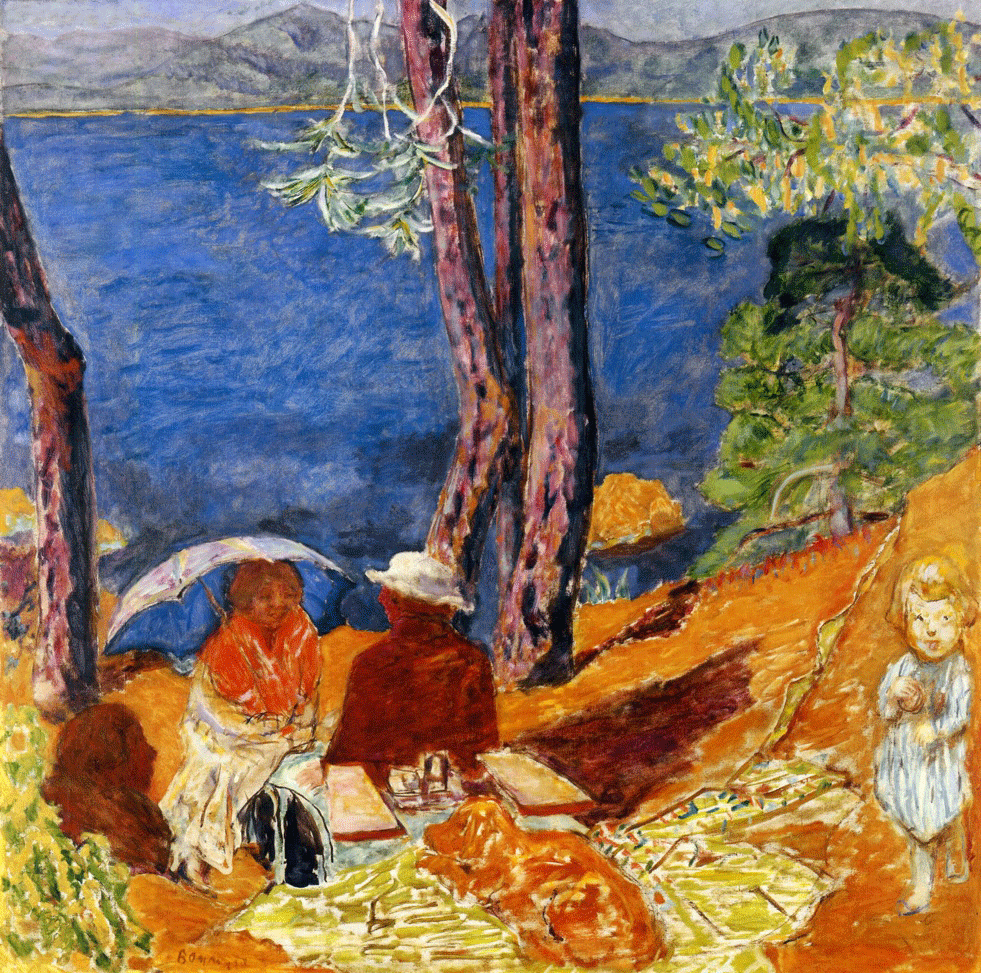 Situated on the bluff near St. Tropez overlooking the brilliant blue ocean, Bonnard’s picnic is one delightfully cheerful mood. Everything is gold, yellow, brown, and green around the woman, a man, a child, and a recumbent dog. It’s a palette suggesting happiness and...
Situated on the bluff near St. Tropez overlooking the brilliant blue ocean, Bonnard’s picnic is one delightfully cheerful mood. Everything is gold, yellow, brown, and green around the woman, a man, a child, and a recumbent dog. It’s a palette suggesting happiness and...
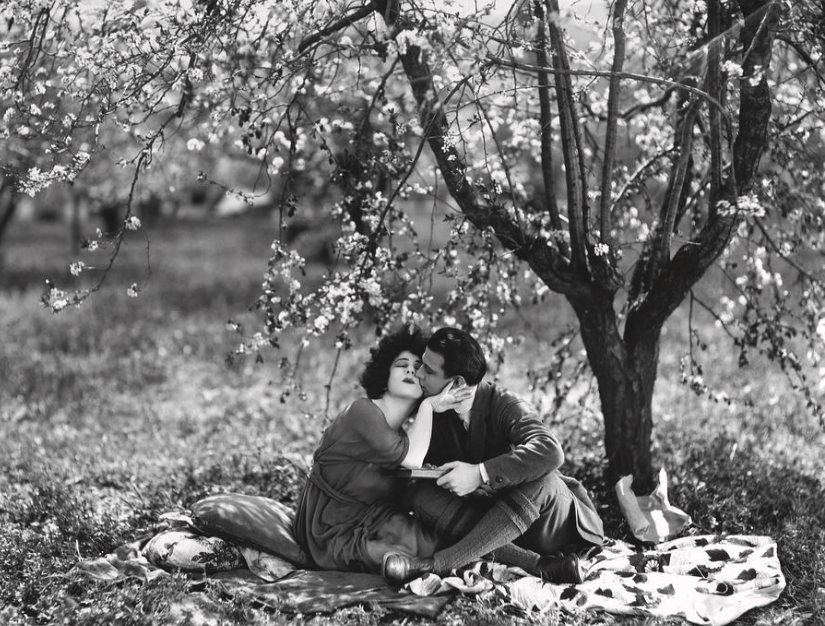 Smallwood’s picnic episode is not in Dumas fils’s La Dame aux Camélias. According to Smallwood’s cinematic logic, however, romantic scenes set in a natural setting are sure to be audience winners. The screen legend tells the obvious, “Love is...
Smallwood’s picnic episode is not in Dumas fils’s La Dame aux Camélias. According to Smallwood’s cinematic logic, however, romantic scenes set in a natural setting are sure to be audience winners. The screen legend tells the obvious, “Love is...
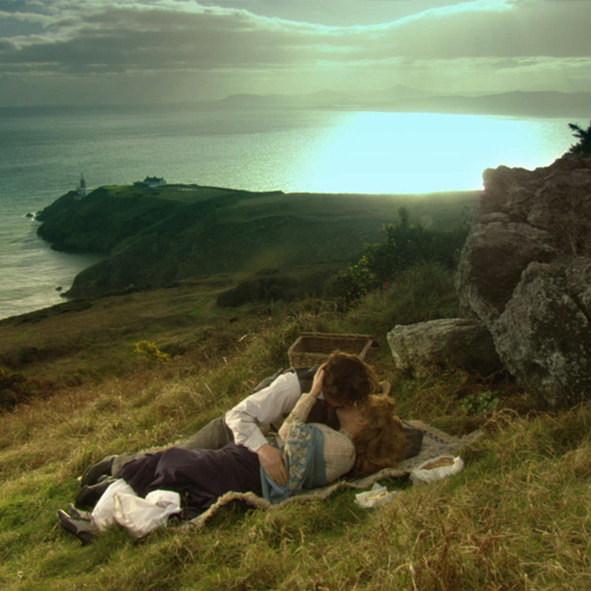 Their marriage disintegrating, Leopold and Molly Bloom remember when they were in love and picnicked on Howth Head. They vividly remember Molly feeding Bloom a seedcake. (Joyce considered this sensual, but the visual image is of a bird feeding its young.) Bloom and...
Their marriage disintegrating, Leopold and Molly Bloom remember when they were in love and picnicked on Howth Head. They vividly remember Molly feeding Bloom a seedcake. (Joyce considered this sensual, but the visual image is of a bird feeding its young.) Bloom and...
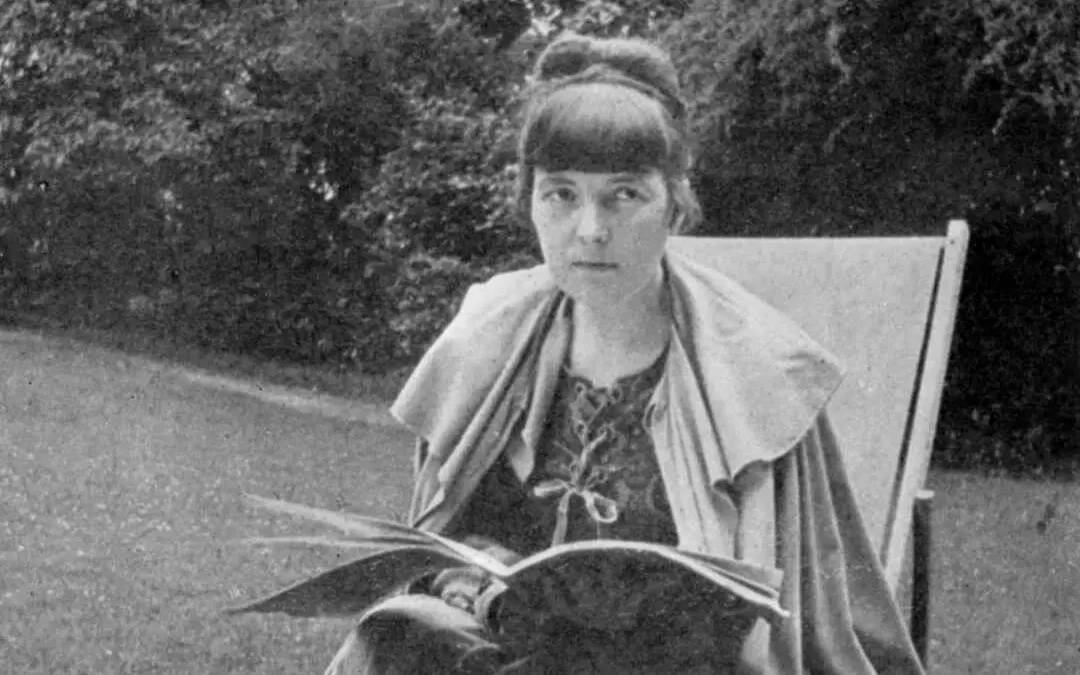 Mansfield’s “The Garden Party” describes the Sheridan family’s Wellington, New Zealand, summer picnic garden party. The day is early summer, the weather ideal, the air warm and windless, and the blue sky has a veil of gold: “They could...
Mansfield’s “The Garden Party” describes the Sheridan family’s Wellington, New Zealand, summer picnic garden party. The day is early summer, the weather ideal, the air warm and windless, and the blue sky has a veil of gold: “They could...
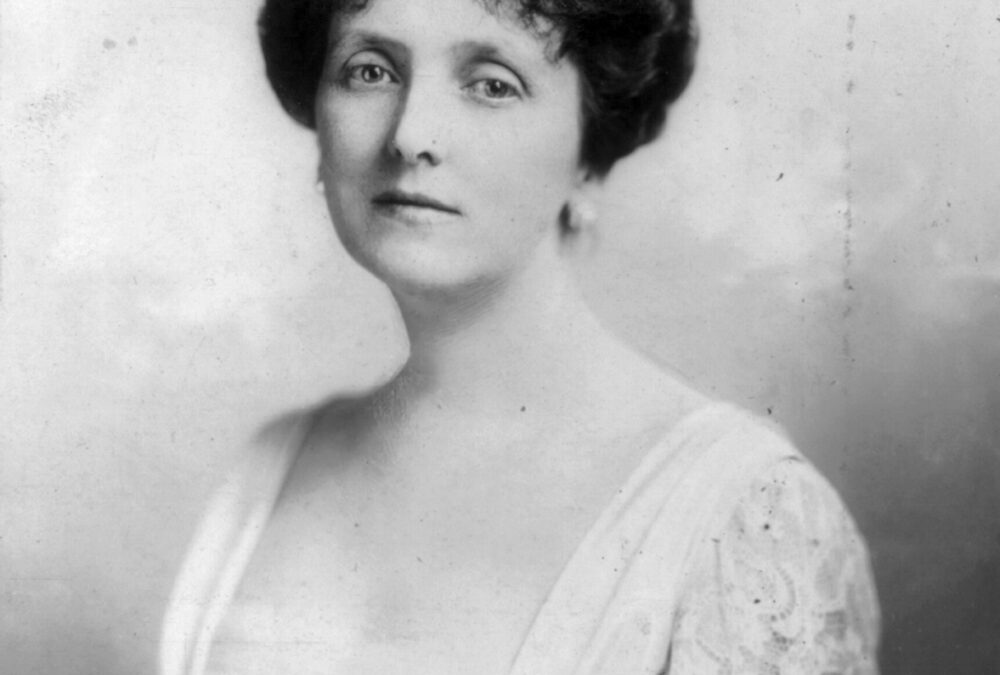 “Regard for Others” is Post’s picnic advice heading. It’s not what you might expect because it’s about trash! “People who picnic along the highway leaving a clutter of greasy paper and swill (not a pretty name,” Post sputters, “but it is not a pretty object! for...
“Regard for Others” is Post’s picnic advice heading. It’s not what you might expect because it’s about trash! “People who picnic along the highway leaving a clutter of greasy paper and swill (not a pretty name,” Post sputters, “but it is not a pretty object! for...
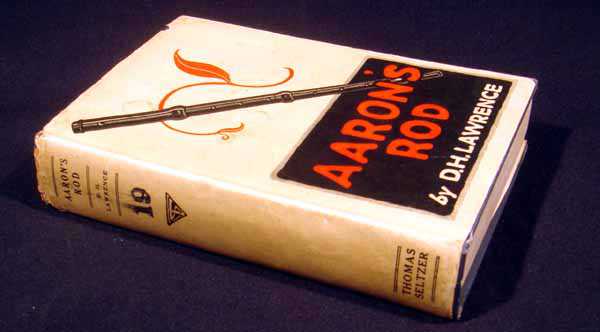 Aaron Sissons, the protagonist of Lawrence’s Aaron’s Rod, leaves his wife and three young children to find himself. He’s unsuccessful. The “rod” is his flute, which he plays well enough to earn a modest living. It is also a pun on his...
Aaron Sissons, the protagonist of Lawrence’s Aaron’s Rod, leaves his wife and three young children to find himself. He’s unsuccessful. The “rod” is his flute, which he plays well enough to earn a modest living. It is also a pun on his...
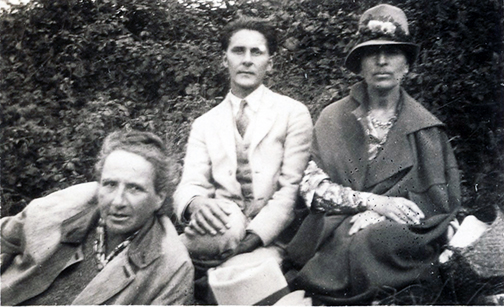 Stein is a demanding writer, especially when she experimented with eliminating adjectives, imagery, and grammar. She argued that you either got her meaning or you didn’t. The results were hit or miss. They still are. Ben Hecht reviewing Geography and Plays...
Stein is a demanding writer, especially when she experimented with eliminating adjectives, imagery, and grammar. She argued that you either got her meaning or you didn’t. The results were hit or miss. They still are. Ben Hecht reviewing Geography and Plays...
 Southworth’s The Motorist’s Luncheon Book hypes motor picnicking. “The love of the great outdoors grows with each new automobile,” she writes, “The friendly road beckons, the trusty motor champs at the brake.” It’s very like...
Southworth’s The Motorist’s Luncheon Book hypes motor picnicking. “The love of the great outdoors grows with each new automobile,” she writes, “The friendly road beckons, the trusty motor champs at the brake.” It’s very like...
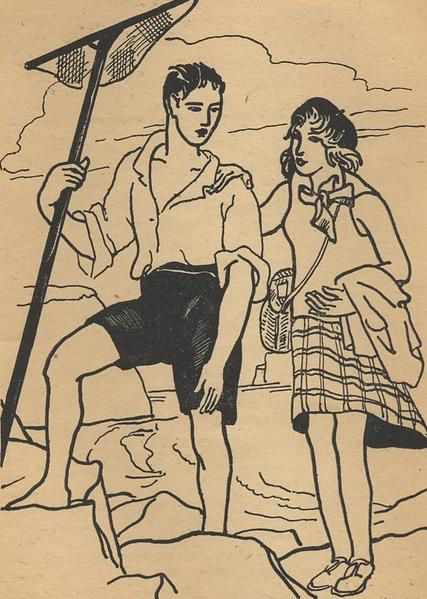 It’s a momentous picnic for a young couple to understand they are courting in Colette’s The Ripening Seed. With the summer half gone, Phil Adebert (sixteen and a half) and Vinca Ferret (fifteen and a half) pack their picnic baskets and walk down the rocky cliffs like...
It’s a momentous picnic for a young couple to understand they are courting in Colette’s The Ripening Seed. With the summer half gone, Phil Adebert (sixteen and a half) and Vinca Ferret (fifteen and a half) pack their picnic baskets and walk down the rocky cliffs like...
![George Bellows Picnic [Cooper Lake, Woodstock, NY] (1924)](https://picnicwit.com/wp-content/uploads/2022/01/Bellows_George_The_Picnic_1924-1080x675.jpg) Bellows’s The Picnic is an example of a stylistic experiment with the technique of distorting the field of vision. He called Dynamic Symmetry. The picnic suggests a panoramic view of Cooper Lake, Woodstock’s water source. * The picnic is a family affair. Bellows is...
Bellows’s The Picnic is an example of a stylistic experiment with the technique of distorting the field of vision. He called Dynamic Symmetry. The picnic suggests a panoramic view of Cooper Lake, Woodstock’s water source. * The picnic is a family affair. Bellows is...
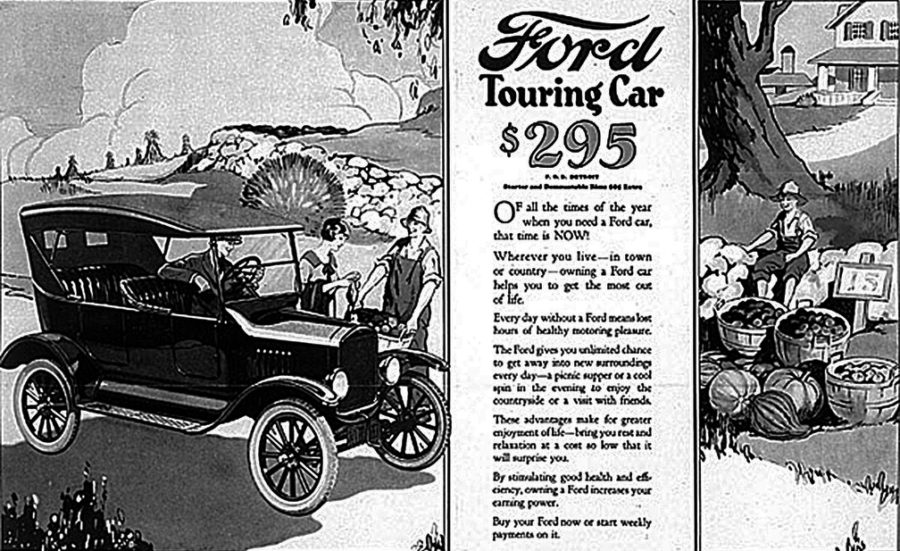 Twentieth Century motoring greatly expanded opportunities for picnicking by allowing anyone to enjoy the freedom of the road. Fords were ubiquitous cars, and in this advertisement, they reinforced their dominance by claiming, “Wherever you live—in town or...
Twentieth Century motoring greatly expanded opportunities for picnicking by allowing anyone to enjoy the freedom of the road. Fords were ubiquitous cars, and in this advertisement, they reinforced their dominance by claiming, “Wherever you live—in town or...
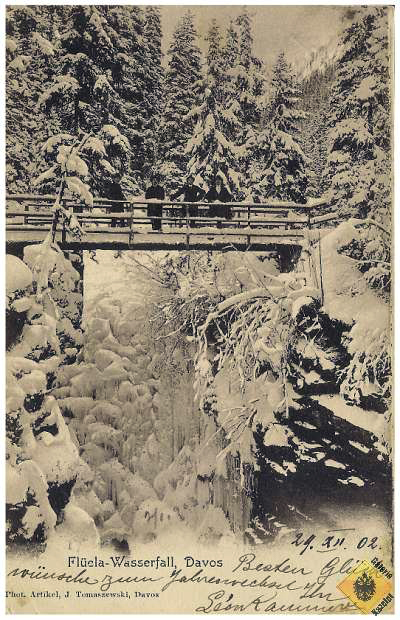 The Flüela Falls picnic is staged in May, a traditional month of spiritual renewal, but in this instance, Pieter Peeperkorn plans to announce his impending suicide. Peppercorn has invited his closest friends at the tuberculosis sanitarium in Davos: Hans Castorp,...
The Flüela Falls picnic is staged in May, a traditional month of spiritual renewal, but in this instance, Pieter Peeperkorn plans to announce his impending suicide. Peppercorn has invited his closest friends at the tuberculosis sanitarium in Davos: Hans Castorp,...
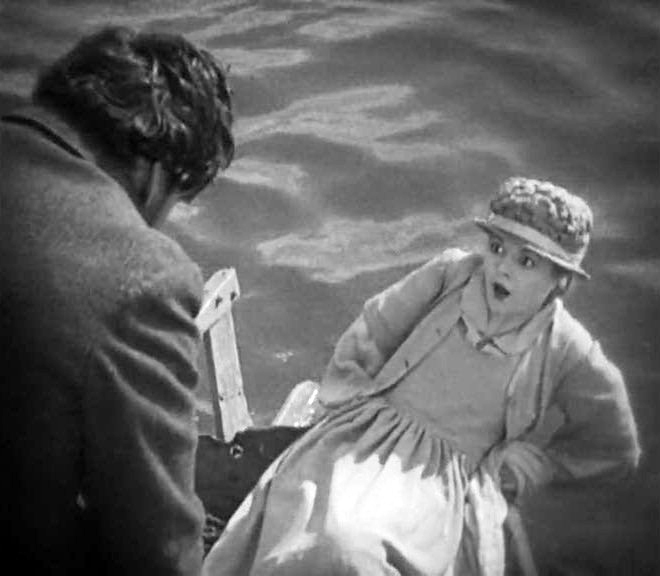 Dreiser’s picnic is hellish. It’s an expression of his dark view of humanity, like Zola’s proposition that when people succumb to the “fatalities of their flesh,” they are, and a sordid picnic is the “cataclysmic” center of An...
Dreiser’s picnic is hellish. It’s an expression of his dark view of humanity, like Zola’s proposition that when people succumb to the “fatalities of their flesh,” they are, and a sordid picnic is the “cataclysmic” center of An...
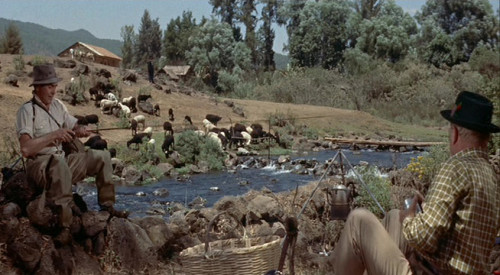 When Jake Barnes and Bill Gorton stop for lunch while trout fishing on the Irrazy River, it looks like a picnic. Whether it’s a lunch or a picnic doesn’t matter because it’s when Hemingway chooses to reveal Jake Barnes’ spiritual disquietude...
When Jake Barnes and Bill Gorton stop for lunch while trout fishing on the Irrazy River, it looks like a picnic. Whether it’s a lunch or a picnic doesn’t matter because it’s when Hemingway chooses to reveal Jake Barnes’ spiritual disquietude...
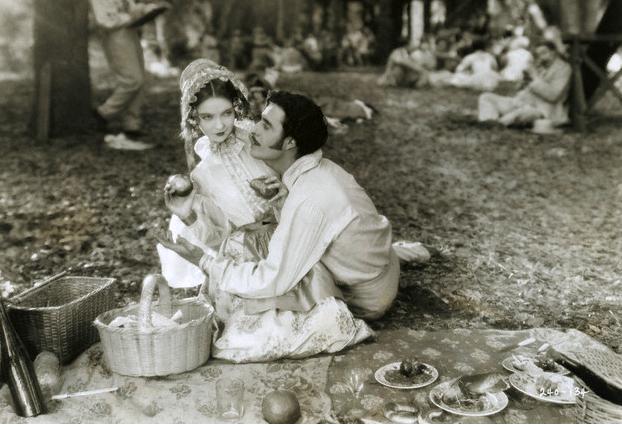 Vidor’s picnic in La Bohème narrates the critical moment when Mimi and Rodolphe fall in love. It’s absent from the screenplay’s sources: Puccini’s opera La Bohème and Henri Muger’s Scenes de la vie bohème (Scenes of Bohemian Life). The legend tells that this is...
Vidor’s picnic in La Bohème narrates the critical moment when Mimi and Rodolphe fall in love. It’s absent from the screenplay’s sources: Puccini’s opera La Bohème and Henri Muger’s Scenes de la vie bohème (Scenes of Bohemian Life). The legend tells that this is...
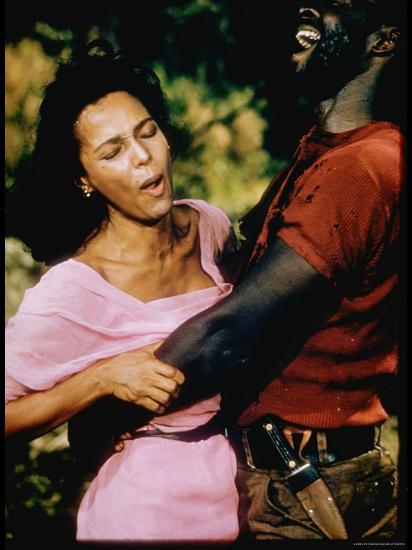 According to Heyward, “It was the day set for the grand parade and picnic of “The Sons and Daughters of Repent Ye Saith the Lord,” and, with the first light of morning, Catfish Row had burst into a fever of preparation.” Expectations promise...
According to Heyward, “It was the day set for the grand parade and picnic of “The Sons and Daughters of Repent Ye Saith the Lord,” and, with the first light of morning, Catfish Row had burst into a fever of preparation.” Expectations promise...
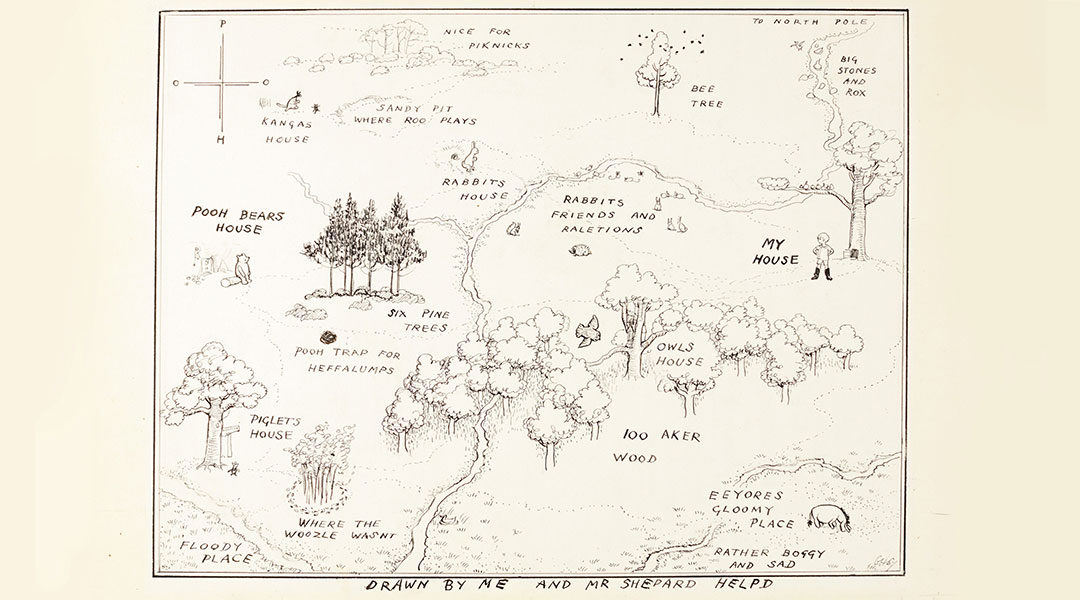 Shepard The original Pooh illustrations were line drawings and were not colorized until later. The area marked “Nice for picnicks” is at the top, slightly left of center. Shepard also illustrated Kenneth Grahame’s The Wind in the Willows (1931) See E.H. Shepherd. Map...
Shepard The original Pooh illustrations were line drawings and were not colorized until later. The area marked “Nice for picnicks” is at the top, slightly left of center. Shepard also illustrated Kenneth Grahame’s The Wind in the Willows (1931) See E.H. Shepherd. Map...
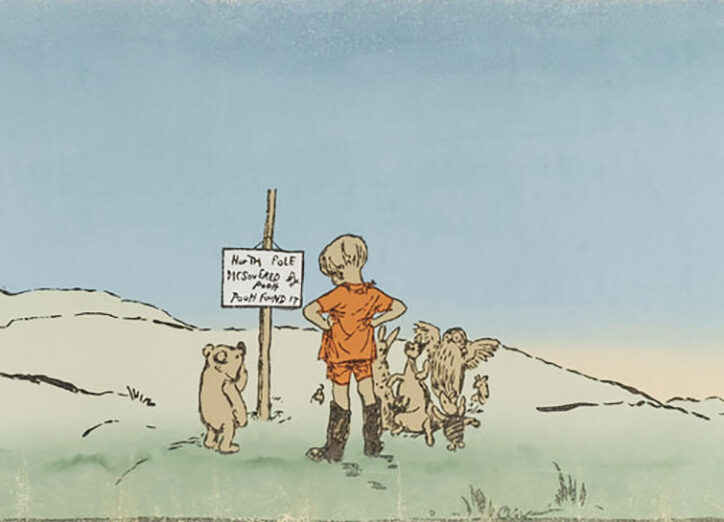 When Christopher Robin organizes an “Expotition” to the North Pole, his friends are unsure what he means. “We are all going on an Expedition,” said Christopher Robin, as he got up and brushed himself. “Thank you, Pooh.” ”...
When Christopher Robin organizes an “Expotition” to the North Pole, his friends are unsure what he means. “We are all going on an Expedition,” said Christopher Robin, as he got up and brushed himself. “Thank you, Pooh.” ”...
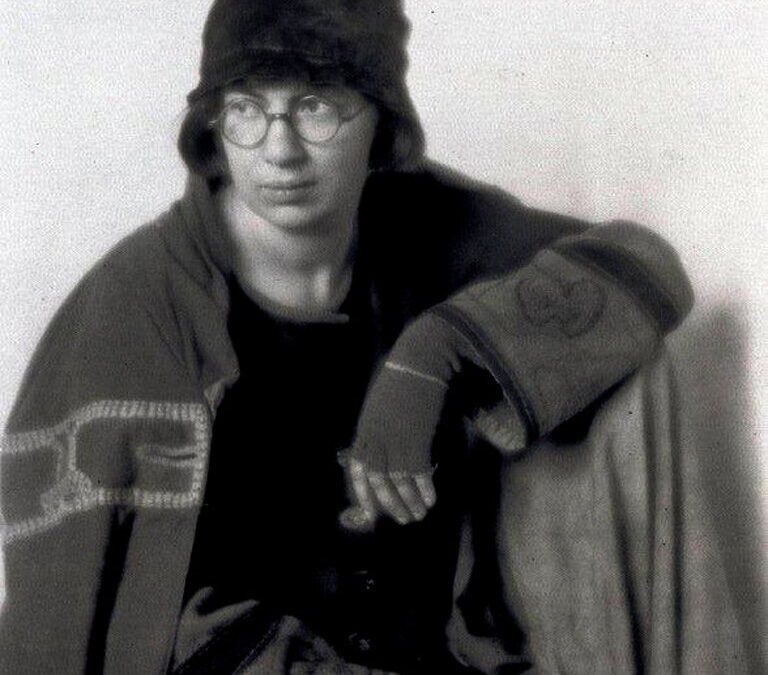 Zorach’s The Picnic looks like a happy picnic. A family has motored to the country and settled on a hillside for a relaxing afternoon. In the foreground, a woman in a red sweater is reclining. Behind her, the mother, a woman in blue, is unpacking foods, a man with a...
Zorach’s The Picnic looks like a happy picnic. A family has motored to the country and settled on a hillside for a relaxing afternoon. In the foreground, a woman in a red sweater is reclining. Behind her, the mother, a woman in blue, is unpacking foods, a man with a...
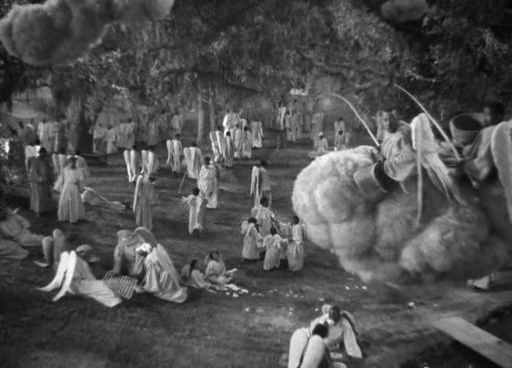 Bradford did not see it, but Ol’ Man Adam is imbued with his inherent racism. He means to entertain by portraying rural, uneducated happy-go-lucky African Americans retelling Old Testament stories in a dialect that’s more Bradford’s than theirs....
Bradford did not see it, but Ol’ Man Adam is imbued with his inherent racism. He means to entertain by portraying rural, uneducated happy-go-lucky African Americans retelling Old Testament stories in a dialect that’s more Bradford’s than theirs....
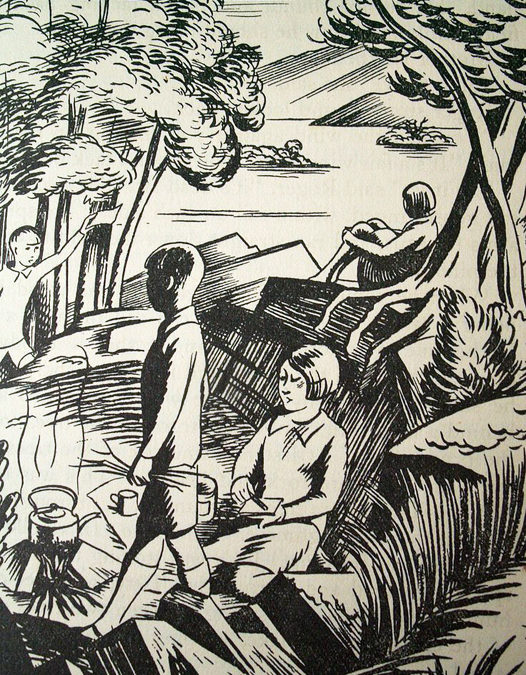 Ransome’s Swallows and Amazons takes its name from the Swallow and the Amazon, two fourteen-foot dinghies that the childre n of the Walker and Blackett families sail in Coniston Lake in the English Lake District, where they play pirates and picnic at their...
Ransome’s Swallows and Amazons takes its name from the Swallow and the Amazon, two fourteen-foot dinghies that the childre n of the Walker and Blackett families sail in Coniston Lake in the English Lake District, where they play pirates and picnic at their...
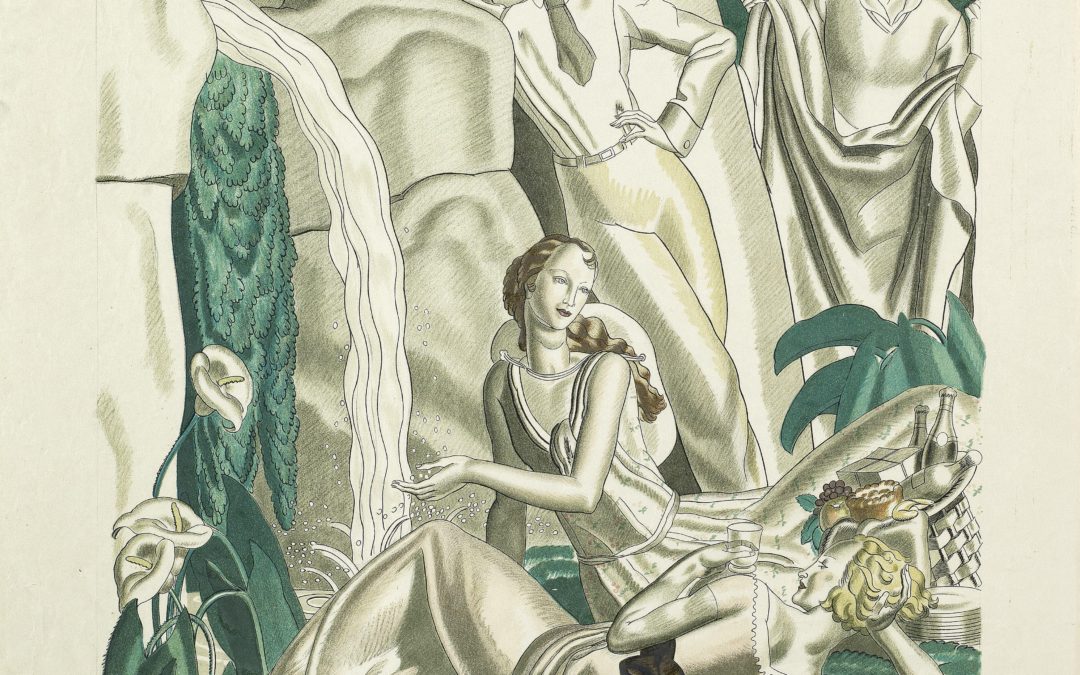 The title of this poster for the London Underground is written in non-standard English. Establishing a picnic is almost incomprehensible unless you are a nation builder. A joke maybe? See Jean Dupas’s <em>Establish A Picnic and Pass The Day Together</em>...
The title of this poster for the London Underground is written in non-standard English. Establishing a picnic is almost incomprehensible unless you are a nation builder. A joke maybe? See Jean Dupas’s <em>Establish A Picnic and Pass The Day Together</em>...
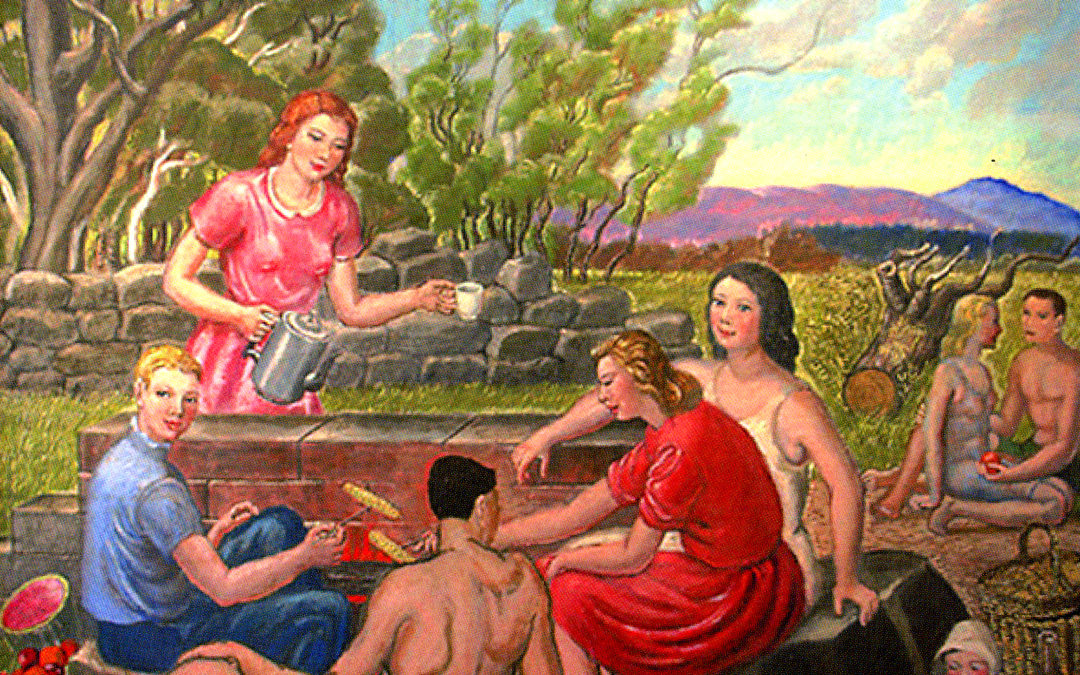 Eaton’s Family Picnic depicts a traditional family gathering around an outdoor brick fireplace. See Dorothy Eaton. Family Picnic (1930’s). Oil on canvas.
Eaton’s Family Picnic depicts a traditional family gathering around an outdoor brick fireplace. See Dorothy Eaton. Family Picnic (1930’s). Oil on canvas.
 Hemingway’s Death in the Afternoon and Franklin’s Bullfighter from Brooklyn recall their meriendas at “La Playa,” Franklin’s camp on the Manzanares River in the summer of 1931. Franklin recalls that he had time to play because he was...
Hemingway’s Death in the Afternoon and Franklin’s Bullfighter from Brooklyn recall their meriendas at “La Playa,” Franklin’s camp on the Manzanares River in the summer of 1931. Franklin recalls that he had time to play because he was...
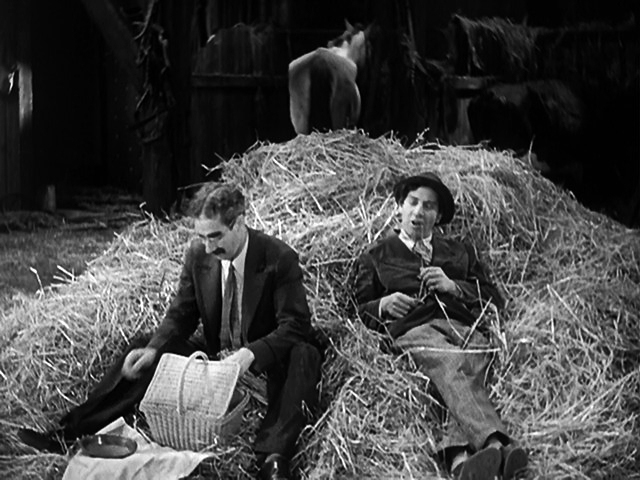 The picnic-in-a-barn scene in Monkey Business is fluff. Trying to save a gangster’s daughter and his sweetheart Lucille, imprisoned in a barn, Groucho and Chico enter with picnic gear. Sitting on a pile of hay, Groucho spreads a white cloth and sets out tin...
The picnic-in-a-barn scene in Monkey Business is fluff. Trying to save a gangster’s daughter and his sweetheart Lucille, imprisoned in a barn, Groucho and Chico enter with picnic gear. Sitting on a pile of hay, Groucho spreads a white cloth and sets out tin...
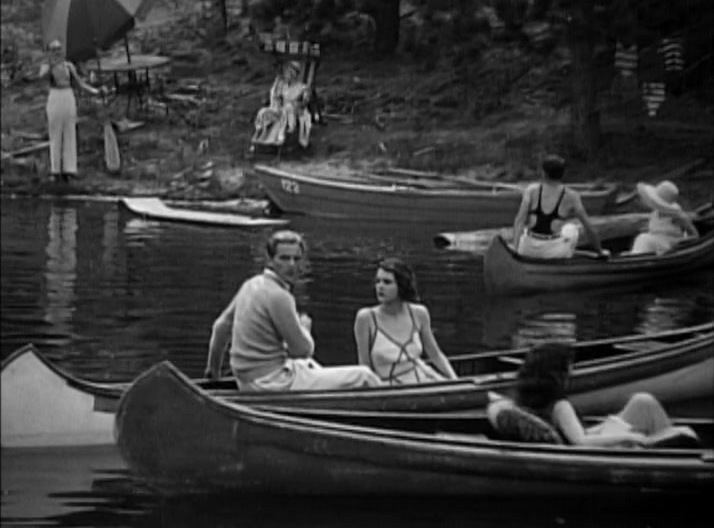 Dreiser disapproved of von Sternberg’s An American Tragedy. He argued Von Sternberg and screenwriter Samuel Hoffenstein played down the grinding forces of social and financial pressures and accentuated the love story of Clyde Griffiths’ infatuation with a wealthy...
Dreiser disapproved of von Sternberg’s An American Tragedy. He argued Von Sternberg and screenwriter Samuel Hoffenstein played down the grinding forces of social and financial pressures and accentuated the love story of Clyde Griffiths’ infatuation with a wealthy...
 Ford’s “Banquet at Calanques” makes his life in 1932 seem picnicky. He remembered that brilliant day and the “Homeric feast” enthusiastically. But by the time it was published in 1937, Ford was at various times ailing and depressed,...
Ford’s “Banquet at Calanques” makes his life in 1932 seem picnicky. He remembered that brilliant day and the “Homeric feast” enthusiastically. But by the time it was published in 1937, Ford was at various times ailing and depressed,...
 Rumor has it that at a studio script reading of Browning’s Freaks, Irving Thalberg, MGM’s production head, is reputed to exclaim, “I asked for something horrifying. Well, I got it.” But when Freaks was released, it failed. Unlike...
Rumor has it that at a studio script reading of Browning’s Freaks, Irving Thalberg, MGM’s production head, is reputed to exclaim, “I asked for something horrifying. Well, I got it.” But when Freaks was released, it failed. Unlike...
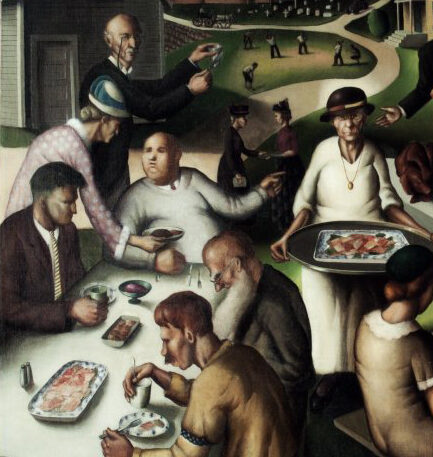 Sample’s Church Super is his judgment of his wife Sylvia’s hometown in Westmore, Vermont. It’s dour and static. The supper is ordinary, but many details tell otherwise. Though the minister calls the picnickers for grace, many are already eating. A...
Sample’s Church Super is his judgment of his wife Sylvia’s hometown in Westmore, Vermont. It’s dour and static. The supper is ordinary, but many details tell otherwise. Though the minister calls the picnickers for grace, many are already eating. A...
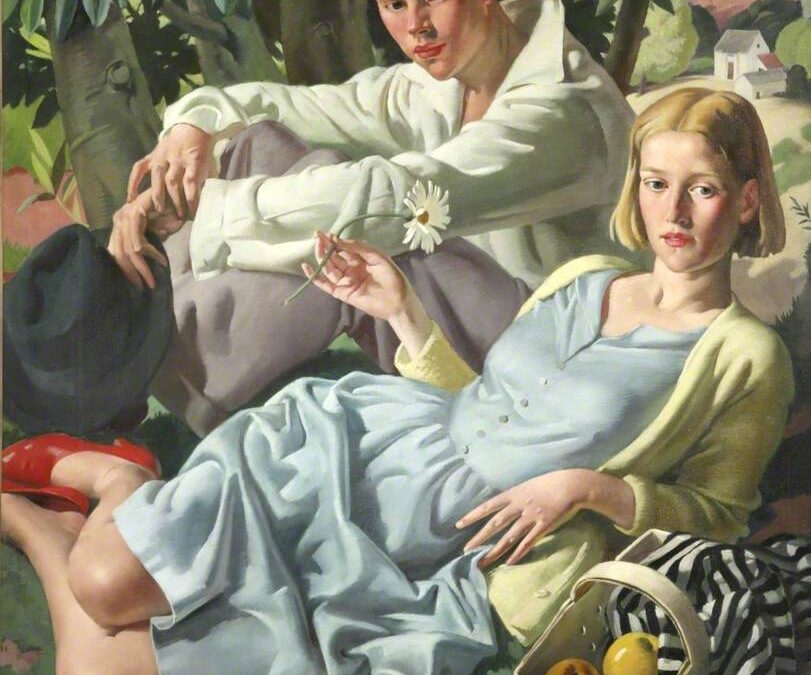 The poise of a young couple picnicking in Fleetwood-Walker’s Amity is ingratiating. The young man stares at the young woman, who looks lost in thought. She twirls a daisy, suggesting youth and innocence. The picnic basket beside her shows apples, a symbolic suggestion...
The poise of a young couple picnicking in Fleetwood-Walker’s Amity is ingratiating. The young man stares at the young woman, who looks lost in thought. She twirls a daisy, suggesting youth and innocence. The picnic basket beside her shows apples, a symbolic suggestion...
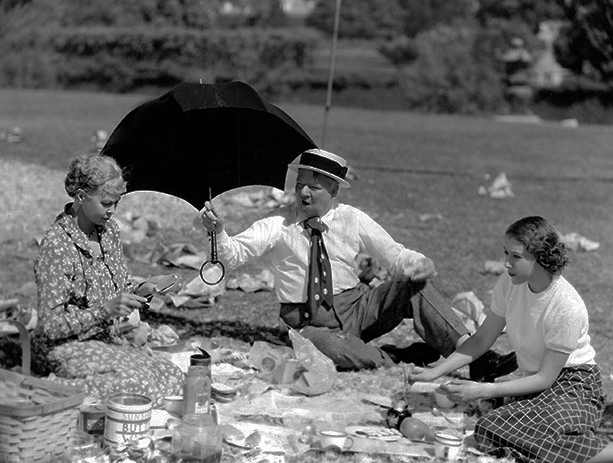 McLeod’s It’s a Gift is a testament to W.C. Fields’s comic skill, making a picnic an utterly war zone. On their way west to California, the Bissonettes pronounced bis-on-nay and stopped for a picnic lunch. Blithely ignoring a “Private Property...
McLeod’s It’s a Gift is a testament to W.C. Fields’s comic skill, making a picnic an utterly war zone. On their way west to California, the Bissonettes pronounced bis-on-nay and stopped for a picnic lunch. Blithely ignoring a “Private Property...
 Betty Boop, a pretty, silly woman with a sense of humor, was created by Max Fleischer but drawn by Bud Counihan. Among the cartoon strip episodes is a picnic poking self-deprecating fun at Betty’s career as a movie star, “And I’m to ride in this...
Betty Boop, a pretty, silly woman with a sense of humor, was created by Max Fleischer but drawn by Bud Counihan. Among the cartoon strip episodes is a picnic poking self-deprecating fun at Betty’s career as a movie star, “And I’m to ride in this...
 The label tells all.
The label tells all.
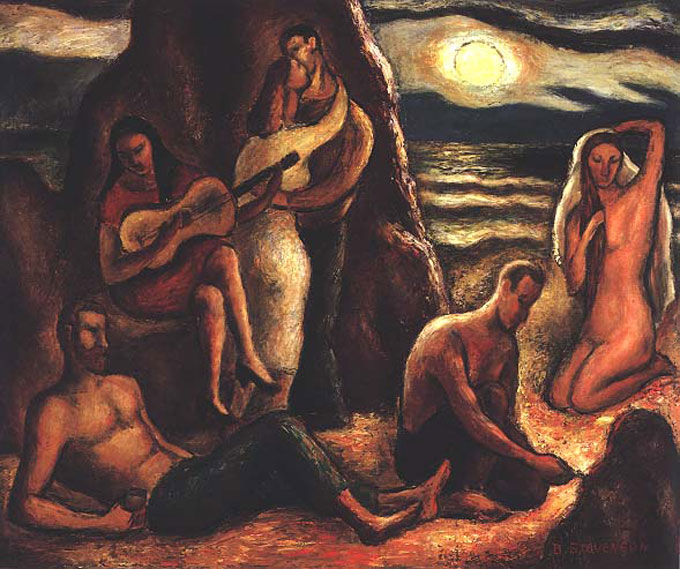 Deim’s The Beach Picnic is a portrait of the Cannery Row crowd in Monterey, California. Among the picnickers are John Steinbeck, the kneeling figure lighting the fire, Ed Rickets (bearded) and reclining with a beer in hand, Deim playing the guitar, looks down at...
Deim’s The Beach Picnic is a portrait of the Cannery Row crowd in Monterey, California. Among the picnickers are John Steinbeck, the kneeling figure lighting the fire, Ed Rickets (bearded) and reclining with a beer in hand, Deim playing the guitar, looks down at...
 The Bride of Frankenstein is a sequel to Whale’s Frankenstein. It was received as a horror film and was generally highly regarded by critics. But on close viewing, it’s a screwball comedy—a campy hodgepodge of satire that Whale and screenwriters William...
The Bride of Frankenstein is a sequel to Whale’s Frankenstein. It was received as a horror film and was generally highly regarded by critics. But on close viewing, it’s a screwball comedy—a campy hodgepodge of satire that Whale and screenwriters William...
 The Green Pastures imagines an eternal fish-fry-picnic in a Heaven inhabited only by African Americans. It’s a faithful adaptation of Ol’ Man Adam, Roark Bradford’s racist version of the Old Testament episodes told from a supposed African American...
The Green Pastures imagines an eternal fish-fry-picnic in a Heaven inhabited only by African Americans. It’s a faithful adaptation of Ol’ Man Adam, Roark Bradford’s racist version of the Old Testament episodes told from a supposed African American...
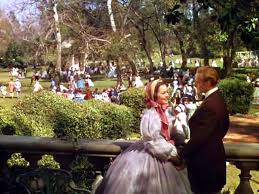 Scarlett O’Hara’s first encounter with Rhett Butler is an April picnic at the Wilkes family’s Twelve Oaks plantation. It’s only days before the Civil War begins in Charleston, South Carolina (April 12, 1861), and the picnickers are oblivious to...
Scarlett O’Hara’s first encounter with Rhett Butler is an April picnic at the Wilkes family’s Twelve Oaks plantation. It’s only days before the Civil War begins in Charleston, South Carolina (April 12, 1861), and the picnickers are oblivious to...
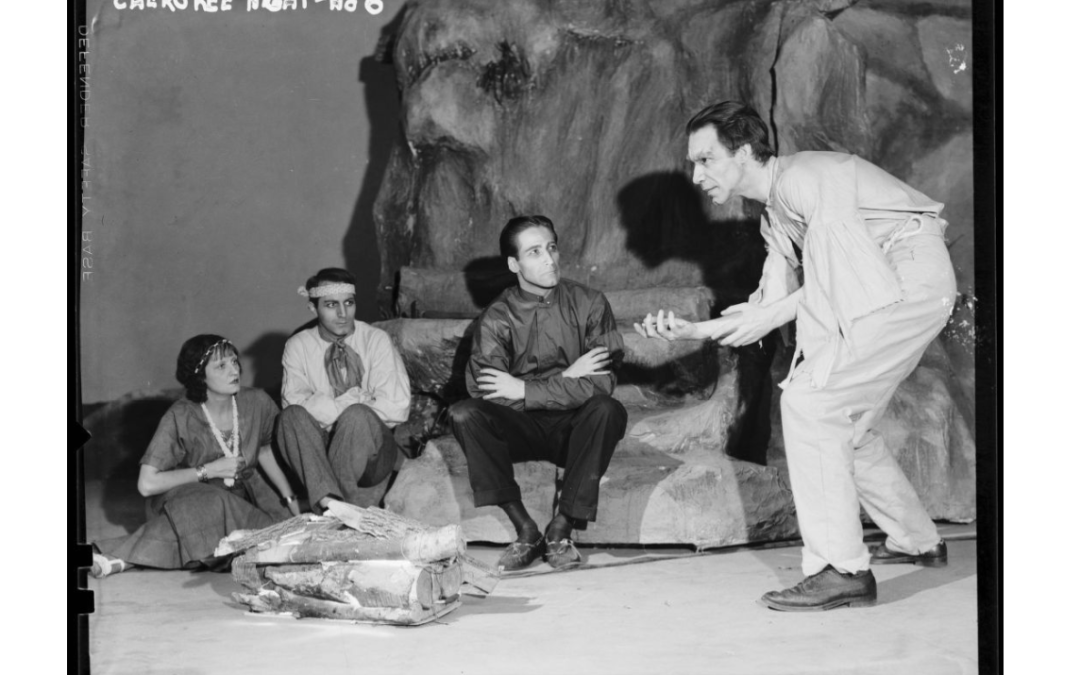 Riggs’s campfire picnic is atop Claremore Mound, a barren hill, 785 high that juts up from the flat landscape that was the scene of a battle between the Cherokees and the Osages. “At the right and forward, a fire burns. Three couples–boys and...
Riggs’s campfire picnic is atop Claremore Mound, a barren hill, 785 high that juts up from the flat landscape that was the scene of a battle between the Cherokees and the Osages. “At the right and forward, a fire burns. Three couples–boys and...
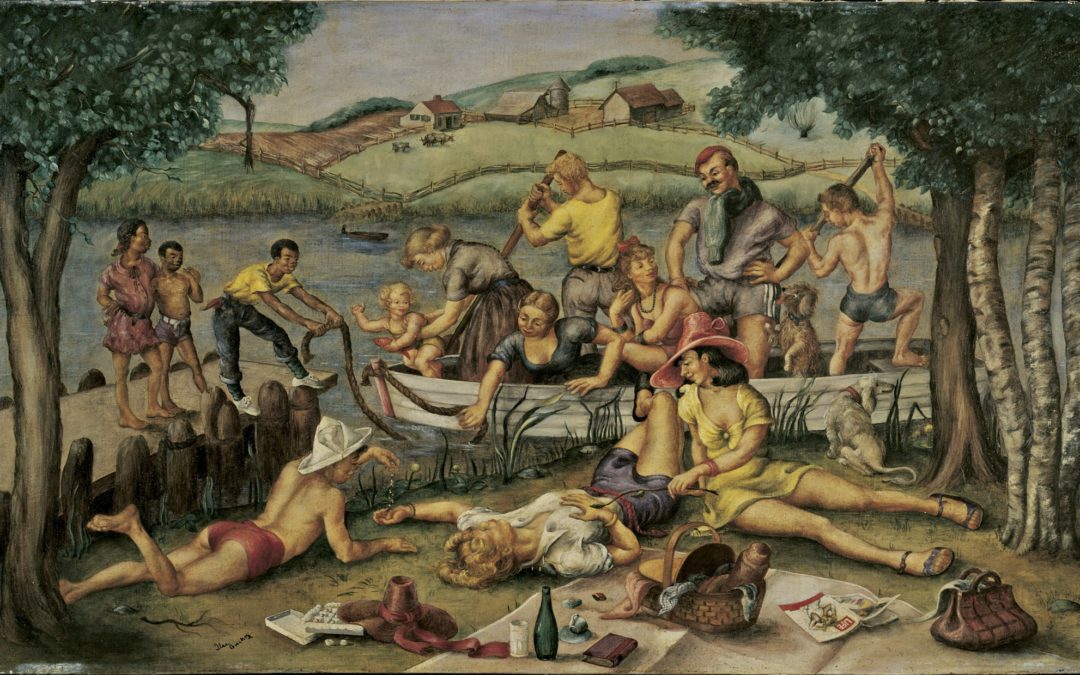 Bischoff’s Picnic on the River is a scene that alludes to a happy time. The picnic cloth is well-stocked with a wicker basket, and wine and food are surrounded by picnickers of all ages. The central character is the woman in yellow sitting beside the recumbent woman...
Bischoff’s Picnic on the River is a scene that alludes to a happy time. The picnic cloth is well-stocked with a wicker basket, and wine and food are surrounded by picnickers of all ages. The central character is the woman in yellow sitting beside the recumbent woman...
![Lee Miller’s Picnic [Ile Sainte-Marguerite] (1937)](https://picnicwit.com/wp-content/uploads/2021/11/Lee-Miller.-Picnic-Ile-Sainte-Marguerite-1937--700x675.jpg) Miller’s Picnic (1937) is a photograph lovers’s gossip. At the time, Miller seemed to think of it as just another snapshot, but it’s now among her best sellers. In the summer of 1937, Miller and Roland Penrose, her lover, lived in Mougins, a village above Cannes near...
Miller’s Picnic (1937) is a photograph lovers’s gossip. At the time, Miller seemed to think of it as just another snapshot, but it’s now among her best sellers. In the summer of 1937, Miller and Roland Penrose, her lover, lived in Mougins, a village above Cannes near...
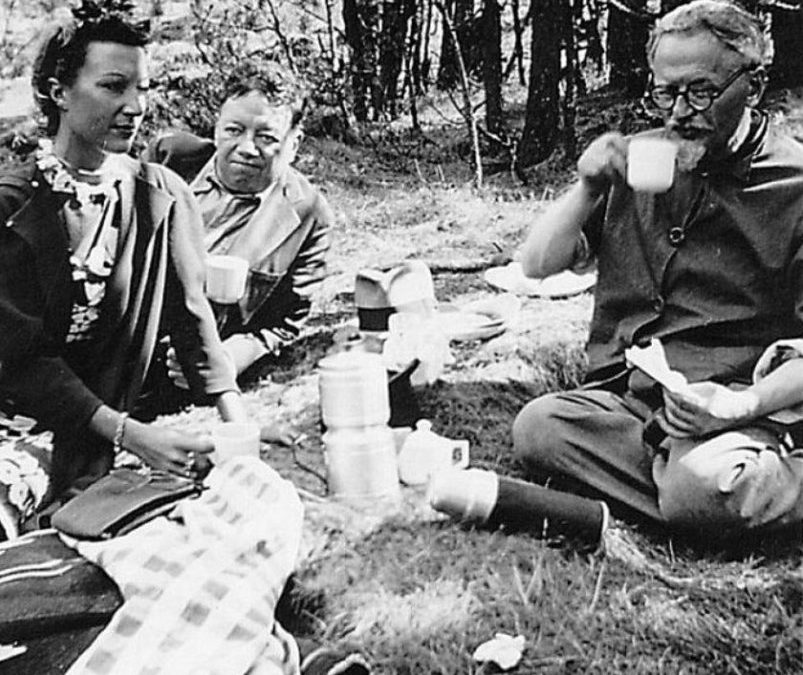 Exiled in Mexico City, Trotsky and his wife, Natalia, loved to picnic. It was one means of enjoying a sense of freedom, though he was guarded even them. James T. Farrell writes, “At the picnic, Trotsky and Natalia went off to walk in the woods in opposite directions....
Exiled in Mexico City, Trotsky and his wife, Natalia, loved to picnic. It was one means of enjoying a sense of freedom, though he was guarded even them. James T. Farrell writes, “At the picnic, Trotsky and Natalia went off to walk in the woods in opposite directions....
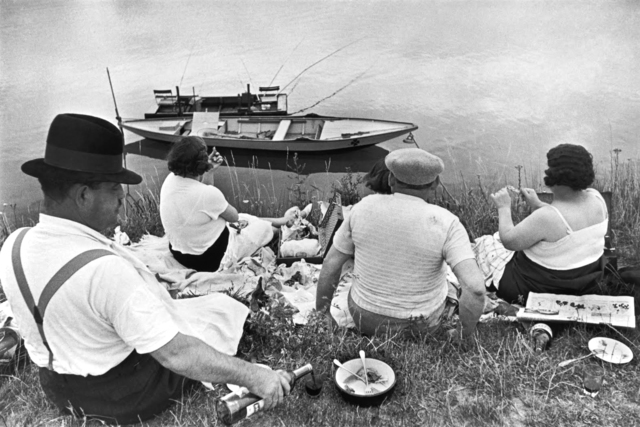 Cartier-Bresson is noted for his quick images taken as they happen. His1952 book on photography, The Decisive Moment, is a more elegant translation of the French title Images à la sauvette, Images on the Sly. Sunday on the Marne captures the spontaneity of a picnic....
Cartier-Bresson is noted for his quick images taken as they happen. His1952 book on photography, The Decisive Moment, is a more elegant translation of the French title Images à la sauvette, Images on the Sly. Sunday on the Marne captures the spontaneity of a picnic....
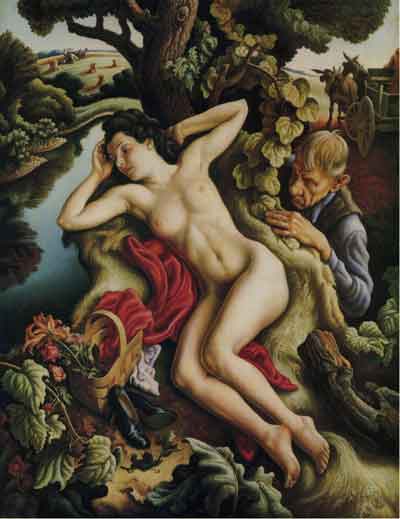 Persephone’s abduction by Hades, sometimes Pluto, is rife with sexual predation and seasonal change. In Theogony, Hesiod says that while gathering asphodels with the daughters of Oceanus, Persephone is abducted and taken to Hades, where she rules as the Iron Queen....
Persephone’s abduction by Hades, sometimes Pluto, is rife with sexual predation and seasonal change. In Theogony, Hesiod says that while gathering asphodels with the daughters of Oceanus, Persephone is abducted and taken to Hades, where she rules as the Iron Queen....
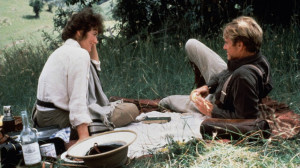 Blixen’s Out of Africa is a memoir without picnics. But Sidney Pollack and his screenwriter Kurt Luedke have added two picnic episodes that reveal Blixen’s characteristic vanity and romantic nature. See Isak Dinesen [Karen Blixen]. Out of Africa (New York:...
Blixen’s Out of Africa is a memoir without picnics. But Sidney Pollack and his screenwriter Kurt Luedke have added two picnic episodes that reveal Blixen’s characteristic vanity and romantic nature. See Isak Dinesen [Karen Blixen]. Out of Africa (New York:...
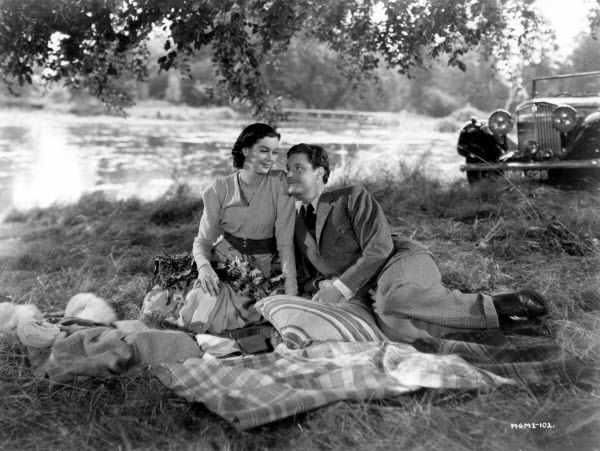 Following Cronin’s, The Citadel, Vidor understands how central the picnic episode is for exploring how success and money distort the lives of Andrew and Elizabeth Manson. Once idealistic, Dr. Andrew Manson has gone over to the dark side, considering money more...
Following Cronin’s, The Citadel, Vidor understands how central the picnic episode is for exploring how success and money distort the lives of Andrew and Elizabeth Manson. Once idealistic, Dr. Andrew Manson has gone over to the dark side, considering money more...
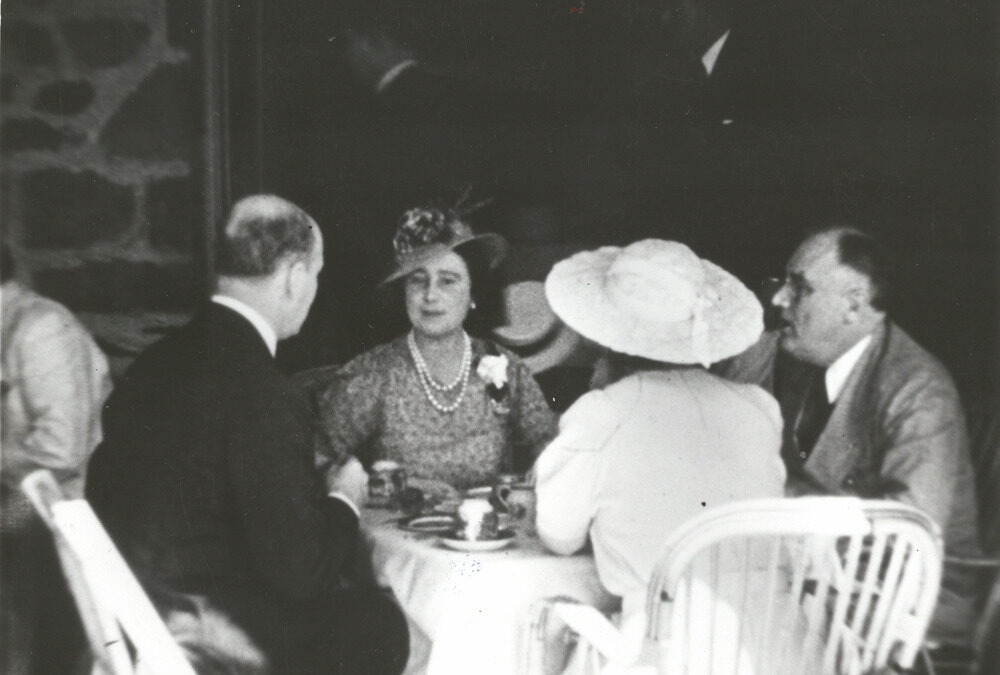 FDR’s Hyde Park picnic is still news sixty years after. Memorable, too, are Great Britain’s King George VI and Queen Elizabeth, first-time visitors to the United States and their first hot dogs. The picnic was an informal diplomatic affair for 150 guests...
FDR’s Hyde Park picnic is still news sixty years after. Memorable, too, are Great Britain’s King George VI and Queen Elizabeth, first-time visitors to the United States and their first hot dogs. The picnic was an informal diplomatic affair for 150 guests...
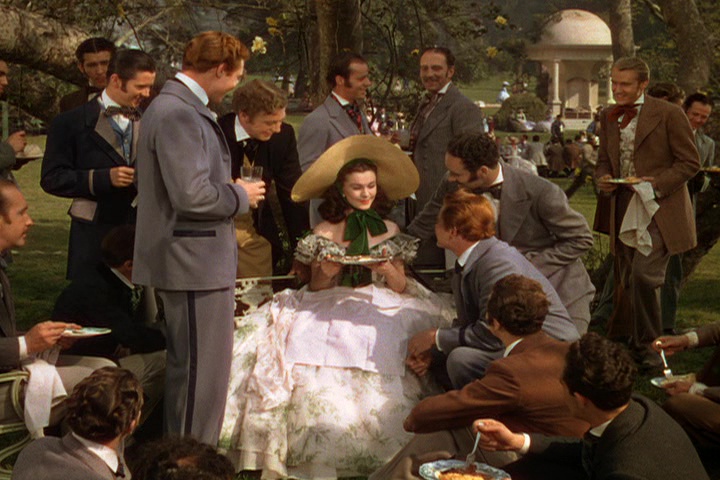 Arriving at Twelve Oaks garden party, Gerald O’Hara is pleased to say, “Well, John Wilkes, it’s a grand day you’ll be havin’ for the barbecue.” It’s momentous because it is the beginning of Scarlett and Rhett Butler’s...
Arriving at Twelve Oaks garden party, Gerald O’Hara is pleased to say, “Well, John Wilkes, it’s a grand day you’ll be havin’ for the barbecue.” It’s momentous because it is the beginning of Scarlett and Rhett Butler’s...
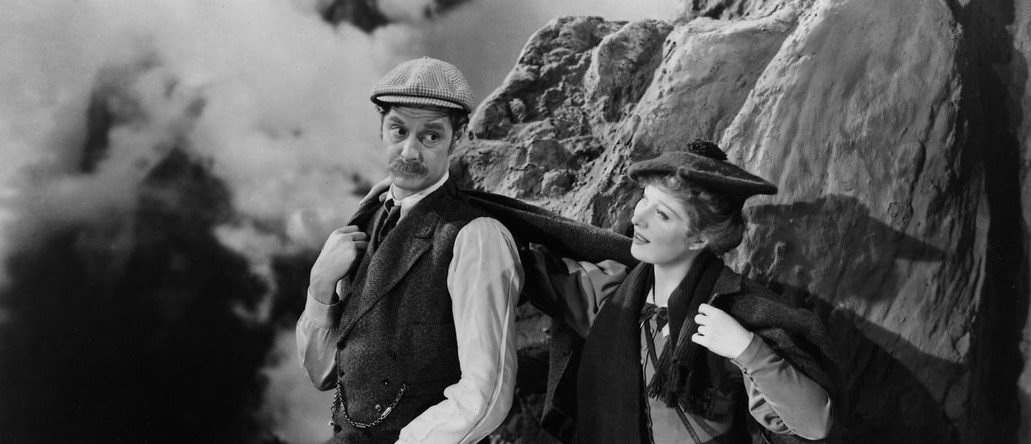 Wood’s romantic picnic on a mountain in Goodbye, Mr. Chips is his idea. James Hilton’s Charles Chipping and Katherine Ellis meet while hiking in the Lake District, fall “head over heels in love,” and marry soon after. Wood sets the mountain...
Wood’s romantic picnic on a mountain in Goodbye, Mr. Chips is his idea. James Hilton’s Charles Chipping and Katherine Ellis meet while hiking in the Lake District, fall “head over heels in love,” and marry soon after. Wood sets the mountain...
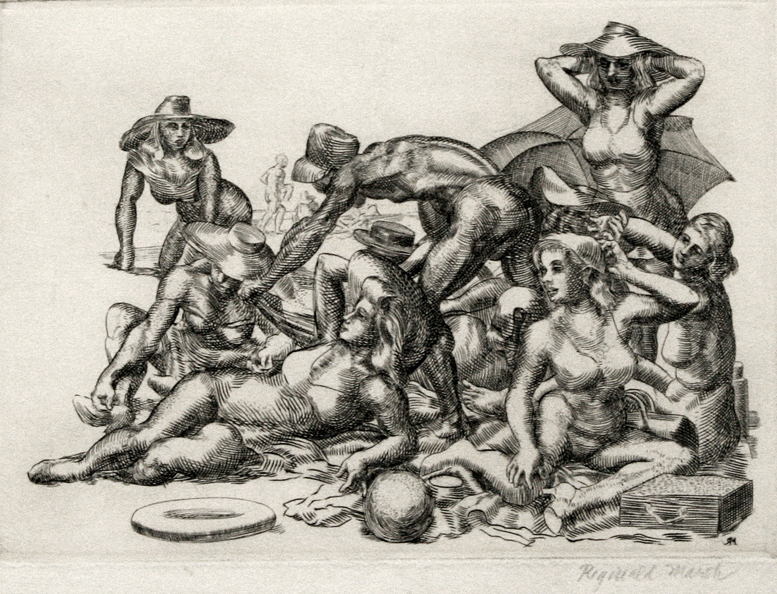 This is a favorite among Marsh’s Coney Island images. In this instance, a collection of Venuses. Compare it with John Sloan’s South Beach Bathers and Mabel Dwight’s Coney Island Beach. Featured Image: Beach Picnic (1939). Engraving.
This is a favorite among Marsh’s Coney Island images. In this instance, a collection of Venuses. Compare it with John Sloan’s South Beach Bathers and Mabel Dwight’s Coney Island Beach. Featured Image: Beach Picnic (1939). Engraving.
 When the WPA commissioned Rummler, Works Project Administration, to paint a mural for Norwalk’s City Hall, his preferred topic was picnicking at Calf Pasture Beach. It was a favorite town locale and an emblem of Norwalk’s community’s spirit. The...
When the WPA commissioned Rummler, Works Project Administration, to paint a mural for Norwalk’s City Hall, his preferred topic was picnicking at Calf Pasture Beach. It was a favorite town locale and an emblem of Norwalk’s community’s spirit. The...
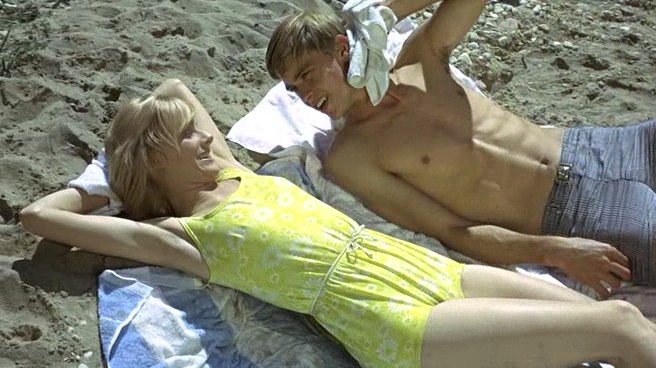 McCullers The Heart is a Lonely Hunter (1940) first-time sexual encounter, Mick Kelly (13), and Harry Minowitz (15), a “Jew boy” with horn-rimmed glasses. Mick is taller than Harry. She’s 5’3″ and 103 pounds. He’s a couple of inches...
Wolcott’s tables for St. Thomas’s Church picnic is similar to Nell Choate Jones’s 1945 Church Supper but differ from William Clary’s picnic on the grounds in Valentines, Virginia. See Marion Post Wolcott. Table in picnic grove set for St. Thomas Church supper near...
McCullers The Heart is a Lonely Hunter (1940) first-time sexual encounter, Mick Kelly (13), and Harry Minowitz (15), a “Jew boy” with horn-rimmed glasses. Mick is taller than Harry. She’s 5’3″ and 103 pounds. He’s a couple of inches...
Wolcott’s tables for St. Thomas’s Church picnic is similar to Nell Choate Jones’s 1945 Church Supper but differ from William Clary’s picnic on the grounds in Valentines, Virginia. See Marion Post Wolcott. Table in picnic grove set for St. Thomas Church supper near...
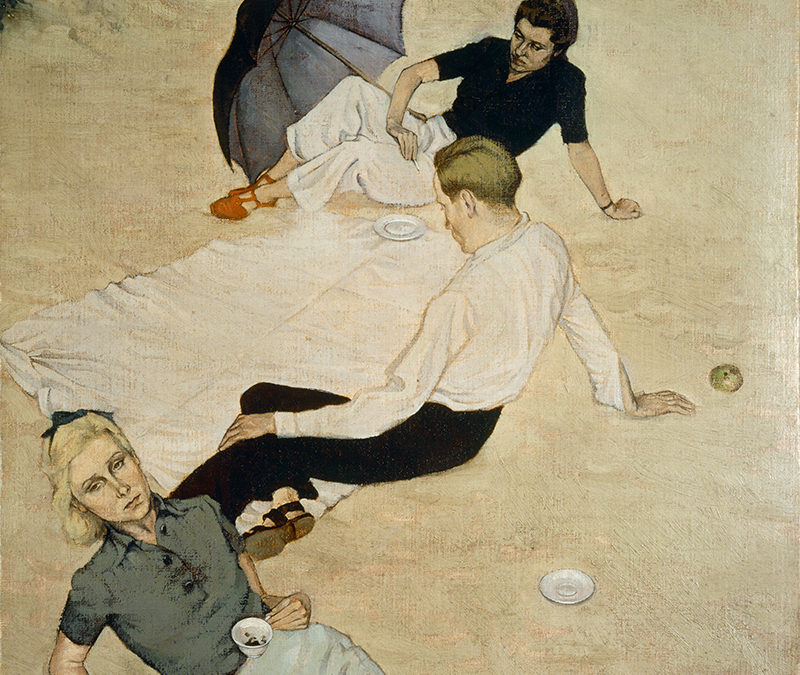 Le Brocquy’s second wife, Anne Madden, remembers that the model in A Picnic was a friend. She preferred not to remember the woman in black and white (next to the umbrella) is Le Brocquy’s first wife, Jane Stoney. (She’s the same pensive woman in the portrait The Woman...
Le Brocquy’s second wife, Anne Madden, remembers that the model in A Picnic was a friend. She preferred not to remember the woman in black and white (next to the umbrella) is Le Brocquy’s first wife, Jane Stoney. (She’s the same pensive woman in the portrait The Woman...
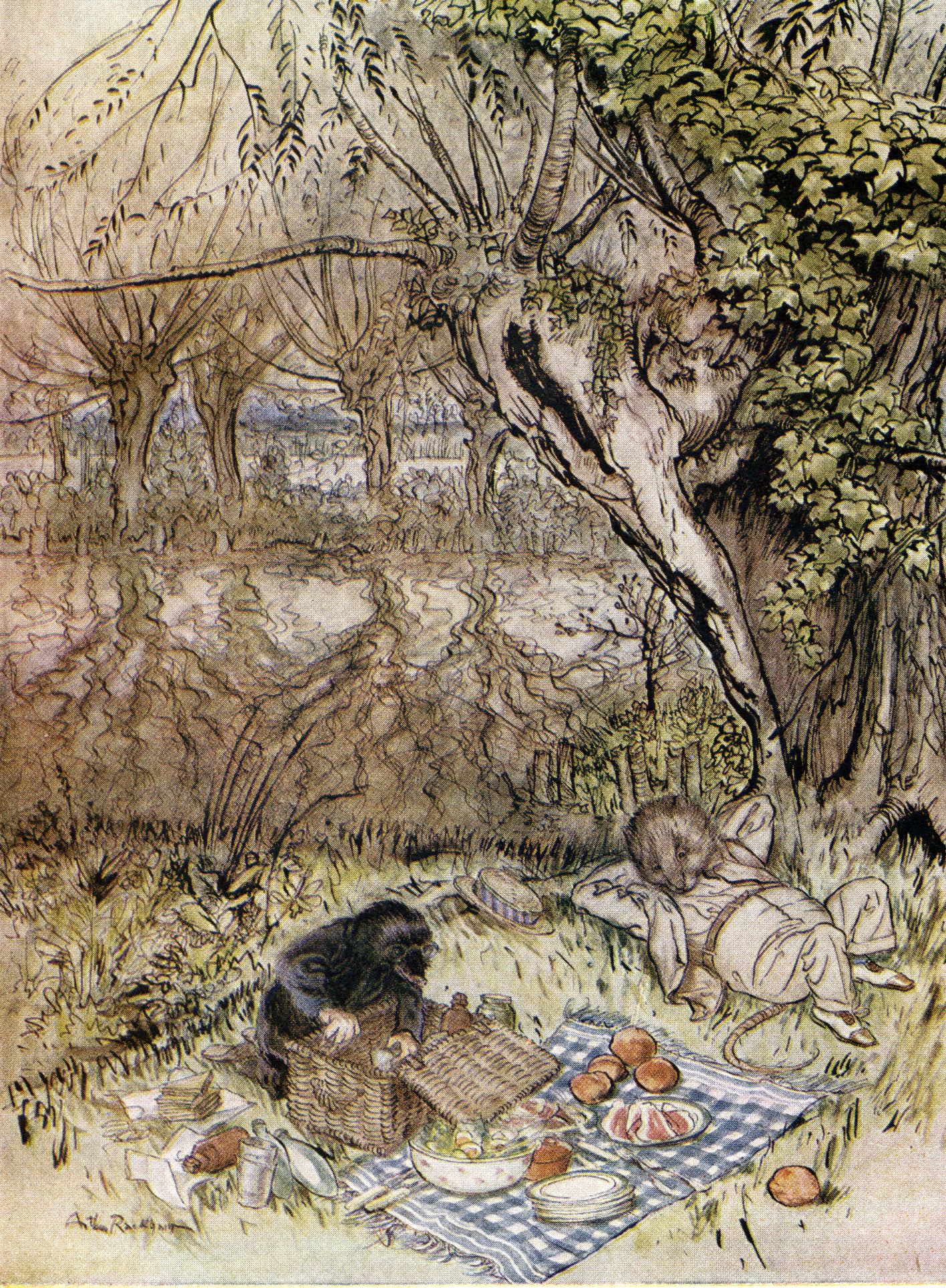 Rackham’s final project was a set of illustrations for Kenneth Grahame’s The Wind in the Willows. He was suffering from rheumatism and dying of cancer. Yet, he completed a series of twelve scenes, two of which are of Ratty and Mole’s picnic on the...
Rackham’s final project was a set of illustrations for Kenneth Grahame’s The Wind in the Willows. He was suffering from rheumatism and dying of cancer. Yet, he completed a series of twelve scenes, two of which are of Ratty and Mole’s picnic on the...
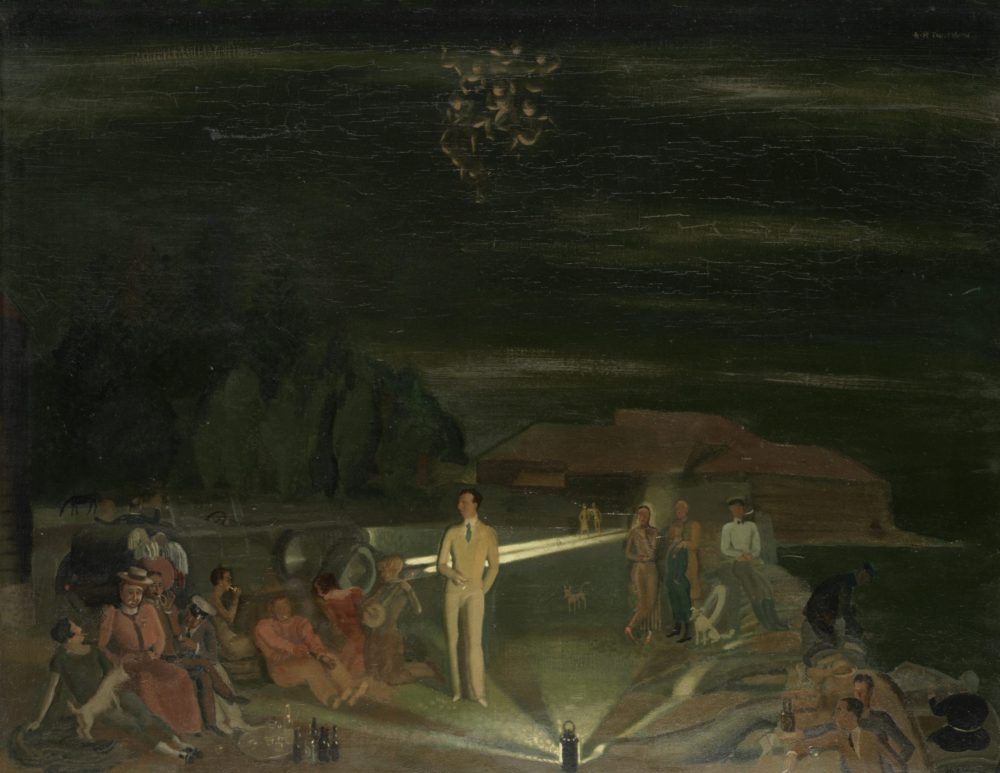 There is a story here, but I don’t know it. See Alfred Reginald Thompson. Evening Picnic (Undated). Oil on canvas.
There is a story here, but I don’t know it. See Alfred Reginald Thompson. Evening Picnic (Undated). Oil on canvas.
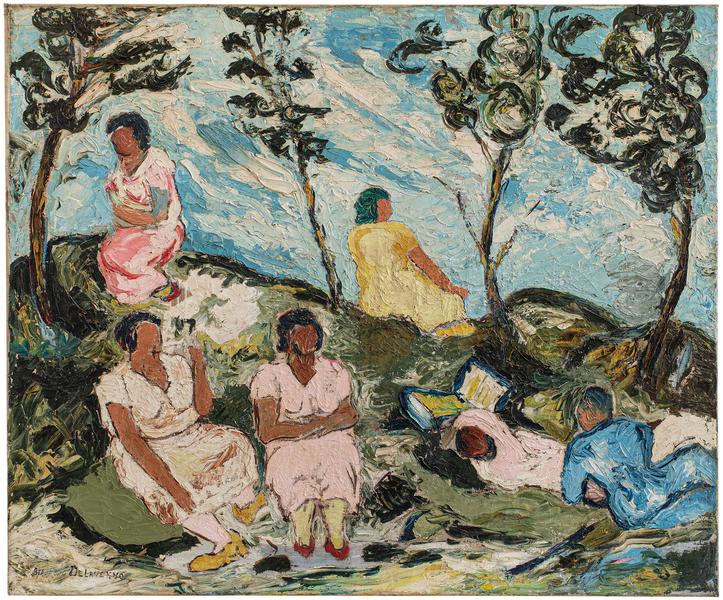 Delaney‘s paintings during the Harlem Renaissance in the 1930s and 1940s were figurative. Over time, he shifted to abstraction during his life in Paris in the 1950s. Both The Picnic and Distant Horizons are no-food picnics. Featured Image: The Picnic. Oil on canvas....
Delaney‘s paintings during the Harlem Renaissance in the 1930s and 1940s were figurative. Over time, he shifted to abstraction during his life in Paris in the 1950s. Both The Picnic and Distant Horizons are no-food picnics. Featured Image: The Picnic. Oil on canvas....
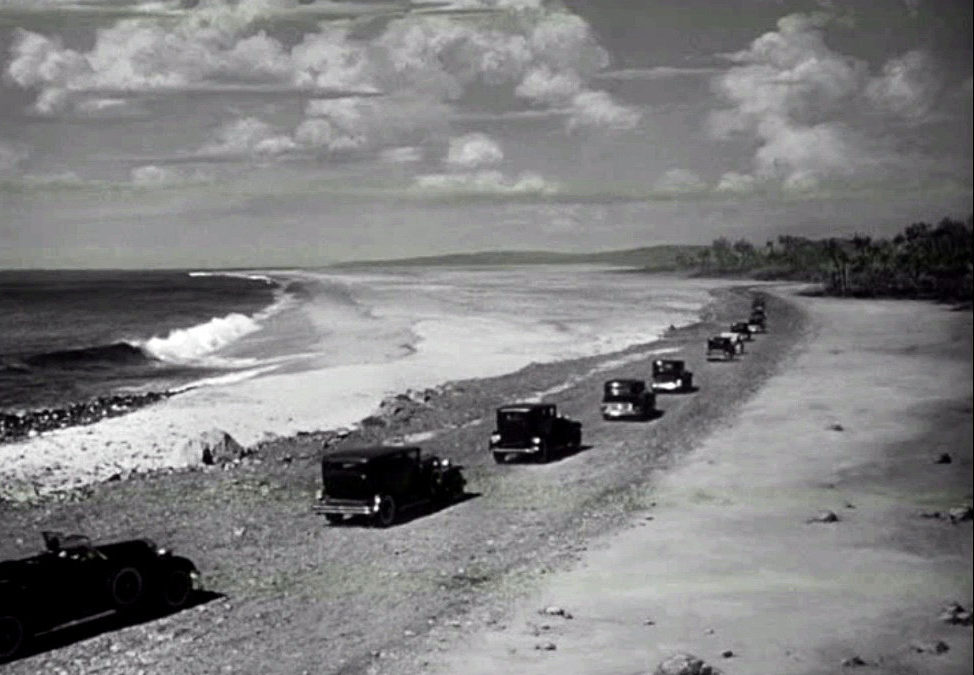 Only 2:07 seconds of screen time, but it’s an unpleasant crackling picnic that ends with a slap in the face. Despite the southern Florida heat, Charles Foster Kane and Susan Alexander are lounging by a crackling fireplace in Xanadu, their palatial estate: he in...
Only 2:07 seconds of screen time, but it’s an unpleasant crackling picnic that ends with a slap in the face. Despite the southern Florida heat, Charles Foster Kane and Susan Alexander are lounging by a crackling fireplace in Xanadu, their palatial estate: he in...
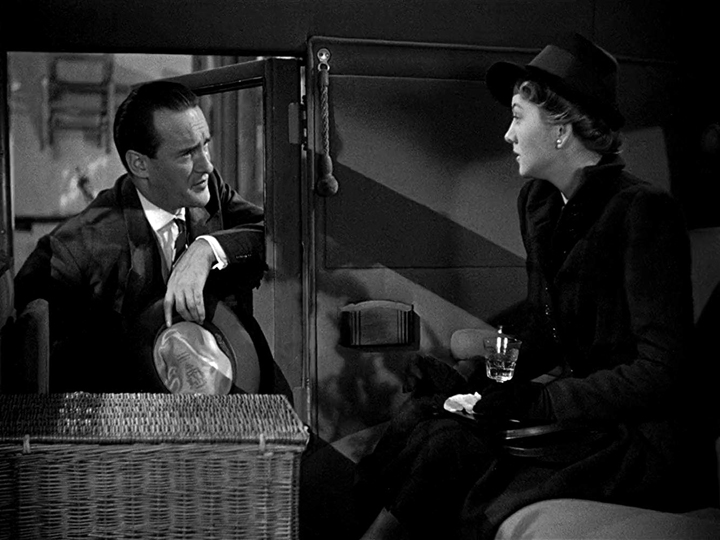 Hitchcock added a picnic to the screenplay of Rebecca to reveal Jack Flavell’s intention to blackmail Max De Winter for the murder of his deceased wife, Rebecca. Flavell’s disquieting revelation occurs on the day of the inquest regarding Rebecca’s...
Hitchcock added a picnic to the screenplay of Rebecca to reveal Jack Flavell’s intention to blackmail Max De Winter for the murder of his deceased wife, Rebecca. Flavell’s disquieting revelation occurs on the day of the inquest regarding Rebecca’s...
 Three soldiers picnicking on the grass lookup watching antiaircraft fire. Their easy postures belie their anxiety. This jarring juxtaposition of peace and war in 1940 is Edward Ardizzone’s record of the Nazi air force lightning attacks on the English and French...
Three soldiers picnicking on the grass lookup watching antiaircraft fire. Their easy postures belie their anxiety. This jarring juxtaposition of peace and war in 1940 is Edward Ardizzone’s record of the Nazi air force lightning attacks on the English and French...
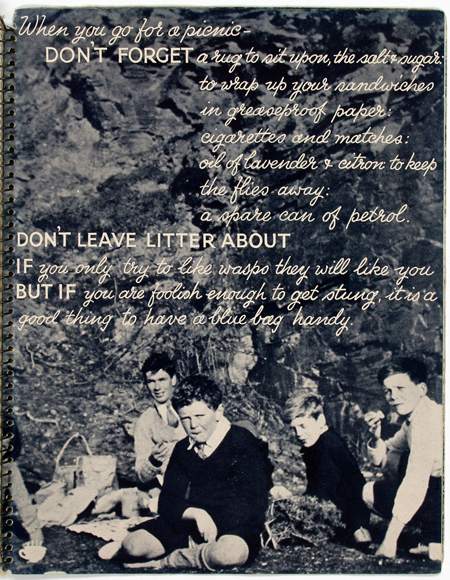 Betjeman’s picnics are filled with the nostalgia of his youth. The earliest appears in Cornwall (1934), a series of The Shell County Guides that he and John Beddington conceptualized. A photograph of boys at a picnic (perhaps Betjeman among them ) shows the group...
Betjeman’s picnics are filled with the nostalgia of his youth. The earliest appears in Cornwall (1934), a series of The Shell County Guides that he and John Beddington conceptualized. A photograph of boys at a picnic (perhaps Betjeman among them ) shows the group...
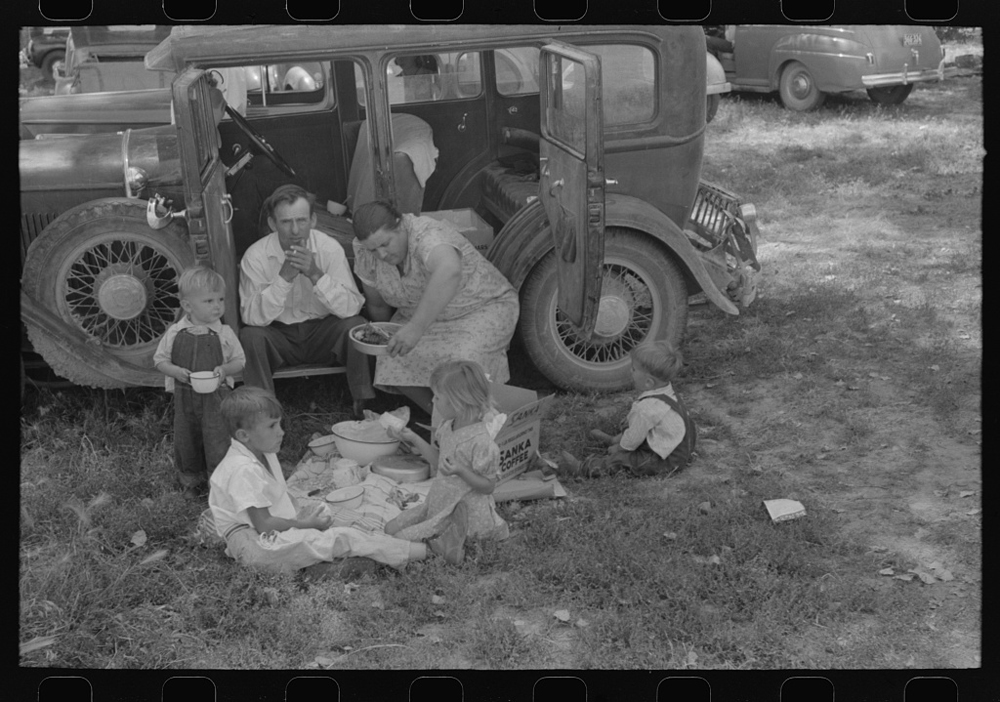 Lee’s A Family Picnic on the Fourth of July at Vale, Oregon (1941) is a photographic document of a family picnicking on the running board of their Ford. The doors are open, and Mom and Dad sit on the running boards. Children sit on the ground beside a picnic cloth....
Lee’s A Family Picnic on the Fourth of July at Vale, Oregon (1941) is a photographic document of a family picnicking on the running board of their Ford. The doors are open, and Mom and Dad sit on the running boards. Children sit on the ground beside a picnic cloth....
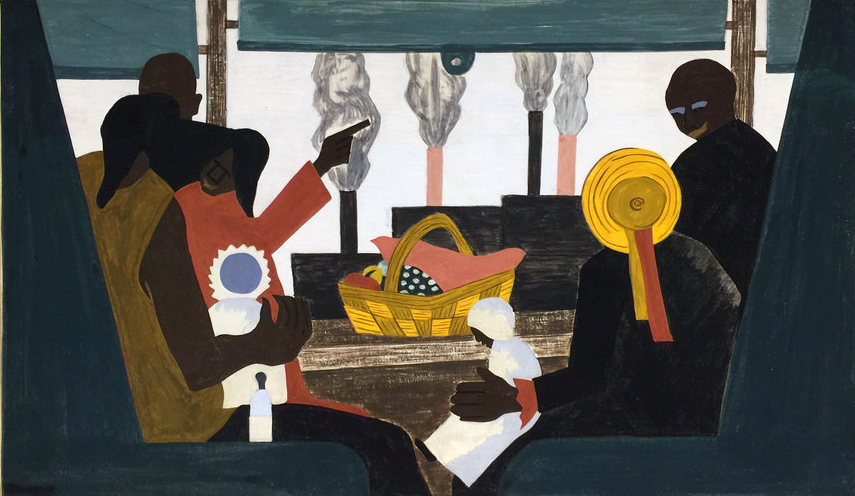 The yellow basket and the yellow summer hat in They Arrived in Pittsburgh suggest that there will be a picnic. The grimy factory stacks spewing smoke suggest otherwise. The basket and hat symbolize the hope that in Pittsburgh (or any other industrial city), the...
The yellow basket and the yellow summer hat in They Arrived in Pittsburgh suggest that there will be a picnic. The grimy factory stacks spewing smoke suggest otherwise. The basket and hat symbolize the hope that in Pittsburgh (or any other industrial city), the...
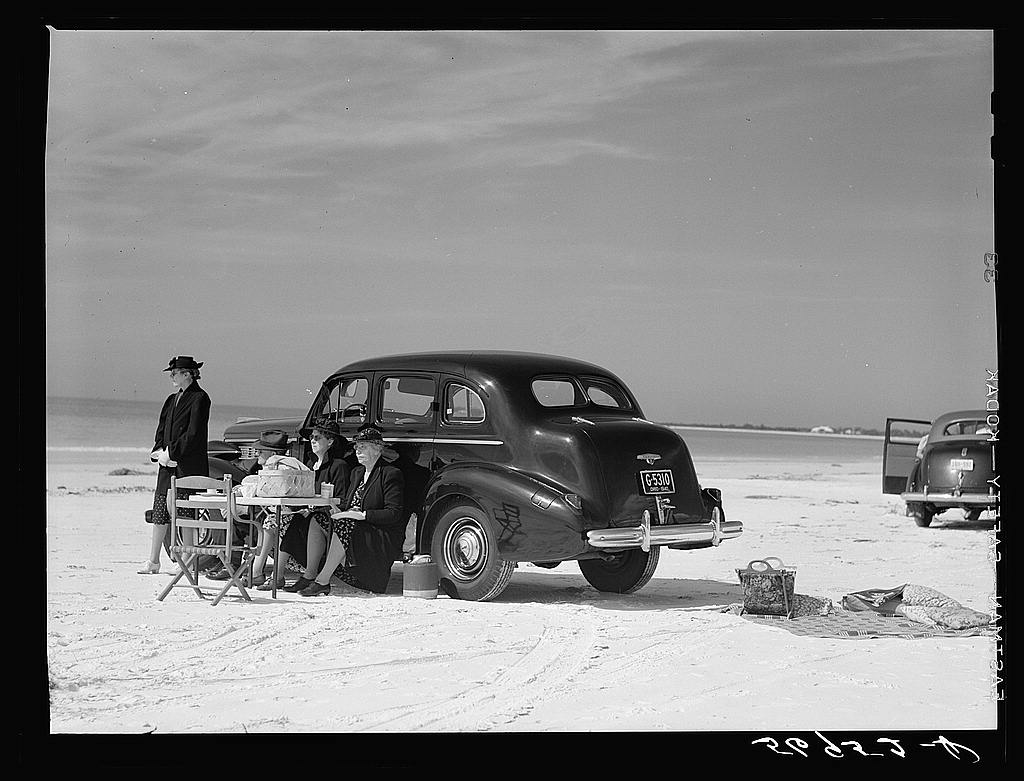 On a fantastic day in 1941, Wolcott photographed picnickers on the Sarasota beach. She was working for the Farm Services Administration, documenting contemporary American life. Among her subjects was picnicking, which she found in serval guises on the beach and...
On a fantastic day in 1941, Wolcott photographed picnickers on the Sarasota beach. She was working for the Farm Services Administration, documenting contemporary American life. Among her subjects was picnicking, which she found in serval guises on the beach and...
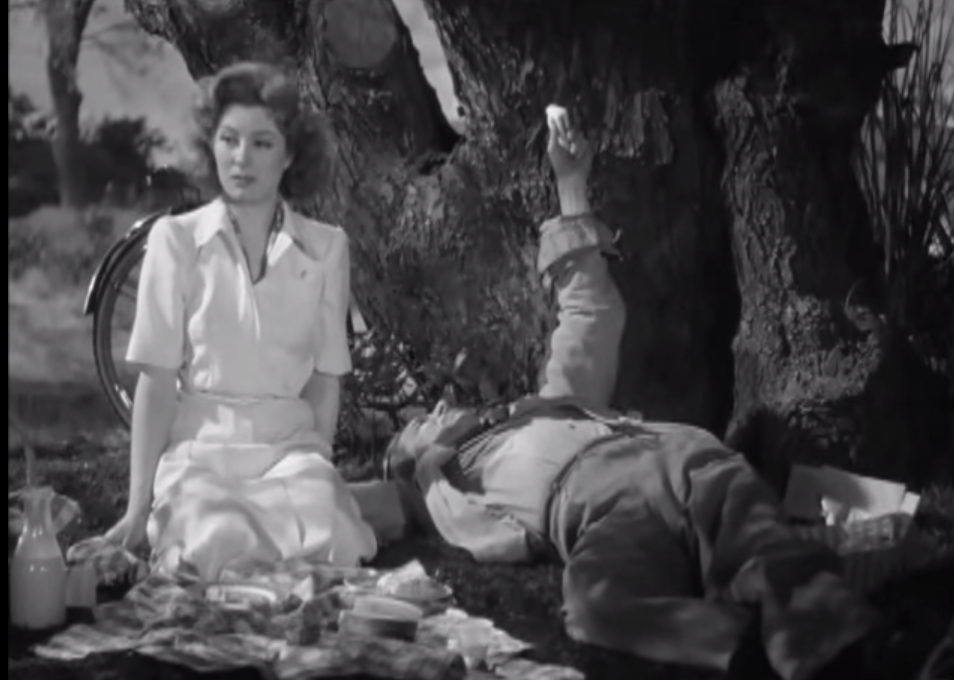 LeRoy’s Random Harvest picnic is phony. (It’s also original to the screenplay.) Smithy and Paula sit on fake grass beside an artificial stream with real goldfish. It’s props like these Nathaniel West had pulverized in his Hollywood satire The Day of...
LeRoy’s Random Harvest picnic is phony. (It’s also original to the screenplay.) Smithy and Paula sit on fake grass beside an artificial stream with real goldfish. It’s props like these Nathaniel West had pulverized in his Hollywood satire The Day of...
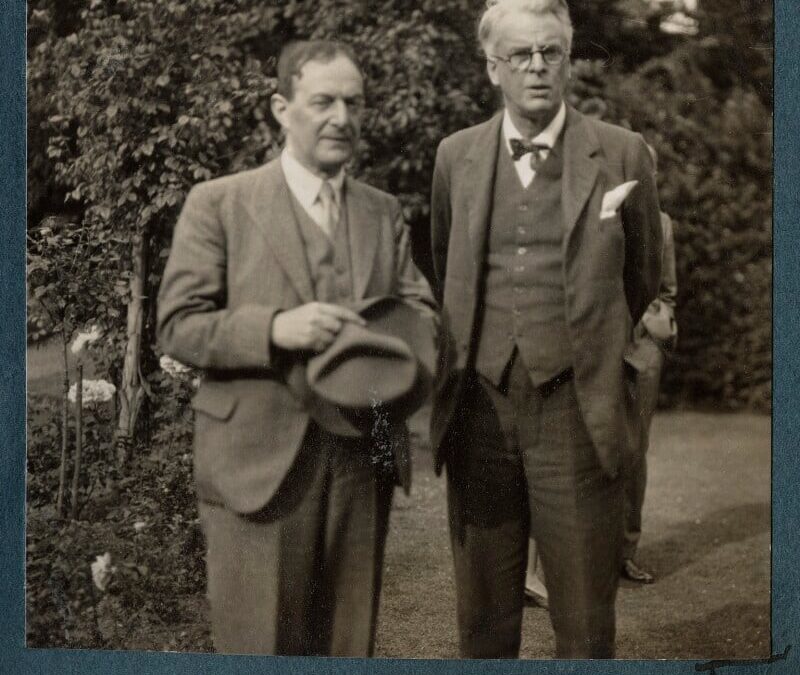 Alas, Miss Curtis has suffered a self-inflicted delusion, and she is crushed. Toting a bag of strawberry jam sandwiches and a tea thermos, Miss Curtiss sadly lost herself in a miasma of unrequited love while on a holiday picnic. Walter De La Mare’s “The...
Alas, Miss Curtis has suffered a self-inflicted delusion, and she is crushed. Toting a bag of strawberry jam sandwiches and a tea thermos, Miss Curtiss sadly lost herself in a miasma of unrequited love while on a holiday picnic. Walter De La Mare’s “The...
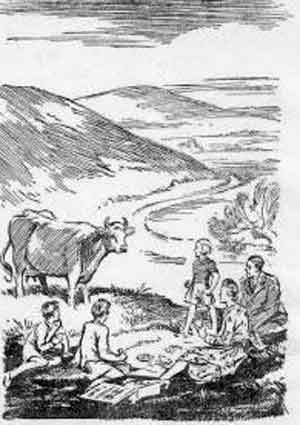 Some of us forget that Enid Blyton is among the top ten best-selling fiction authors of all time. Many, however, remember the phrase “lashings of ginger beer,” associated with her picnics that seems to exist in her Famous Five novels. The Famous Five drink...
Some of us forget that Enid Blyton is among the top ten best-selling fiction authors of all time. Many, however, remember the phrase “lashings of ginger beer,” associated with her picnics that seems to exist in her Famous Five novels. The Famous Five drink...
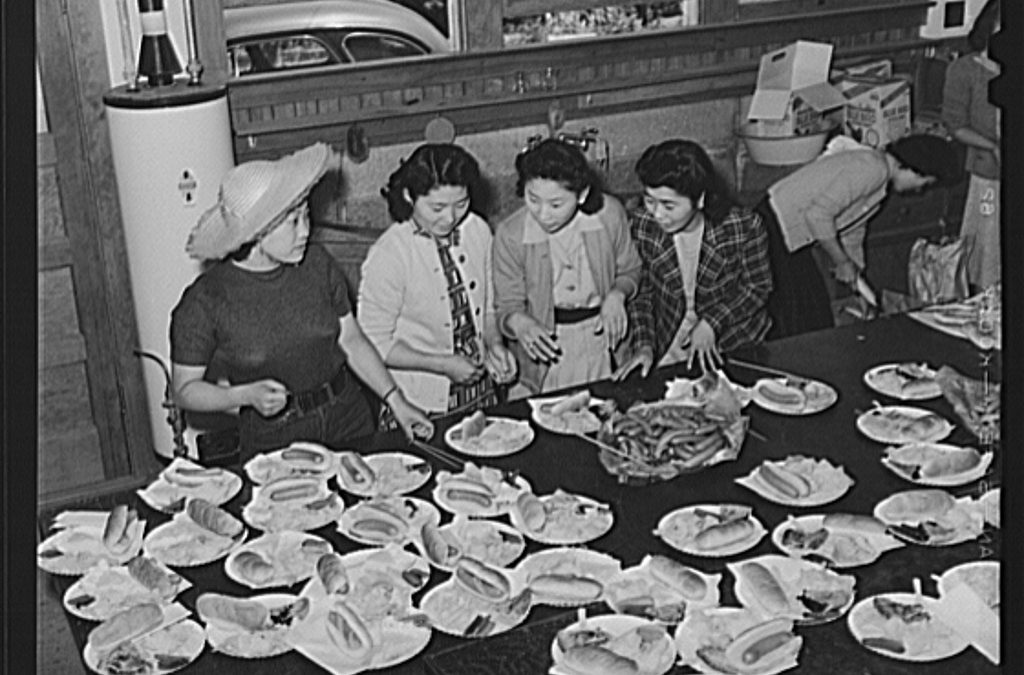 Succumbing to ethnic paranoia and anger, the United States Congress authorized President Franklin Roosevelt to intern Japanese Americans whether they were U.S. citizens or not. The law was signed in February. In May 1942, Lee documented some of the...
Succumbing to ethnic paranoia and anger, the United States Congress authorized President Franklin Roosevelt to intern Japanese Americans whether they were U.S. citizens or not. The law was signed in February. In May 1942, Lee documented some of the...
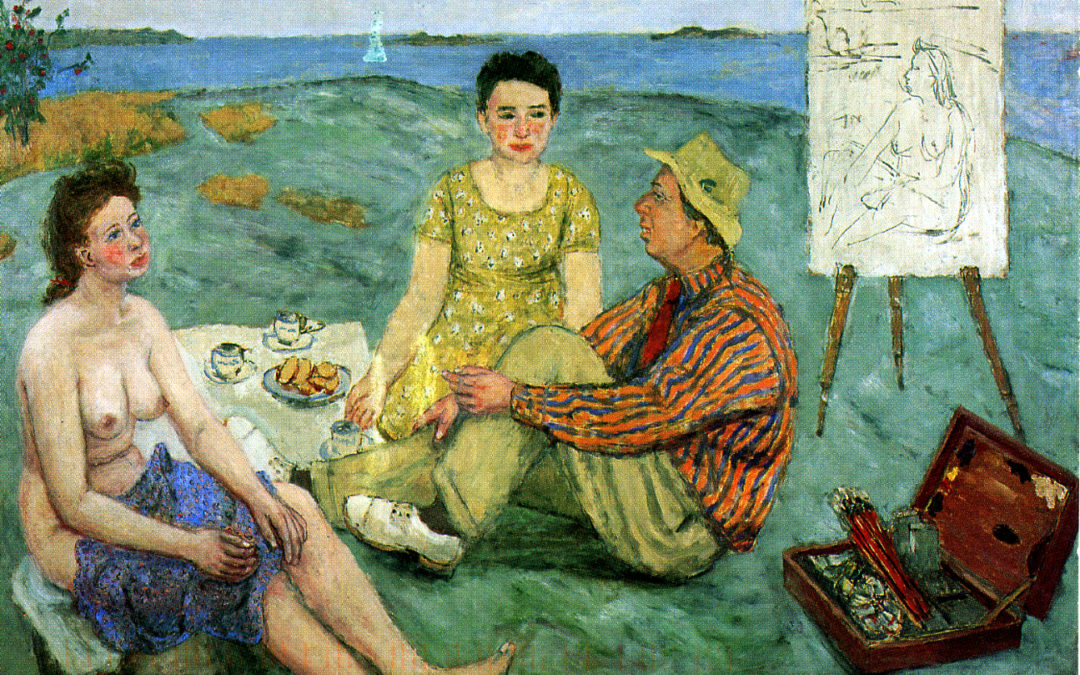 Birger Ljundqvist’s Siesta Hartsena is a portrait of the artist taking a break. It has the simple appearance of a pleasant summer scene on a bluff above the sea. On the other hand, it may be more complex if the two women are the same in a different guise, one nude and...
Birger Ljundqvist’s Siesta Hartsena is a portrait of the artist taking a break. It has the simple appearance of a pleasant summer scene on a bluff above the sea. On the other hand, it may be more complex if the two women are the same in a different guise, one nude and...
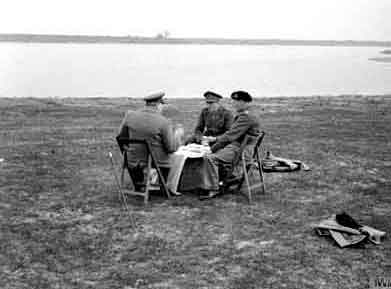 In February 1943, when the Allies defeated the Nazis in North Africa. To celebrate, Churchill flew to Tripoli for a victory parade. Enjoying the victory, Churchill, General Sir Bernard Montgomery, and other senior officers of the Eighth Army enjoyed a casual picnic...
In February 1943, when the Allies defeated the Nazis in North Africa. To celebrate, Churchill flew to Tripoli for a victory parade. Enjoying the victory, Churchill, General Sir Bernard Montgomery, and other senior officers of the Eighth Army enjoyed a casual picnic...
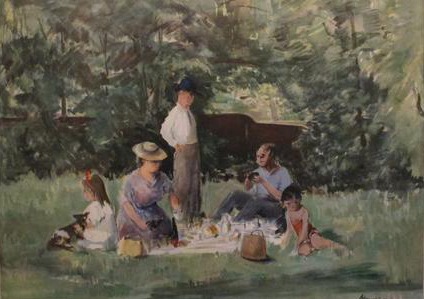 Moynihan’s Picnic was chosen as propaganda for the British Home Front in World War Two. As a war poster, it was displayed in factories and other facilities where war workers congregated as a reminder of the peace and happiness that would prevail when the war was...
Moynihan’s Picnic was chosen as propaganda for the British Home Front in World War Two. As a war poster, it was displayed in factories and other facilities where war workers congregated as a reminder of the peace and happiness that would prevail when the war was...
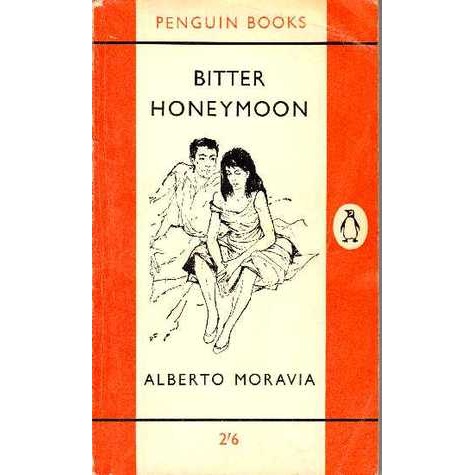 Moravia’s story’s “Back to the Sea” [Ritorno al mare] is about a picnic is without a shred of joy. It’s partly about gender relations and a metaphor for post-war Italy in the guise of a nightmare merénda, In the summer of 1945, Lorenzo,...
Moravia’s story’s “Back to the Sea” [Ritorno al mare] is about a picnic is without a shred of joy. It’s partly about gender relations and a metaphor for post-war Italy in the guise of a nightmare merénda, In the summer of 1945, Lorenzo,...
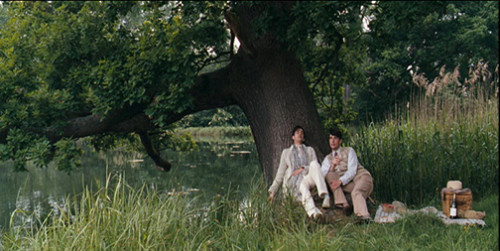 Slightly drunk, Sebastian Flyte looks up at the sky, remarking (mainly to himself), “Just the place to bury a crock of gold,” he says, “I should like to bury something precious in every place where I’ve been happy and then when I was old and ugly and miserable, I...
Slightly drunk, Sebastian Flyte looks up at the sky, remarking (mainly to himself), “Just the place to bury a crock of gold,” he says, “I should like to bury something precious in every place where I’ve been happy and then when I was old and ugly and miserable, I...
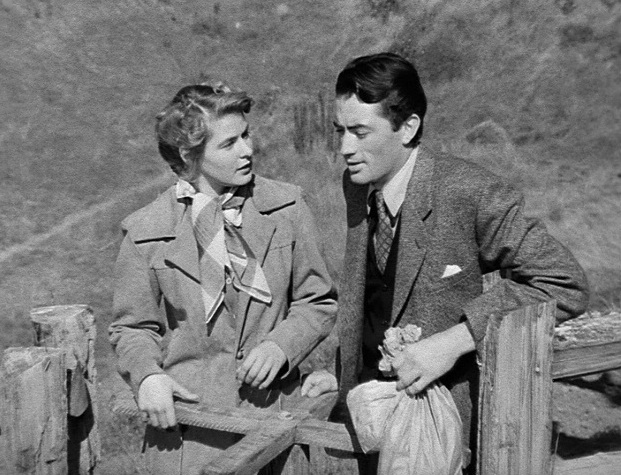 At the start of their picnic, Anthony Edwardes asks Constance Petersen about sandwiches. “Ham or liverwurst,” he asks. “Liverwurst,” Petersen silently replies with a knowing smile. Because Hitchcock cut the actual picnic from Spellbound, some...
At the start of their picnic, Anthony Edwardes asks Constance Petersen about sandwiches. “Ham or liverwurst,” he asks. “Liverwurst,” Petersen silently replies with a knowing smile. Because Hitchcock cut the actual picnic from Spellbound, some...
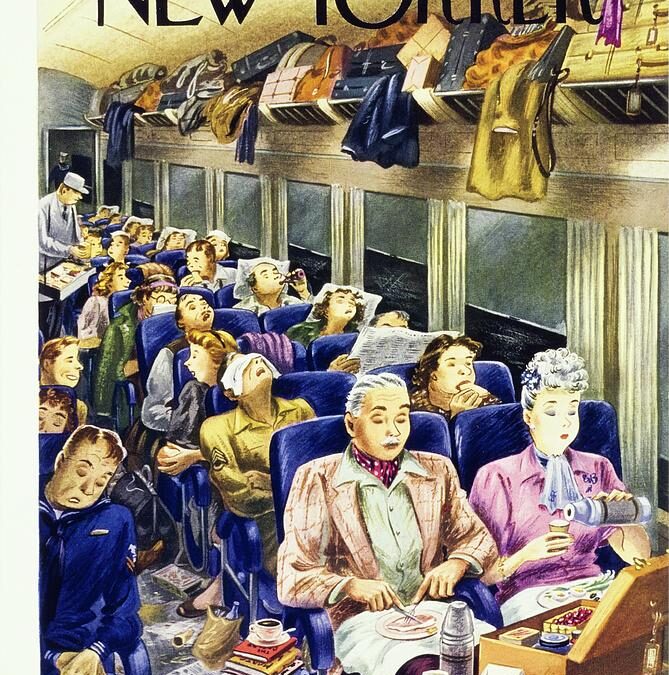 Alajálov commemorated the final year of World War II for The New Yorker (1945) magazine illustrating a coach of a passenger train filled with exhausted, sleeping soldiers and sailors, rumbling on in the dark, while a staid couple eats a picnic meal. The blasé couple...
Alajálov commemorated the final year of World War II for The New Yorker (1945) magazine illustrating a coach of a passenger train filled with exhausted, sleeping soldiers and sailors, rumbling on in the dark, while a staid couple eats a picnic meal. The blasé couple...
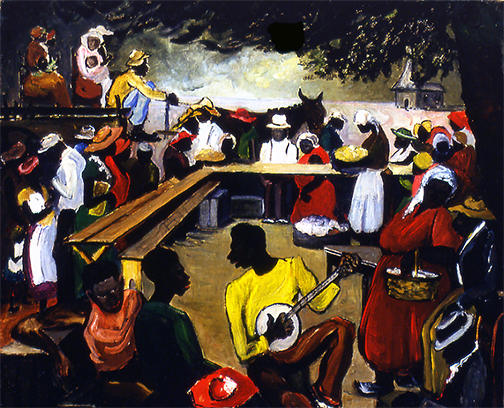 Jones’s Church Supper suggests the celebration of an African American picnic supper, sometimes called Dinner on the Grounds. An event like this is held in summer, usually on the first Sunday in August. It was always, and still is, a revival meeting. And while...
Jones’s Church Supper suggests the celebration of an African American picnic supper, sometimes called Dinner on the Grounds. An event like this is held in summer, usually on the first Sunday in August. It was always, and still is, a revival meeting. And while...
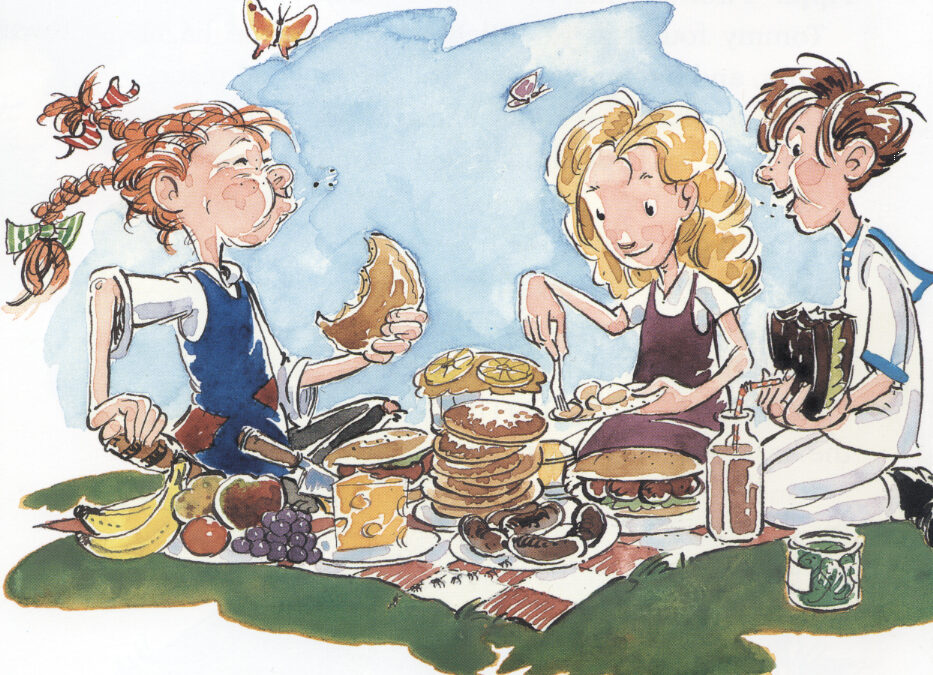 Astrid Lindgren’s zany picnic is a gastronomical feast. The chief picnicker is Pippi Longstocking, a brash, energetic, good-natured Swedish girl of nine who lives independently packs her own picnic. After zipping through some household chores, Pippi takes her...
Astrid Lindgren’s zany picnic is a gastronomical feast. The chief picnicker is Pippi Longstocking, a brash, energetic, good-natured Swedish girl of nine who lives independently packs her own picnic. After zipping through some household chores, Pippi takes her...
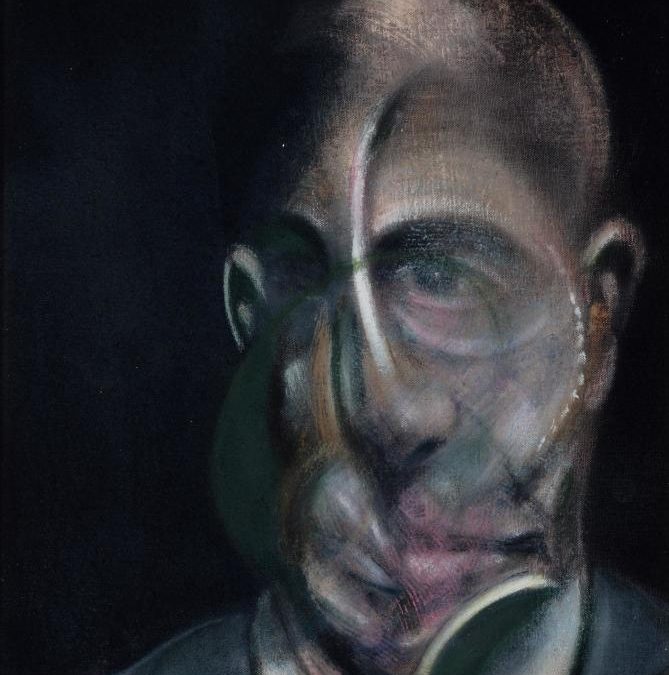 Leiris’s autobiographical exposé of trying to make sense of his emerging Manhood includes an episode of when he got his first erection at a family picnic in a Paris park. He was six or seven years old, and at the time, he recalls, he “established no direct relation...
Leiris’s autobiographical exposé of trying to make sense of his emerging Manhood includes an episode of when he got his first erection at a family picnic in a Paris park. He was six or seven years old, and at the time, he recalls, he “established no direct relation...
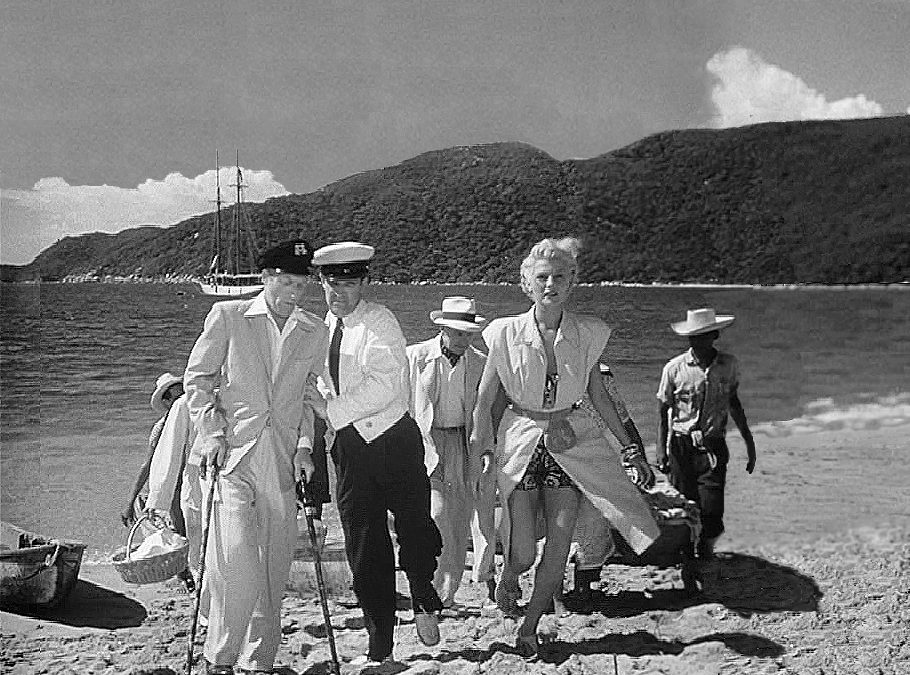 Imagine a noir picnic at which you tell your hosts a shark-feeding-frenzy story. That’s Orson Welles’ idea of dark times in The Lady from Shanghai. Imagine, too, that the story told by Michael O’Hara is intended as an allusion to his host and...
Imagine a noir picnic at which you tell your hosts a shark-feeding-frenzy story. That’s Orson Welles’ idea of dark times in The Lady from Shanghai. Imagine, too, that the story told by Michael O’Hara is intended as an allusion to his host and...
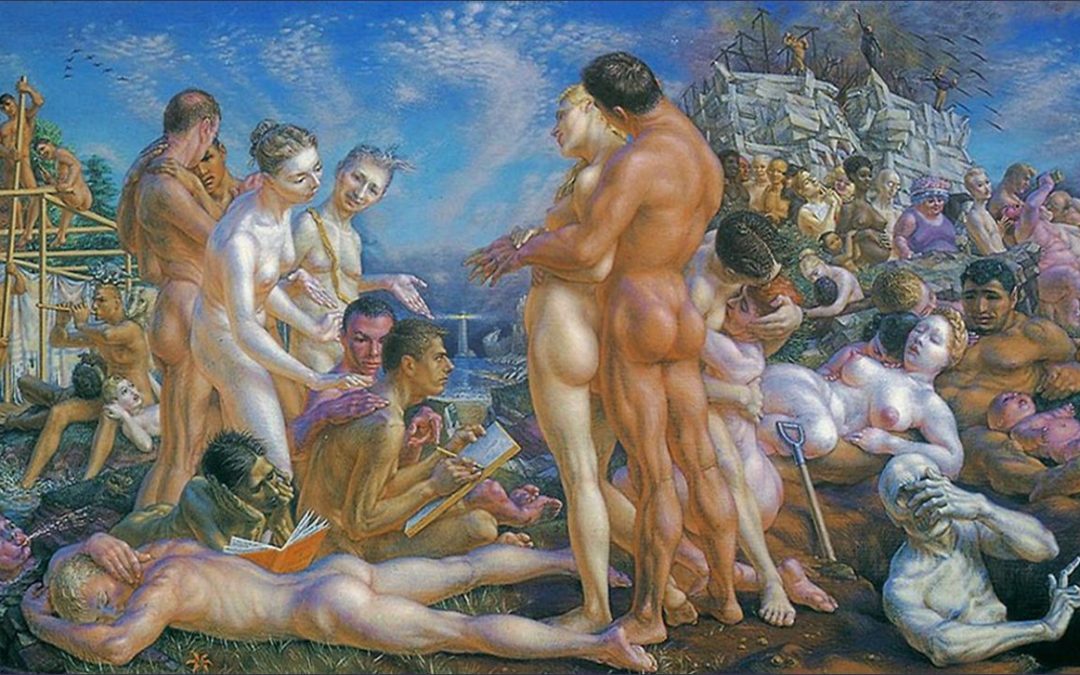 Cadmus’s What I Believe (1947-1948) is a beach picnic without food, inspired by E.M. Forester’s essay of the same-named. Forster is the dark man reading a book with the red cover in the lower left foreground. The figures are based on some of Cadmus’ friends and former...
Cadmus’s What I Believe (1947-1948) is a beach picnic without food, inspired by E.M. Forester’s essay of the same-named. Forster is the dark man reading a book with the red cover in the lower left foreground. The figures are based on some of Cadmus’ friends and former...
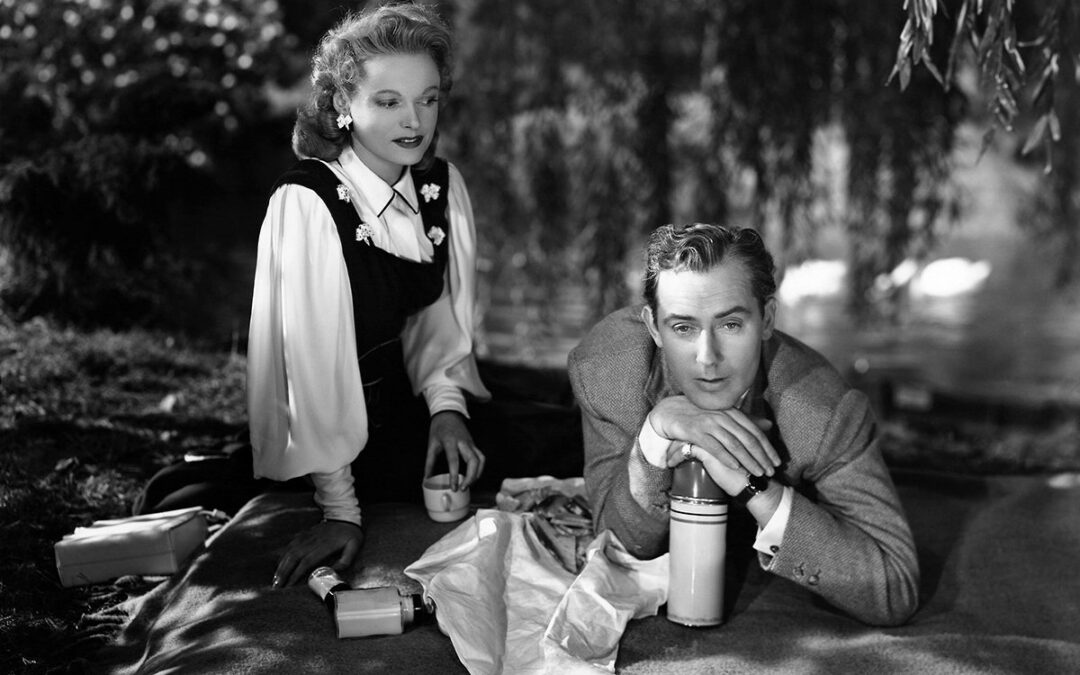 A picnic in the park is a perfect situation for accommodating a would-be lover. Suspicious that her footman Richard is not what he pretends to be, Judy allows him to picnic with him on the Serpentine in Hyde Park. The conversation is rapid-fire and full of innuendo...
A picnic in the park is a perfect situation for accommodating a would-be lover. Suspicious that her footman Richard is not what he pretends to be, Judy allows him to picnic with him on the Serpentine in Hyde Park. The conversation is rapid-fire and full of innuendo...
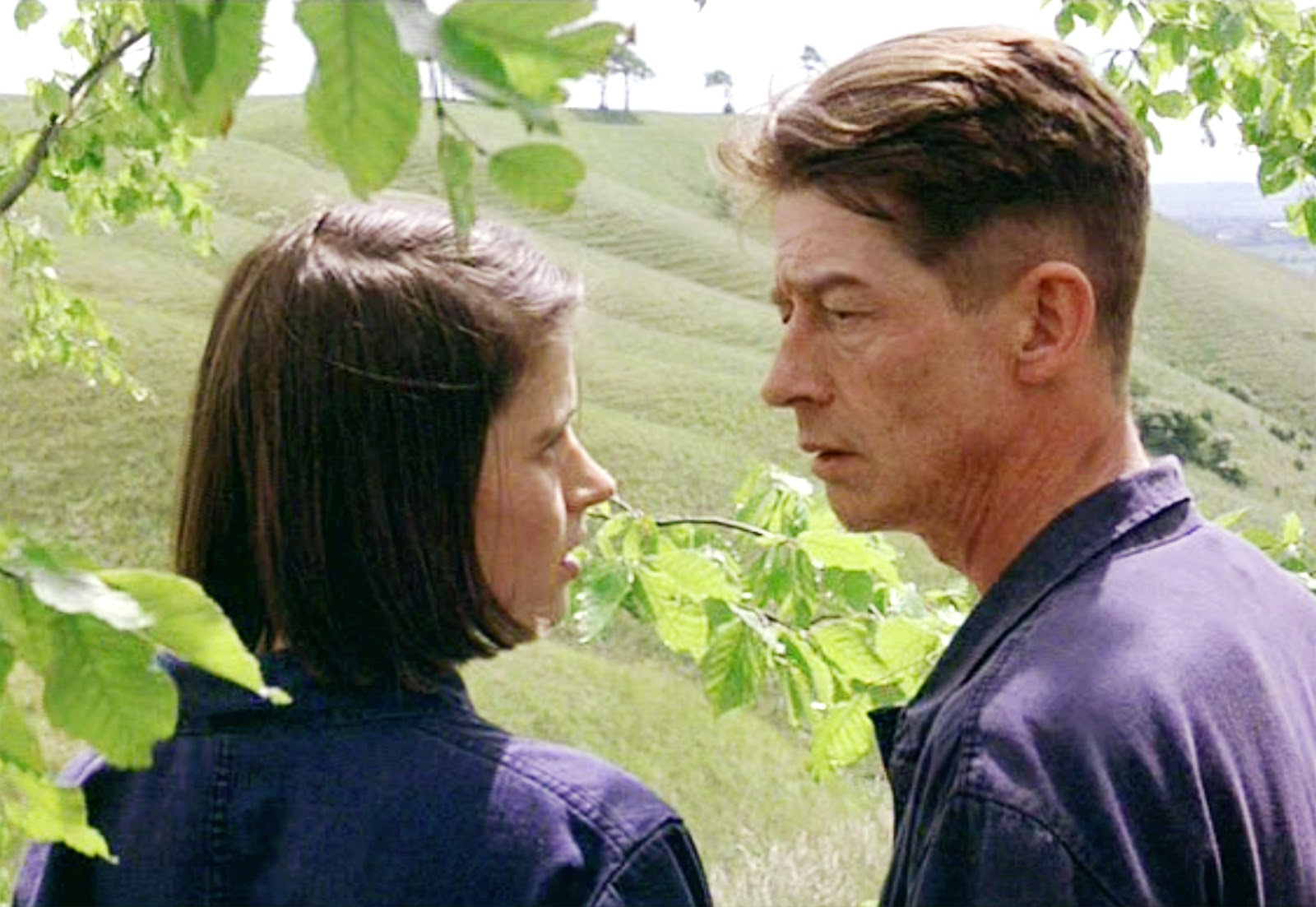 Winston Smith’s relationship with Julia (no last name) is among the most satisfying moments in Orwell’s 1984. It’s an interlude of romantic entanglement that begins a lustful relationship ending in pain and utter defeat. Leaving the dust of London for a safe place in...
Winston Smith’s relationship with Julia (no last name) is among the most satisfying moments in Orwell’s 1984. It’s an interlude of romantic entanglement that begins a lustful relationship ending in pain and utter defeat. Leaving the dust of London for a safe place in...
![Laurent de Brunhoff’s Babar’s Picnic [Pique-nique Chez Babar] (1949)](https://picnicwit.com/wp-content/uploads/2014/01/Laurent-de-Brunhoff.-Babars-Picnic-1949-1080x675.jpg) Why De Brunhoff allowed this title Babar’s Picnic is a muddle. It’s not about Babar’s picnic! It’s about the young elephants’ picnic and their adventures. Importantly, the story’s portrayal of African Blacks and Native Americans was...
Why De Brunhoff allowed this title Babar’s Picnic is a muddle. It’s not about Babar’s picnic! It’s about the young elephants’ picnic and their adventures. Importantly, the story’s portrayal of African Blacks and Native Americans was...
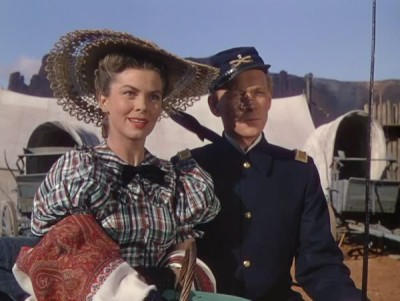 Ford’s jokey picnic episode is among the best. It plays counter to expectations because the picnic never happens. The situation is built around a conflict of rivals at an Army cavalry outpost in the 1870s. Miss Olivia Dandridge is flirting with Lt. Pennell and...
Ford’s jokey picnic episode is among the best. It plays counter to expectations because the picnic never happens. The situation is built around a conflict of rivals at an Army cavalry outpost in the 1870s. Miss Olivia Dandridge is flirting with Lt. Pennell and...
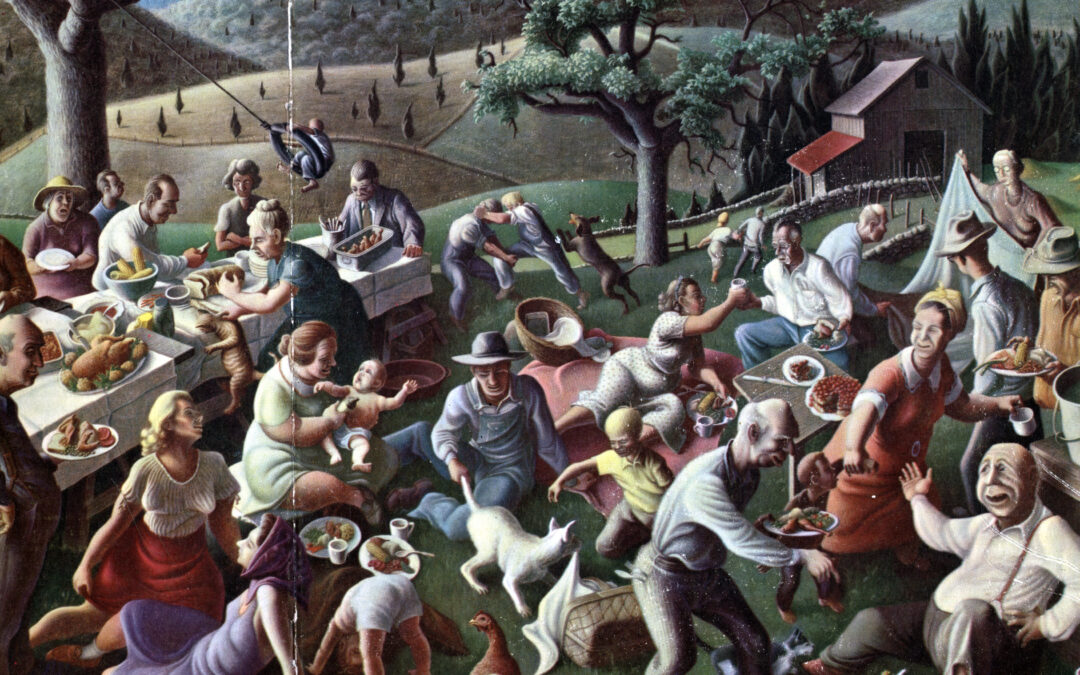 Medearis’ Family Reunion is a joyous and humorous evocation of an American extended family gathering. Featured Image: Roger Medearis. Family Reunion (1950). Colored lithograph.
Medearis’ Family Reunion is a joyous and humorous evocation of an American extended family gathering. Featured Image: Roger Medearis. Family Reunion (1950). Colored lithograph.
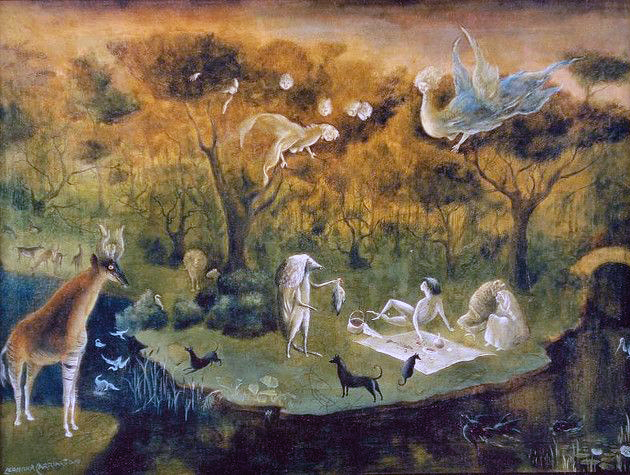 As with many of Carrington’s surrealistic paintings, they are enigmas. Maybe they are snapshots of her inner life—a mix of personal relationships, dreams, alchemy, astrology, myth, and probably alcohol and drugs. You may find the compositions appealing dream-visions...
As with many of Carrington’s surrealistic paintings, they are enigmas. Maybe they are snapshots of her inner life—a mix of personal relationships, dreams, alchemy, astrology, myth, and probably alcohol and drugs. You may find the compositions appealing dream-visions...
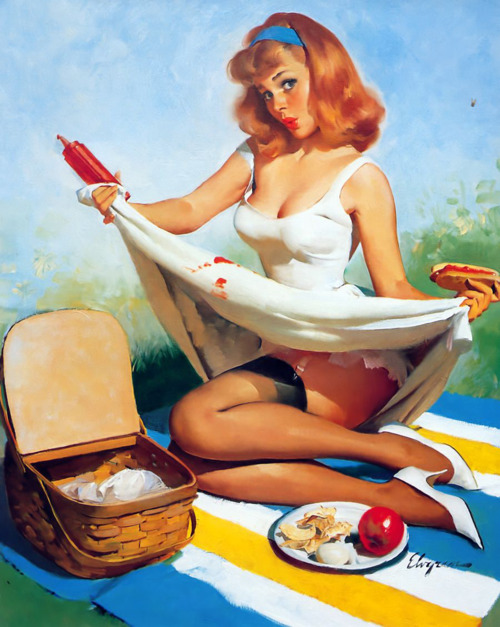 Pin-up art often graced garage walls, industrial factories, barbershops, or other places where men dominated the w Pinup art often graced garage walls, industrial factories, barbershops, or other places where men presume dominated the working world in the 1940s...
Pin-up art often graced garage walls, industrial factories, barbershops, or other places where men dominated the w Pinup art often graced garage walls, industrial factories, barbershops, or other places where men presume dominated the working world in the 1940s...
 Anna Mary Robertson Moses, aka Grandma Moses, is an American primitive artist whose paintings convey a strong pastoral sentimentality. In all her paintings, the subjects are the people of her town, Hoosic Falls, NY, whose activities she celebrates. The Family Picnic...
Anna Mary Robertson Moses, aka Grandma Moses, is an American primitive artist whose paintings convey a strong pastoral sentimentality. In all her paintings, the subjects are the people of her town, Hoosic Falls, NY, whose activities she celebrates. The Family Picnic...
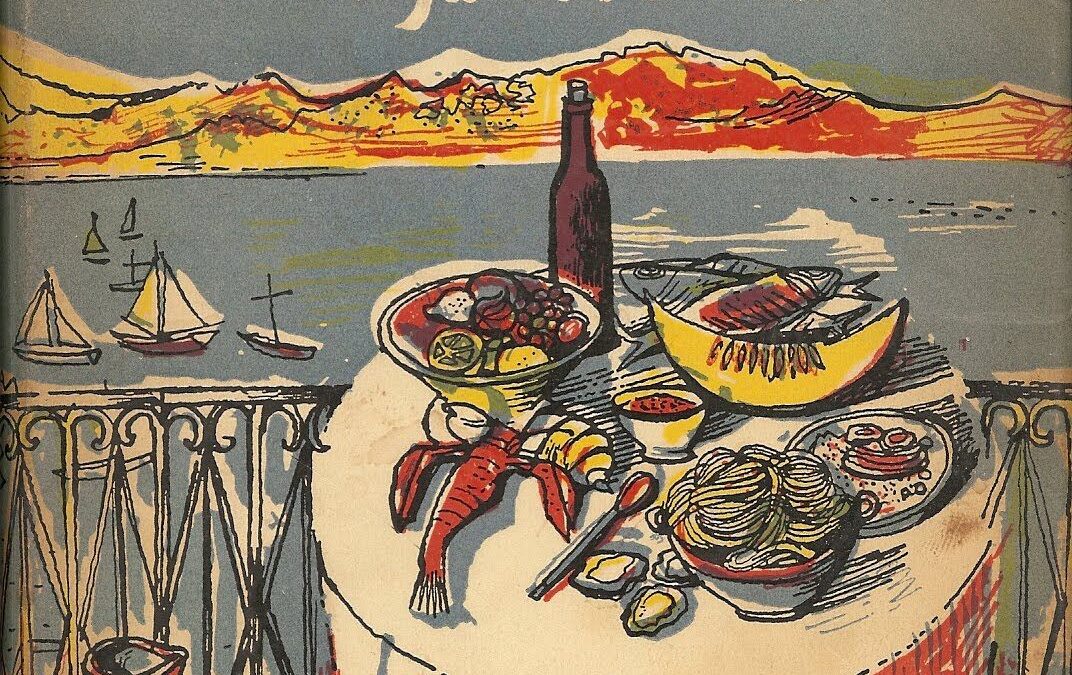 David’s favorite picnic food is tian. She asserts that it’s simple for the experienced cook, especially if you have a tian, the Provençal earthenware casserole it is cooked in. You also need freshly baked bread, butter, cheese, and wine. David’s...
David’s favorite picnic food is tian. She asserts that it’s simple for the experienced cook, especially if you have a tian, the Provençal earthenware casserole it is cooked in. You also need freshly baked bread, butter, cheese, and wine. David’s...
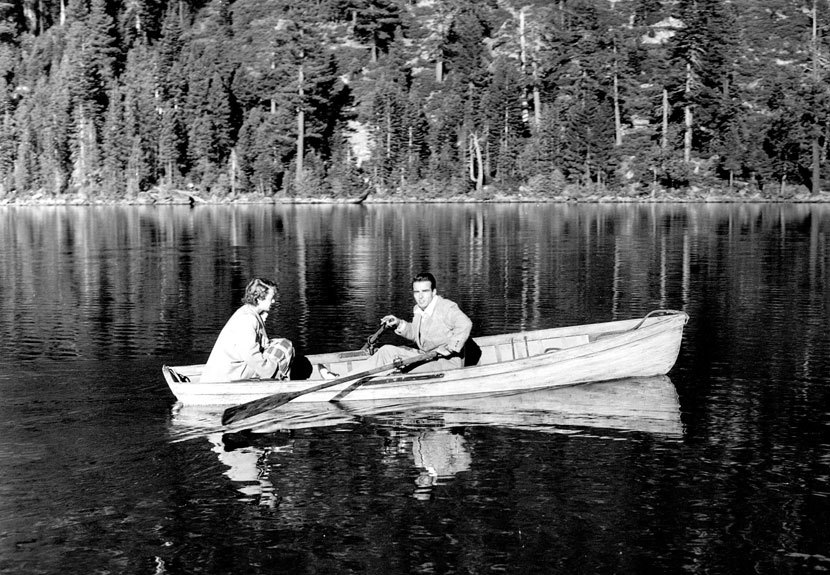 Stevens’s A Place in the Sun is a rework of Dreiser’s An American Tragedy. He renames the characters, too, so that Clyde Griffiths becomes George Eastman. It’s like renaming Dorothy in The Wizard of Oz or Tarzan. He and his screenwriters are emphatic...
Stevens’s A Place in the Sun is a rework of Dreiser’s An American Tragedy. He renames the characters, too, so that Clyde Griffiths becomes George Eastman. It’s like renaming Dorothy in The Wizard of Oz or Tarzan. He and his screenwriters are emphatic...
 Wilder added the picnic to Love in the Afternoon as a setting for comic action and romantic courtship. His sources for the film Paul Anet’s Ariene, juene file Russe (1920), and Paul Czinner’s film adaption The Loves of Ariene (1931) do not have picnics....
Wilder added the picnic to Love in the Afternoon as a setting for comic action and romantic courtship. His sources for the film Paul Anet’s Ariene, juene file Russe (1920), and Paul Czinner’s film adaption The Loves of Ariene (1931) do not have picnics....
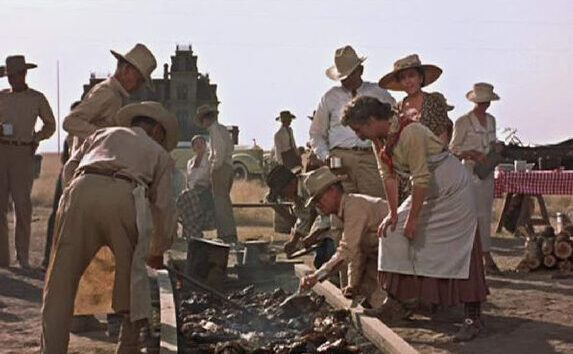 Giant is Ferber’s novel about how a Virginia belle, Leslie Lynton, learns to be a Texan. Among her lessons is what to eat during a Texas-style picnic at her husband Reata, her husband Bick Jordan’s ranch. At first, Leslie realizes what she is looking at is...
Giant is Ferber’s novel about how a Virginia belle, Leslie Lynton, learns to be a Texan. Among her lessons is what to eat during a Texas-style picnic at her husband Reata, her husband Bick Jordan’s ranch. At first, Leslie realizes what she is looking at is...
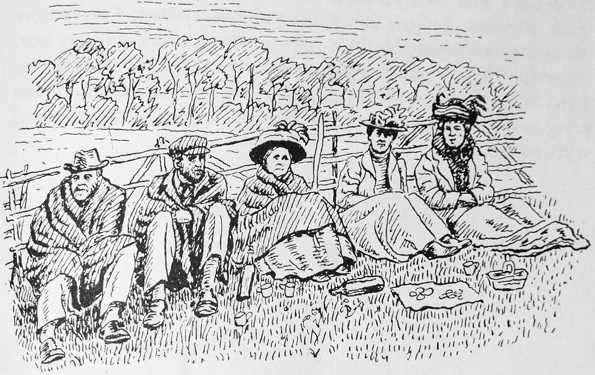 “Heroic Survivors of the Picnic.” is Gwen Raverat’s bittersweet memory of a miserable picnic. It’s the next-to-last anecdote in her memoir Period Piece: A Cambridge Childhood. I think she means to suggest that life was no picnic but that she...
“Heroic Survivors of the Picnic.” is Gwen Raverat’s bittersweet memory of a miserable picnic. It’s the next-to-last anecdote in her memoir Period Piece: A Cambridge Childhood. I think she means to suggest that life was no picnic but that she...
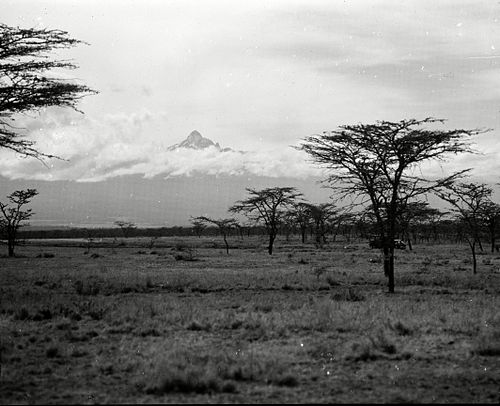 Benuzzi’s original title for his memoir was Fuga sul Kenya – 17 giorni di liberta [Escape on Kenya – 17 days of liberty]. But being deeply impressed by Vivienne de Watteville’s Speak to the Earth, her memoir of camping on Mount Kenya, * he renamed the...
Benuzzi’s original title for his memoir was Fuga sul Kenya – 17 giorni di liberta [Escape on Kenya – 17 days of liberty]. But being deeply impressed by Vivienne de Watteville’s Speak to the Earth, her memoir of camping on Mount Kenya, * he renamed the...
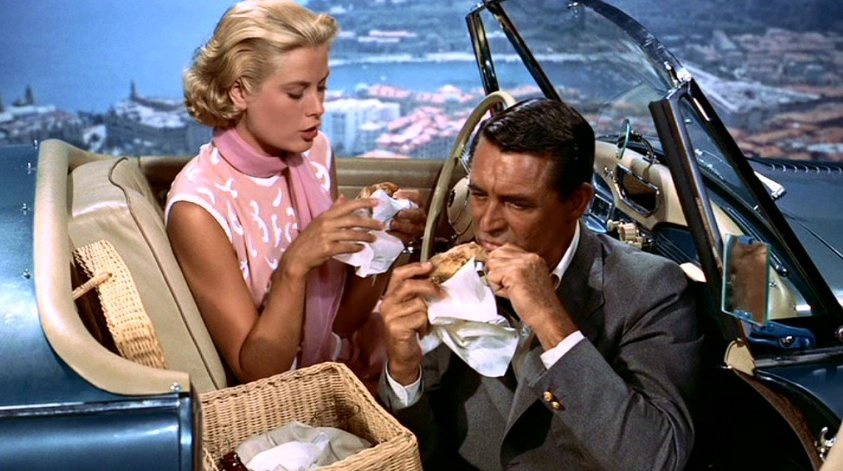 Dodge’s To Catch a Thief does not have a picnic episode. See David Dodge. To Catch a Thief. New York: Random House, 1952; Alfred Hitchcock. To Catch a Thief (1955). The screenplay by John Michael Hayes is based on David Dodge’s novel (1952), Hilary Radner. “To Catch a...
Dodge’s To Catch a Thief does not have a picnic episode. See David Dodge. To Catch a Thief. New York: Random House, 1952; Alfred Hitchcock. To Catch a Thief (1955). The screenplay by John Michael Hayes is based on David Dodge’s novel (1952), Hilary Radner. “To Catch a...
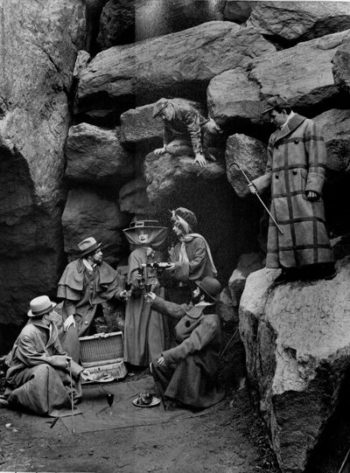 Frederick Ashton’s Picnic at Tintagel is inspired by Mary Elizabeth Braddon’s popular Victorian novel Royal Mount, where sightseers picnic on Tintagel Castle’s ruins. (Discussion of Braddon’s Royal Mount is posted elsewhere on PicnicWit.com)...
Frederick Ashton’s Picnic at Tintagel is inspired by Mary Elizabeth Braddon’s popular Victorian novel Royal Mount, where sightseers picnic on Tintagel Castle’s ruins. (Discussion of Braddon’s Royal Mount is posted elsewhere on PicnicWit.com)...
 Stevens’ barbacoa picnic in Giant is sure-fire-cinema. When Virginia-born-and-bred Leslie Lynnton attends her first Texas picnic, she faints. Barbacoa is an acquired taste at a picnic or elsewhere. It may be delicious, but it is not for the squeamish. Leslie...
Stevens’ barbacoa picnic in Giant is sure-fire-cinema. When Virginia-born-and-bred Leslie Lynnton attends her first Texas picnic, she faints. Barbacoa is an acquired taste at a picnic or elsewhere. It may be delicious, but it is not for the squeamish. Leslie...
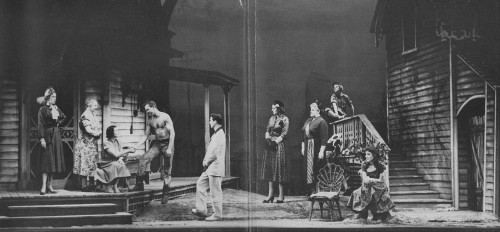 When Hal Carter tells Madge Owens, “We’re not goin’ on no goddamn picnic,” he means they are “goin'” to make love instead. Madge is willing. They are so passionate, their lust so potent, audiences never notice that when the curtain...
When Hal Carter tells Madge Owens, “We’re not goin’ on no goddamn picnic,” he means they are “goin'” to make love instead. Madge is willing. They are so passionate, their lust so potent, audiences never notice that when the curtain...
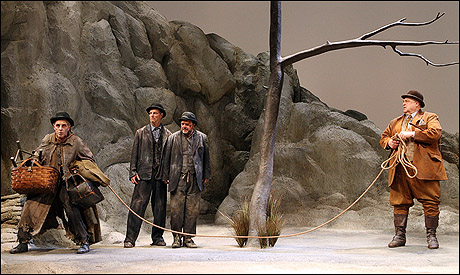 Beckett’s setting for Waiting for Godot (En antendant Godot) is an empty stage and a tree without leaves. It’s an unlikely place for an unhappy picnic. The picnic begins when Pozzo and Lucky arrive. Pozzo brandishes a whip and holds Lucky at the end of a...
Beckett’s setting for Waiting for Godot (En antendant Godot) is an empty stage and a tree without leaves. It’s an unlikely place for an unhappy picnic. The picnic begins when Pozzo and Lucky arrive. Pozzo brandishes a whip and holds Lucky at the end of a...
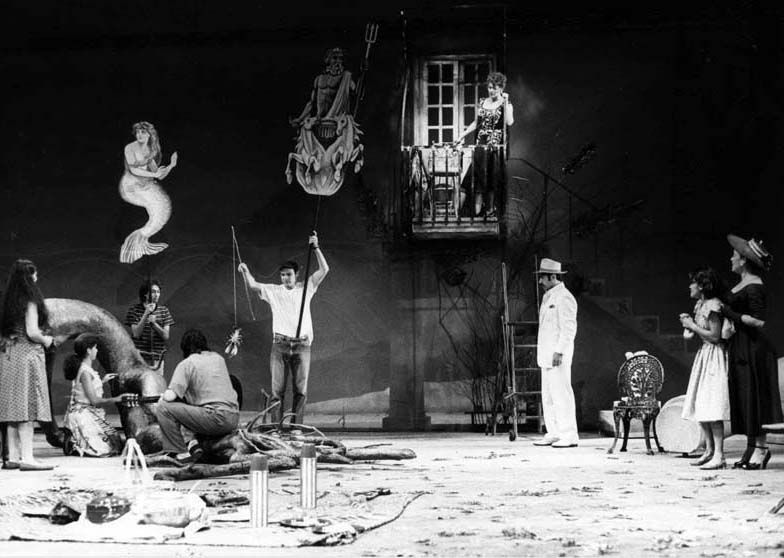 Bowles’s In the Summer House is an absurd play, and she admirably proves the rule that some people do silly things at picnics. The action begins with a lawn picnic at which characters with tenuous relationships incessantly bicker. When Mr. Solares enters,...
Bowles’s In the Summer House is an absurd play, and she admirably proves the rule that some people do silly things at picnics. The action begins with a lawn picnic at which characters with tenuous relationships incessantly bicker. When Mr. Solares enters,...
 Bowles and Schuyler’s performance piece A Picnic Cantata: for Four Women’s Voices, Two Pianos, and Percussion (1954) is delightfully silly. It’s about a happy picnic that is intentionally nonsensical. The music by Bowles’ and the libretto by...
Bowles and Schuyler’s performance piece A Picnic Cantata: for Four Women’s Voices, Two Pianos, and Percussion (1954) is delightfully silly. It’s about a happy picnic that is intentionally nonsensical. The music by Bowles’ and the libretto by...
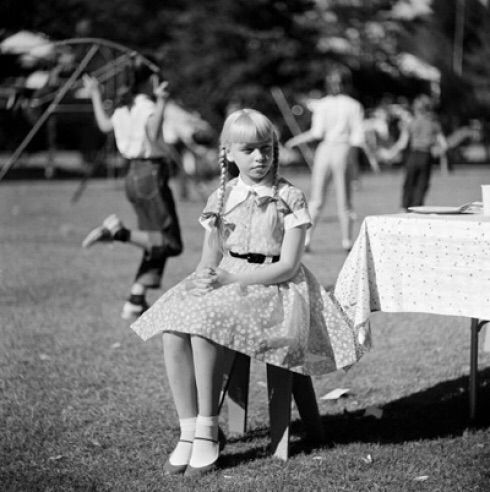 The horror of LeRoy’s The Bad Seed is serial killer Rhoda Penmark, a darling little girl with blond pigtails and blue eyes who murders a classmate at a school picnic because she covets his penmanship medal (pun intended). The picnic food is present but...
The horror of LeRoy’s The Bad Seed is serial killer Rhoda Penmark, a darling little girl with blond pigtails and blue eyes who murders a classmate at a school picnic because she covets his penmanship medal (pun intended). The picnic food is present but...
 Rhoda Penmark is a successful serial killer whose career begins at a school picnic. She looks innocent, a darling little girl with blond pigtails and blue eyes. But Rhoda’s interior is ruthless and murderous. Wanting the penmanship medal for herself...
Rhoda Penmark is a successful serial killer whose career begins at a school picnic. She looks innocent, a darling little girl with blond pigtails and blue eyes. But Rhoda’s interior is ruthless and murderous. Wanting the penmanship medal for herself...
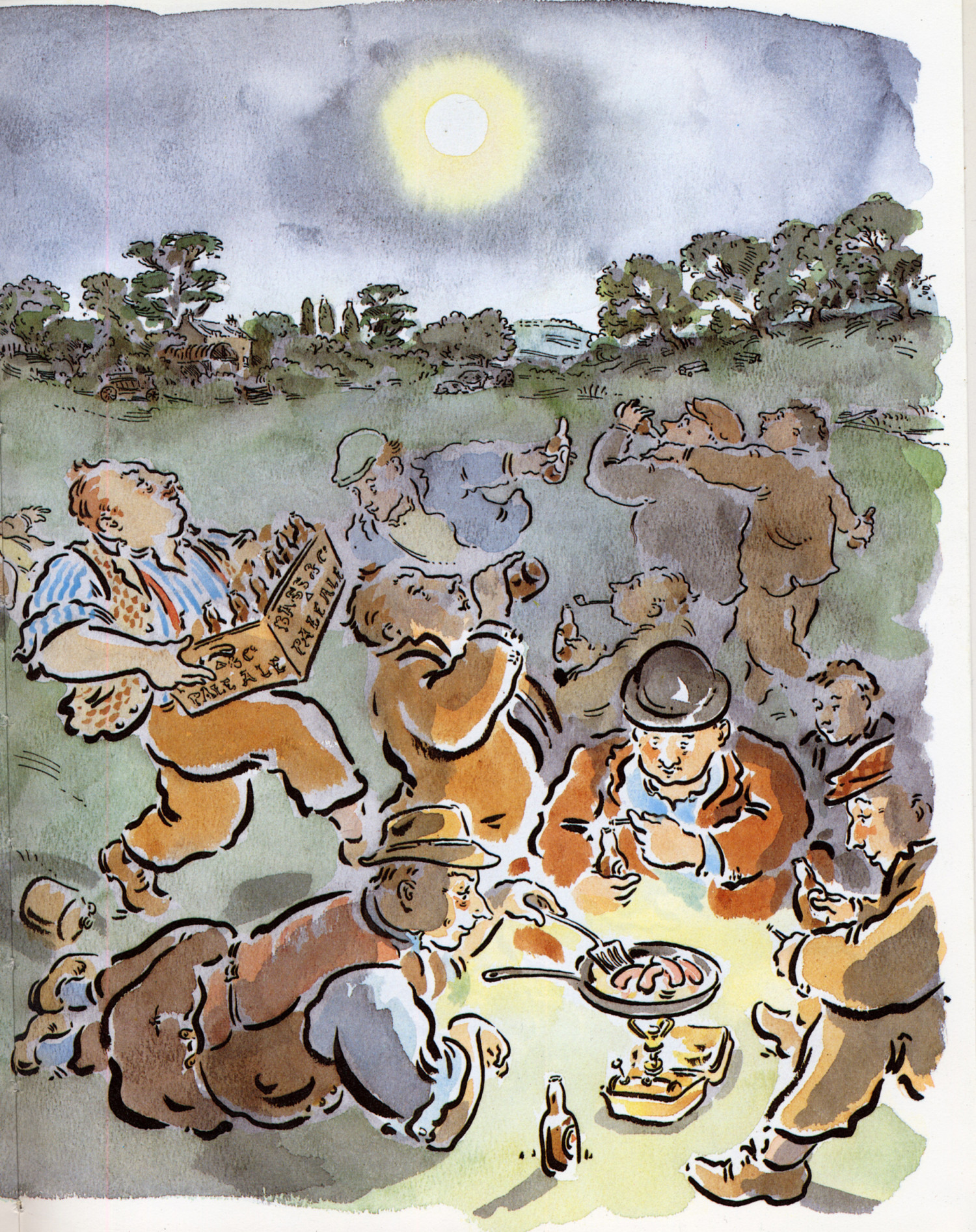 Thomas’ life and marriage were tumultuous. So in November 1953, when Caitlin Thomas entered St. Vincent’s Hospital in New York looking for her husband, she expected a positive answer to her question, “Is the bloody man dead yet?” What she got was “Not yet,” for he was...
Thomas’ life and marriage were tumultuous. So in November 1953, when Caitlin Thomas entered St. Vincent’s Hospital in New York looking for her husband, she expected a positive answer to her question, “Is the bloody man dead yet?” What she got was “Not yet,” for he was...
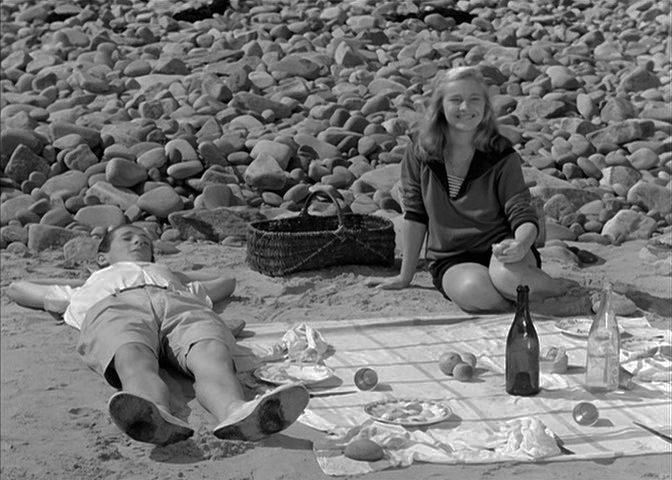 Autant-Lara’s Le Blé en herbe is good at separating the dual aspects of love in Colette’s novel about adolescents and friends for years and learning about love while vacationing in Normandy. There are two parts to the narrative. In the first part, teenagers Philippe...
Autant-Lara’s Le Blé en herbe is good at separating the dual aspects of love in Colette’s novel about adolescents and friends for years and learning about love while vacationing in Normandy. There are two parts to the narrative. In the first part, teenagers Philippe...
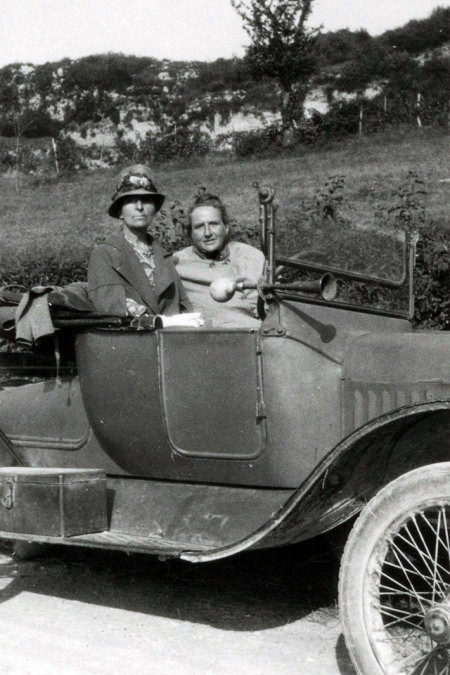 Toklas suggests that chopped roast beef and chopped chicken with mushrooms make the best picnic sandwiches. When these were not enough, Toklas and her partner Gertrude Stein stopped at restaurants where they might dine on Morvan Ham with Cream Sauce, three-minute veal...
Toklas suggests that chopped roast beef and chopped chicken with mushrooms make the best picnic sandwiches. When these were not enough, Toklas and her partner Gertrude Stein stopped at restaurants where they might dine on Morvan Ham with Cream Sauce, three-minute veal...
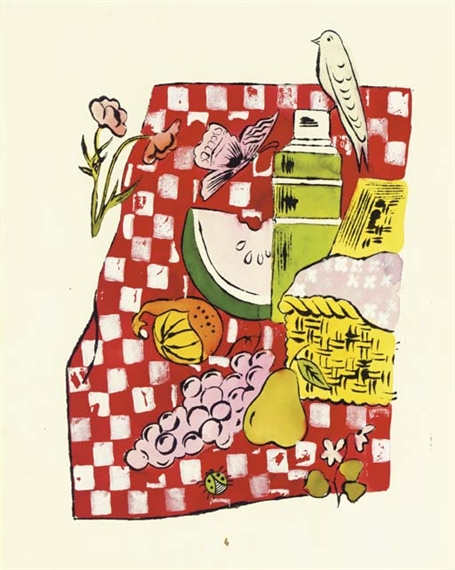 Warhol’s Picnic is an early work that lacks the pizazz of the later Pop paintings of the late 1960s. Featured Image: Andy Warhol. Picnic (1955c.), watercolor, ink, gouache on paper.
Warhol’s Picnic is an early work that lacks the pizazz of the later Pop paintings of the late 1960s. Featured Image: Andy Warhol. Picnic (1955c.), watercolor, ink, gouache on paper.
 Allen’s Rubbish Dump is the closest to a spiritual picnic I know of. Christ’s stunning appearance in a wasteland suggests life without beauty when industry pollutes the environment. It is unclear if the roiling clouds are suggesting an approaching...
Allen’s Rubbish Dump is the closest to a spiritual picnic I know of. Christ’s stunning appearance in a wasteland suggests life without beauty when industry pollutes the environment. It is unclear if the roiling clouds are suggesting an approaching...
 David Dodge and Alfred Hitchcock had differing views on the character of John Robie, aka The Cat, and the hero of To Catch a Thief. Dodge disguised the thirty-four-year-old to look older and plumper; for his film, Hitchcock chose fifty-one-year-old Cary Grant to play...
David Dodge and Alfred Hitchcock had differing views on the character of John Robie, aka The Cat, and the hero of To Catch a Thief. Dodge disguised the thirty-four-year-old to look older and plumper; for his film, Hitchcock chose fifty-one-year-old Cary Grant to play...
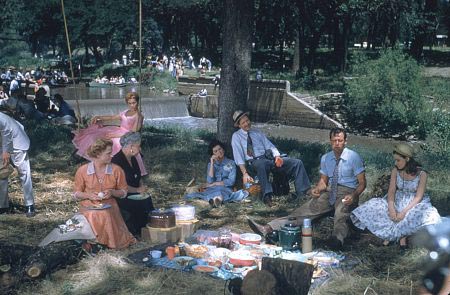 With Daniel Taradash’s screenplay, Logan’s Picnic departs radically from the drama, which does not have a picnic. Inge’s play skips the Picnic as Hal Carter and Madge Owens move to make love, and the curtain falls. Logan directed the Broadway...
With Daniel Taradash’s screenplay, Logan’s Picnic departs radically from the drama, which does not have a picnic. Inge’s play skips the Picnic as Hal Carter and Madge Owens move to make love, and the curtain falls. Logan directed the Broadway...
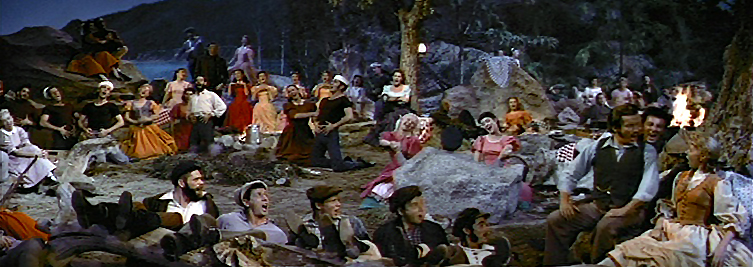 King’s Carousel “A Real Nice Clambake” is full of picnicky camaraderie and good spirits, but it takes a nose-dive when the news comes that Julie Jordan’s lover Billy Bigelow, botched robbery is dead. King is casual about having the actors...
King’s Carousel “A Real Nice Clambake” is full of picnicky camaraderie and good spirits, but it takes a nose-dive when the news comes that Julie Jordan’s lover Billy Bigelow, botched robbery is dead. King is casual about having the actors...
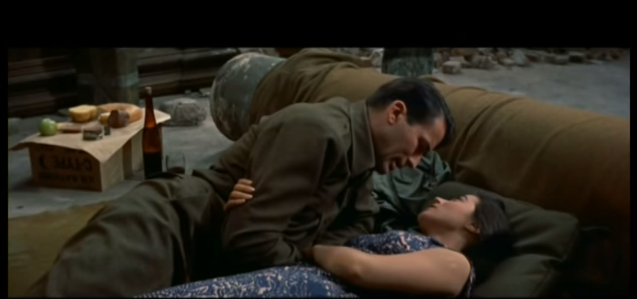 Wilson’s The Man in the Gray Flannel Suit and Johnson’s film strongly solidified the character of Tom Wrath as a symbol of mid-twentieth Century America, the rising generation of white, well-educated men striving for wealth and power in mid-century 19th...
Wilson’s The Man in the Gray Flannel Suit and Johnson’s film strongly solidified the character of Tom Wrath as a symbol of mid-twentieth Century America, the rising generation of white, well-educated men striving for wealth and power in mid-century 19th...
 Ernest Hemingway thought Sloan Wilson’s The Man in the Gray Flannel Suit was trash. However, Americans still readjusting to World War Two and its aftermath thought made it a best-seller. Within a year of publication, Nunnally Johnson directed a faithful film...
Ernest Hemingway thought Sloan Wilson’s The Man in the Gray Flannel Suit was trash. However, Americans still readjusting to World War Two and its aftermath thought made it a best-seller. Within a year of publication, Nunnally Johnson directed a faithful film...
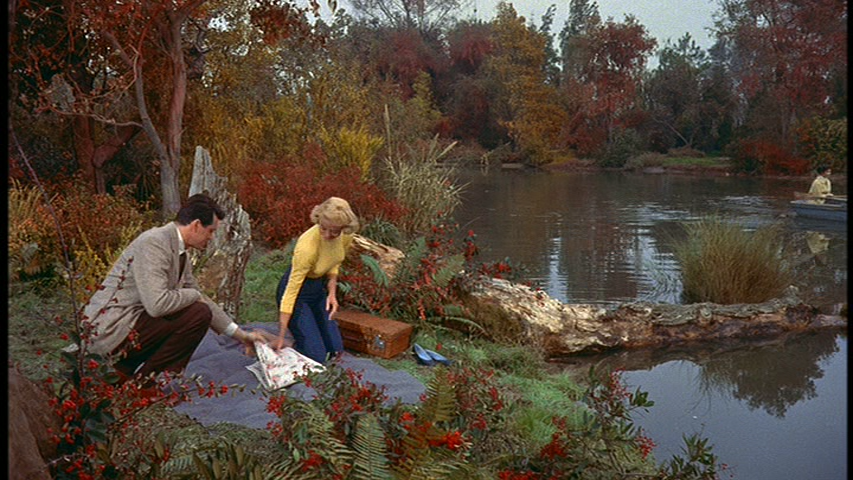 The picnic episode is the eye of a romantic hurricane in which two might-be lovers, Marylee Hadley and Mitch Wayne, are momentarily at ease. Marylee chooses the picnic ground because it’s where she and Mitch played and picnicked when they were teenagers. She remembers...
The picnic episode is the eye of a romantic hurricane in which two might-be lovers, Marylee Hadley and Mitch Wayne, are momentarily at ease. Marylee chooses the picnic ground because it’s where she and Mitch played and picnicked when they were teenagers. She remembers...
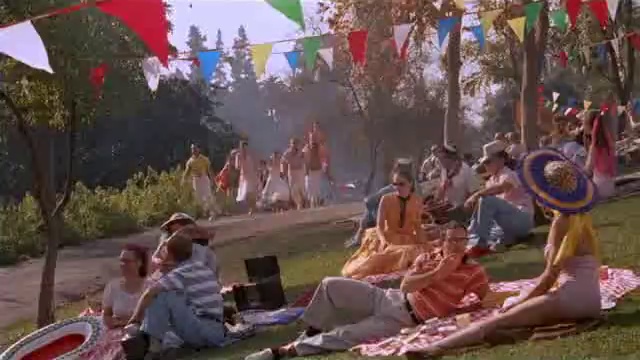 The Sleep-Tite company picnic is the musical centerpiece of Abbott and Donen’s The Pajama Game and is a reworking of Bissell’s 7 ½ Cents, for which he wrote the screenplay. Once a year, company management and union employees meet on common ground to...
The Sleep-Tite company picnic is the musical centerpiece of Abbott and Donen’s The Pajama Game and is a reworking of Bissell’s 7 ½ Cents, for which he wrote the screenplay. Once a year, company management and union employees meet on common ground to...
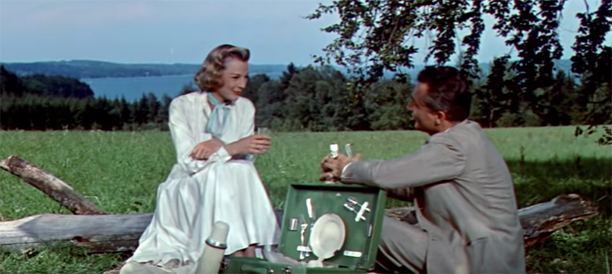 Sirk’s Interlude is ninety minutes of adultery that ends when Helen says, “We have no chance. It’s impossible,” and Tonio replies, “You are right.” Salzburg is all sunshine when Tonio takes Helen for a picnic in his red...
Sirk’s Interlude is ninety minutes of adultery that ends when Helen says, “We have no chance. It’s impossible,” and Tonio replies, “You are right.” Salzburg is all sunshine when Tonio takes Helen for a picnic in his red...
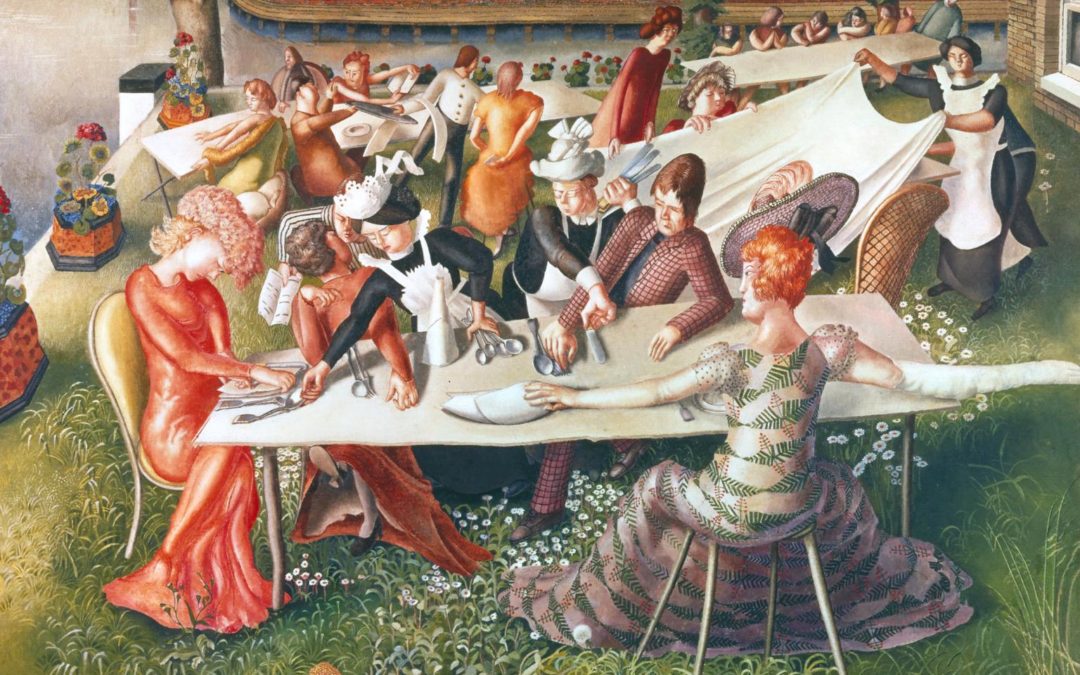 No food. Diners sit at long tables waiting. Spencer said he forgot it, but this seems disingenuous and intentionally humorous because it defies the expectation that a picnic will include abundant food and drink. See Stanley Spencer. Dinner on the Hotel Lawn (1956-57)....
No food. Diners sit at long tables waiting. Spencer said he forgot it, but this seems disingenuous and intentionally humorous because it defies the expectation that a picnic will include abundant food and drink. See Stanley Spencer. Dinner on the Hotel Lawn (1956-57)....
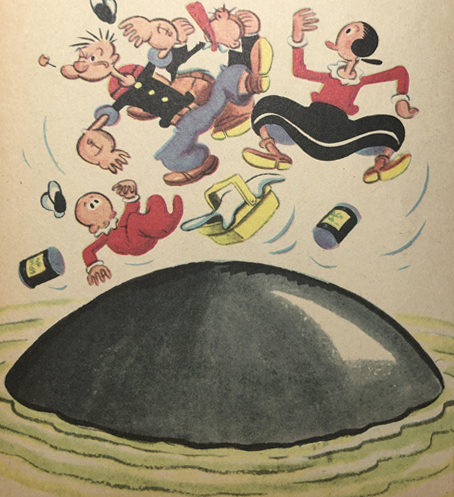 Popeye, Olive Oyl, Wimpy, and Swee’pea picnic on the back of a whale. Ha! ha! See Crosby Newell. Popeye Goes on a Picnic. Illustrated by Bud Sagendorf. New York: Grosset & Dunlap, 1958
Ritt and screenwriters shamelessly borrowed the picnic auction in Oklahoma! and plopped it into The Long Hot Summer, a mish-mash of William Faulkner’s “Spotted Horses” (1931), “Barn Burning” (1939), and The Hamlet (1940), none of which...
Popeye, Olive Oyl, Wimpy, and Swee’pea picnic on the back of a whale. Ha! ha! See Crosby Newell. Popeye Goes on a Picnic. Illustrated by Bud Sagendorf. New York: Grosset & Dunlap, 1958
Ritt and screenwriters shamelessly borrowed the picnic auction in Oklahoma! and plopped it into The Long Hot Summer, a mish-mash of William Faulkner’s “Spotted Horses” (1931), “Barn Burning” (1939), and The Hamlet (1940), none of which...
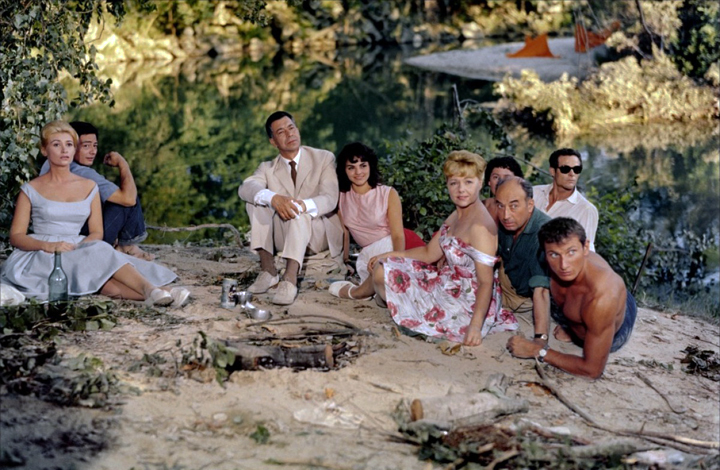 Renoir’s title of Le déjeuner sur l’herbe has mislead some to think it’s an allusion to Manet’s Le déjeuner sur l’herbe but it’s not so. Renoir’s satire aims for Brave New World, Huxley’s, a dystopian world in which science and industrial...
Renoir’s title of Le déjeuner sur l’herbe has mislead some to think it’s an allusion to Manet’s Le déjeuner sur l’herbe but it’s not so. Renoir’s satire aims for Brave New World, Huxley’s, a dystopian world in which science and industrial...
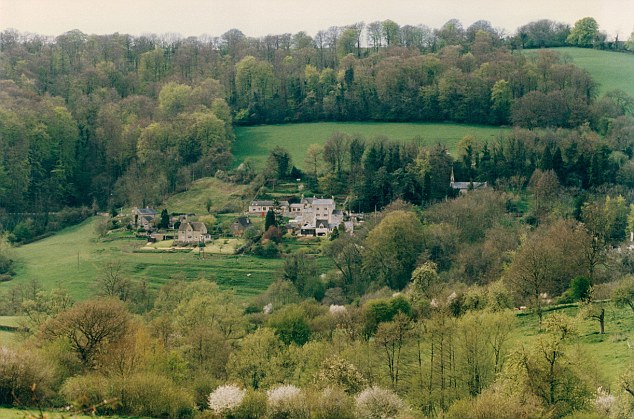 Among Lee’s vivid memories is a picnic by the sea, a grand event sponsored by the Slad church choir. It was a trek of fifty-one miles to Weston-Super-Mare that most of the townsfolk stuffed themselves into hired five charabancs [SHarəˌbaNG, -ˌbaNGk]. Lined up,...
Among Lee’s vivid memories is a picnic by the sea, a grand event sponsored by the Slad church choir. It was a trek of fifty-one miles to Weston-Super-Mare that most of the townsfolk stuffed themselves into hired five charabancs [SHarəˌbaNG, -ˌbaNGk]. Lined up,...
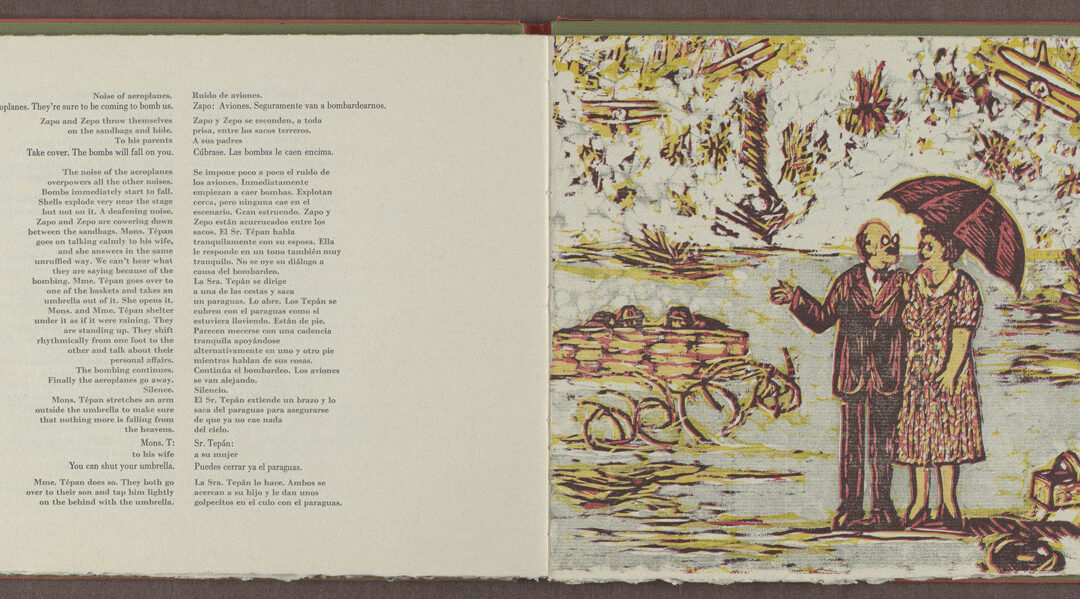 Arrabal’s Picnic on the Battlefield is a metaphor for the stupidity of war. He undermines picnic expectations as the obtuse (but well-meaning) Tépans march onto the battlefield to entertain their son Zapo. When the action begins, Zapo is surprised to see...
Arrabal’s Picnic on the Battlefield is a metaphor for the stupidity of war. He undermines picnic expectations as the obtuse (but well-meaning) Tépans march onto the battlefield to entertain their son Zapo. When the action begins, Zapo is surprised to see...
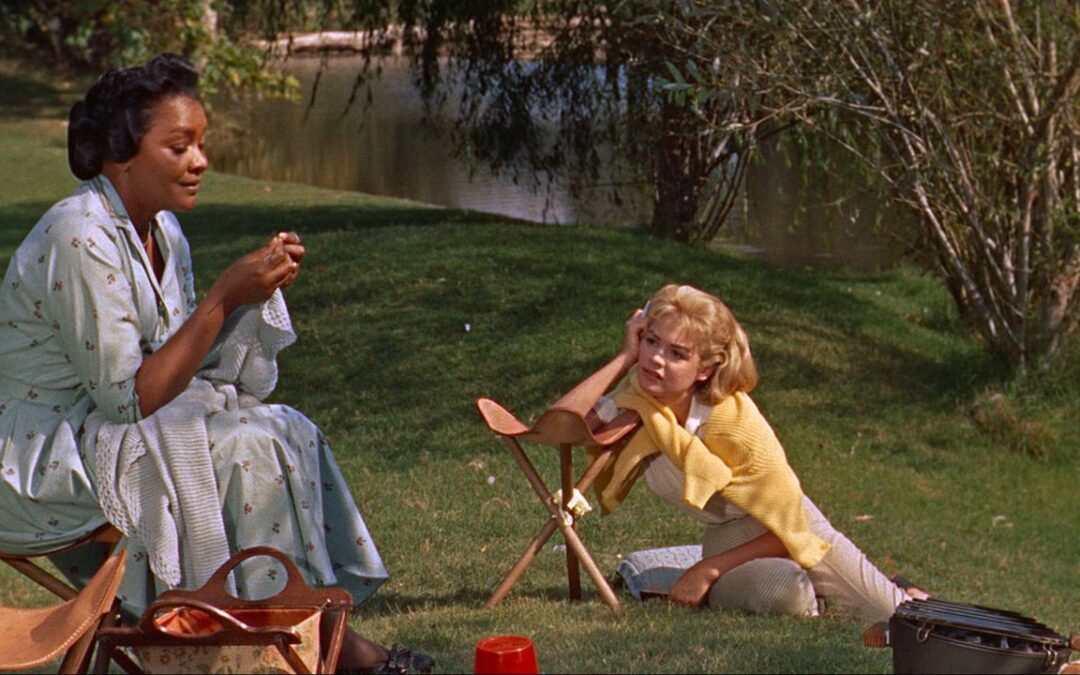 \Sirk wrote a picnic for Imitation of Life as a happy time away from a hectic work schedule. Needing a break, Lora Meredith collects her daughter Susie and her African American housekeeper Annie Johnson and calls her sometime lover Steve Archer, “Listen. . . I...
\Sirk wrote a picnic for Imitation of Life as a happy time away from a hectic work schedule. Needing a break, Lora Meredith collects her daughter Susie and her African American housekeeper Annie Johnson and calls her sometime lover Steve Archer, “Listen. . . I...
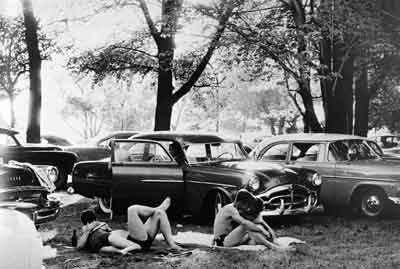 Frank’s Picnic Ground-Glendale, California (1959) captures American youth and the motorcar culture circa 1955-1956. It’s direct and unmediated, serving his intention to portray Americans as they are. The couples congregate in front of their cars. Because they are...
Frank’s Picnic Ground-Glendale, California (1959) captures American youth and the motorcar culture circa 1955-1956. It’s direct and unmediated, serving his intention to portray Americans as they are. The couples congregate in front of their cars. Because they are...
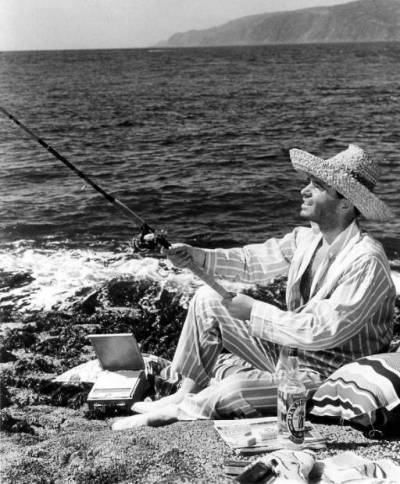 Adapting Andrew Garve’s The Megstone Plot and retitling it A Touch of Larceny, Hamilton’s screenplay hints he’s radically departed from the novel. Instead of Garve’s somber noir, Hamilton’s is a comedy. Easton’s ruse is to cast the...
Adapting Andrew Garve’s The Megstone Plot and retitling it A Touch of Larceny, Hamilton’s screenplay hints he’s radically departed from the novel. Instead of Garve’s somber noir, Hamilton’s is a comedy. Easton’s ruse is to cast the...
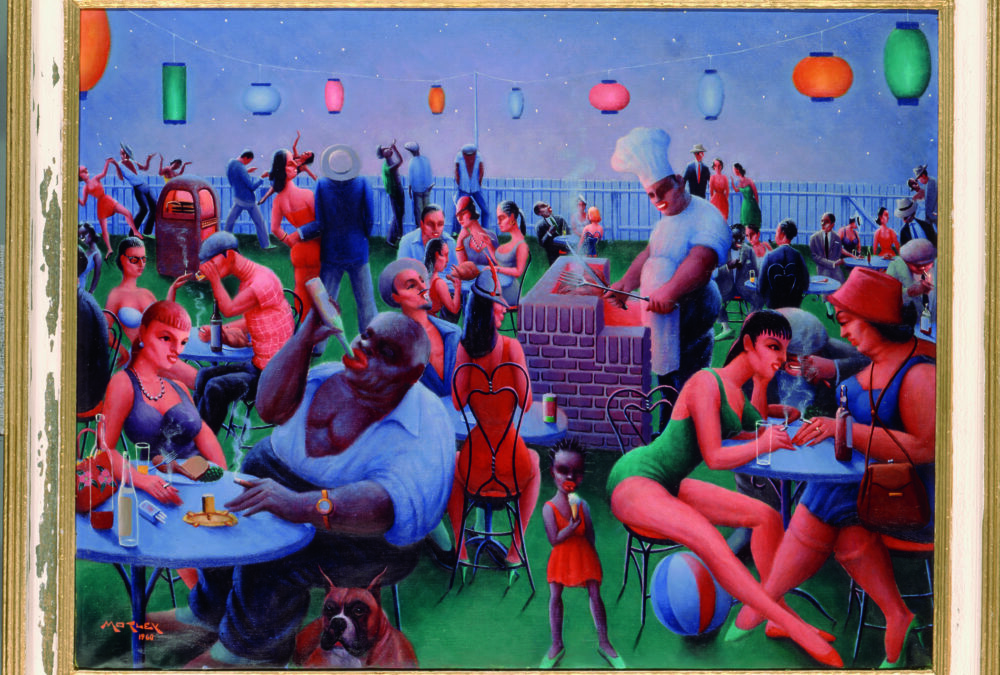 Motley’s A rooftop party is a variation of a tar beach picnic. Couples are sitting at tables eating and drinking. Good spirits prevail. Motley’s typical attitude and his paintings invariable show African Americans happy in a world of easy living....
Motley’s A rooftop party is a variation of a tar beach picnic. Couples are sitting at tables eating and drinking. Good spirits prevail. Motley’s typical attitude and his paintings invariable show African Americans happy in a world of easy living....
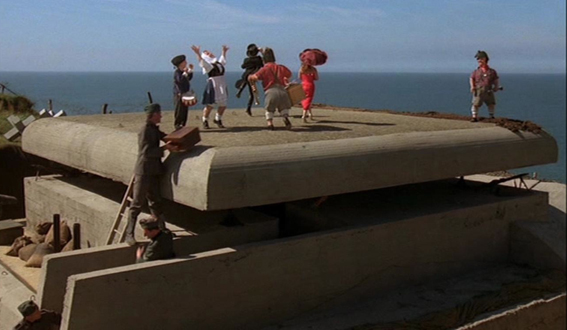 Grass’s mordant picnic satire describes five dwarfs, all Nazis, all entertainers in Bebra’s “Theater at the Front,” gathering for a picnic feast on a beach in Normandy. The irony of pleasure is lost on them. Living in the present, Oskar and his friends are happy to...
Grass’s mordant picnic satire describes five dwarfs, all Nazis, all entertainers in Bebra’s “Theater at the Front,” gathering for a picnic feast on a beach in Normandy. The irony of pleasure is lost on them. Living in the present, Oskar and his friends are happy to...
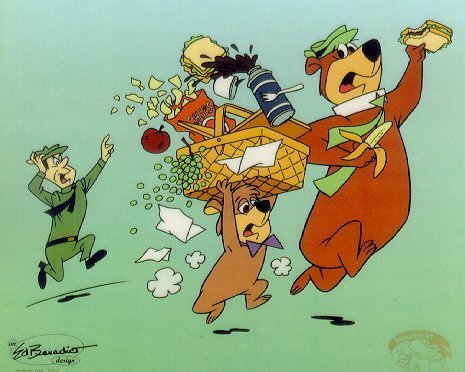 Hanna and Barbera celebrate the adventures of Yogi Bear, living in Jellystone Park, who loves to steal “pic-a-nic” baskets. Yogi’s accomplice BooBoo, a bear cub, helps loot baskets from tourists. Yogi and BooBoo love sandwiches, sausages, cakes,...
Hanna and Barbera celebrate the adventures of Yogi Bear, living in Jellystone Park, who loves to steal “pic-a-nic” baskets. Yogi’s accomplice BooBoo, a bear cub, helps loot baskets from tourists. Yogi and BooBoo love sandwiches, sausages, cakes,...
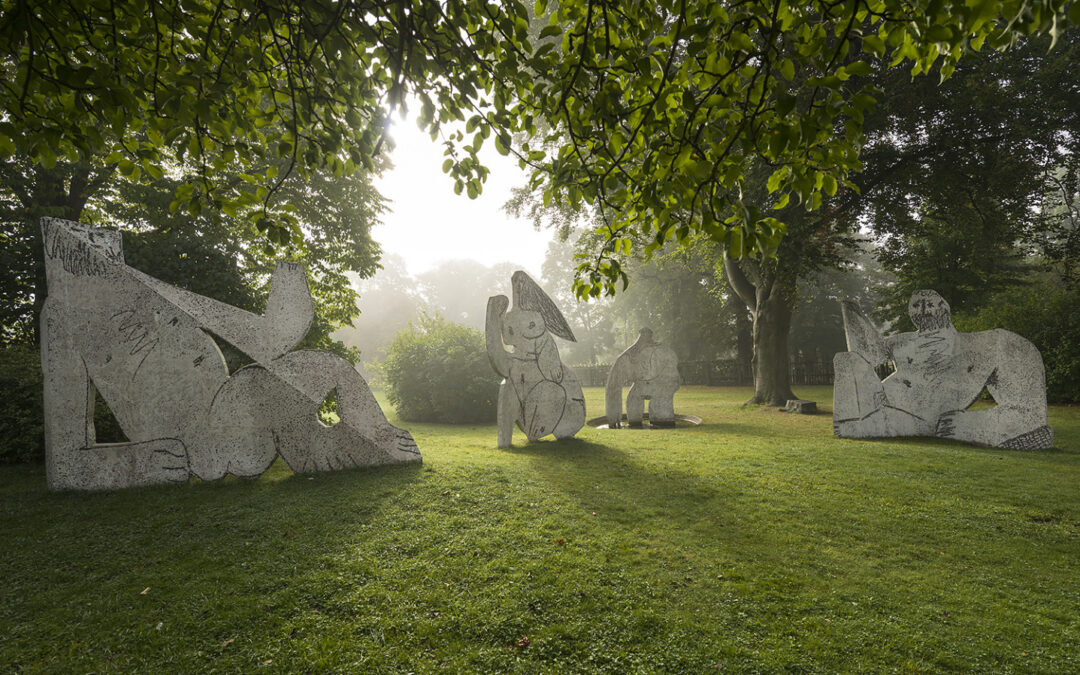 Among Picasso’s many unappealing variations of Manet’s Le dejeuner sur l’herbe is a large sculpture of disunited figures. Great blobs of concrete, ironically, sitting on the grass. But there is no lunch, no food, no picnic. Featured Image: Carl Nesjar Pablo Picasso’s...
Among Picasso’s many unappealing variations of Manet’s Le dejeuner sur l’herbe is a large sculpture of disunited figures. Great blobs of concrete, ironically, sitting on the grass. But there is no lunch, no food, no picnic. Featured Image: Carl Nesjar Pablo Picasso’s...
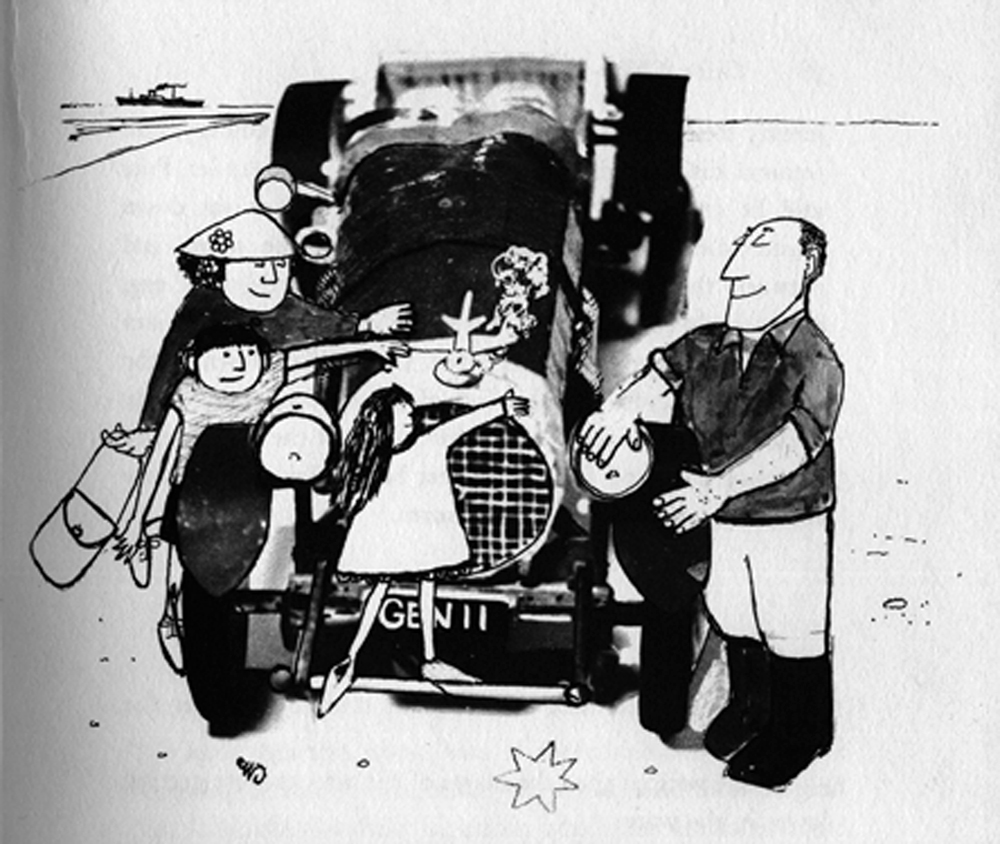 On a Sunday in August, Commander Caractacus Pott announces Mimsie, the mother, Jemima and Jeremy, eight-year-old twins: “Today is going to be a roaster,” he said, “a scorcher. There’s only one thing to do, and that’s for us to take a...
On a Sunday in August, Commander Caractacus Pott announces Mimsie, the mother, Jemima and Jeremy, eight-year-old twins: “Today is going to be a roaster,” he said, “a scorcher. There’s only one thing to do, and that’s for us to take a...
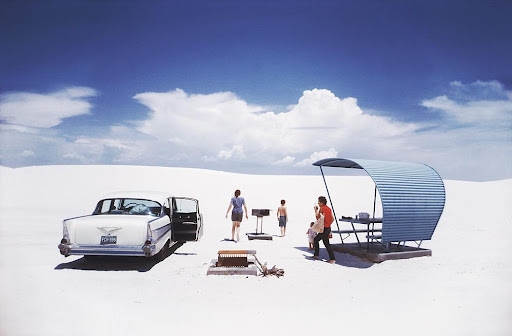 Winogrand’s photograph White Sands Monument is a stunning view of a picnic table in the White Sands Monument National Monument in New Mexico. The white dunes are composed of powdery gypsum. The figures have left their Chevrolet and set out a picnic lunch under the...
Winogrand’s photograph White Sands Monument is a stunning view of a picnic table in the White Sands Monument National Monument in New Mexico. The white dunes are composed of powdery gypsum. The figures have left their Chevrolet and set out a picnic lunch under the...
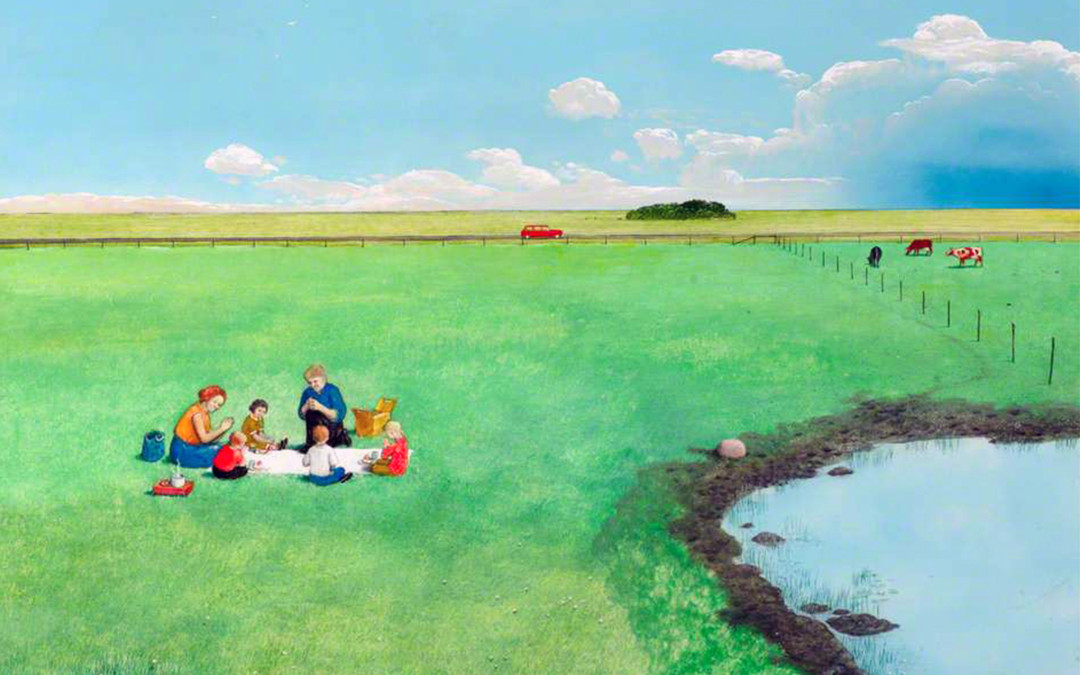 William Kurelek said he carried “wretchedness like a heavy stone sewn up inside of me.” At times, the stone was lifted as in two picnic paintings Manitoba Party (1964) and Out of the Maze (1973), each testifying his recovery from schizophrenia and lost...
William Kurelek said he carried “wretchedness like a heavy stone sewn up inside of me.” At times, the stone was lifted as in two picnic paintings Manitoba Party (1964) and Out of the Maze (1973), each testifying his recovery from schizophrenia and lost...
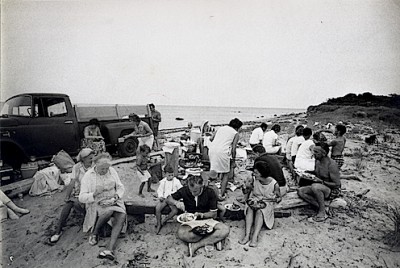 Franey, executive chef of Le Pavilion, New York’s only four-star restaurant, and Craig Claiborne, the New York Times food critic, planned an August picnic on Gardiners Island. * It was staged in August 1965 and ironically reported in a Life magazine issue...
Franey, executive chef of Le Pavilion, New York’s only four-star restaurant, and Craig Claiborne, the New York Times food critic, planned an August picnic on Gardiners Island. * It was staged in August 1965 and ironically reported in a Life magazine issue...
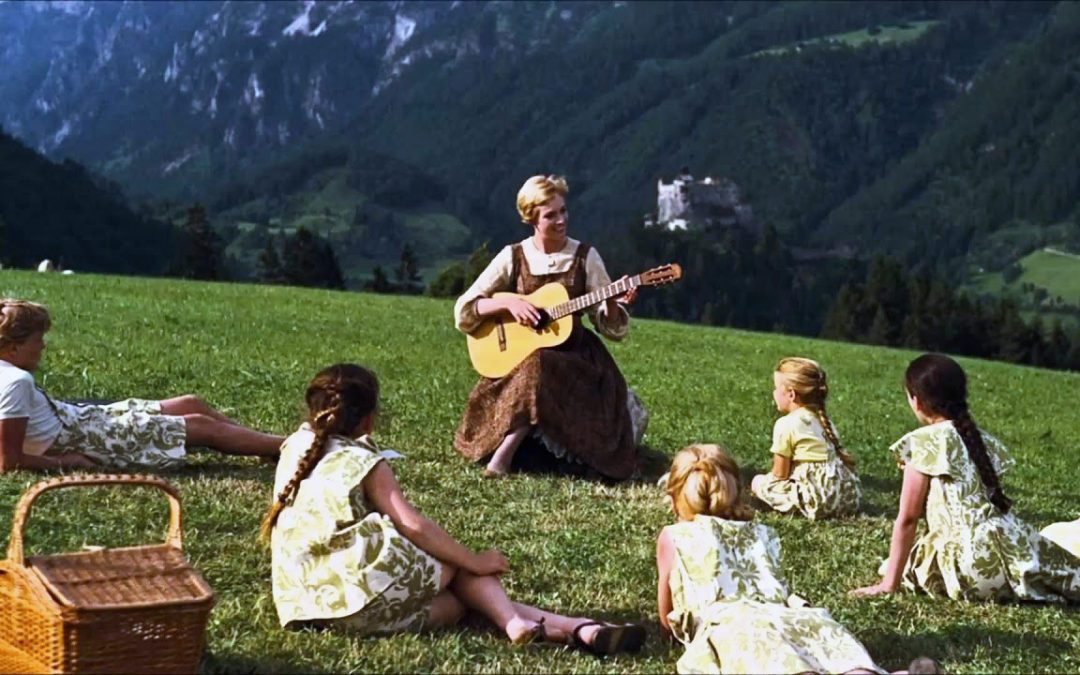 Wise’s The Sound of Music picnic is among film’s happiest and most exuberant picnics. It’s his creation because Rodgers and Hammerstein’s musical does not have picnic. Maria and the children sing “Do-Re-Mi” while marching in the...
Wise’s The Sound of Music picnic is among film’s happiest and most exuberant picnics. It’s his creation because Rodgers and Hammerstein’s musical does not have picnic. Maria and the children sing “Do-Re-Mi” while marching in the...
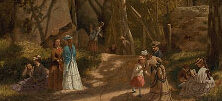 Ironically, the picnic at Hanging Rock overpowers the narrative though it is the novel’s shortest section. The events and ambiance are so actual that readers accept the narrative at face value. Lindsay helped set this delusion by suggesting, “Whether...
Ironically, the picnic at Hanging Rock overpowers the narrative though it is the novel’s shortest section. The events and ambiance are so actual that readers accept the narrative at face value. Lindsay helped set this delusion by suggesting, “Whether...
 Botero’s picnics express moments of happiness, abundance, and love of life in the landscape with ample food, wine, and other provisions. Sometimes, his picnickers are so relaxed they fall asleep. His early exploration of the picnic theme, Picnic in the Mountains,...
Botero’s picnics express moments of happiness, abundance, and love of life in the landscape with ample food, wine, and other provisions. Sometimes, his picnickers are so relaxed they fall asleep. His early exploration of the picnic theme, Picnic in the Mountains,...
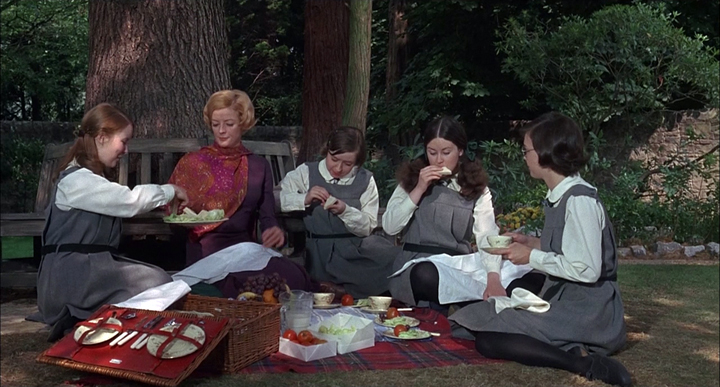 According to Muriel Spark’s novel, Miss Brodie sometimes took the girls into the Marcia Blaine school garden for a lesson. But it was a lesson and not a picnic. Neame’s school picnic of Brodie with her girls is his invention. For the film, Neame and...
According to Muriel Spark’s novel, Miss Brodie sometimes took the girls into the Marcia Blaine school garden for a lesson. But it was a lesson and not a picnic. Neame’s school picnic of Brodie with her girls is his invention. For the film, Neame and...
![Pál Szinyei Merse’s Postage Picnic in May [aka Majális] (1967)](https://picnicwit.com/wp-content/uploads/2022/06/Pál-Szinyei-Merses-Picnic-in-May-aka-Majális-1873-1080x675.jpg) The Hungarian government has issued postage stamps in honor of Merse’s standing among the nation’s most important painters. The former was published in 1966 and the latter in 1967. Majális celebrates the seasonal change and the Hungarian custom of dining outside in...
The Hungarian government has issued postage stamps in honor of Merse’s standing among the nation’s most important painters. The former was published in 1966 and the latter in 1967. Majális celebrates the seasonal change and the Hungarian custom of dining outside in...
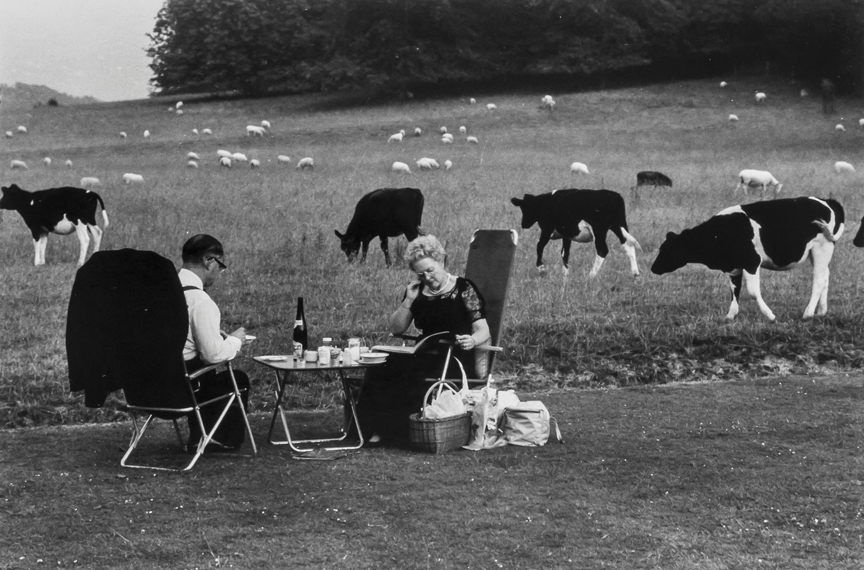 Ray-Jones’ attitude towards life was to expose its “gentle madness” and “to walk, like Alice, through a Looking-Glass, and find another kind of world with the camera.” He preferred to photograph situations that are “ambiguous and unreal, and the juxtaposition of...
Ray-Jones’ attitude towards life was to expose its “gentle madness” and “to walk, like Alice, through a Looking-Glass, and find another kind of world with the camera.” He preferred to photograph situations that are “ambiguous and unreal, and the juxtaposition of...
 Miller’s picnic captures an awkward, passionless-first-time-sexual encounter between Mick and Harry in Carson McCullers’s The Heart is a Lonely Hunter. According to McCullers, Mick and Harry hardly speak, and the narrative breaks off before they have sex....
Miller’s picnic captures an awkward, passionless-first-time-sexual encounter between Mick and Harry in Carson McCullers’s The Heart is a Lonely Hunter. According to McCullers, Mick and Harry hardly speak, and the narrative breaks off before they have sex....
 O’Hara’s “A Few Trips and Some Poetry “is a long story about a picnic where the pleasure of sharing is sexual. O’Hara’s picnic-sex episode provides a memory that lasts a lifetime. What is served at this picnic is not the usual fare;...
O’Hara’s “A Few Trips and Some Poetry “is a long story about a picnic where the pleasure of sharing is sexual. O’Hara’s picnic-sex episode provides a memory that lasts a lifetime. What is served at this picnic is not the usual fare;...
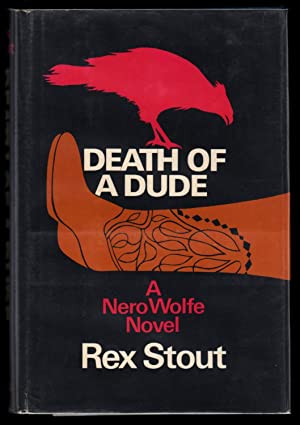 Wolfe’s tale of murder unfolds when Rex Stout’s three-hundred-and-fifty-pound detective is to give a short speech at the United Restaurant Workers of America Fourth of July celebration at Culp’s Meadows, somewhere on Long Island. As narrated by...
Wolfe’s tale of murder unfolds when Rex Stout’s three-hundred-and-fifty-pound detective is to give a short speech at the United Restaurant Workers of America Fourth of July celebration at Culp’s Meadows, somewhere on Long Island. As narrated by...
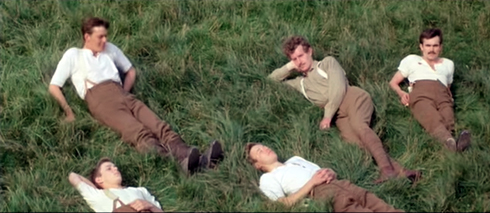 Attenborough’s Oh! What a Lovely War keeps the essential anti-war satire originally envisioned by Charles Chiltern and Joan Littlewood. New and effective, however, is the film’s final sequence, which begins as a picnic on the grass and ends with a...
Attenborough’s Oh! What a Lovely War keeps the essential anti-war satire originally envisioned by Charles Chiltern and Joan Littlewood. New and effective, however, is the film’s final sequence, which begins as a picnic on the grass and ends with a...
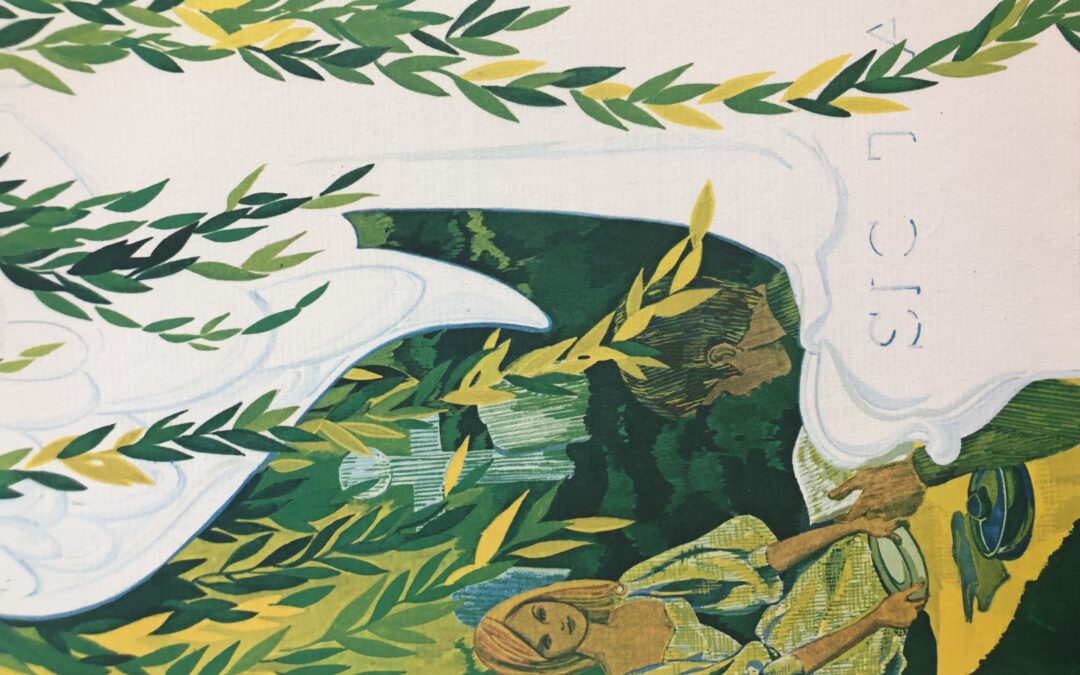 Hazelton prefers picnics that are not spontaneous.. She contends a picnic begins when you “invite the people and then figure out the food.” “My idea of a good picnic, she writes, “is one that I can fix up at home and need only carry and unpack at the chosen spot. I...
Hazelton prefers picnics that are not spontaneous.. She contends a picnic begins when you “invite the people and then figure out the food.” “My idea of a good picnic, she writes, “is one that I can fix up at home and need only carry and unpack at the chosen spot. I...
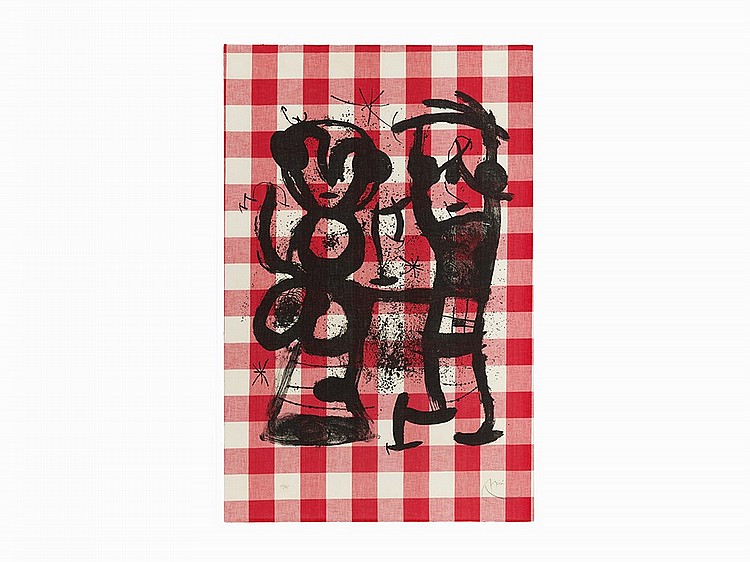 Miró probably printed this image of rustics at play on a typical picnic cloth of red gingham as a decorative joke. Miró has said it’s never easy for him to talk about his art. In a letter to Pierre Matisse, however, he explains that he is drawn to his objects by some...
Miró probably printed this image of rustics at play on a typical picnic cloth of red gingham as a decorative joke. Miró has said it’s never easy for him to talk about his art. In a letter to Pierre Matisse, however, he explains that he is drawn to his objects by some...
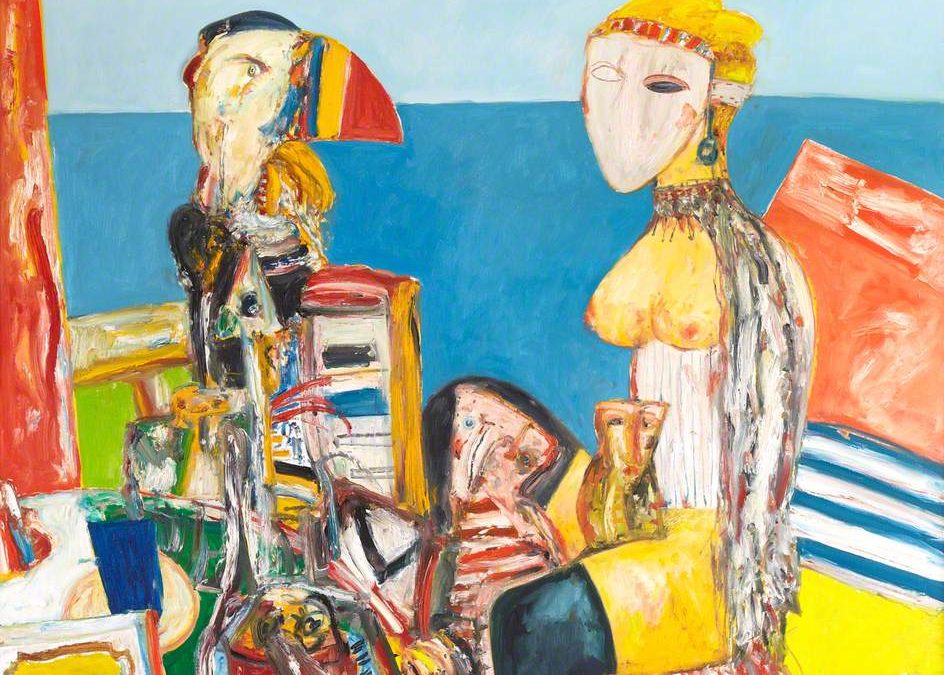 Strange figures and vibrant colors make this picnic unsettling. The setting appears to be a sailboat in which a puffin sits beside a bare-breasted woman with a face like a mask. There is a dog in her lap and a striped tabby at her knee. Above the funnel (lower right)...
Strange figures and vibrant colors make this picnic unsettling. The setting appears to be a sailboat in which a puffin sits beside a bare-breasted woman with a face like a mask. There is a dog in her lap and a striped tabby at her knee. Above the funnel (lower right)...
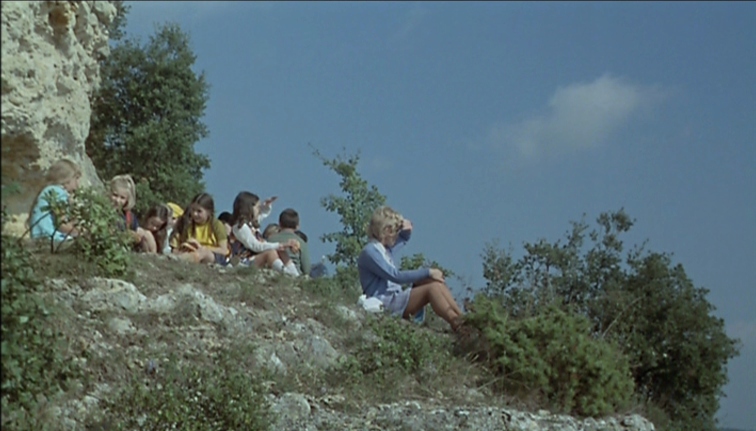 It’s an ordinary school trip when Hélène guides her class to Cougnac Caves above the Dordogne River. The cave paintings are thirty-thousand-year-old, but lunch is more important for the children. They chatter when Hélène has the children safely settled on the...
It’s an ordinary school trip when Hélène guides her class to Cougnac Caves above the Dordogne River. The cave paintings are thirty-thousand-year-old, but lunch is more important for the children. They chatter when Hélène has the children safely settled on the...
![Albert E. Brumley’s All-Day Singin’ and Dinner on the Ground[s] (1972)](https://picnicwit.com/wp-content/uploads/2018/02/Albert-Brumley.-All-Day-Singin-and-Dinner-on-the-Ground-1080x675.jpg) Camp meetings are an American tradition, the first of which seems to have been organized by James McGready (c.1760–1817) based on the Scottish Presbyterian outdoor revival meetings. These meetings were introduced to England in 1807, especially by the Methodists. The...
Camp meetings are an American tradition, the first of which seems to have been organized by James McGready (c.1760–1817) based on the Scottish Presbyterian outdoor revival meetings. These meetings were introduced to England in 1807, especially by the Methodists. The...
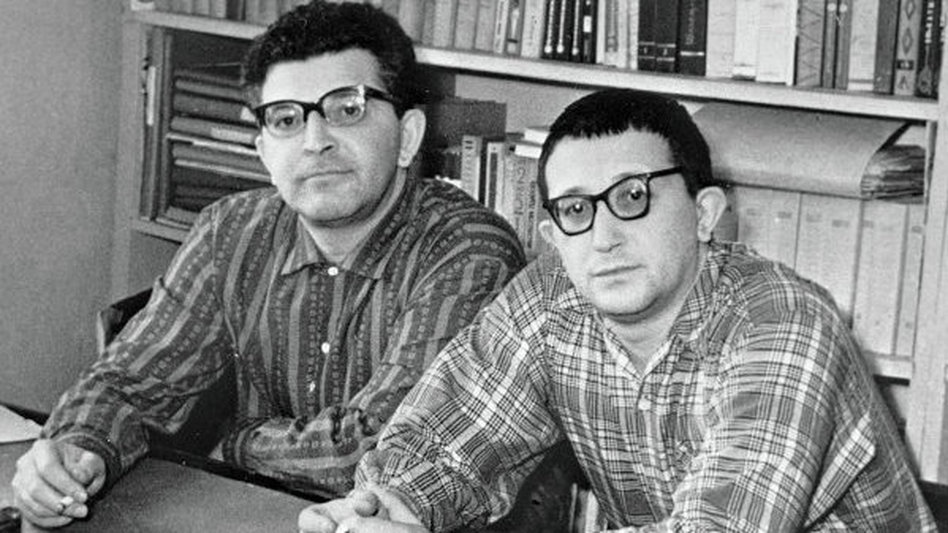 The Strugatsky’s Roadside Picnic is somewhere in Canada, where specialists pick through the debris left by careless Extraterrestrial picnickers. There is no picnic.The picnic is a metaphor offered by knowledgeable scientist Valentine Pillman to explain the...
The Strugatsky’s Roadside Picnic is somewhere in Canada, where specialists pick through the debris left by careless Extraterrestrial picnickers. There is no picnic.The picnic is a metaphor offered by knowledgeable scientist Valentine Pillman to explain the...
 Farrell’s picnic in The Siege of Khrishnapur siege is purposely mischaracterized as entertainment for local Indians watching Sepoys attack the official Residency of the East India Company’s residence. It’s a fictional addition to a historical siege lasting five months...
Farrell’s picnic in The Siege of Khrishnapur siege is purposely mischaracterized as entertainment for local Indians watching Sepoys attack the official Residency of the East India Company’s residence. It’s a fictional addition to a historical siege lasting five months...
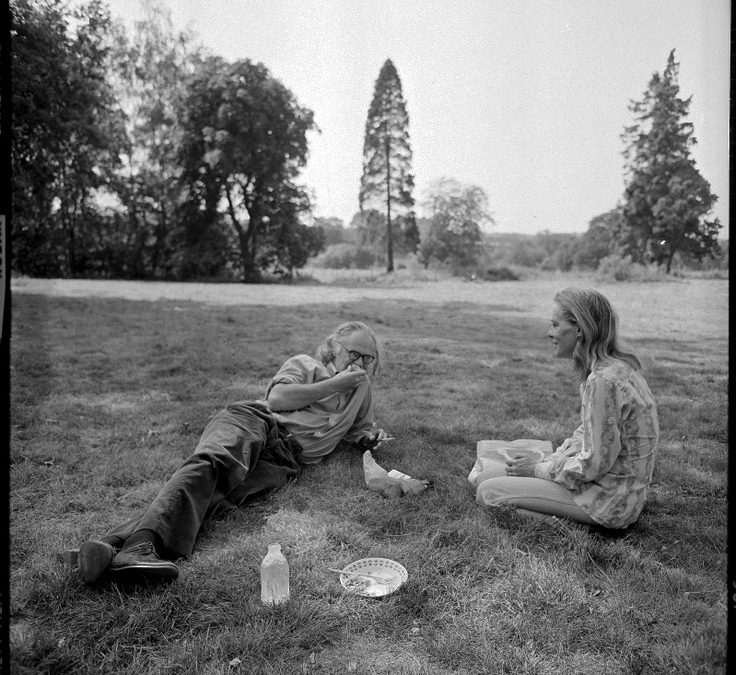 Evans’s photograph of Robert Lowell and Caroline Blackwood suggests they are just another loving couple picnicking on the grass. Evans was aware of the couple’s tension but wrote to a friend, “I think they do a lot for each other, and it is a great...
Evans’s photograph of Robert Lowell and Caroline Blackwood suggests they are just another loving couple picnicking on the grass. Evans was aware of the couple’s tension but wrote to a friend, “I think they do a lot for each other, and it is a great...
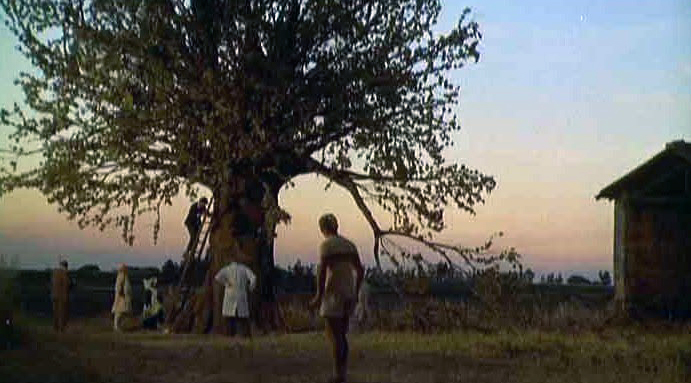 Fellini’s scampagnata, picnic, in Amarcord, a semi-autobiographical narrative, tells about an ordinary alfresco lunch set in the shade of the yard of a farmhouse. What is served is unknown, but there are bottles of raffia-bound Chianti, a bowl of hard-boiling eggs,...
Fellini’s scampagnata, picnic, in Amarcord, a semi-autobiographical narrative, tells about an ordinary alfresco lunch set in the shade of the yard of a farmhouse. What is served is unknown, but there are bottles of raffia-bound Chianti, a bowl of hard-boiling eggs,...
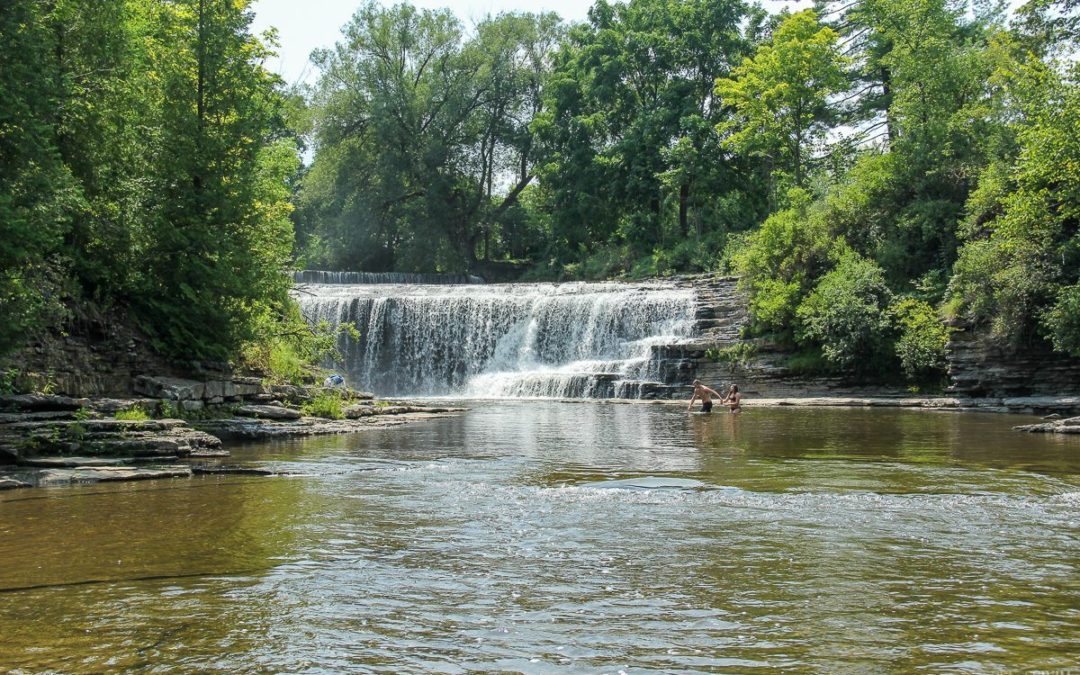 Exley’s semi-memoir Pages from a Cold Island, an homage to Edmund Wilson, describes his disastrous picnic on the Sugar River with Mary Polcar, Wilson’s “drinking, dinner, and movie companion,” and get her to talk about him. Exley’s...
Exley’s semi-memoir Pages from a Cold Island, an homage to Edmund Wilson, describes his disastrous picnic on the Sugar River with Mary Polcar, Wilson’s “drinking, dinner, and movie companion,” and get her to talk about him. Exley’s...
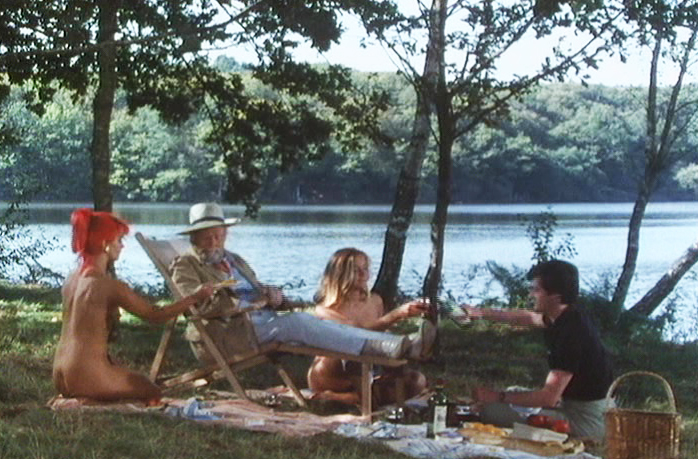 Fowles’s The Ebony Tower is a sendup of Manet’s Déjeuner sur l’herbe. Although a boat is in the background, it is uncertain how Manet’s picnickers arrived for their dejeuner sur l’herbe. Fowles’ version of the picnic is definitive; the...
Fowles’s The Ebony Tower is a sendup of Manet’s Déjeuner sur l’herbe. Although a boat is in the background, it is uncertain how Manet’s picnickers arrived for their dejeuner sur l’herbe. Fowles’ version of the picnic is definitive; the...
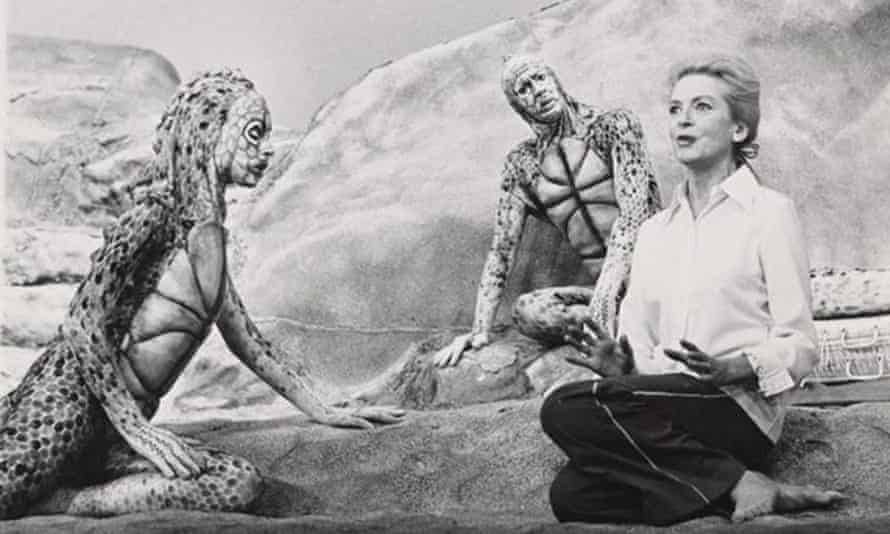 Albee’s Seascape is set on a beach, the evolutionary boundary from which sea creatures emerged to walk on land. The action begins innocently. Charlie and Nancy Man are just finishing a picnic when they encounter two primordial green lizards, Leslie and Sarah,...
Albee’s Seascape is set on a beach, the evolutionary boundary from which sea creatures emerged to walk on land. The action begins innocently. Charlie and Nancy Man are just finishing a picnic when they encounter two primordial green lizards, Leslie and Sarah,...
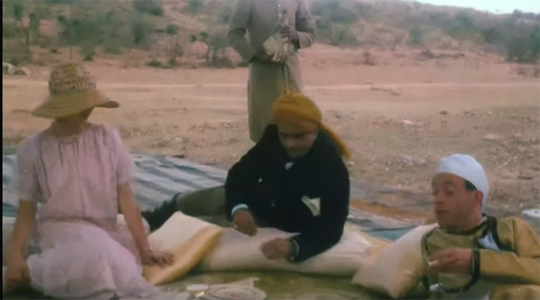 Jhabvala’s Heat and Dust (1975has two picnics fifty years apart. The narrative concerns the lives of two unfulfilled English women in Satipur, a town amidst the heat and dust of the plains in Uttar Pradesh, in north-central India. In 1923, Olivia Rivers visits...
Jhabvala’s Heat and Dust (1975has two picnics fifty years apart. The narrative concerns the lives of two unfulfilled English women in Satipur, a town amidst the heat and dust of the plains in Uttar Pradesh, in north-central India. In 1923, Olivia Rivers visits...
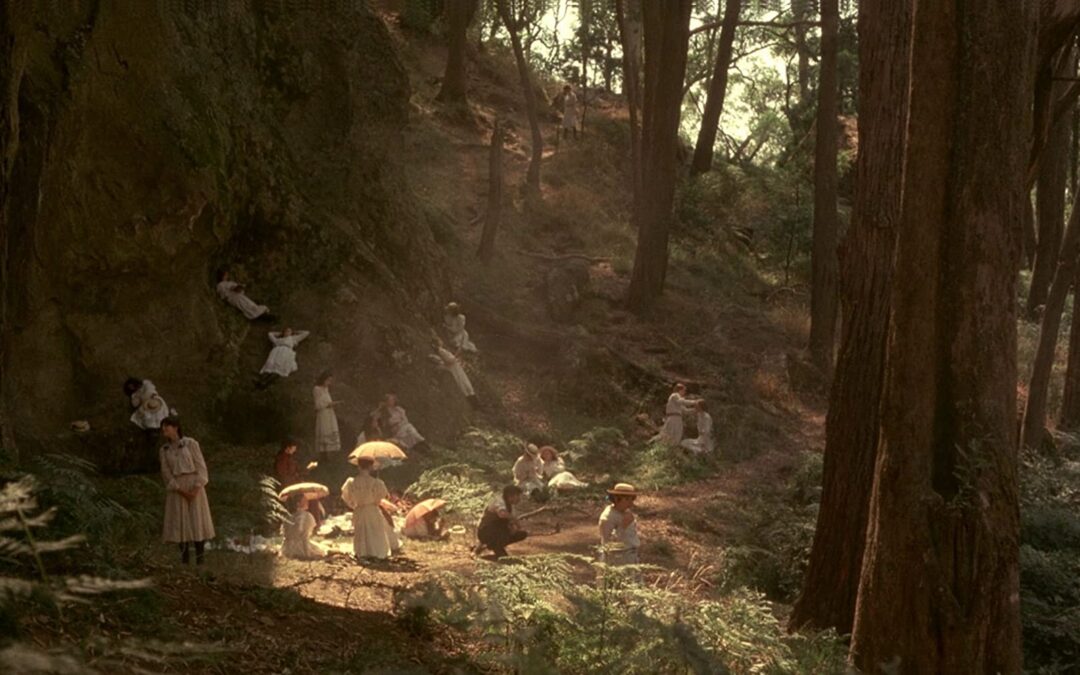 Weir’s Picnic at Hanging Rock is an adaptation of Joan Lindsay’s novel about how the Valentine’s Day picnic of the Appleyard College girls ended badly. Inexplicably, two girls and a teacher disappear—and are never found. Weir and his screenwriter...
Weir’s Picnic at Hanging Rock is an adaptation of Joan Lindsay’s novel about how the Valentine’s Day picnic of the Appleyard College girls ended badly. Inexplicably, two girls and a teacher disappear—and are never found. Weir and his screenwriter...
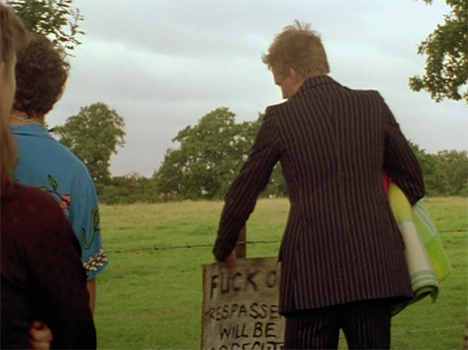 Appleseed Rectory is the site of Amis’s relentlessly unpleasant picnic that defiantly upends expectations. * The picnic is Quentin’s idea of fun for his guests, a free-wheeling and animated by alcohol and drugs. He says to his wife Celia, “I thought...
Appleseed Rectory is the site of Amis’s relentlessly unpleasant picnic that defiantly upends expectations. * The picnic is Quentin’s idea of fun for his guests, a free-wheeling and animated by alcohol and drugs. He says to his wife Celia, “I thought...
 In E Fontane’s tet, Effi and her lover Major von Crampas eat at a simple wooden table behind the dunes to avoid the Baltic’s gusty winds. A servant has set a cloth with slices of cold meat, rolls, and red wine (served in delicate glasses). Fassbinder’s picnics, of...
In E Fontane’s tet, Effi and her lover Major von Crampas eat at a simple wooden table behind the dunes to avoid the Baltic’s gusty winds. A servant has set a cloth with slices of cold meat, rolls, and red wine (served in delicate glasses). Fassbinder’s picnics, of...
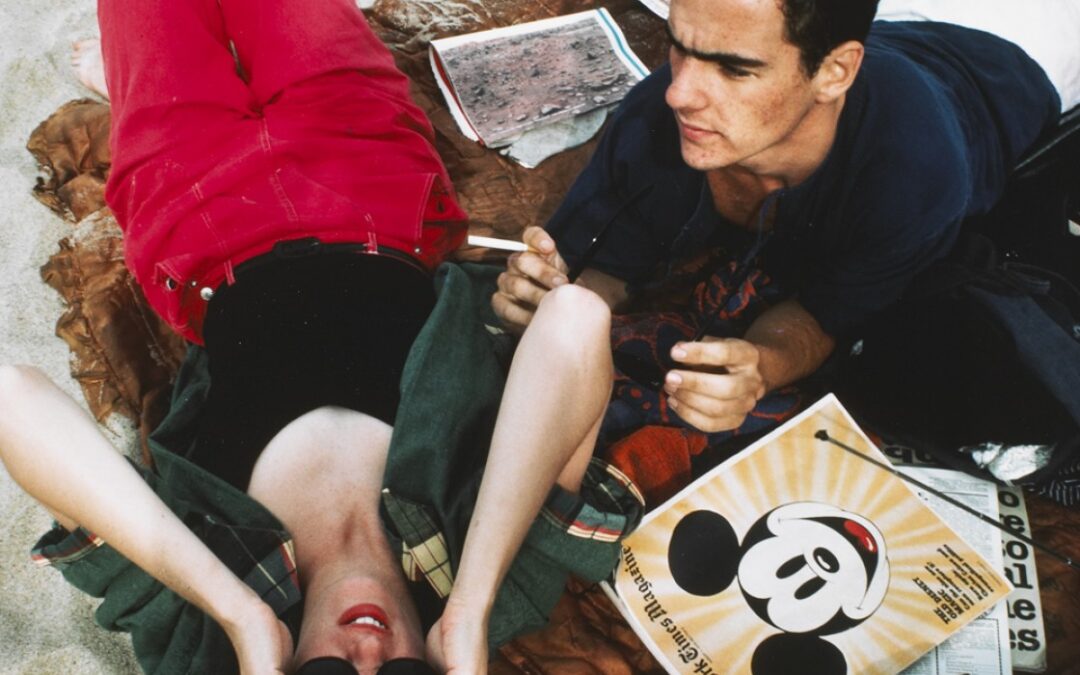 Goldin’s is a spoof at Mickey Mouse’s expense. “CZ and Max on the Beach, Truro, MA” is a staged picnic of CZ and Max on a picnic cloth next to Mickey Mouse’s picture on the cover of The New York Times Magazine. Goldin seems to be suggesting that such outings are...
Goldin’s is a spoof at Mickey Mouse’s expense. “CZ and Max on the Beach, Truro, MA” is a staged picnic of CZ and Max on a picnic cloth next to Mickey Mouse’s picture on the cover of The New York Times Magazine. Goldin seems to be suggesting that such outings are...
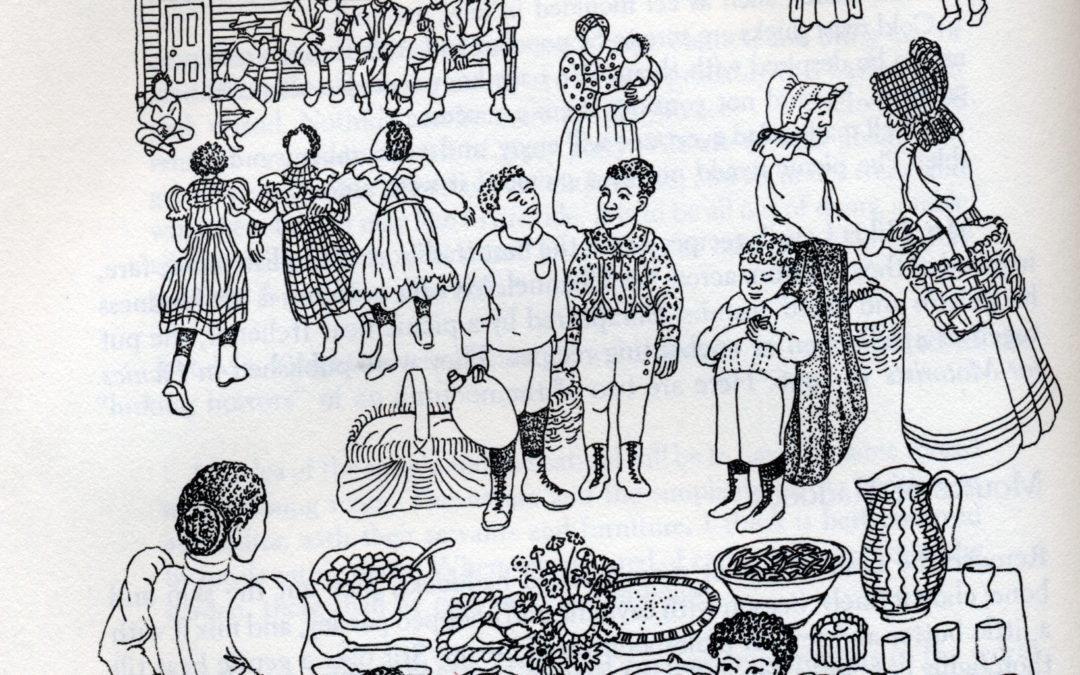 Lewis’s food memoir includes happy memory of a Revival Sunday Dinner, aka “Second Sunday,” in her hometown of Freetown, Virginia, in the 1930s. Cooking was done by women, while the men attended church but returned home to pack the family and the food so that it would...
Lewis’s food memoir includes happy memory of a Revival Sunday Dinner, aka “Second Sunday,” in her hometown of Freetown, Virginia, in the 1930s. Cooking was done by women, while the men attended church but returned home to pack the family and the food so that it would...
 Wunderlich’s surrealistic Das Frühstuck im Grünen [Luncheon on the Grass] is an adaptation of both Édouard Manet’s Luncheon on the Grass. Sensuality, sex, and pleasantries are absent. Distorted figures, resembling goats, sit in a barren landscape without the benefit...
Wunderlich’s surrealistic Das Frühstuck im Grünen [Luncheon on the Grass] is an adaptation of both Édouard Manet’s Luncheon on the Grass. Sensuality, sex, and pleasantries are absent. Distorted figures, resembling goats, sit in a barren landscape without the benefit...
 Grass’s picnic in The Flounder is among the worst. Not only does he mock the accepted idea of a picnic, but he turns it topsy-turvy. It’s an ugly episode in which Sybille, aka Billie, is a variation of the Greek oracle/prophetess Sybil. According to Grass’ version,...
Grass’s picnic in The Flounder is among the worst. Not only does he mock the accepted idea of a picnic, but he turns it topsy-turvy. It’s an ugly episode in which Sybille, aka Billie, is a variation of the Greek oracle/prophetess Sybil. According to Grass’ version,...
 Trillin’s “Fly Frills to Miami” makes a picnic in an airplane “normal.” When Trillin’s wife Alice complains about travel expenses, Calvin decides to go cheap by purchasing food from New York to Miami. Based on “Alice’s...
Trillin’s “Fly Frills to Miami” makes a picnic in an airplane “normal.” When Trillin’s wife Alice complains about travel expenses, Calvin decides to go cheap by purchasing food from New York to Miami. Based on “Alice’s...
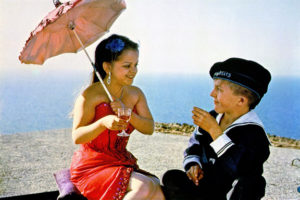 Schlöndorff does his best to remain faithful to Grass’s mordant picnic satire. Grass was pleased: “In Schlöndorff, I found a true interlocutor, someone who provoked me with his questions, who delved into the heart of the subject, and who, during our dialogue, forced...
Schlöndorff does his best to remain faithful to Grass’s mordant picnic satire. Grass was pleased: “In Schlöndorff, I found a true interlocutor, someone who provoked me with his questions, who delved into the heart of the subject, and who, during our dialogue, forced...
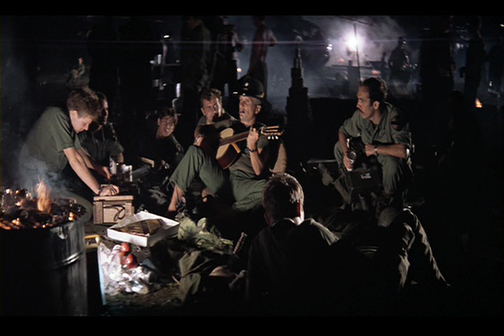 Coppola’s Apocalypse Now is inspired by Conrad’s The Heart of Darkness. Coppola adapted the action and characters to his conception of the “insane” war in Vietnam, and the beach party picnic is his addition to the narrative. Coppola ensures...
Coppola’s Apocalypse Now is inspired by Conrad’s The Heart of Darkness. Coppola adapted the action and characters to his conception of the “insane” war in Vietnam, and the beach party picnic is his addition to the narrative. Coppola ensures...
 Brooklyn’s Prospect Park is where Sophie Zawistowska is sometimes picnicked. Stingo, the narrator, associates Sophie’s park outings as one of Watteau and Fragonard a fête champêtres. He supposes that it was a “pleasant game” for Sophie to buy...
Brooklyn’s Prospect Park is where Sophie Zawistowska is sometimes picnicked. Stingo, the narrator, associates Sophie’s park outings as one of Watteau and Fragonard a fête champêtres. He supposes that it was a “pleasant game” for Sophie to buy...
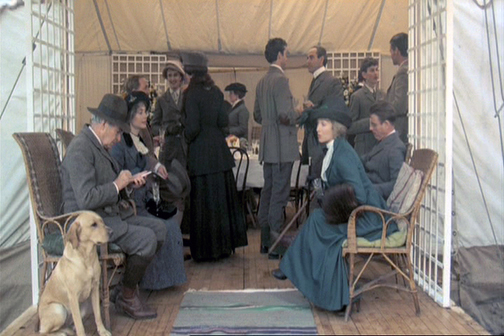 Bridges’s hunt picnic is faithful to Isabel Colegate’s gently melancholy novel of English gentry circa 1913, The Shooting Party. The title The Shooting Party is intended to suggest the larger “shooting party” of the looming world war. Though they know it, Sir...
Bridges’s hunt picnic is faithful to Isabel Colegate’s gently melancholy novel of English gentry circa 1913, The Shooting Party. The title The Shooting Party is intended to suggest the larger “shooting party” of the looming world war. Though they know it, Sir...
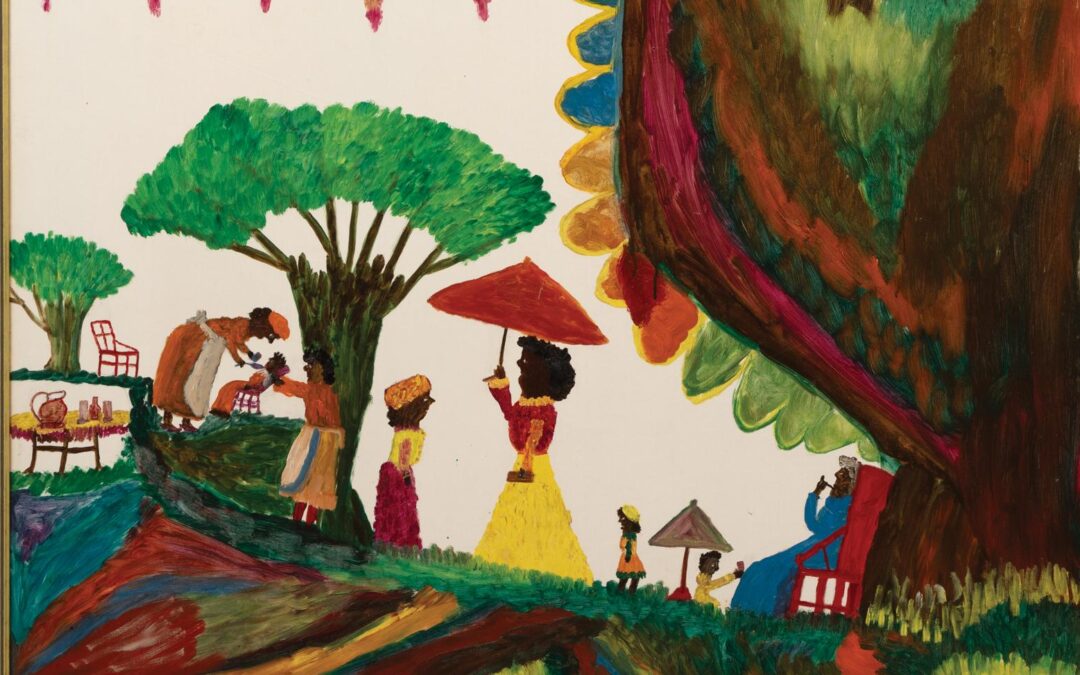 Hunter is a self-taught artist, whose subjects are mainly depictions of the environs of Melrose Plantation in Natchitoches Parish, Louisiana. Picnic belies the fact that Hunter’s life was difficult. She was poor, illiterate, yet embued with a strong soul yearning to...
Hunter is a self-taught artist, whose subjects are mainly depictions of the environs of Melrose Plantation in Natchitoches Parish, Louisiana. Picnic belies the fact that Hunter’s life was difficult. She was poor, illiterate, yet embued with a strong soul yearning to...
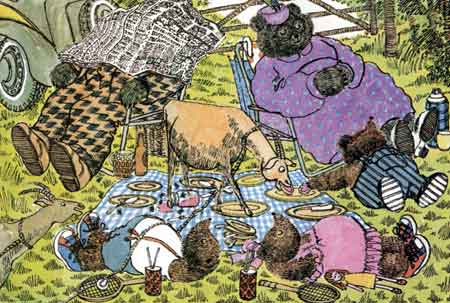 Picnic is the euphemism for a daylong eating orgy in Gordon’s Wilberforce Goes on a Picnic (1982). It’s the story of obese bears and a goat, who collectively devour mounds of hamburgers on rolls, sandwiches, a jar of catsup, a bowl heaped with mashed...
Picnic is the euphemism for a daylong eating orgy in Gordon’s Wilberforce Goes on a Picnic (1982). It’s the story of obese bears and a goat, who collectively devour mounds of hamburgers on rolls, sandwiches, a jar of catsup, a bowl heaped with mashed...
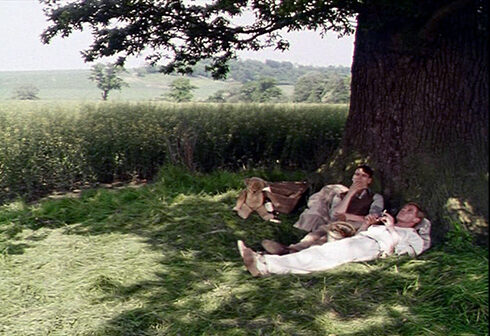 Sturridge’s strawberry picnic in Brideshead Revisited is mainly faithful to Waugh’s novel. Sebastian Flyte and Charles Ryder’s idyllic picnic and intensely close friendship is a moment of respite in their otherwise often messy lives. Particularly Sebastian’s....
Sturridge’s strawberry picnic in Brideshead Revisited is mainly faithful to Waugh’s novel. Sebastian Flyte and Charles Ryder’s idyllic picnic and intensely close friendship is a moment of respite in their otherwise often messy lives. Particularly Sebastian’s....
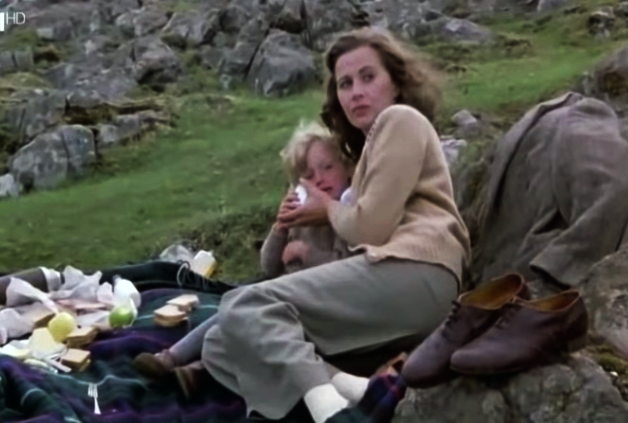 Marquand’s The Eye of the Needle is close enough to Follett’s spy thriller, which does not have a picnic episode. Henry Faber, aka Henry Baker, aka The Needle, waits to connect with a Nazi U-boat to take him back to Germany to meet with Hitler. He’s...
Marquand’s The Eye of the Needle is close enough to Follett’s spy thriller, which does not have a picnic episode. Henry Faber, aka Henry Baker, aka The Needle, waits to connect with a Nazi U-boat to take him back to Germany to meet with Hitler. He’s...
 Claiborne’s A Feast Made for Laughter (1982) relates the anecdote of the “Chefs’ Picnic” (1965) staged on Gardiners Island, East Hampton, NY, for twenty-five and catered by five four-star chefs. According to Claiborne, he was the star. His...
Claiborne’s A Feast Made for Laughter (1982) relates the anecdote of the “Chefs’ Picnic” (1965) staged on Gardiners Island, East Hampton, NY, for twenty-five and catered by five four-star chefs. According to Claiborne, he was the star. His...
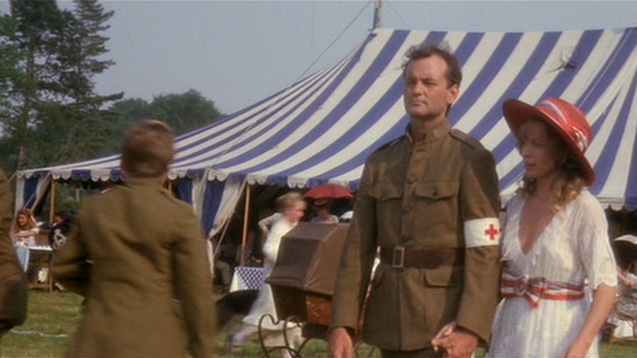 At Byrum’s July Fourth picnic, lovers cuddle, kiss, and roll on the grass. Larry Darrell wants more, but Isabel Bradley wants to wait. At the lover’s picnic in Maugham’s The Razor’s Edge, never touch or kiss or even hold hands As in...
At Byrum’s July Fourth picnic, lovers cuddle, kiss, and roll on the grass. Larry Darrell wants more, but Isabel Bradley wants to wait. At the lover’s picnic in Maugham’s The Razor’s Edge, never touch or kiss or even hold hands As in...
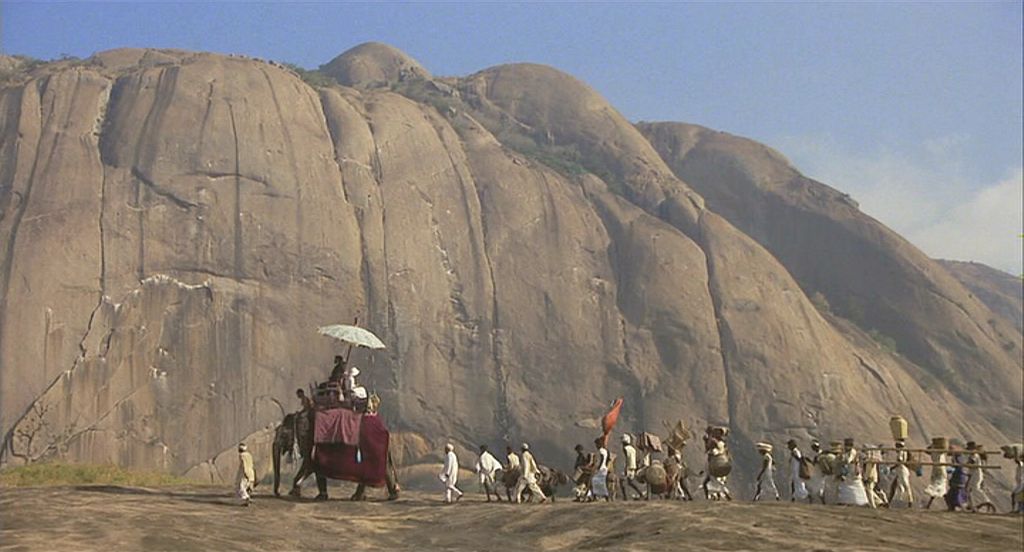 The Marabar Caves picnic is a metaphor for the irreconcilability of Anglo-Indian relationships. Lean’s careful version of the catastrophic “Caves” episode, like Forster’s, constitutes the middle third of A Passage to India. Dr. Aziz’s...
The Marabar Caves picnic is a metaphor for the irreconcilability of Anglo-Indian relationships. Lean’s careful version of the catastrophic “Caves” episode, like Forster’s, constitutes the middle third of A Passage to India. Dr. Aziz’s...
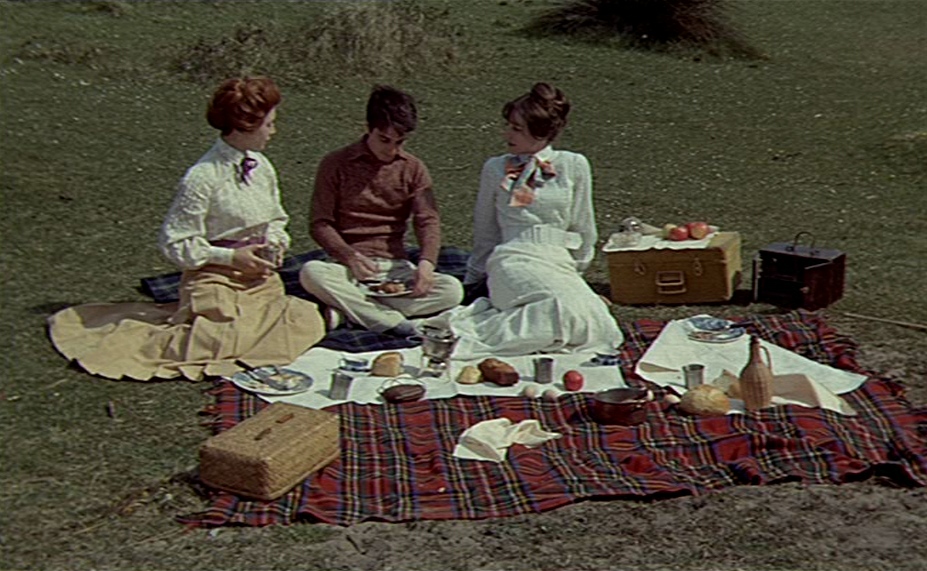 Truffaut’s title Les deux Anglaises et le continent refers to two English girls, Muriel and Anne Brown, and their lover, Claude Roc, a Frenchman. It’s a confusing title until it is explained that the girls affectionately call Claude le continent. Even so, it’s a ditsy...
Truffaut’s title Les deux Anglaises et le continent refers to two English girls, Muriel and Anne Brown, and their lover, Claude Roc, a Frenchman. It’s a confusing title until it is explained that the girls affectionately call Claude le continent. Even so, it’s a ditsy...
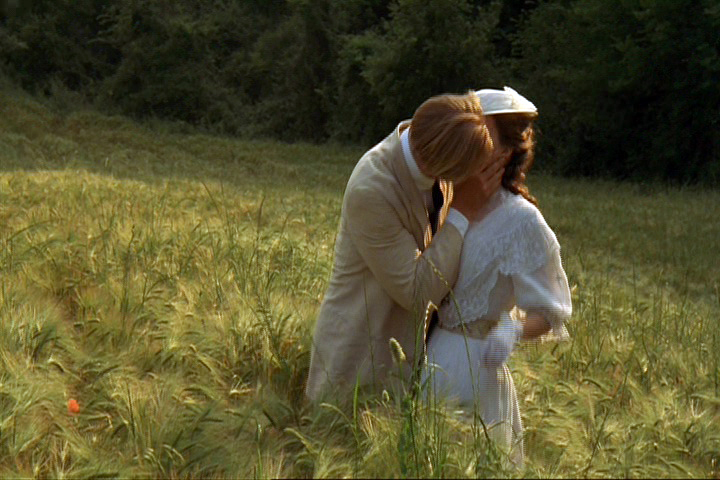 Ivory is faithful to Forster’s picnic at Fiesole, where a group of English tourists gathers to enjoy the view from Fiesole. * This prospect offers a glorious of Florence, but neither Ivory nor Forster describes it. As so many picnics do, the day begins well but...
Ivory is faithful to Forster’s picnic at Fiesole, where a group of English tourists gathers to enjoy the view from Fiesole. * This prospect offers a glorious of Florence, but neither Ivory nor Forster describes it. As so many picnics do, the day begins well but...
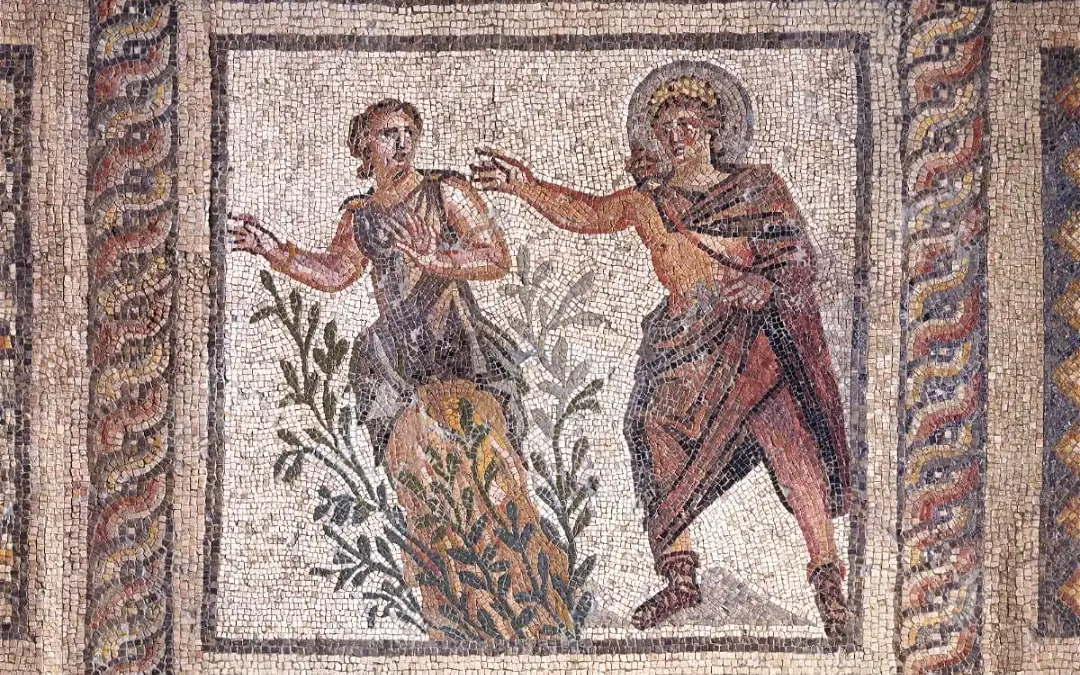 Forster’s “The Other Kingdom” is based on Ovid’s “Daphne and Apollo” in Metamorphosis. When Harcourt Worters gives his wife Evelyn Beaumont a grove of beech trees as a wedding present, she calls it her “picnic grove.” A...
Forster’s “The Other Kingdom” is based on Ovid’s “Daphne and Apollo” in Metamorphosis. When Harcourt Worters gives his wife Evelyn Beaumont a grove of beech trees as a wedding present, she calls it her “picnic grove.” A...
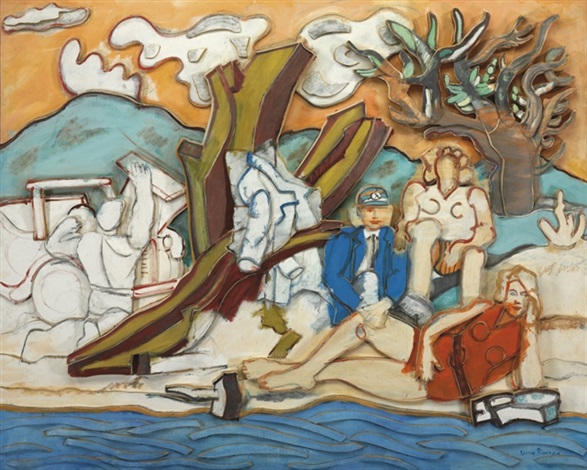 Rivers expressed his appreciation of good picnic fun in Picnic (1985) and The Pleasant Picnic (1990). Both are inspired by Leger’s series La Partie de Campagne [The Country Outing, or Picnic] (1952/53). The Pleasant Picnic changes the scene. Now the picnickers...
Rivers expressed his appreciation of good picnic fun in Picnic (1985) and The Pleasant Picnic (1990). Both are inspired by Leger’s series La Partie de Campagne [The Country Outing, or Picnic] (1952/53). The Pleasant Picnic changes the scene. Now the picnickers...
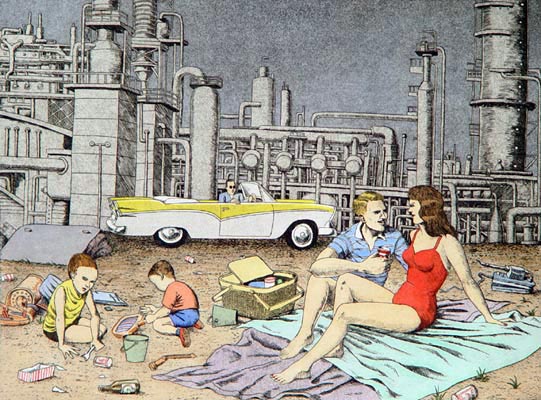 You have to look at this again to fully grasp the satire. Nice. Compare this with Banksy’s picnic. See William B. Montgomery. Industrial Picnic. 1986. Etching, hand-colored
You have to look at this again to fully grasp the satire. Nice. Compare this with Banksy’s picnic. See William B. Montgomery. Industrial Picnic. 1986. Etching, hand-colored
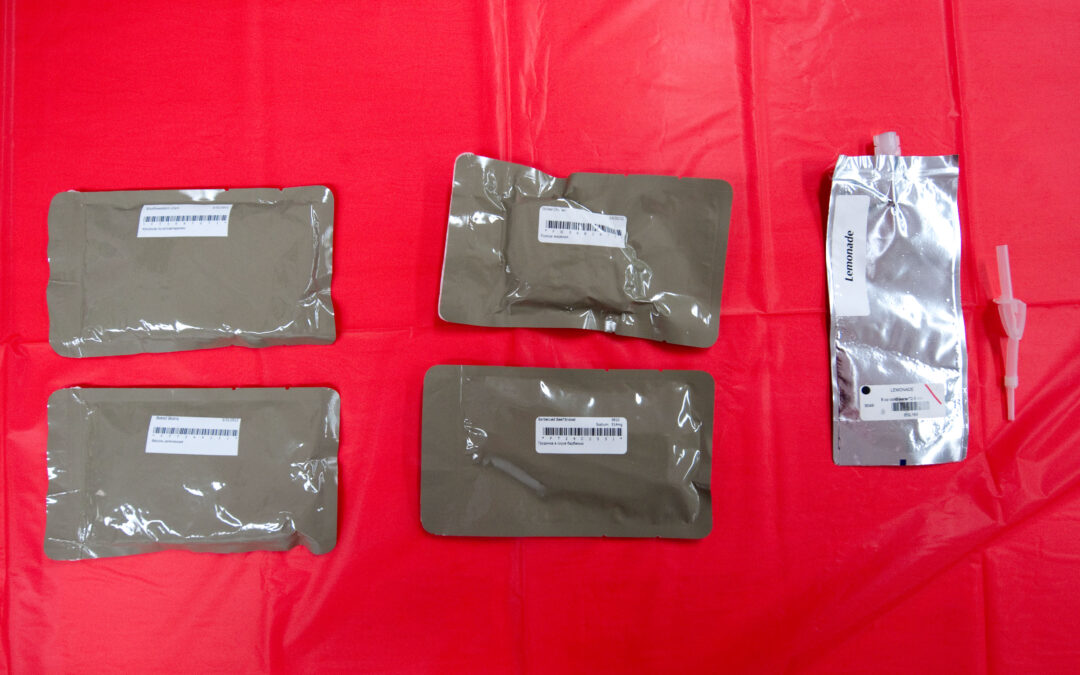 Theroux’s O-Zone New Year’s Eve ranks among the most disagreeable and uncomfortable picnics. Eight picnickers have gathered in the O-Zone or Outer Zone, once Arkansas and Missouri, now in 2036, a vast ecological disaster area. Encased in self-contained...
Theroux’s O-Zone New Year’s Eve ranks among the most disagreeable and uncomfortable picnics. Eight picnickers have gathered in the O-Zone or Outer Zone, once Arkansas and Missouri, now in 2036, a vast ecological disaster area. Encased in self-contained...
 Industrial Picnic is William Montgomery’s satirical vision of how we are desensitized by pollution and learn to do with what we have. Wonderful satire. Featured Image: William B. Montgomery. Industrial Picnic. Hand-colored etching.
Industrial Picnic is William Montgomery’s satirical vision of how we are desensitized by pollution and learn to do with what we have. Wonderful satire. Featured Image: William B. Montgomery. Industrial Picnic. Hand-colored etching.
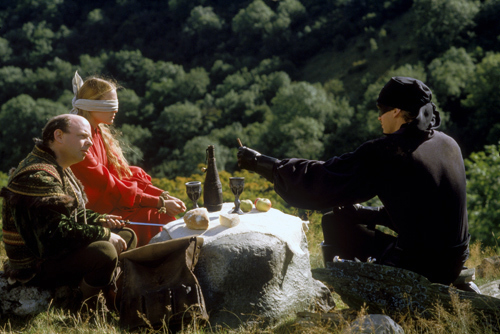 The Princess Bride is Rob Reiner’s adaptation of William Goldman’s novel, for which Goldman wrote the screenplay. The story is known for its humor and gentle satire of romantic love and swashbuckling mischief. Vizzini’s picnic at which he duels with...
The Princess Bride is Rob Reiner’s adaptation of William Goldman’s novel, for which Goldman wrote the screenplay. The story is known for its humor and gentle satire of romantic love and swashbuckling mischief. Vizzini’s picnic at which he duels with...
 Edwards’s comedy is sometimes madcap, but when matters settle, there is a happy ending with a picnic on the beach. What else is new? See Blake Edwards’s Blind Date (1987). The screenplay is by Dale Launer. Featured Image: Bruce Willis as Walter Davis; Kim Bassinger as...
Edwards’s comedy is sometimes madcap, but when matters settle, there is a happy ending with a picnic on the beach. What else is new? See Blake Edwards’s Blind Date (1987). The screenplay is by Dale Launer. Featured Image: Bruce Willis as Walter Davis; Kim Bassinger as...
 Ringgold’s Church Picnic Story Quilt (1988) is a painted quilt that portrays the Freedom Baptist Church Sunday School picnic. Picnic cloths are spread out on the grass, and families sit in separate groups eating the foods they have totted along. The children playing...
Ringgold’s Church Picnic Story Quilt (1988) is a painted quilt that portrays the Freedom Baptist Church Sunday School picnic. Picnic cloths are spread out on the grass, and families sit in separate groups eating the foods they have totted along. The children playing...
 Among the silly escapades in Big Top Pee-wee is Pee-Wee’s klutzy relationship with his financé Winnie Johnson. Every day, Pee-wee and Winnie meet for a lunchtime picnic, for which she makes egg salad sandwiches that Pee-wee hates. Pee-wee endures this because...
Among the silly escapades in Big Top Pee-wee is Pee-Wee’s klutzy relationship with his financé Winnie Johnson. Every day, Pee-wee and Winnie meet for a lunchtime picnic, for which she makes egg salad sandwiches that Pee-wee hates. Pee-wee endures this because...
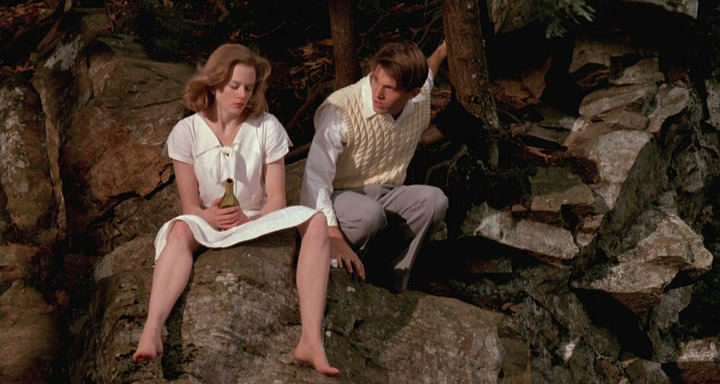 A picnic in the woods is a novelty for Billy Bathgate, a fifteen-year-old New York City boy who has never walked on anything but pavement. So, when Drew Preston, a worldly woman of twenty-one, says,” Let’s go for a picnic….” Billy is flummoxed. He...
A picnic in the woods is a novelty for Billy Bathgate, a fifteen-year-old New York City boy who has never walked on anything but pavement. So, when Drew Preston, a worldly woman of twenty-one, says,” Let’s go for a picnic….” Billy is flummoxed. He...
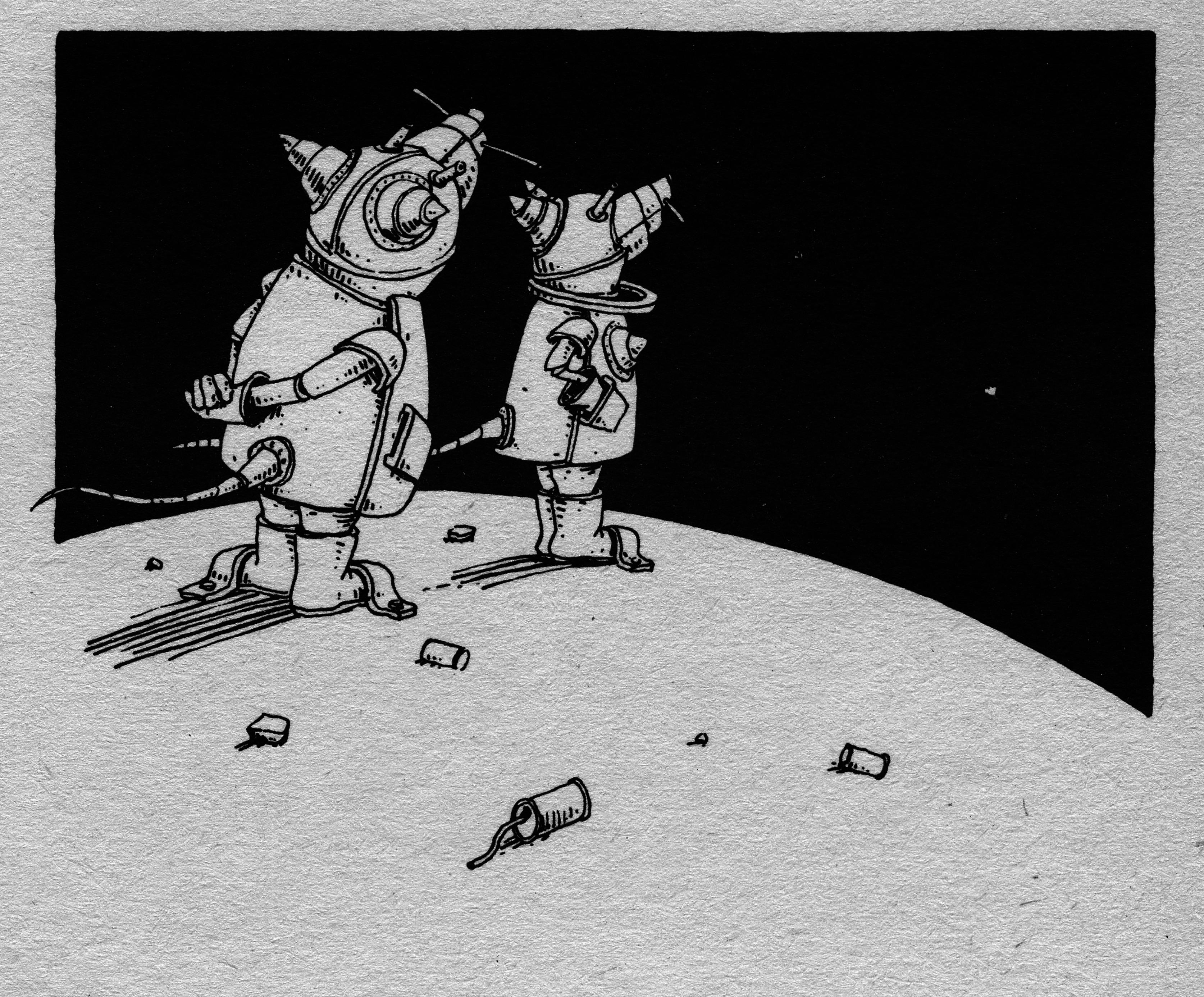 Morse’s Picnic on the Moon is a young people’s book with a serious message for world peace. It’s Morse’s notion that while Earthlings picnic on the Moon, they overlook its hidden inhabitants who live in peace surrounded by lunar tranquility....
Morse’s Picnic on the Moon is a young people’s book with a serious message for world peace. It’s Morse’s notion that while Earthlings picnic on the Moon, they overlook its hidden inhabitants who live in peace surrounded by lunar tranquility....
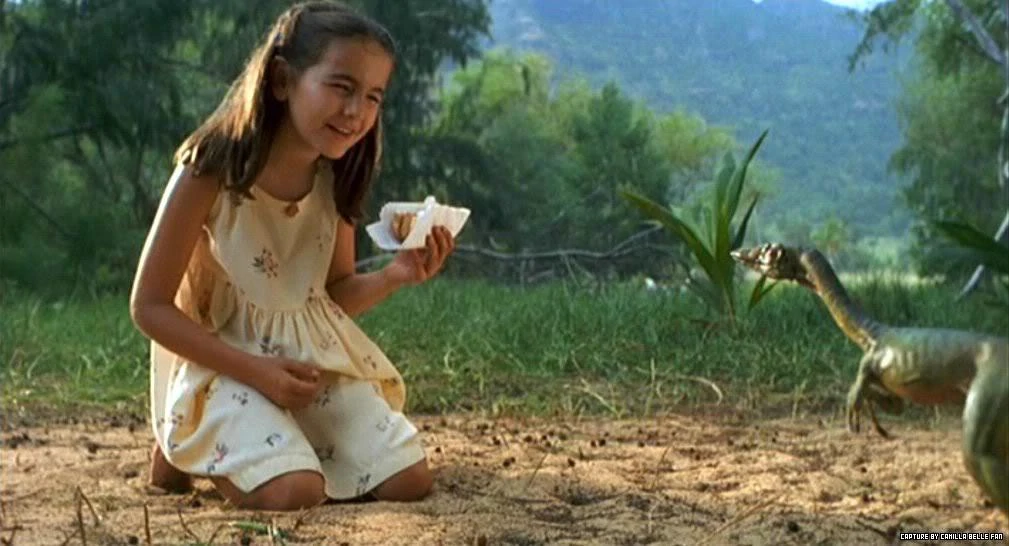 Isla Sorna is a dangerous place to picnic. Traveling by Range Rover over Costa Rica’s bumpy roads to a deserted beach, the Bowman family for adventure and picnicking on the beach. When they get there, they are alone. Ellen Bowman is afraid of snakes. Young Cathy...
Isla Sorna is a dangerous place to picnic. Traveling by Range Rover over Costa Rica’s bumpy roads to a deserted beach, the Bowman family for adventure and picnicking on the beach. When they get there, they are alone. Ellen Bowman is afraid of snakes. Young Cathy...
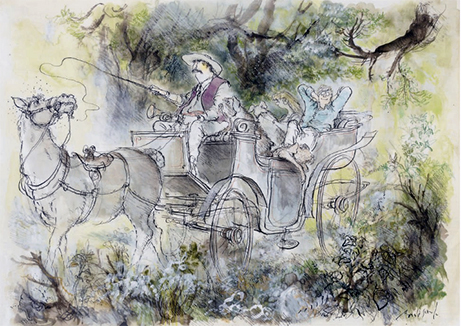 “Passing 50 Without Breaking the Speed Limit” is Peter Mayle’s paean to picnics. It’s a pun on the celebration of his fiftieth birthday pique-nique and not the speed limit on the twisty roads of Province in restored 19th-century caléches. Mayle...
“Passing 50 Without Breaking the Speed Limit” is Peter Mayle’s paean to picnics. It’s a pun on the celebration of his fiftieth birthday pique-nique and not the speed limit on the twisty roads of Province in restored 19th-century caléches. Mayle...
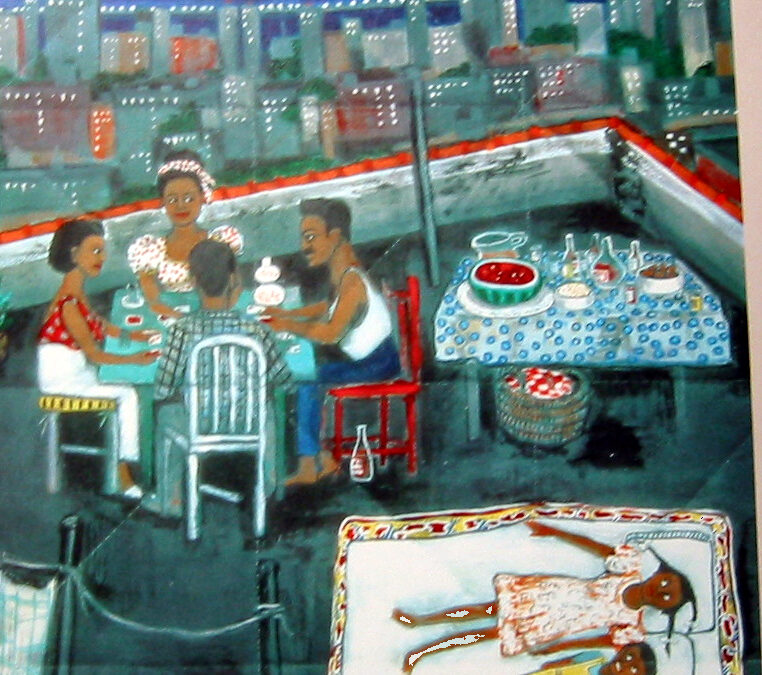 Ringgold’s tapestry Tar Beach (1988) and her children’s story Tar Beach (1991) portray a classic urban rooftop picnic. When Cassie Lightfoot flies over the rooftops of Harlem, the lights of the George Washington Bridge glow against the black sky like...
Ringgold’s tapestry Tar Beach (1988) and her children’s story Tar Beach (1991) portray a classic urban rooftop picnic. When Cassie Lightfoot flies over the rooftops of Harlem, the lights of the George Washington Bridge glow against the black sky like...
 Benton’s screenplay by Tom Stoppard angered E.L. Doctorow because they made too many revisions to his novel Billy Bathgate. They did, however, get Billy Bathgate’s picnic right. The picnic is a pivotal moment in Billy’s romantic education. It takes...
Benton’s screenplay by Tom Stoppard angered E.L. Doctorow because they made too many revisions to his novel Billy Bathgate. They did, however, get Billy Bathgate’s picnic right. The picnic is a pivotal moment in Billy’s romantic education. It takes...
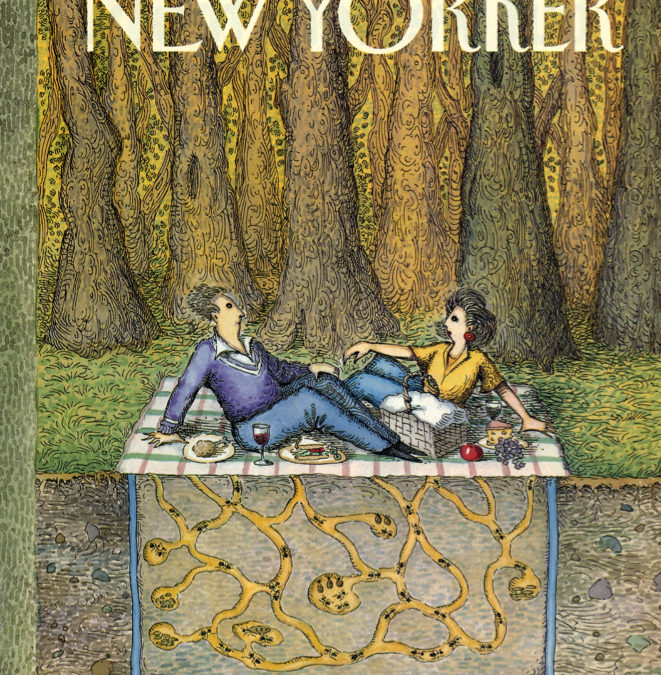 Despite the many jokes, it’s seldom the case, but many presume ants interrupt picnics. Deborah Gordon offers that ants rarely disrupt picnics; John O’Brien suggests maybe they do. In Ants at Work, Gordon plays down the picnic: “Indeed the observation that where there...
Despite the many jokes, it’s seldom the case, but many presume ants interrupt picnics. Deborah Gordon offers that ants rarely disrupt picnics; John O’Brien suggests maybe they do. In Ants at Work, Gordon plays down the picnic: “Indeed the observation that where there...
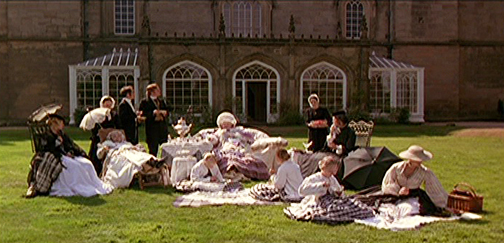 The Midsummer’s Day picnic is ruined when flying ants fall into the strawberries, cucumber sandwiches, and silver cream jugs. Everyone runs for cover. Belying the humor, the dying ants in e cream jugs and teacups, is Byatt’s metaphor contrasting the...
The Midsummer’s Day picnic is ruined when flying ants fall into the strawberries, cucumber sandwiches, and silver cream jugs. Everyone runs for cover. Belying the humor, the dying ants in e cream jugs and teacups, is Byatt’s metaphor contrasting the...
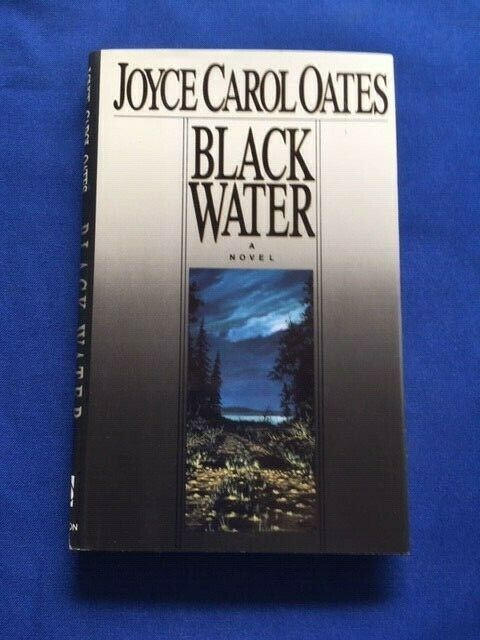 Oates’s Black Water tracks a Fourth of July picnic as it leads to the seduction of Elizabeth Anne Kelleher, a woman half age, by an unnamed Senator. “A photograph of the Senator and Kelly presents a formally posed group, but what cannot be seen is The Senator’s...
Oates’s Black Water tracks a Fourth of July picnic as it leads to the seduction of Elizabeth Anne Kelleher, a woman half age, by an unnamed Senator. “A photograph of the Senator and Kelly presents a formally posed group, but what cannot be seen is The Senator’s...
 Foster’s Howards End, Ivory’s picnic reveals Edwardian hypocrisy, the inferior status of women, predatory sexuality, and the illusion of male superiority. This pivotal episode occurs when Henry Wilcox is undone by his former mistress, Jacky Bast, at a...
Foster’s Howards End, Ivory’s picnic reveals Edwardian hypocrisy, the inferior status of women, predatory sexuality, and the illusion of male superiority. This pivotal episode occurs when Henry Wilcox is undone by his former mistress, Jacky Bast, at a...
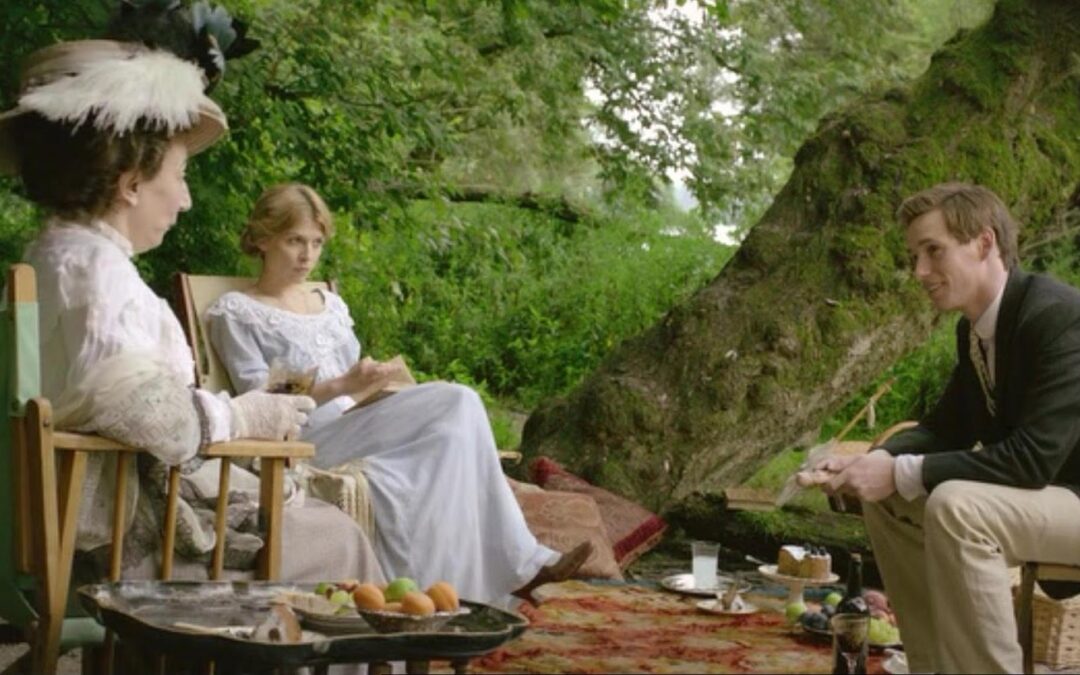 Martin’s picnic in Birdsong is situated in a forest clearing on the shore of a tranquil river. The group stops to picnic, ignoring the sign prohibiting boating and fishing that the picnickers have blithely ignored. Unless you miss its significance, the sign...
Martin’s picnic in Birdsong is situated in a forest clearing on the shore of a tranquil river. The group stops to picnic, ignoring the sign prohibiting boating and fishing that the picnickers have blithely ignored. Unless you miss its significance, the sign...
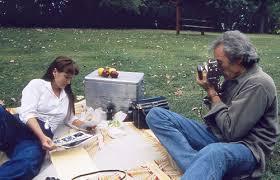 What’s to be done after a long night of love-making? Go on a picnic, of course. Eastwood’s picnic setup in Bridges of Madison County is stagy: a cloth on the grass, a cooler, oranges (never peeled), and apples (never eaten). Coca-Cola (never opened)....
What’s to be done after a long night of love-making? Go on a picnic, of course. Eastwood’s picnic setup in Bridges of Madison County is stagy: a cloth on the grass, a cooler, oranges (never peeled), and apples (never eaten). Coca-Cola (never opened)....
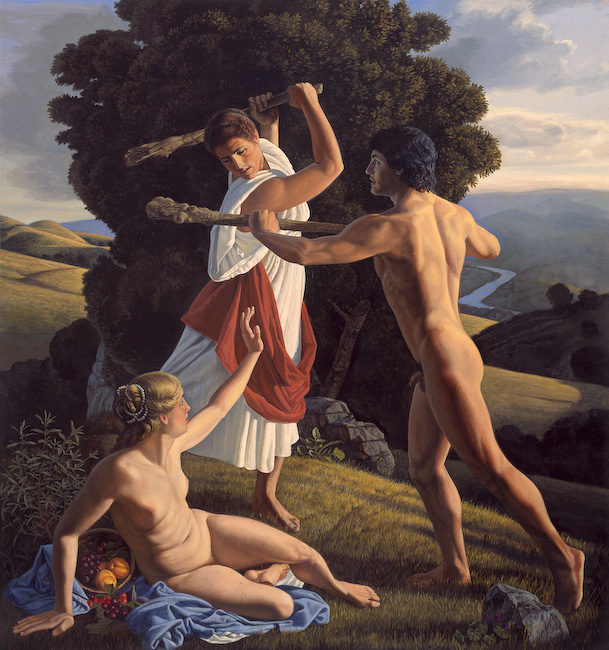 Hercules Protecting the Balance Between Pleasure and Virtue is Legare’s allusion to Albrecht Dürer’s Hercules at the Crossroads (1498c.). But what Dürer implies, Ligare makes emphatic. His essential change is the picnic. He shows no food; instead, Ligare places...
Hercules Protecting the Balance Between Pleasure and Virtue is Legare’s allusion to Albrecht Dürer’s Hercules at the Crossroads (1498c.). But what Dürer implies, Ligare makes emphatic. His essential change is the picnic. He shows no food; instead, Ligare places...
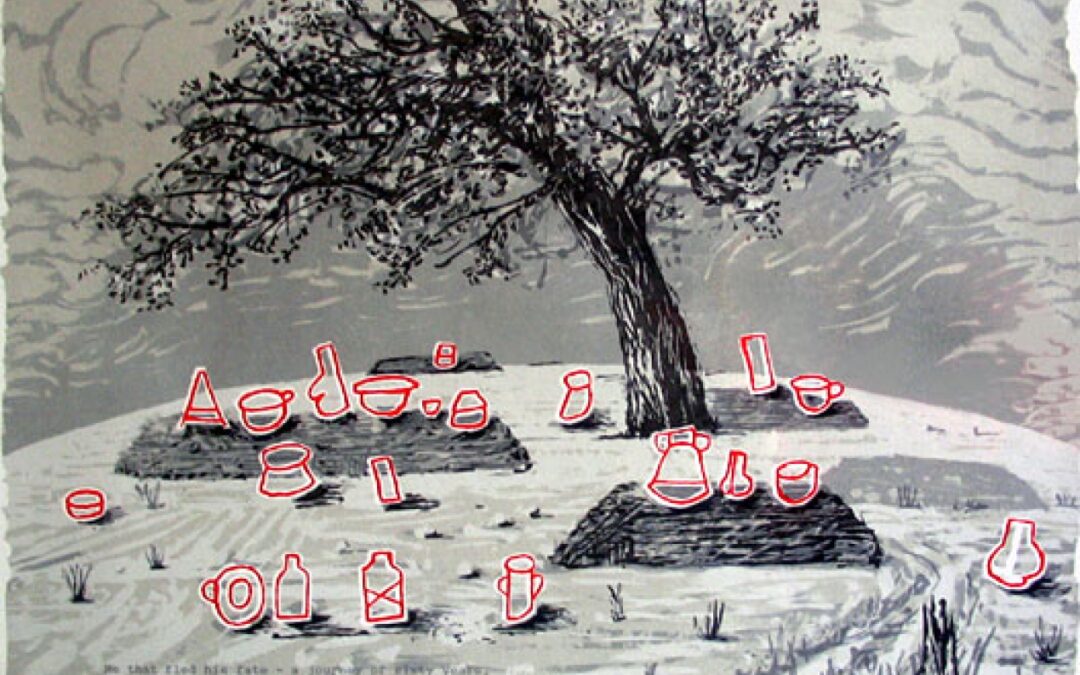 This picnic has some personal allusion. But what that is stumping me. Featured Image: William Kentridge. My Dear Friend (He That Fled His Fate). Screenprint (1994) See: entry for Kentridge’s Picnic Panic
This picnic has some personal allusion. But what that is stumping me. Featured Image: William Kentridge. My Dear Friend (He That Fled His Fate). Screenprint (1994) See: entry for Kentridge’s Picnic Panic
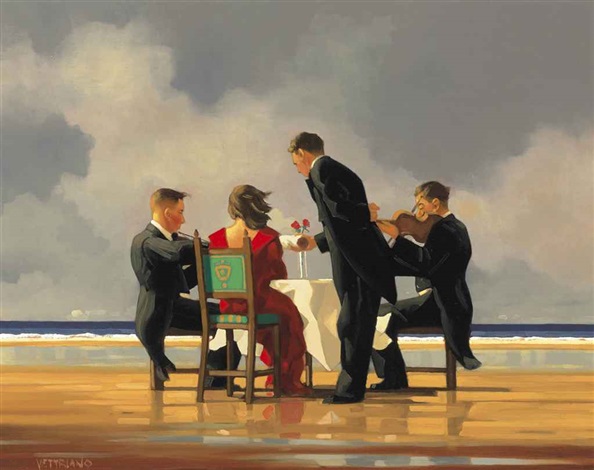 Vettriano’s Elegy for the Dead Admiral is a beach picnic on the sand at the surf’s edge. A woman in red sits with her back to the viewer facing the sea. She is serenaded by two violinists and served by a waiter. The situation alludes to the death of the...
Vettriano’s Elegy for the Dead Admiral is a beach picnic on the sand at the surf’s edge. A woman in red sits with her back to the viewer facing the sea. She is serenaded by two violinists and served by a waiter. The situation alludes to the death of the...
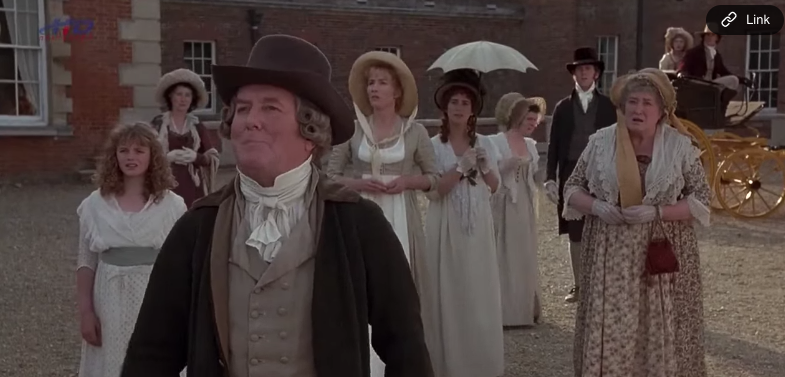 Austen knows how to ruin a picnic, as she does in Sense and Sensibility. Ang Lee and his screenwriter Emma Thompson get the disappointment right. But then invent an original picnic to make up for Austen’s to mitigate the Dashwood family’s letdown. Critics...
Austen knows how to ruin a picnic, as she does in Sense and Sensibility. Ang Lee and his screenwriter Emma Thompson get the disappointment right. But then invent an original picnic to make up for Austen’s to mitigate the Dashwood family’s letdown. Critics...
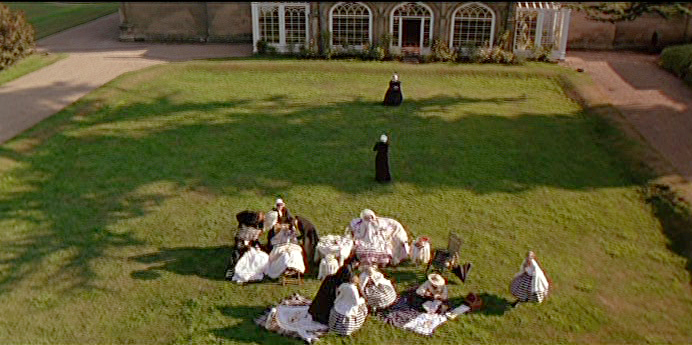 Wood ants ruin a picnic in Angels & Insects. It’s a comic episode adapted from A.S. Byatt’s novella, Morpho Eugenia, a novella about predatory deception among the English gentry. Taking advantage of Midsummer’s Day, the Alabaster family settles...
Wood ants ruin a picnic in Angels & Insects. It’s a comic episode adapted from A.S. Byatt’s novella, Morpho Eugenia, a novella about predatory deception among the English gentry. Taking advantage of Midsummer’s Day, the Alabaster family settles...
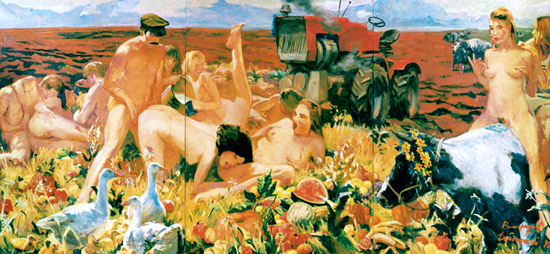 Harvest Celebration demonstrates a satirical view of Soviet rigidity and social realism and embraces sexuality and lascivious behavior for fun. The subject is a send-up of the farm collective as an agricultural paradise pictured in official Soviet art, such as Feodor...
Harvest Celebration demonstrates a satirical view of Soviet rigidity and social realism and embraces sexuality and lascivious behavior for fun. The subject is a send-up of the farm collective as an agricultural paradise pictured in official Soviet art, such as Feodor...
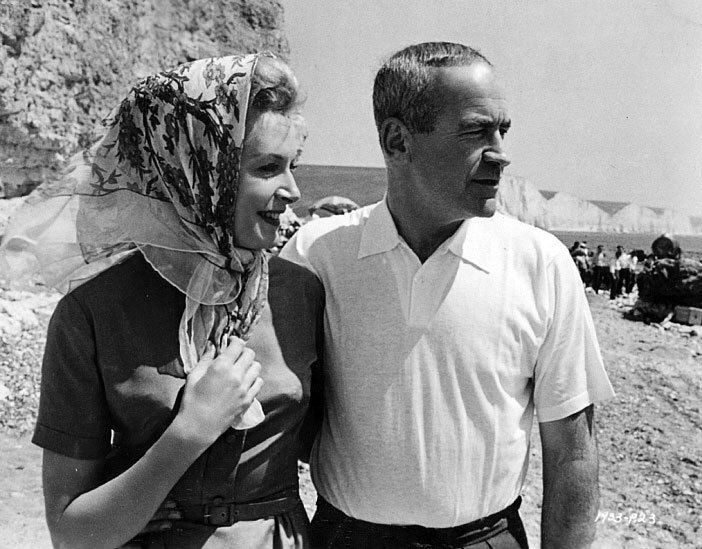 Vertiel’s picnic is a lovers’ tryst in a finca above Marbella, a town on the Costa Brava. Robert Masters and Carmen Fernandez, a flamenco dancer, are having a farewell picnic because she is leaving for Madrid to dance with an important company. She packs a...
Vertiel’s picnic is a lovers’ tryst in a finca above Marbella, a town on the Costa Brava. Robert Masters and Carmen Fernandez, a flamenco dancer, are having a farewell picnic because she is leaving for Madrid to dance with an important company. She packs a...
 In a pasture at 16,000 feet high, surrounded by the Himalayan peaks, Bank’s stopped for a picnic on the road to Lhasa. The campsite is chosen not by hunger but by availability. It was level enough for a camp. Their motorcar is unpacked, a fire lighted, and tea...
In a pasture at 16,000 feet high, surrounded by the Himalayan peaks, Bank’s stopped for a picnic on the road to Lhasa. The campsite is chosen not by hunger but by availability. It was level enough for a camp. Their motorcar is unpacked, a fire lighted, and tea...
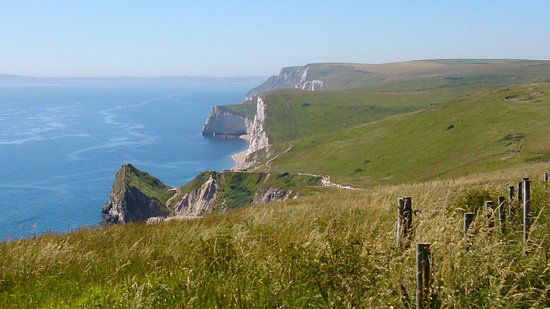 Adam Dalgliesh takes a break during the murder investigation for a picnic. He needs the time to think, and so he picnics. Dalgliesh is utterly content, a moment of unusual peace in an otherwise hectic life. An hour south of Salisbury near Lulworth Cove, he stops....
Adam Dalgliesh takes a break during the murder investigation for a picnic. He needs the time to think, and so he picnics. Dalgliesh is utterly content, a moment of unusual peace in an otherwise hectic life. An hour south of Salisbury near Lulworth Cove, he stops....
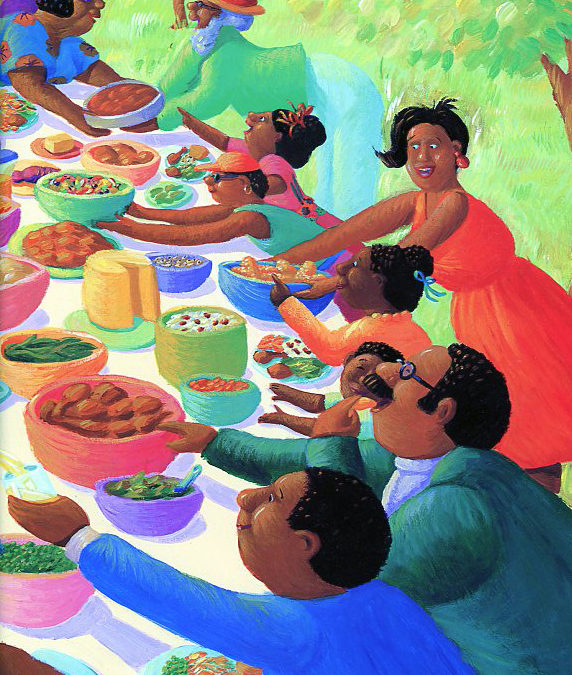 Woodson’s We Had a Picnic This Sunday Past (1997) is a joyous family gathering with mounds to eat. It’s a story about an African American family reunion picnic in an urban park. The narrator, a young girl, comes with her Grandma, who has worked frying...
Woodson’s We Had a Picnic This Sunday Past (1997) is a joyous family gathering with mounds to eat. It’s a story about an African American family reunion picnic in an urban park. The narrator, a young girl, comes with her Grandma, who has worked frying...
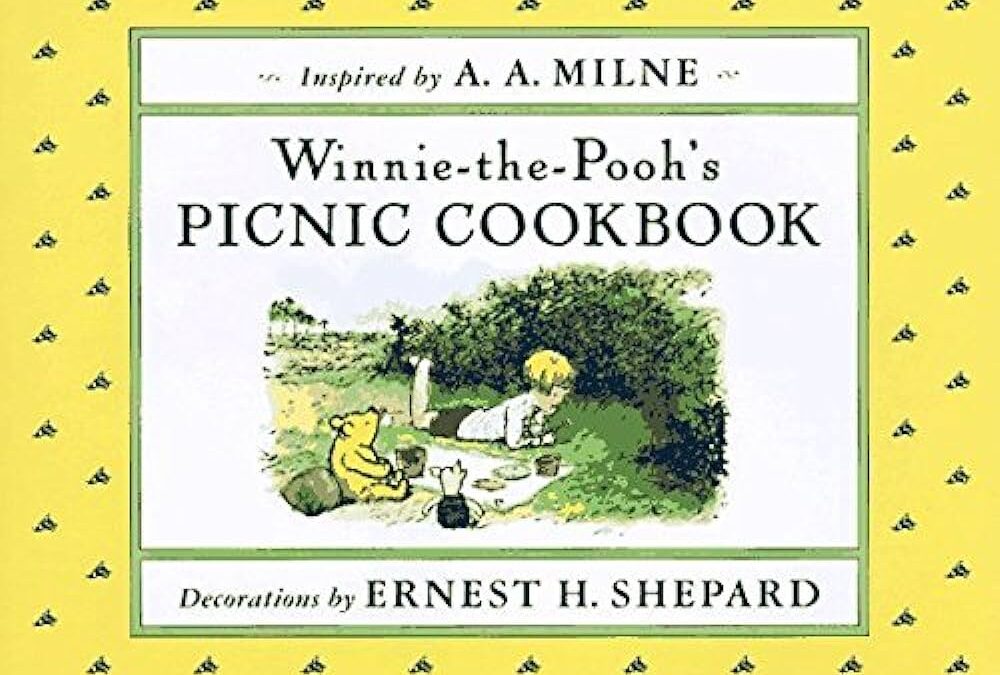 Winnie-the-Pooh’s Picnic Cookbook, Inspired by A. A. Milne, purports to be for is a tongue-in-cheek adult cookbook masquerading in kid’s clothing. Picnics are loosely linked to Milne’s Pooh stories, and the picnics suggested are the likes of:...
Winnie-the-Pooh’s Picnic Cookbook, Inspired by A. A. Milne, purports to be for is a tongue-in-cheek adult cookbook masquerading in kid’s clothing. Picnics are loosely linked to Milne’s Pooh stories, and the picnics suggested are the likes of:...
 Spielberg’s Jaws begins with an evening beach party on the beach. The suspense is thrilling, and the result for Chrissie is tragic: eaten by a great white shark! A picnic party on the beach also begins Jurassic Park: The Lost World, but this time, it’s suspenseful but...
Spielberg’s Jaws begins with an evening beach party on the beach. The suspense is thrilling, and the result for Chrissie is tragic: eaten by a great white shark! A picnic party on the beach also begins Jurassic Park: The Lost World, but this time, it’s suspenseful but...
 Following Beeson generally follows Lee’s Cider with Rosie and gives us Slad’s church choir’s annual picnic, a daylong outing to Weston-super-Mare on the Bristol Channel. Lee narrates this film, and since his memoir is largely fiction, whatever Beeson...
Following Beeson generally follows Lee’s Cider with Rosie and gives us Slad’s church choir’s annual picnic, a daylong outing to Weston-super-Mare on the Bristol Channel. Lee narrates this film, and since his memoir is largely fiction, whatever Beeson...
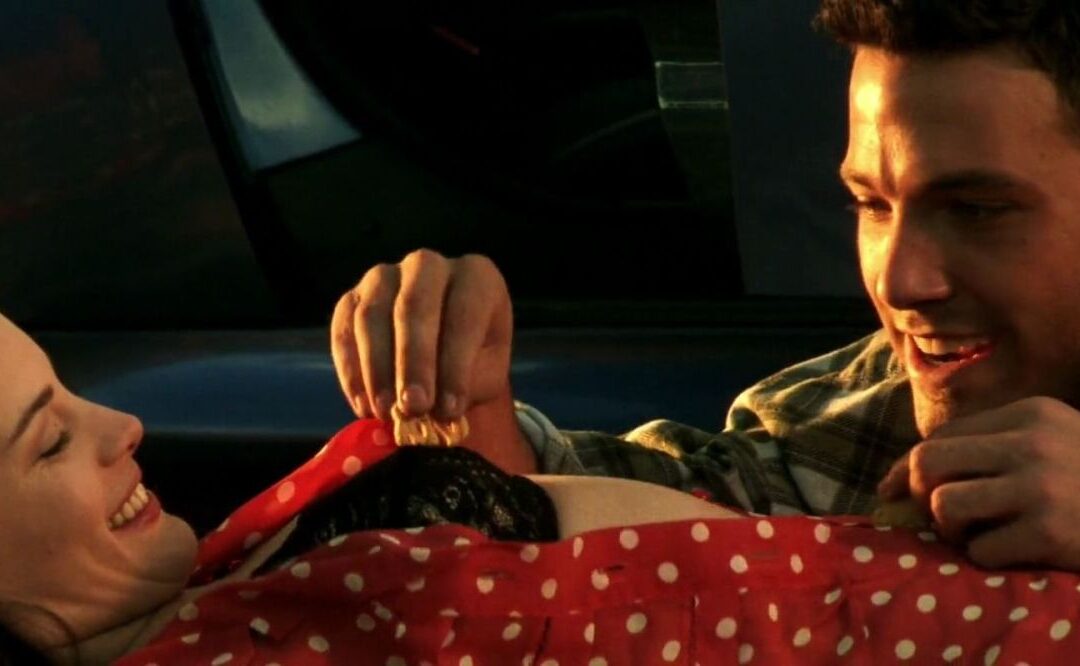 All hell might break loose. Earth may be obliterated, but A. J. Frost and his sweetheart Grace Stamper ignore their food preferring sex foreplay instead. “Do you think,” asks Grace, “that anyone else in the world is doing this very same thing at the same moment?”...
All hell might break loose. Earth may be obliterated, but A. J. Frost and his sweetheart Grace Stamper ignore their food preferring sex foreplay instead. “Do you think,” asks Grace, “that anyone else in the world is doing this very same thing at the same moment?”...
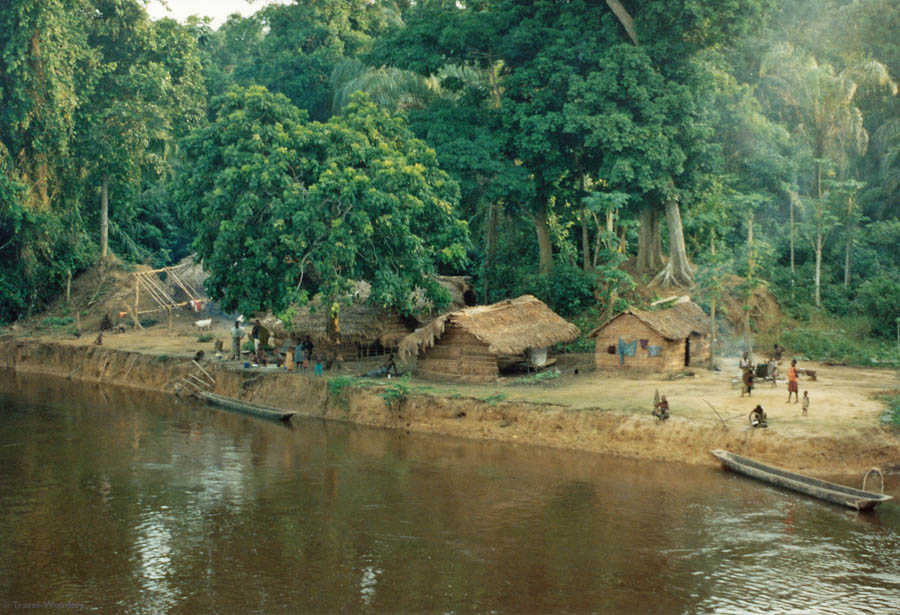 Among ruined picnics, Kingsolver’s Congo picnic ranks high. It’s a highlight of misadventure in The Poisonwood Wood Bible, a novel the name of which is derived from a misunderstanding of the local language. Reverend Nathan Price says, “Tata Jesus is...
Among ruined picnics, Kingsolver’s Congo picnic ranks high. It’s a highlight of misadventure in The Poisonwood Wood Bible, a novel the name of which is derived from a misunderstanding of the local language. Reverend Nathan Price says, “Tata Jesus is...
 Vargas Llosa imagines Lima as a city of extremes. It’s beautiful if you “concentrate on the landscape and the birds, but it’s “ugly if you notice the piles of garbage festering as it “piles up on the outer edge of the Malecón and spills...
Vargas Llosa imagines Lima as a city of extremes. It’s beautiful if you “concentrate on the landscape and the birds, but it’s “ugly if you notice the piles of garbage festering as it “piles up on the outer edge of the Malecón and spills...
 McEwan’s menu for Joe Rose and Clarissa Mellon’s picnic is black olives, mixed salad, mozzarella, focaccia, and white wine, specifically Daumas Gassac, perhaps the author’s favorite. Roger Michel’s adaption Enduring Love (2004) substitutes...
McEwan’s menu for Joe Rose and Clarissa Mellon’s picnic is black olives, mixed salad, mozzarella, focaccia, and white wine, specifically Daumas Gassac, perhaps the author’s favorite. Roger Michel’s adaption Enduring Love (2004) substitutes...
 Ian McEwan’s <em>Enduring Love</em> (1998) McEwan’s menu for Joe Rose and Clarissa Mellon’s picnic is black olives, mixed salad, mozzarella, focaccia, and white wine, specifically Daumas Gassac, perhaps the author’s favorite. Roger...
Ian McEwan’s <em>Enduring Love</em> (1998) McEwan’s menu for Joe Rose and Clarissa Mellon’s picnic is black olives, mixed salad, mozzarella, focaccia, and white wine, specifically Daumas Gassac, perhaps the author’s favorite. Roger...
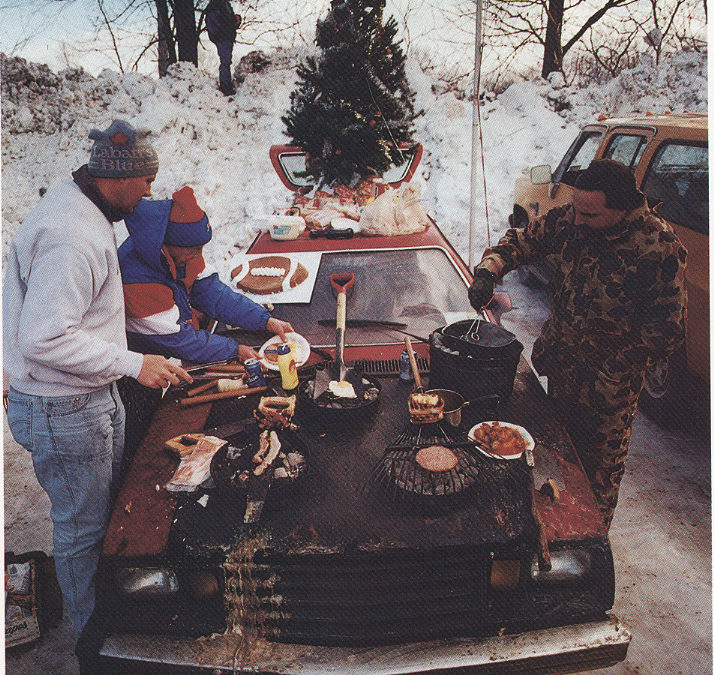 Russell Kaye’s Tailgating on Ken Johnson’s Nissan is a picnic on wheels that gives new meaning to the expression of lighting a fire under the hood. For this “grillz- on-the-hood,” the menu is bacon and eggs fried on a saw blade; burgers cooked...
Russell Kaye’s Tailgating on Ken Johnson’s Nissan is a picnic on wheels that gives new meaning to the expression of lighting a fire under the hood. For this “grillz- on-the-hood,” the menu is bacon and eggs fried on a saw blade; burgers cooked...
 Dickens devotes the better part of the chapter “Blissful” to his text so that he shows how Copperfield is obsessed. “She was too bewildering,” David later explains, “To see her lay the flowers against her little dimpled chin, was to lose all presence of mind and power...
Dickens devotes the better part of the chapter “Blissful” to his text so that he shows how Copperfield is obsessed. “She was too bewildering,” David later explains, “To see her lay the flowers against her little dimpled chin, was to lose all presence of mind and power...
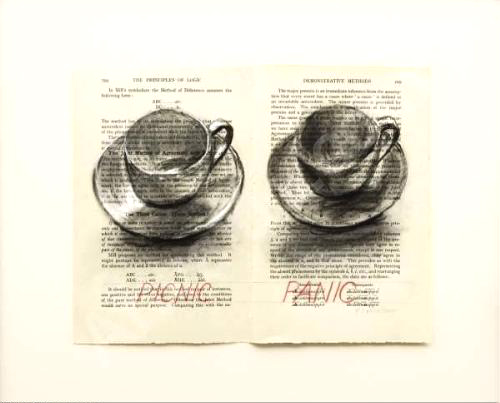 Kentridge likes copies of images, each a variation on reality fluctuations. Sometimes he makes triptychs, other times diptychs as in the Picnic/Panic etchings produced for Sleeping on Glass (1999). For the diptych Picnic/Panic, Kentridge contrasted cups and saucers on...
Kentridge likes copies of images, each a variation on reality fluctuations. Sometimes he makes triptychs, other times diptychs as in the Picnic/Panic etchings produced for Sleeping on Glass (1999). For the diptych Picnic/Panic, Kentridge contrasted cups and saucers on...
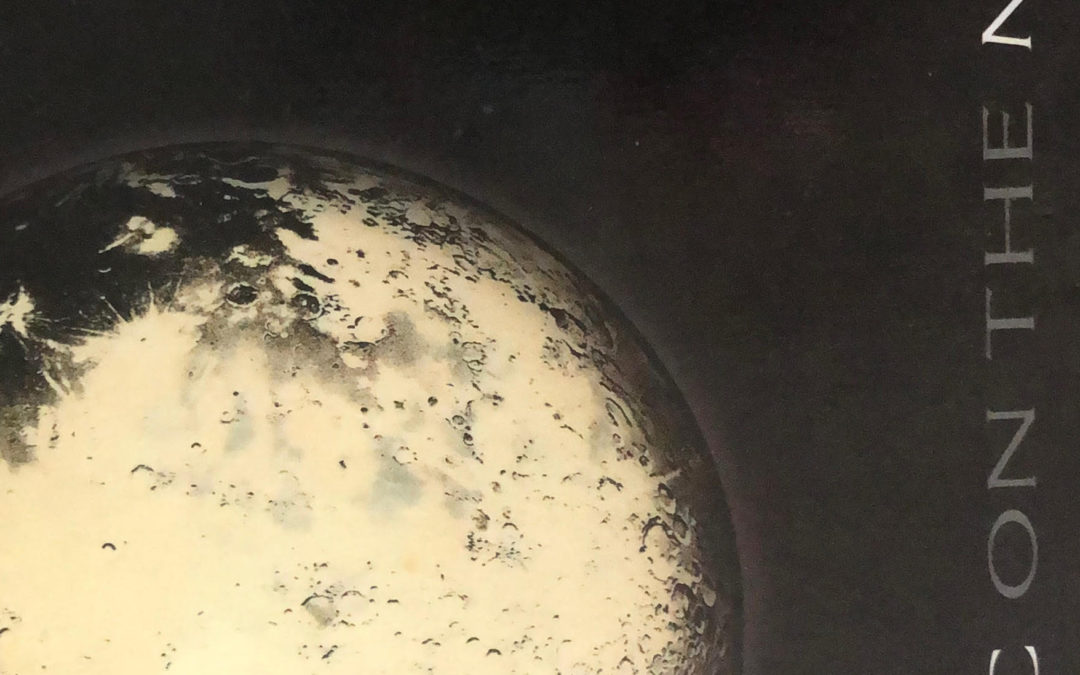 Charles Coe’s poem “Picnic on the Moon,” Picnic on the Moon (1999), is not sci-fi. It’s a critique of human violence and enmity on Earth set against the Moon’s tranquility and quiet. The Moon sounds like the perfect picnic spot- a great place to bask...
Charles Coe’s poem “Picnic on the Moon,” Picnic on the Moon (1999), is not sci-fi. It’s a critique of human violence and enmity on Earth set against the Moon’s tranquility and quiet. The Moon sounds like the perfect picnic spot- a great place to bask...
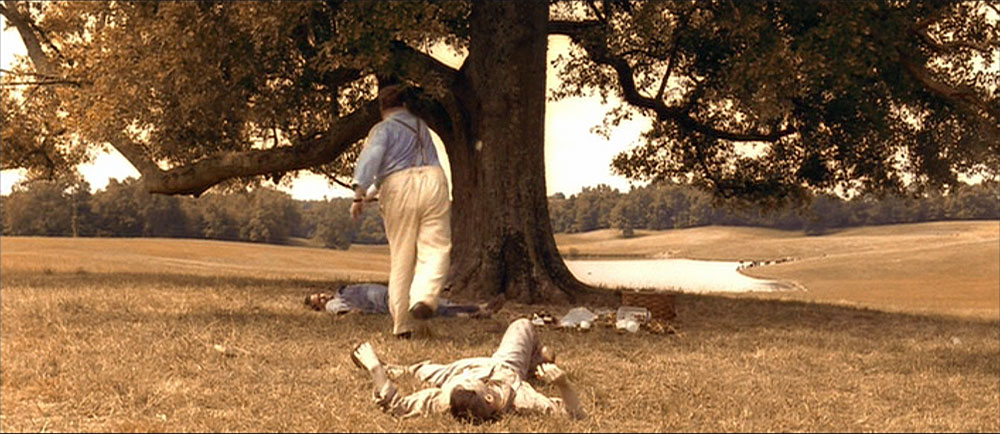 In The Odyssey, the one-eyed giant Polyphemus is a cannibal who lives in a cave, but in Ethan Coen and Joel Coen’s O Brother, Where Art Thou?, he’s at a picnic eating chicken, pickles, and drinking beer. The Coens claimed they did not read The Odyssey, but...
In The Odyssey, the one-eyed giant Polyphemus is a cannibal who lives in a cave, but in Ethan Coen and Joel Coen’s O Brother, Where Art Thou?, he’s at a picnic eating chicken, pickles, and drinking beer. The Coens claimed they did not read The Odyssey, but...
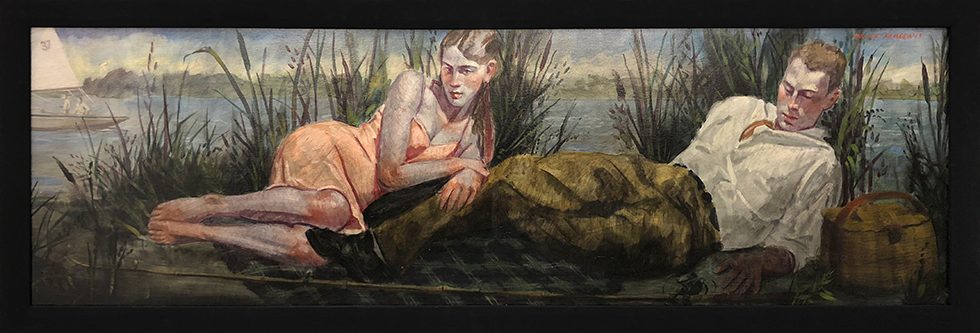 Bruce Sargeant is a persona of Mark Beard. The picnic is a pleasantly simple: he is asleep, and she is awake, staring into space. A picnic basket sits idly in the far corner. Boy and Girl is large, 26.5 x 87 inches.
Bruce Sargeant is a persona of Mark Beard. The picnic is a pleasantly simple: he is asleep, and she is awake, staring into space. A picnic basket sits idly in the far corner. Boy and Girl is large, 26.5 x 87 inches.
 Laura Cunningham’s memoir A Place in the Country (2000) is suffused with romantic memories of a New York City park where she picnicked with her mother Rosie and eating lunch packed in a paper bag. The sandwiches were made with Wonder Bread, soft bread with no...
Laura Cunningham’s memoir A Place in the Country (2000) is suffused with romantic memories of a New York City park where she picnicked with her mother Rosie and eating lunch packed in a paper bag. The sandwiches were made with Wonder Bread, soft bread with no...
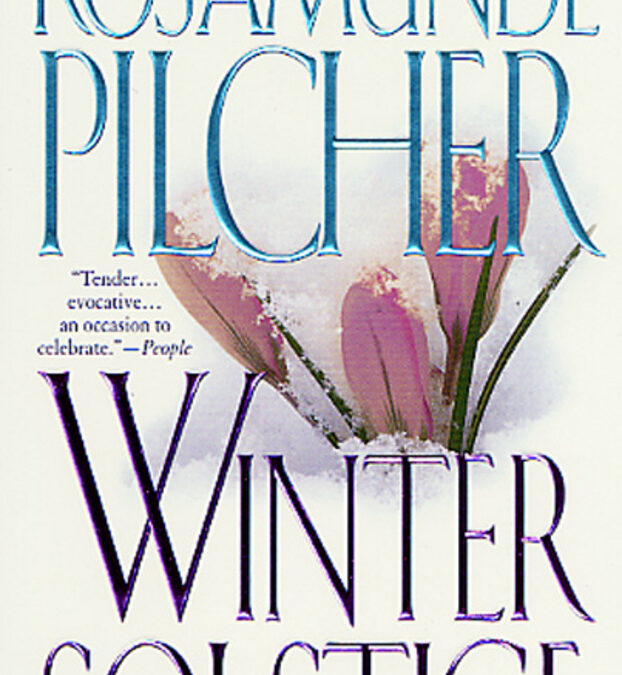 After much tribulation, Elfirida Phipps Oscar Blundell and friends gathered at a Christmas Eve picnic for the start of a happy future. The timing purposefully combines the celebration of the birth of Jesus Christ and the winter solstice that is the beginning of the...
After much tribulation, Elfirida Phipps Oscar Blundell and friends gathered at a Christmas Eve picnic for the start of a happy future. The timing purposefully combines the celebration of the birth of Jesus Christ and the winter solstice that is the beginning of the...
 Pantell’s painting Backyards is an urban scene behind the street façade. He finds a family sitting at a picnic table among the things he sees. The trees are bare in either early spring or late fall. But the hearty picnickers are taking in the city air in their meager...
Pantell’s painting Backyards is an urban scene behind the street façade. He finds a family sitting at a picnic table among the things he sees. The trees are bare in either early spring or late fall. But the hearty picnickers are taking in the city air in their meager...
 Marsh’s Dead Babies, Mood Swingers in the U.S., is a satire of a picnic disaster. If this satire is meant to be crude, it succeeds admirably. If satire aims to amuse, Dead Babies fails miserably. Ditto Martin Amis’s novel on which the film is based. The...
Marsh’s Dead Babies, Mood Swingers in the U.S., is a satire of a picnic disaster. If this satire is meant to be crude, it succeeds admirably. If satire aims to amuse, Dead Babies fails miserably. Ditto Martin Amis’s novel on which the film is based. The...
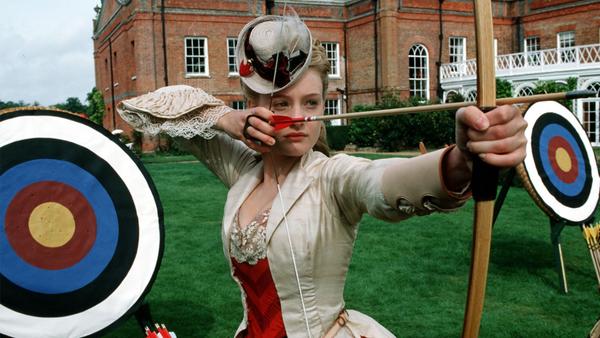 Harper’s archery picnic is faithful (more or less) to George Elliot’s Daniel Deronda. It’s a picnic archery meeting for women only. Elliot uses the sport as a metaphor for gender relationships. Archery is a variation of the goddess Diana hunting, except here, the...
Harper’s archery picnic is faithful (more or less) to George Elliot’s Daniel Deronda. It’s a picnic archery meeting for women only. Elliot uses the sport as a metaphor for gender relationships. Archery is a variation of the goddess Diana hunting, except here, the...
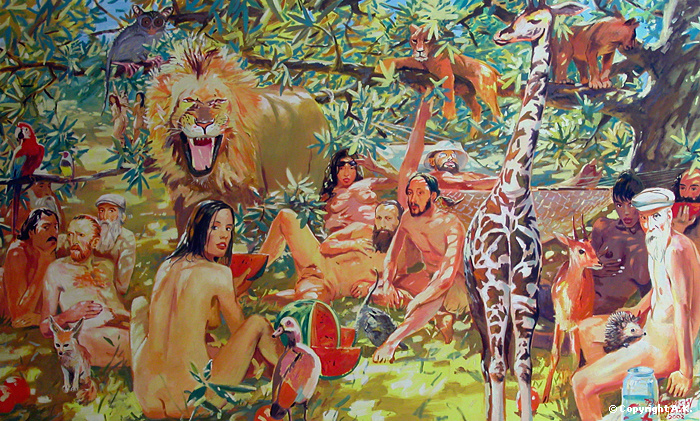 When the USSR dissolved in 1991, the hold on “official” artistic imagination produced many satires. Among them, Dubosarsky and Vinogradov’s Luncheon on the Grass reverses rigidity and social realism and embraces sexuality and lascivious behavior for the fun of it....
When the USSR dissolved in 1991, the hold on “official” artistic imagination produced many satires. Among them, Dubosarsky and Vinogradov’s Luncheon on the Grass reverses rigidity and social realism and embraces sexuality and lascivious behavior for the fun of it....
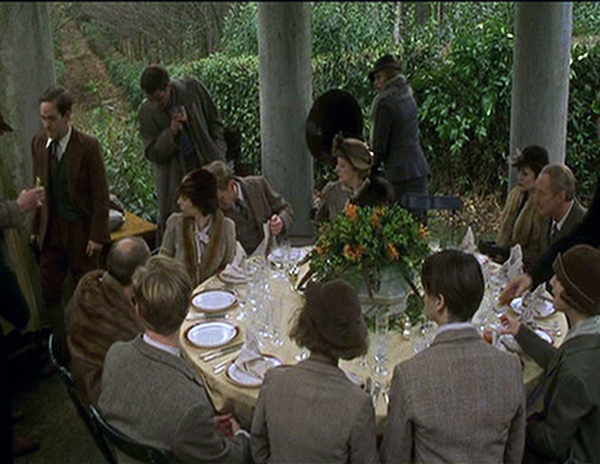 Altman’s fall shooting party and lunch in Gosford Park is a metaphor for social rot in English aristocracy and their servants circa 1932. The pheasant hunt takes place on a cold rainy day in October at which the lord of the manner, Sir William McCordle, brutally...
Altman’s fall shooting party and lunch in Gosford Park is a metaphor for social rot in English aristocracy and their servants circa 1932. The pheasant hunt takes place on a cold rainy day in October at which the lord of the manner, Sir William McCordle, brutally...
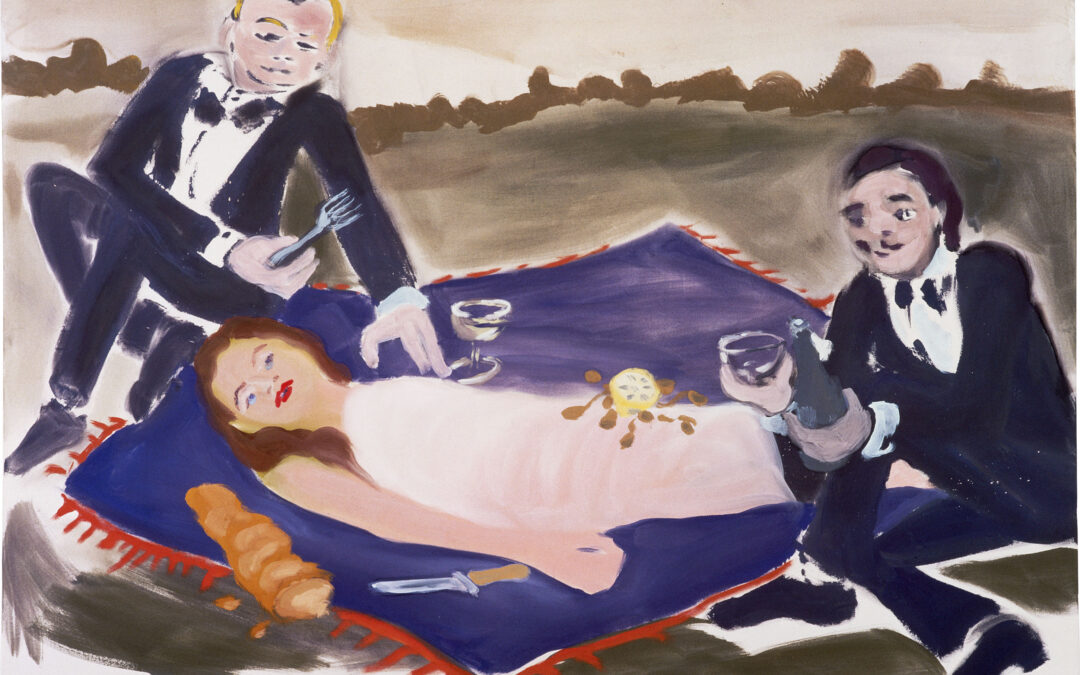 Von Hellermann’s When he came. . . is a feminist complaint about male attitudes and a woman’s compliance? The concept is an allusion to Méret Oppenheim’s Le Festin (1959), a Surrealist banquet set on a nude woman’s body. Oppenheim originally...
Von Hellermann’s When he came. . . is a feminist complaint about male attitudes and a woman’s compliance? The concept is an allusion to Méret Oppenheim’s Le Festin (1959), a Surrealist banquet set on a nude woman’s body. Oppenheim originally...
 It’s unknown if Nobel Prize-winning mathematician John Nash ever picnicked. His biographer Sylvia Nasar doesn’t mention any. Undeterred by the lack of biographical information, Ron Howard and screenwriter Akiva Goldman invented a picnic to add narrative...
It’s unknown if Nobel Prize-winning mathematician John Nash ever picnicked. His biographer Sylvia Nasar doesn’t mention any. Undeterred by the lack of biographical information, Ron Howard and screenwriter Akiva Goldman invented a picnic to add narrative...
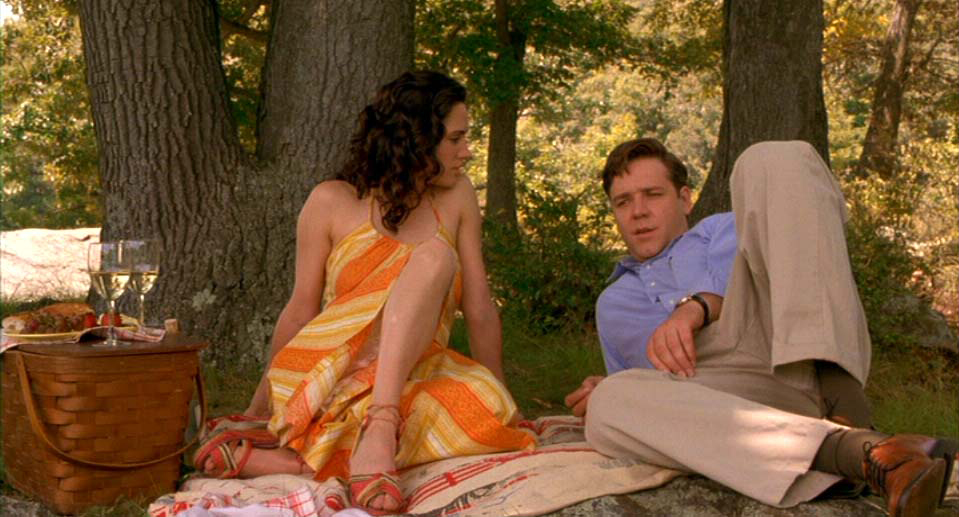 It’s unknown if Nobel Prize-winning mathematician John Nash ever picnicked. His biographer Sylvia Nasar doesn’t mention any. Undeterred by the lack of biographical information, Ron Howard and screenwriter Akiva Goldman invented a picnic to add narrative...
It’s unknown if Nobel Prize-winning mathematician John Nash ever picnicked. His biographer Sylvia Nasar doesn’t mention any. Undeterred by the lack of biographical information, Ron Howard and screenwriter Akiva Goldman invented a picnic to add narrative...
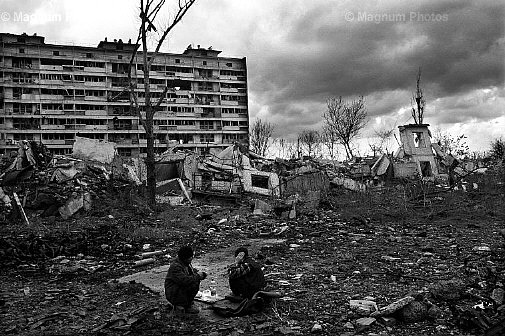 Dworzak’s picnic in Grozny, Chechnya, is disconcerting. Chechen men having a picnic in a bombed-out neighborhood near Minutka Square. See Thomas Dworzak’s Ruins of Chechnya (2002). Magnum Photos. Compare this George Allen Warner’s picnic in The Rubbish Dump (1955)...
Dworzak’s picnic in Grozny, Chechnya, is disconcerting. Chechen men having a picnic in a bombed-out neighborhood near Minutka Square. See Thomas Dworzak’s Ruins of Chechnya (2002). Magnum Photos. Compare this George Allen Warner’s picnic in The Rubbish Dump (1955)...
 Some aficionados of Ulysses remember the picnic at which Molly, then Marian Tweedy, seduced Leopold Bloom at a picnic at Howth Head around 1888. The lovers traveled to the outskirts of Dublin, where they made love among the wild rhododendrons and ferns. It is a...
Some aficionados of Ulysses remember the picnic at which Molly, then Marian Tweedy, seduced Leopold Bloom at a picnic at Howth Head around 1888. The lovers traveled to the outskirts of Dublin, where they made love among the wild rhododendrons and ferns. It is a...
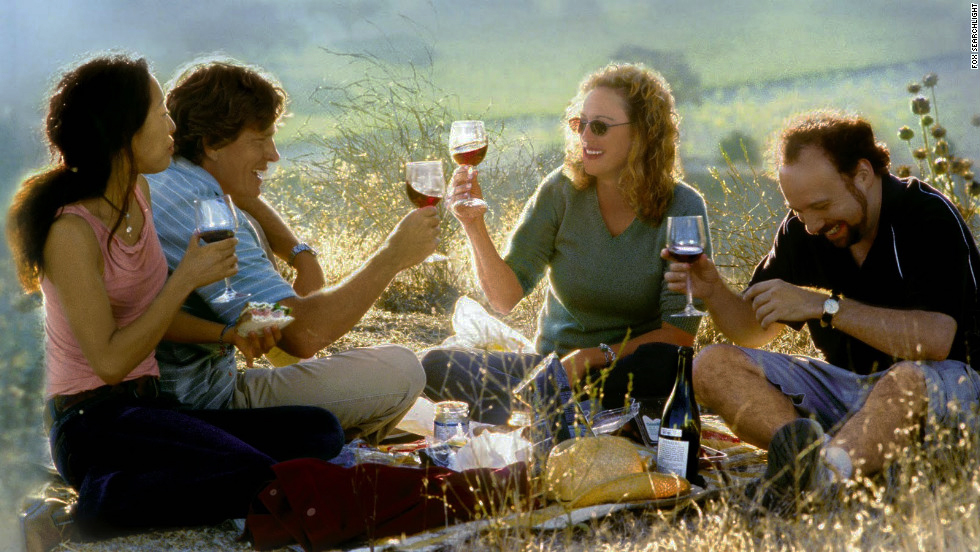 Payne’s film Sideways has three picnic episodes, none of which are in Rex Pickett’s novel Sideways. The picnic first is Miles Raymond’s memory of a vineyard, wine, and food. He recalls that he and his ex-wife used to like this view. “Once,...
Payne’s film Sideways has three picnic episodes, none of which are in Rex Pickett’s novel Sideways. The picnic first is Miles Raymond’s memory of a vineyard, wine, and food. He recalls that he and his ex-wife used to like this view. “Once,...
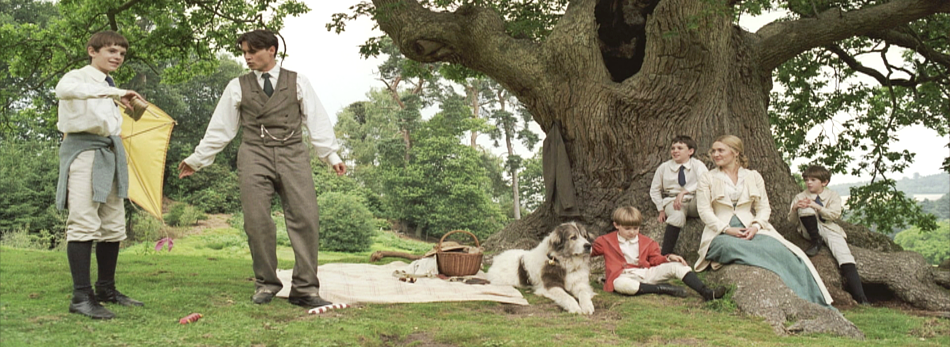 Whether or not Barry and the Llewellyn Davis family picnicked in Kensington Park (or any park) is moot. Assuming they did, Forster’s Finding Neverland, with a screenplay by David Magee, fictionalizes three picnics that mark significant moments in Barrie’s...
Whether or not Barry and the Llewellyn Davis family picnicked in Kensington Park (or any park) is moot. Assuming they did, Forster’s Finding Neverland, with a screenplay by David Magee, fictionalizes three picnics that mark significant moments in Barrie’s...
 Sideways is a slice of life in Miles Raymond’s midlife crisis. Rex Pickett’s novel and Payne’s film fail to distinguish whether Miles is a sad sack or a creep. Though there aren’t any picnics in Rex Pickett’s novel, Payne invented three...
Sideways is a slice of life in Miles Raymond’s midlife crisis. Rex Pickett’s novel and Payne’s film fail to distinguish whether Miles is a sad sack or a creep. Though there aren’t any picnics in Rex Pickett’s novel, Payne invented three...
 Locke’s story “Ladies in Lavender” does not have a picnic. Dance thought better and wrote a beach picnic on the coast of Cornwall into his screenplay. The story is simple. Ursula and Janet, spinster sisters, well on in years, live in a cottage by the sea near the...
Locke’s story “Ladies in Lavender” does not have a picnic. Dance thought better and wrote a beach picnic on the coast of Cornwall into his screenplay. The story is simple. Ursula and Janet, spinster sisters, well on in years, live in a cottage by the sea near the...
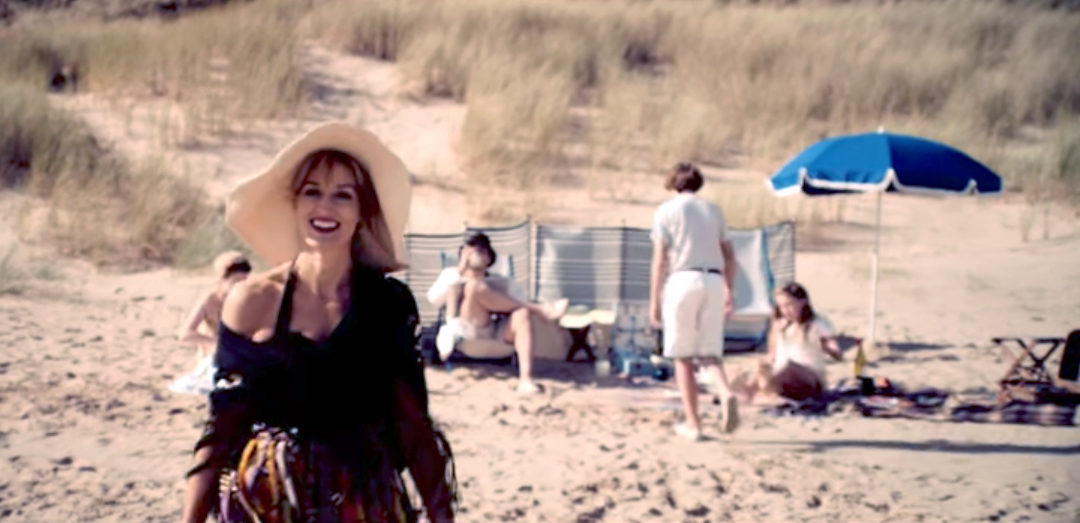 Banville’s The Sea is about a man’s untrustworthy memories—less about his dying wife and more about his sexual awakening when he was about eleven years old. Looking back, Max Morden realizes that his observations of the Grace family’s beach picnics...
Banville’s The Sea is about a man’s untrustworthy memories—less about his dying wife and more about his sexual awakening when he was about eleven years old. Looking back, Max Morden realizes that his observations of the Grace family’s beach picnics...
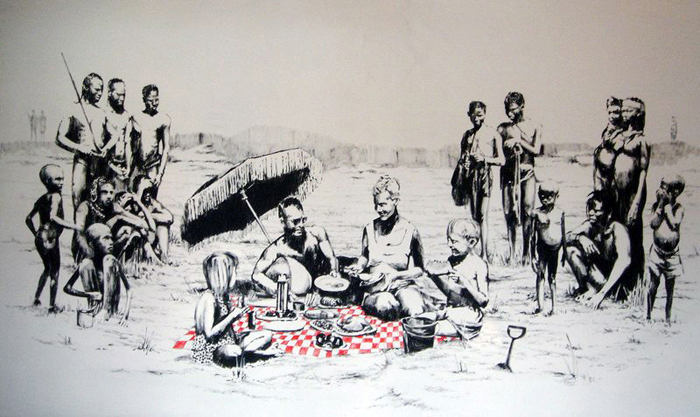 Banksy’s satirical Picnic contrasts a group of indigenous African hunter-gatherers bewildered by the Picnic of a White middle-class urban family picnicking on the beach. The contrast between civilizations and technologies suggests irreconcilable differences...
Siskiyou Mountain Tea Party suggests a primordial picnic of three naked women, each holding an infant, picnicking on a mountain ledge. Kurland seems to suggest picnics are a timeless moment of leisure. Featured Image: Justine Kurland’s Siskiyou Mountain Tea...
Banksy’s satirical Picnic contrasts a group of indigenous African hunter-gatherers bewildered by the Picnic of a White middle-class urban family picnicking on the beach. The contrast between civilizations and technologies suggests irreconcilable differences...
Siskiyou Mountain Tea Party suggests a primordial picnic of three naked women, each holding an infant, picnicking on a mountain ledge. Kurland seems to suggest picnics are a timeless moment of leisure. Featured Image: Justine Kurland’s Siskiyou Mountain Tea...
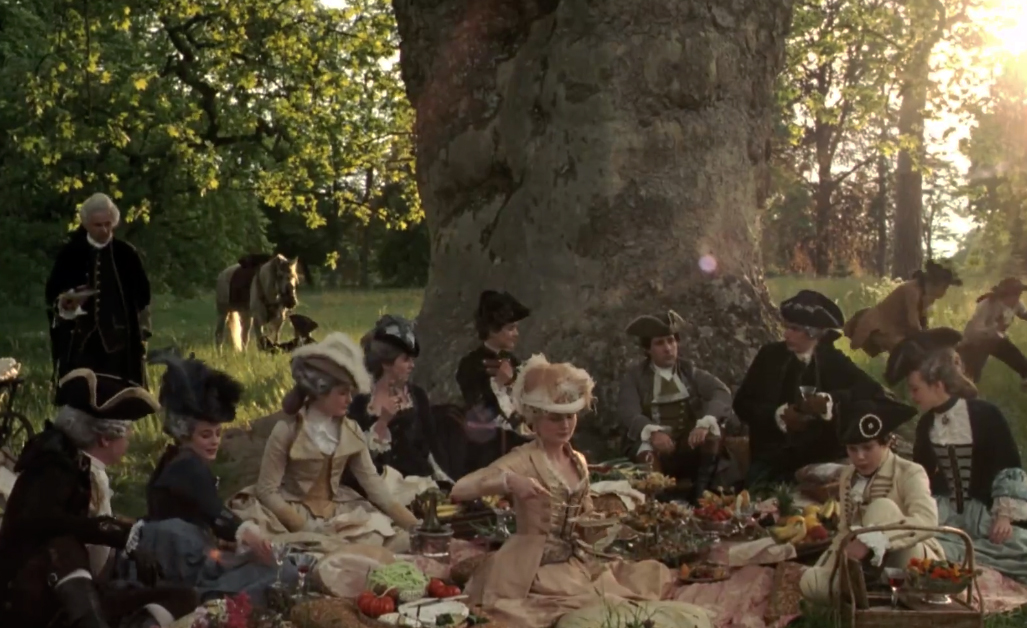 Coppola’s picnic in Marie Antoinette is a halt on the hunt. Usually, these meetings are informal, as recommended by Brillat Savarin in The Psychology of Taste. They are inspired by paintings of Jean-Antoine Watteau, Nicolas Lancret, Charles Van Loo, and others....
Coppola’s picnic in Marie Antoinette is a halt on the hunt. Usually, these meetings are informal, as recommended by Brillat Savarin in The Psychology of Taste. They are inspired by paintings of Jean-Antoine Watteau, Nicolas Lancret, Charles Van Loo, and others....
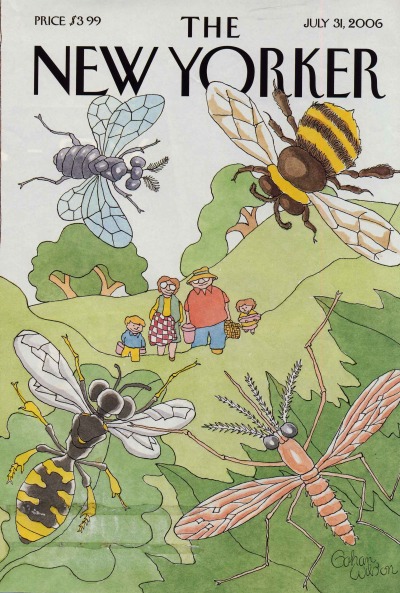 Gahan Wilson’s humor is a marvel. Any attempt to explain Picnic Reception robs it of its satiric sting. (Pardon the pun.) Featured Image: Gahan Wilson. “Picnic Reception, “The New Yorker (July 31, 2006)
Gahan Wilson’s humor is a marvel. Any attempt to explain Picnic Reception robs it of its satiric sting. (Pardon the pun.) Featured Image: Gahan Wilson. “Picnic Reception, “The New Yorker (July 31, 2006)
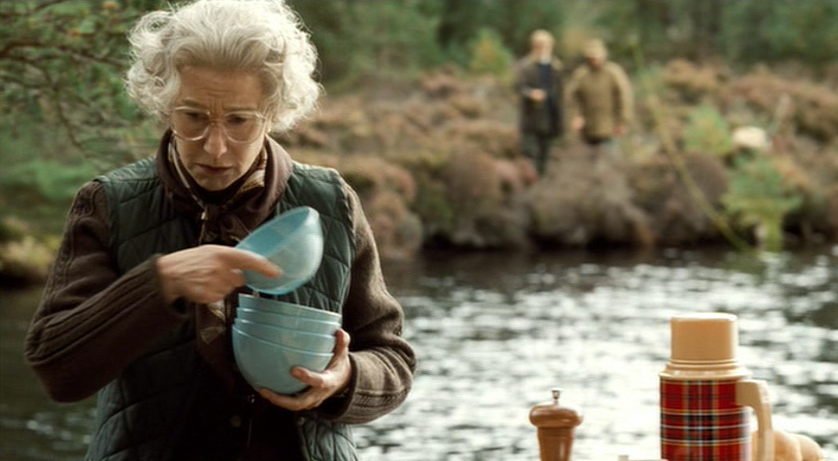 According to Stephen Frears, the Balmoral picnic is a glum episode as the Queen and family deal with the grief and notoriety resulting from the death of Princess Diana. Having retreated to Balmoral, a glum royal family tries to find solace outdoors. When the Queen...
According to Stephen Frears, the Balmoral picnic is a glum episode as the Queen and family deal with the grief and notoriety resulting from the death of Princess Diana. Having retreated to Balmoral, a glum royal family tries to find solace outdoors. When the Queen...
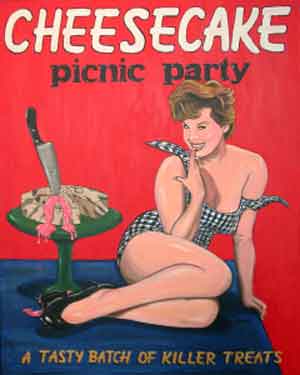 Talbott’s satire Cheesecake Picnic Party: A Killer Batch of Tasty Treats (2007) evokes the Hollywood film noir. It’s a satire of the so-called cheesecake images of sexy women. Featured Image: David Russell Talbott. Cheesecake Picnic Party: A Killer Batch...
Talbott’s satire Cheesecake Picnic Party: A Killer Batch of Tasty Treats (2007) evokes the Hollywood film noir. It’s a satire of the so-called cheesecake images of sexy women. Featured Image: David Russell Talbott. Cheesecake Picnic Party: A Killer Batch...
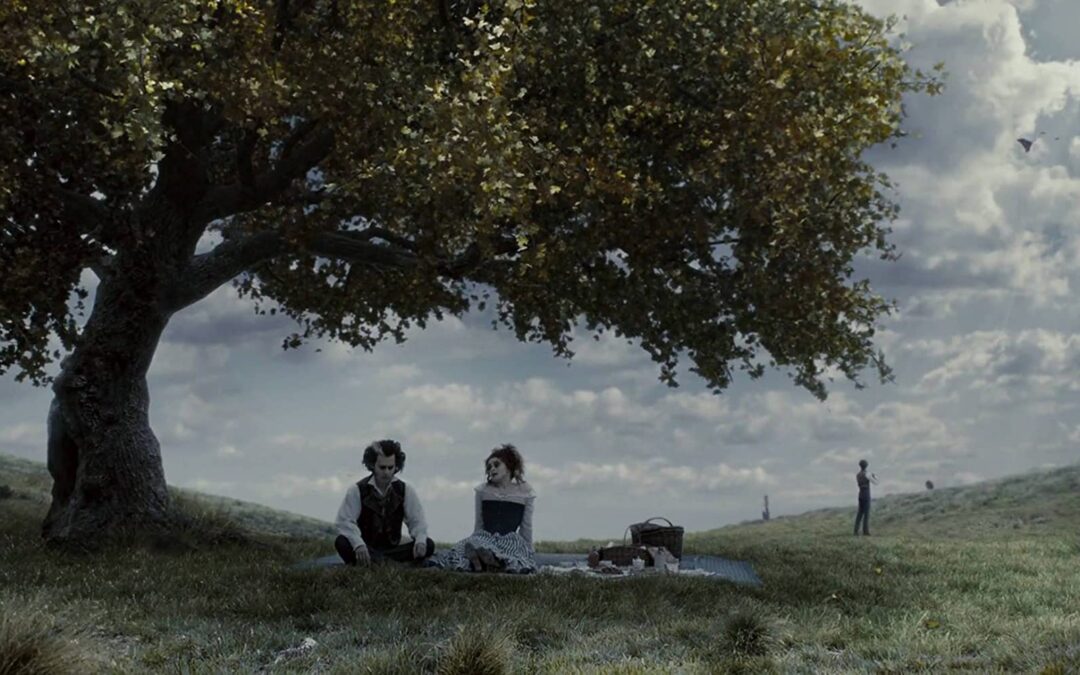 Sweeney Todd and Nellie Lovett’s picnic is a satiric commentary on middle-class values that seems typical, but it’s not quite what it seems. The screenplay describes an ideal setup: “Mrs. Lovett and Todd rest on a picnic blanket, just like any other couple...
Sweeney Todd and Nellie Lovett’s picnic is a satiric commentary on middle-class values that seems typical, but it’s not quite what it seems. The screenplay describes an ideal setup: “Mrs. Lovett and Todd rest on a picnic blanket, just like any other couple...
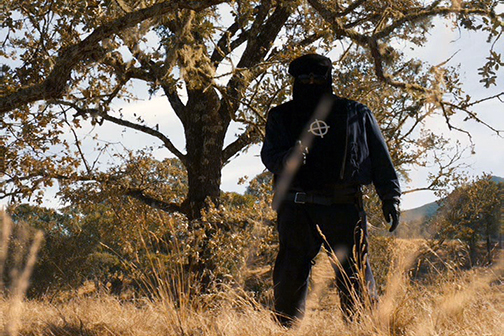 Fincher’s Zodiac adapts Robert Graysmith’s obsessive reporting of serial killings killed in the San Francisco Bay area, named after the killer who identified as Zodiac. The murders began at a picnic in 1968 and did not stop until 1978, by which time 37...
Fincher’s Zodiac adapts Robert Graysmith’s obsessive reporting of serial killings killed in the San Francisco Bay area, named after the killer who identified as Zodiac. The murders began at a picnic in 1968 and did not stop until 1978, by which time 37...
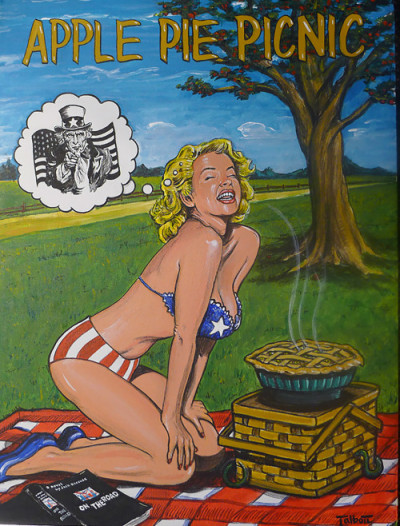 Talbott’s Apple Pie Picnic is a send-up of the cliché “As American as apple pie.” Talbott jams as many icons as he can on the picnic cloth. Marilyn Monroe is on her knees next to a picnic basket, a steaming apple pie, a copy of Jack Kerouac’s...
Talbott’s Apple Pie Picnic is a send-up of the cliché “As American as apple pie.” Talbott jams as many icons as he can on the picnic cloth. Marilyn Monroe is on her knees next to a picnic basket, a steaming apple pie, a copy of Jack Kerouac’s...
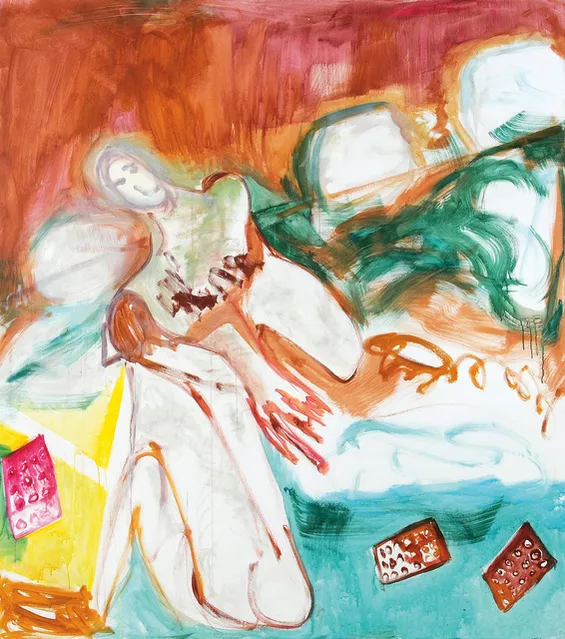 Sirbiladze’s Drug Picnic is unpicnicky. A nightmare. See Tamuna Sirbiladze. Drug Picnic (2008). Acrylic on canvas.
Sirbiladze’s Drug Picnic is unpicnicky. A nightmare. See Tamuna Sirbiladze. Drug Picnic (2008). Acrylic on canvas.
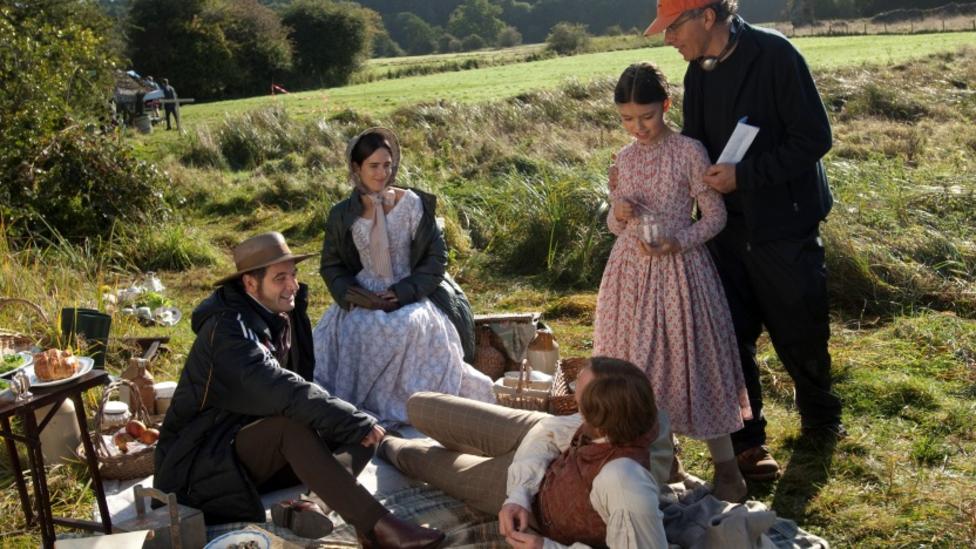 Charles Darwin’s struggle to complete and publish On the Origin of the Species (1859) is Amiel’s idea for a picnic. This picnic probably never happened, but Amiel thought it a pleasant way for Darwin to discuss his scientific observations. The jolly picnic...
Charles Darwin’s struggle to complete and publish On the Origin of the Species (1859) is Amiel’s idea for a picnic. This picnic probably never happened, but Amiel thought it a pleasant way for Darwin to discuss his scientific observations. The jolly picnic...
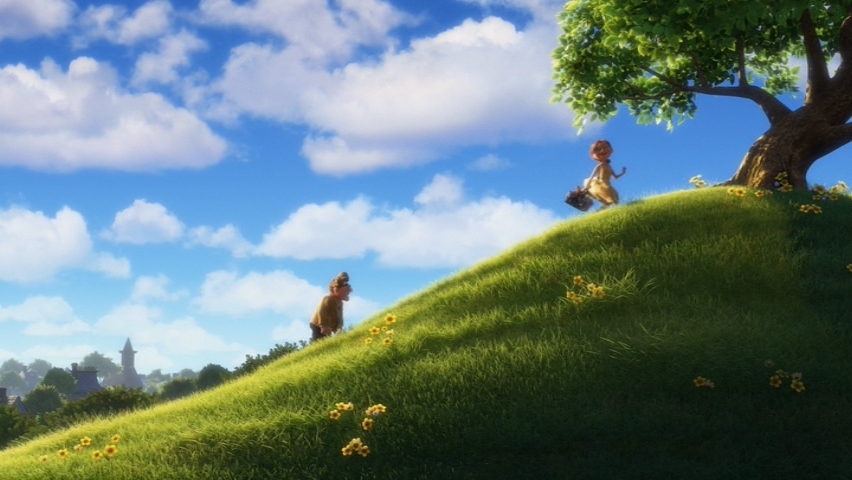 The newlyweds, Carl, and Ellie Fredricksen, dream of their future at a picnic. Walking out into the countryside, Karl and Ellie spread a picnic on the grass. Then, looking at the sky, they dream of a family. Alas, their romantic dreams of visiting Paradise Falls are...
Bright Star (2009), Jane Campion’s version of John Keats and Fanny Brawne’s love affair, invents two romantic courtship picnic scenes. These moments are poignant because we know the romance will end in heartbreak. The first is a picnic at which they kiss....
The newlyweds, Carl, and Ellie Fredricksen, dream of their future at a picnic. Walking out into the countryside, Karl and Ellie spread a picnic on the grass. Then, looking at the sky, they dream of a family. Alas, their romantic dreams of visiting Paradise Falls are...
Bright Star (2009), Jane Campion’s version of John Keats and Fanny Brawne’s love affair, invents two romantic courtship picnic scenes. These moments are poignant because we know the romance will end in heartbreak. The first is a picnic at which they kiss....
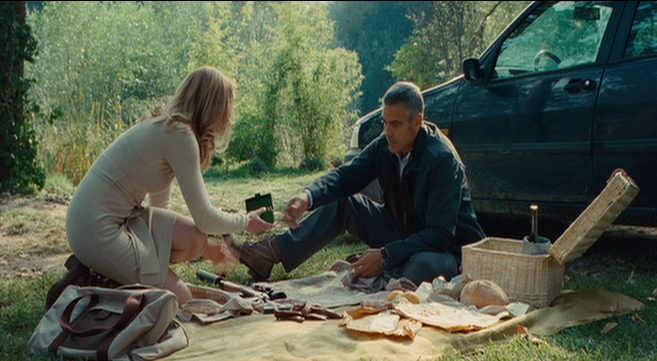 Corbijn’s The American is moderately faithful to Martin Booth’s novel A Very Private Gentleman. It’s the story of a gunmaker/assassin hiding from his enemies. Booth’s novel has three picnics, but Corbijn includes two. Hired to make a...
Corbijn’s The American is moderately faithful to Martin Booth’s novel A Very Private Gentleman. It’s the story of a gunmaker/assassin hiding from his enemies. Booth’s novel has three picnics, but Corbijn includes two. Hired to make a...
 Benjamin Black’s picnic at Howth alludes to James Joyce’s Ulysses. The date is the same fifty-two years later, June 16, 1956, but the picnickers and their intentions are very different. In Ulysses, Leopold Bloom, and Marian “Molly,” Tweedy make...
Benjamin Black’s picnic at Howth alludes to James Joyce’s Ulysses. The date is the same fifty-two years later, June 16, 1956, but the picnickers and their intentions are very different. In Ulysses, Leopold Bloom, and Marian “Molly,” Tweedy make...
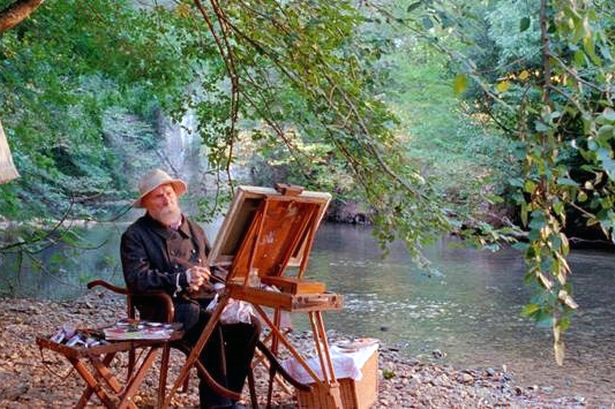 Bourdos’ Renoir gives you the feeling of living in Renoir’s Cagnes-sur-Mer. It’s now a suburb of Nice, but in the summer of 1915, it was the country home of Auguste Renoir. The estate Cagnes-sur mer is still extant and still holds the picnicky aura...
Bourdos’ Renoir gives you the feeling of living in Renoir’s Cagnes-sur-Mer. It’s now a suburb of Nice, but in the summer of 1915, it was the country home of Auguste Renoir. The estate Cagnes-sur mer is still extant and still holds the picnicky aura...
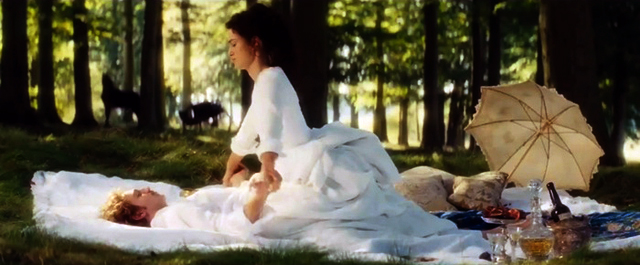 Wright’s Anna Karenina takes liberties by inventing a picnic that the screenplay by Tom Stoppard suggests is “a lovers’ idyll, by a stream on a warm day.” The picnic episode isn’t Tolstoy’s. As far as I know, there aren’t any...
Wright’s Anna Karenina takes liberties by inventing a picnic that the screenplay by Tom Stoppard suggests is “a lovers’ idyll, by a stream on a warm day.” The picnic episode isn’t Tolstoy’s. As far as I know, there aren’t any...
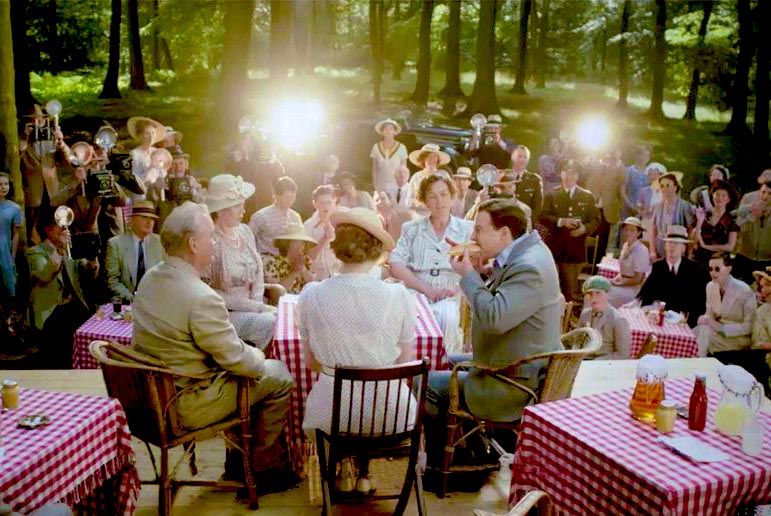 In June 1939, FDR entertained King George VI and Queen Margaret at a picnic in Hyde Park, New York, his “other” White House. The picnic is significantly fictionalized. Michell and screenwriter Richard Nelson add much to the story but omit Eleanor...
In June 1939, FDR entertained King George VI and Queen Margaret at a picnic in Hyde Park, New York, his “other” White House. The picnic is significantly fictionalized. Michell and screenwriter Richard Nelson add much to the story but omit Eleanor...
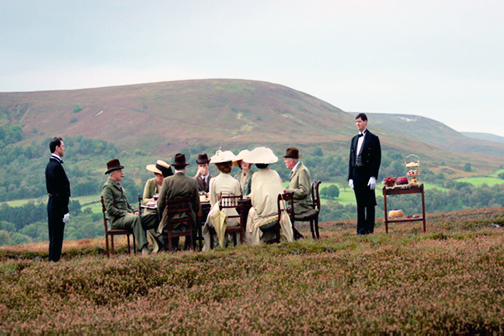 The picnic scene is not Ford’s. It is the creation of White and Stoppard to demonstrate that Christopher’s excruciating relationship with Sylvia is no picnic. In episode 2 of the series, Christopher and Sylvia spend a country week with and attend a picnic on the grass...
The picnic scene is not Ford’s. It is the creation of White and Stoppard to demonstrate that Christopher’s excruciating relationship with Sylvia is no picnic. In episode 2 of the series, Christopher and Sylvia spend a country week with and attend a picnic on the grass...
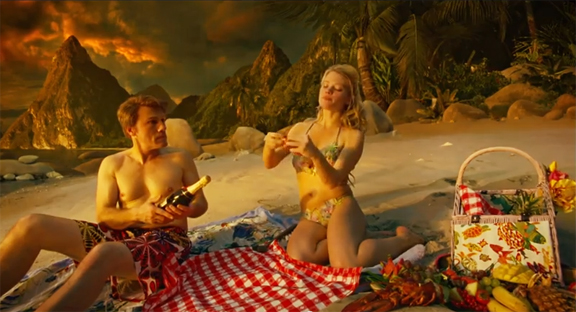 Gilliam’s Zero Theorem is a sexy, pleasantly ordinary picnic. Except it is virtual, taking place in Qohen’s computer program and placed there by his horrid boss to make him work, work, work. The picnic is a romp on the tropical beach with a virtual sex...
Gilliam’s Zero Theorem is a sexy, pleasantly ordinary picnic. Except it is virtual, taking place in Qohen’s computer program and placed there by his horrid boss to make him work, work, work. The picnic is a romp on the tropical beach with a virtual sex...
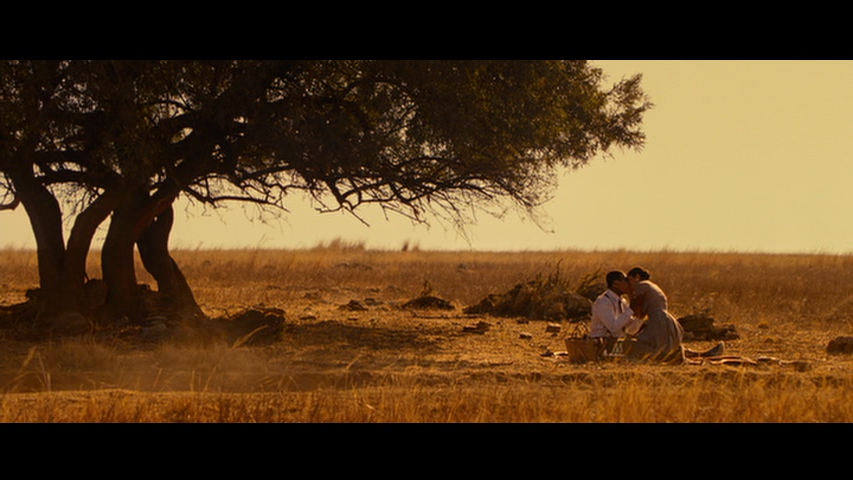 Chadwick’s picnic is perfunctory and idealized. Chadwick and his screenwriter William Nicolson liked the idea of a lovers’ picnic because the narrative needed a romantic interlude. Mandela’s autobiography does not mention a picnic during his...
Chadwick’s picnic is perfunctory and idealized. Chadwick and his screenwriter William Nicolson liked the idea of a lovers’ picnic because the narrative needed a romantic interlude. Mandela’s autobiography does not mention a picnic during his...
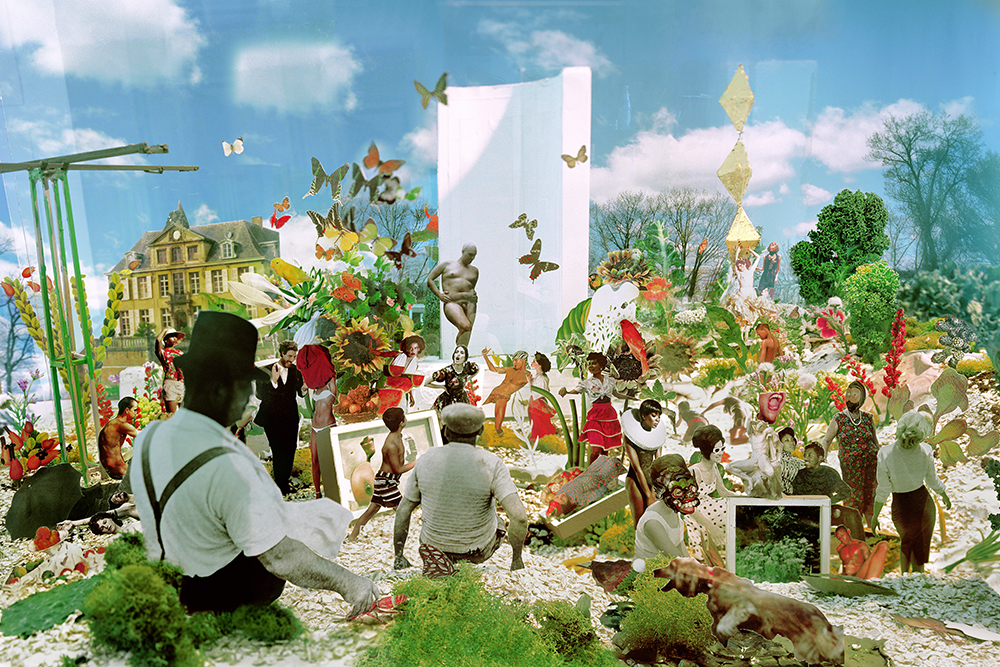 Wardell Milan’s Sunday, Sitting on the Bank of Butterfly Meadow (2013) is an improvisation of Cartier-Bresson’s Sunday on the Banks of the Marne, 1938. A visual joke, yes?
Wardell Milan’s Sunday, Sitting on the Bank of Butterfly Meadow (2013) is an improvisation of Cartier-Bresson’s Sunday on the Banks of the Marne, 1938. A visual joke, yes?
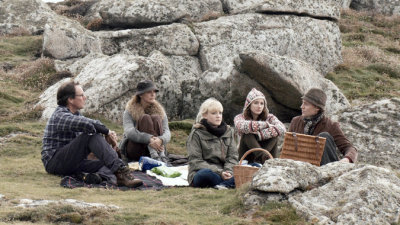 Hogg says that Archipelago is a metaphor for a family just out of touch with one another; “The title relates to the family as a group of islands, linked together beneath the surface. What often links a family together goes unspoken and unacknowledged. Families are a...
For six hours and 17 minutes, Tom Harper’s War and Peace is a parade of armies marching or in battle, explosions, mutilations, death, love and seduction, incest, and constant social intrigue. The final 2:8 minutes is a picnic, a happy situation, if not a fairy tale...
Hogg says that Archipelago is a metaphor for a family just out of touch with one another; “The title relates to the family as a group of islands, linked together beneath the surface. What often links a family together goes unspoken and unacknowledged. Families are a...
For six hours and 17 minutes, Tom Harper’s War and Peace is a parade of armies marching or in battle, explosions, mutilations, death, love and seduction, incest, and constant social intrigue. The final 2:8 minutes is a picnic, a happy situation, if not a fairy tale...
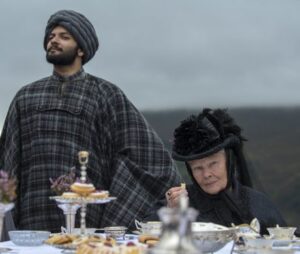 For the picnic, Victoria, and Abdul, Stephen Frears jokes that it is typically English and glum. Unwilling to be put off by an oncoming thunderstorm, cold, and wind, Victoria insists on picnicking amid heath. It’s uncomfortably cold, and Victoria and fellow picnickers...
For the picnic, Victoria, and Abdul, Stephen Frears jokes that it is typically English and glum. Unwilling to be put off by an oncoming thunderstorm, cold, and wind, Victoria insists on picnicking amid heath. It’s uncomfortably cold, and Victoria and fellow picnickers...
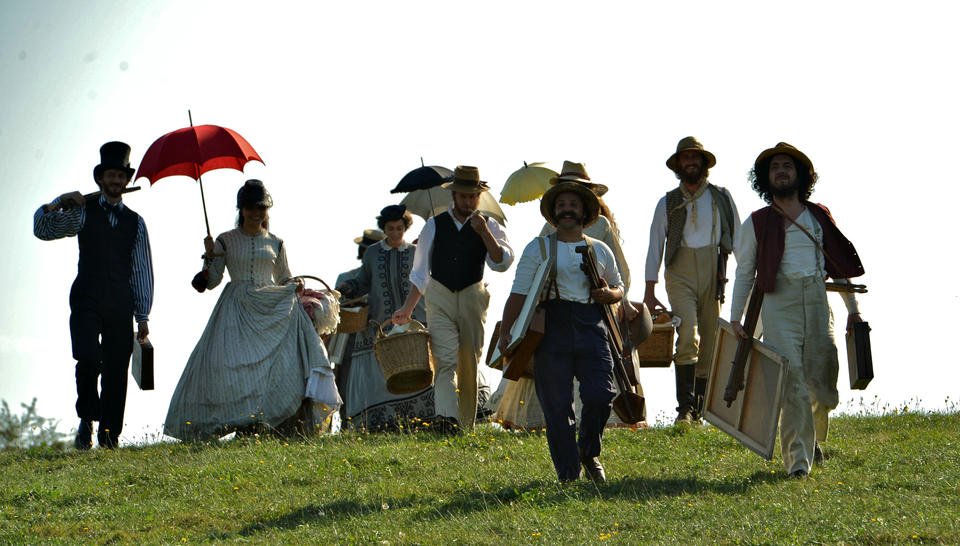 Mixing fact with fiction, Danièle Thompson (very) loosely retells the complex friendship of Emile Zola and Paul Cézanne in Cézanne et Moi, especially how Cezanne helped Zola see from a painter’s point of view. Though they were childhood friends in Aix and later...
Mixing fact with fiction, Danièle Thompson (very) loosely retells the complex friendship of Emile Zola and Paul Cézanne in Cézanne et Moi, especially how Cezanne helped Zola see from a painter’s point of view. Though they were childhood friends in Aix and later...
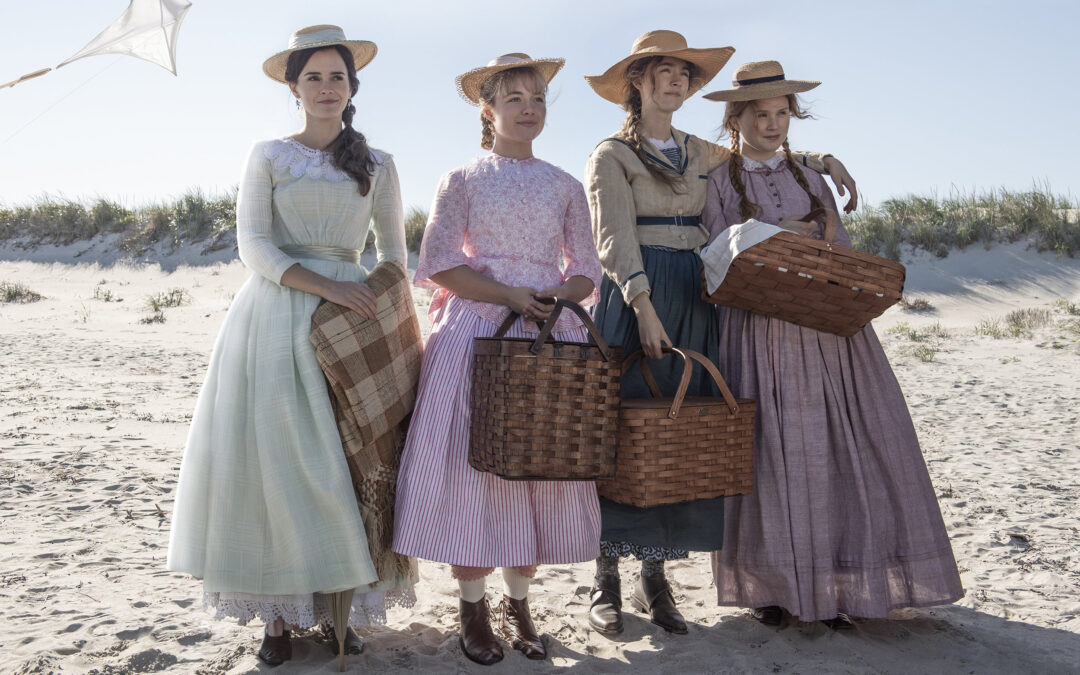 There are two picnics in Gerwig’s Little Women: a wedding picnic and a beach picnic. The first is Meg March and Mr. Brook’s reception. As in Alcott’s novel, it’s “a plentiful lunch of cake and fruit, dressed in flowers.” But Gerwig’s foods include wine, lemonade, and...
There are two picnics in Gerwig’s Little Women: a wedding picnic and a beach picnic. The first is Meg March and Mr. Brook’s reception. As in Alcott’s novel, it’s “a plentiful lunch of cake and fruit, dressed in flowers.” But Gerwig’s foods include wine, lemonade, and...
 Sergio Aragonés’s comic imagination upends a happy picnic. Featured Image: Sergio Aragonés’s “Crime Scene Picnic.” 3, 2018.
Sergio Aragonés’s comic imagination upends a happy picnic. Featured Image: Sergio Aragonés’s “Crime Scene Picnic.” 3, 2018.
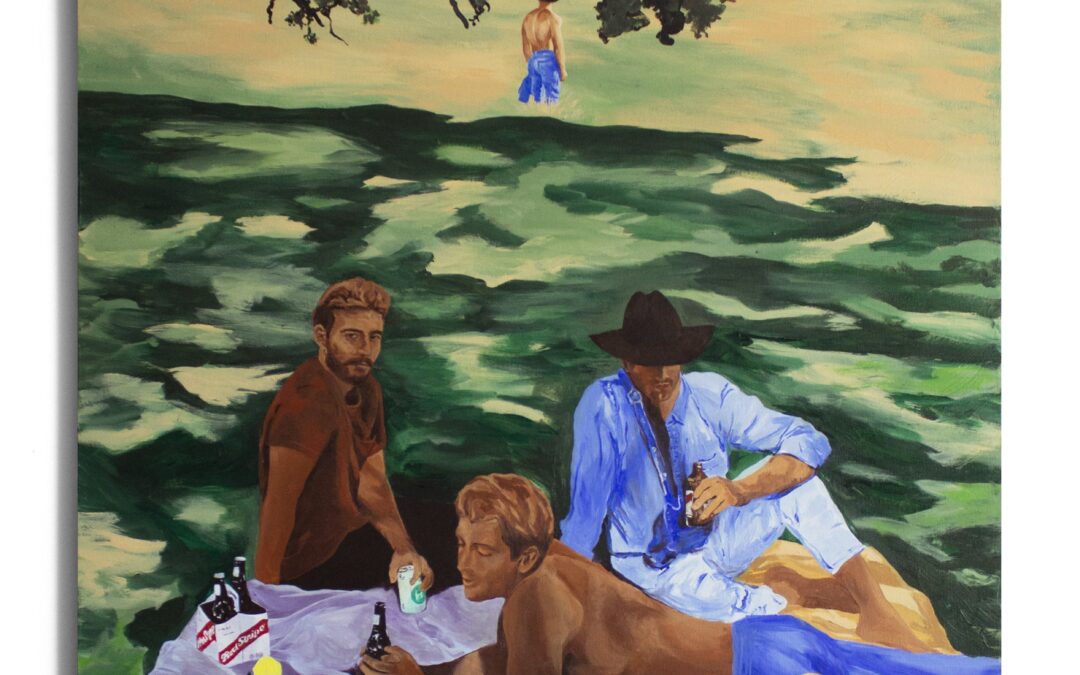 Beer and apples. Featured Image: Luncheon on the Pasture, acrylic on canvas.
Beer and apples. Featured Image: Luncheon on the Pasture, acrylic on canvas.
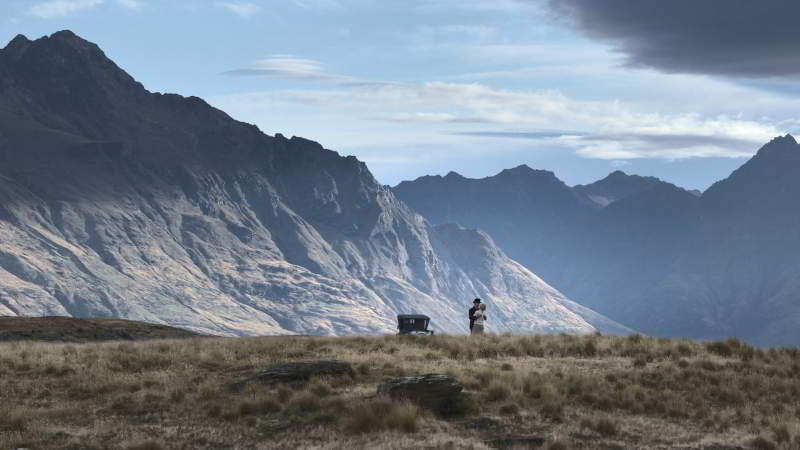 Campion’s narrative sets the picnic episode on a mild sunny day in late summer. The locale is flat plains and brown grass. In the distance, high mountains loom. Beyond which high mountains loom. George Burbank is like the landscape he inhabits, solid and...
Campion’s narrative sets the picnic episode on a mild sunny day in late summer. The locale is flat plains and brown grass. In the distance, high mountains loom. Beyond which high mountains loom. George Burbank is like the landscape he inhabits, solid and...
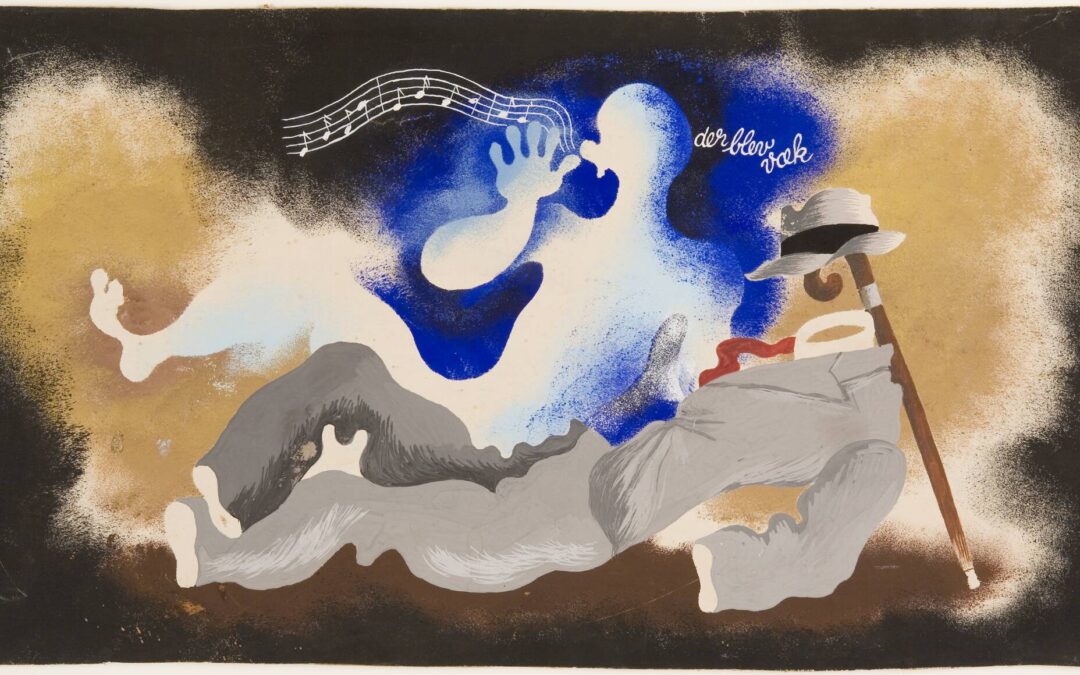 Abell’s The Melody That Got Lost is a surrealistic drama with music that severely critiques modern conformity to middle-class values and the insipid qualities of middle-class imagination with a picnic filled with trash. The picnic scene begins when a typically...
Abell’s The Melody That Got Lost is a surrealistic drama with music that severely critiques modern conformity to middle-class values and the insipid qualities of middle-class imagination with a picnic filled with trash. The picnic scene begins when a typically...
 McGinnis’s’ Blind Faith is dramatized reportage of a New Jersey murder case in which Rob Marshall was accused of hiring hitmen to free himself to marry his flamboyant mistress. According to McGuiness, when Marshall thought something was wrong with one of...
McGinnis’s’ Blind Faith is dramatized reportage of a New Jersey murder case in which Rob Marshall was accused of hiring hitmen to free himself to marry his flamboyant mistress. According to McGuiness, when Marshall thought something was wrong with one of...
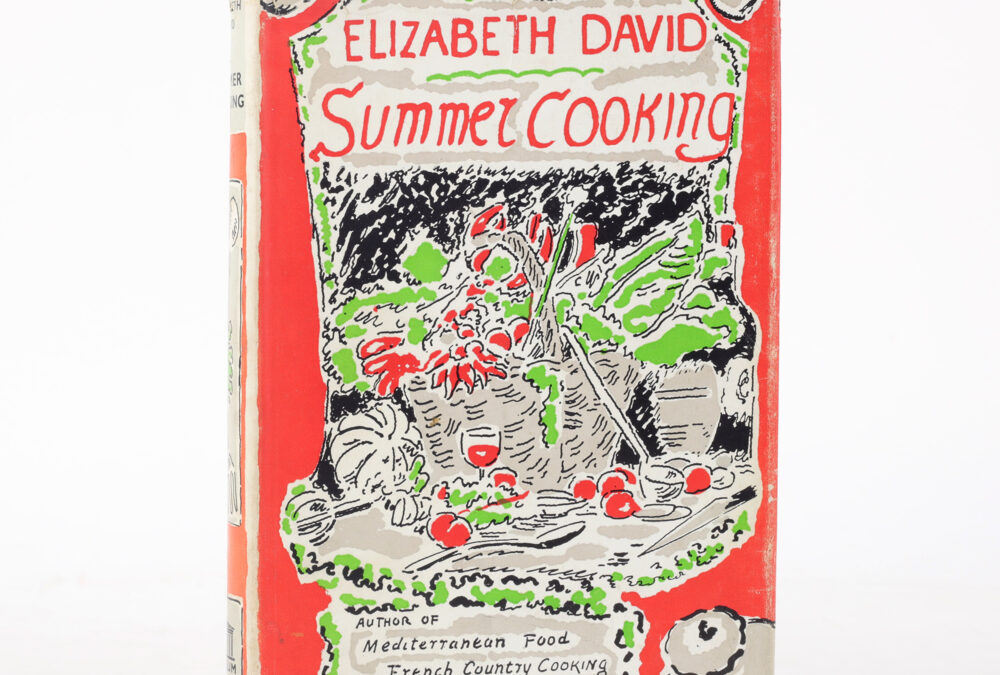 David’s “Indian Picnics: Picnic at Kutub Minar” is an anecdote related in Summer Cooking (1955). This moonlight picnic is held at Kutub Minar, a leaning tower (238 feet) now in ruins just outside Delhi. David says that if the picnic was wrong from the start, it was...
David’s “Indian Picnics: Picnic at Kutub Minar” is an anecdote related in Summer Cooking (1955). This moonlight picnic is held at Kutub Minar, a leaning tower (238 feet) now in ruins just outside Delhi. David says that if the picnic was wrong from the start, it was...
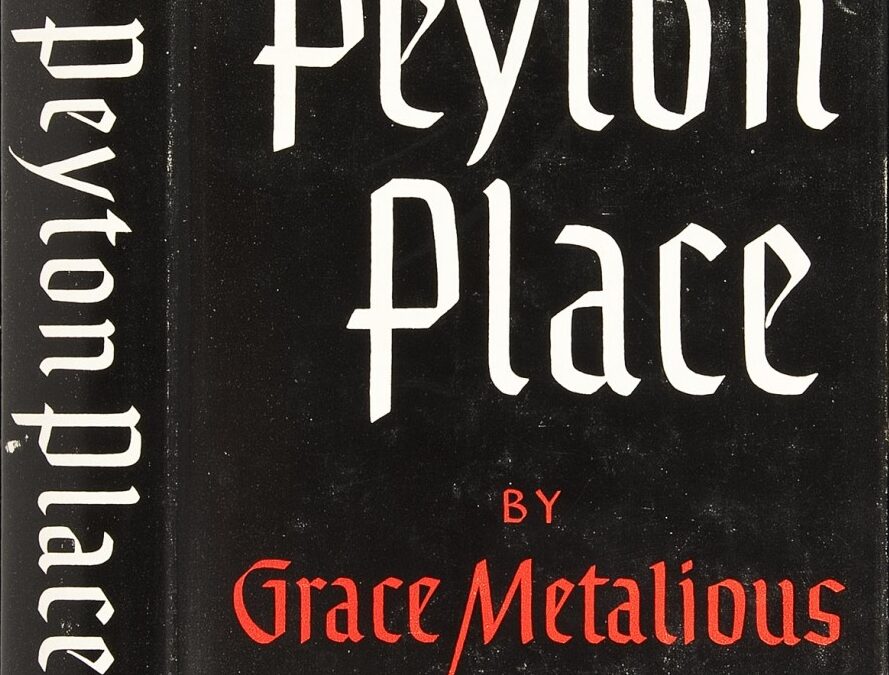 Allison McKenzie and Norman Page teenagers ride bicycles to a picnic on the Connecticut River. Metalious’s picnic is similar to Carson McCullers’s in The Heart is a Lonely Hunter; during which Mick Kelly and Harry Minowitz talk about adult life and...
Allison McKenzie and Norman Page teenagers ride bicycles to a picnic on the Connecticut River. Metalious’s picnic is similar to Carson McCullers’s in The Heart is a Lonely Hunter; during which Mick Kelly and Harry Minowitz talk about adult life and...
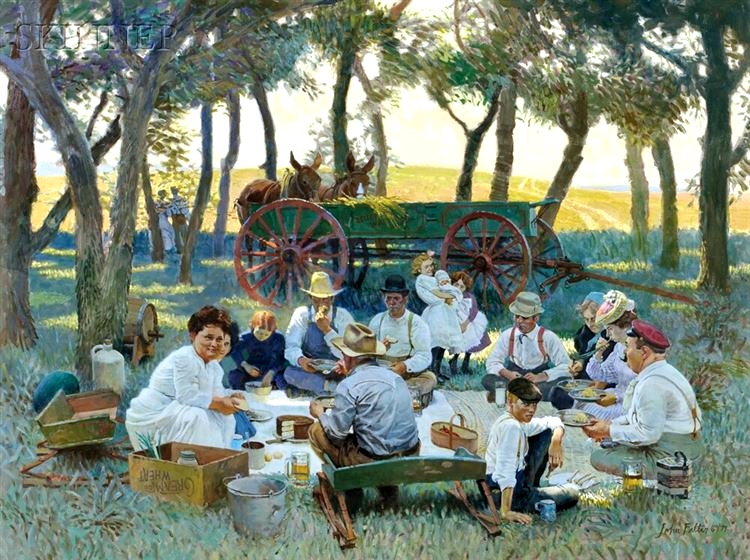 Falter was a commercial artist and illustrator mostly known for his Saturday Evening Post magazine covers. Featured Image: John Philip Falter Prairie Grove Picnic. Oil on Linen (1947)
Falter was a commercial artist and illustrator mostly known for his Saturday Evening Post magazine covers. Featured Image: John Philip Falter Prairie Grove Picnic. Oil on Linen (1947)
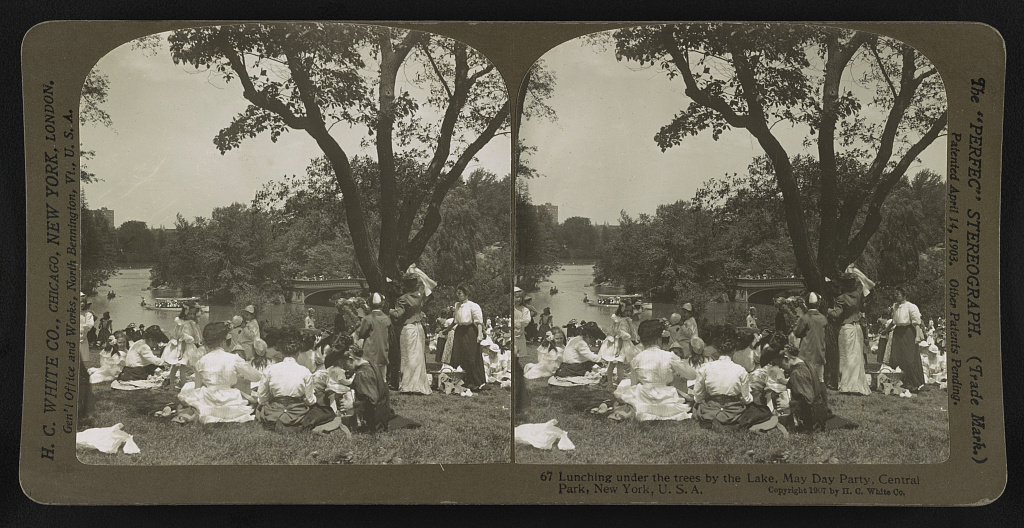 “Lives of women and children too poor to be sent to the country can now be saved in thousands of instances by making them go to the Park, During a hot day in July last, I counted at one in the park eighteen separate groups, consisting of mothers with their...
“Lives of women and children too poor to be sent to the country can now be saved in thousands of instances by making them go to the Park, During a hot day in July last, I counted at one in the park eighteen separate groups, consisting of mothers with their...
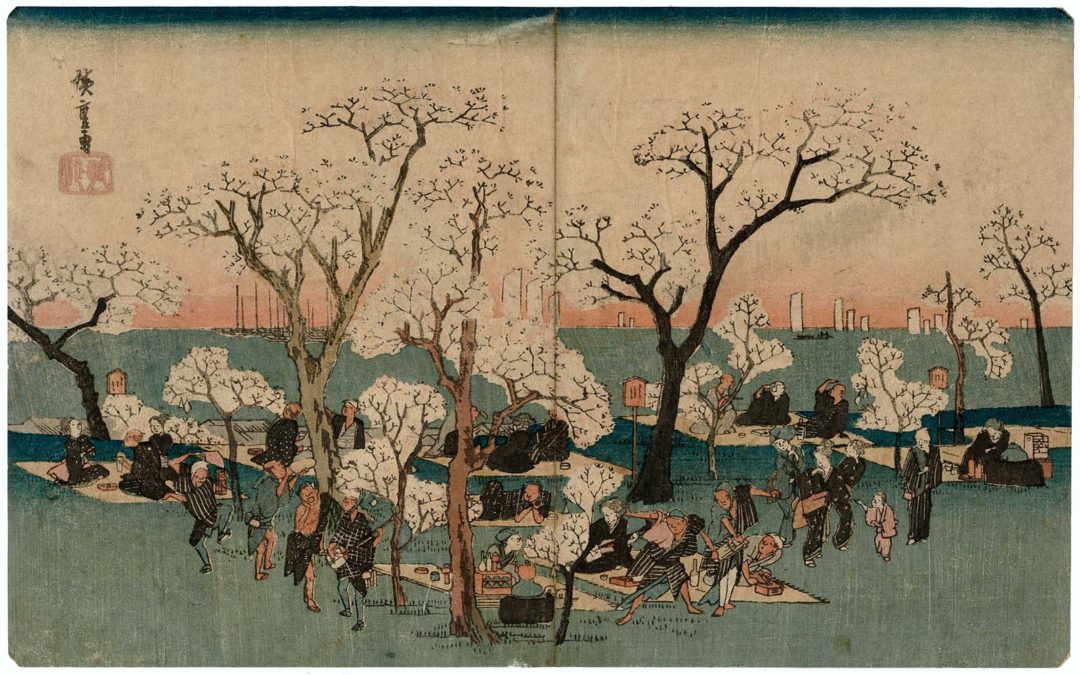 Hiroshige aims to depict activity relevant to the moment in a specific landscape. In this respect, his scenes in Japan correlate with J.M.W. Turner’s picturesque landscapes of the United Kingdom. While picnicking under the blooming cherry trees at Gotenyama, too...
Hiroshige aims to depict activity relevant to the moment in a specific landscape. In this respect, his scenes in Japan correlate with J.M.W. Turner’s picturesque landscapes of the United Kingdom. While picnicking under the blooming cherry trees at Gotenyama, too...
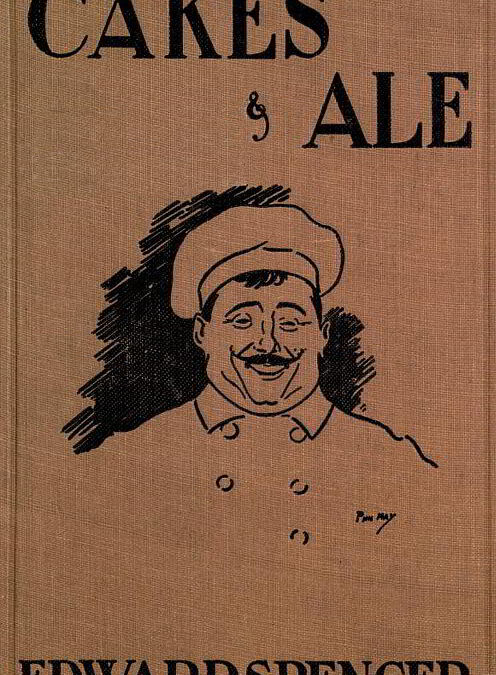 “Thumbers” are thick beef, pork, or mutton sandwiches that were popular crowd food at the Newmarket racetrack. The name alludes to the small-sized sandwiches held between the thumb and forefinger. Except for gastronome Edward Spencer. in his Cakes &...
“Thumbers” are thick beef, pork, or mutton sandwiches that were popular crowd food at the Newmarket racetrack. The name alludes to the small-sized sandwiches held between the thumb and forefinger. Except for gastronome Edward Spencer. in his Cakes &...
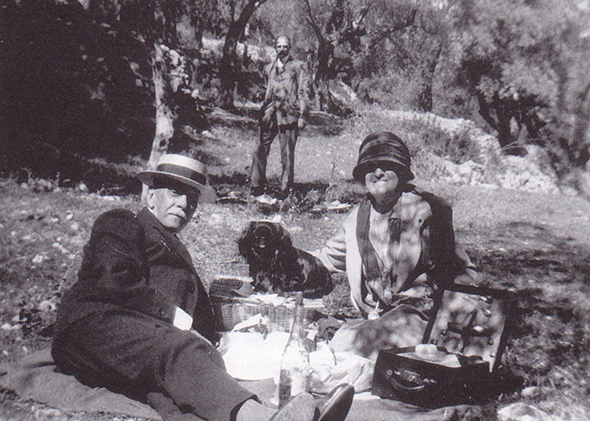 Lubbock’s Portrait of Edith Wharton is definitive: “Edith settled, the strapped hampers (which she likes to think of as ‘corded bales’) set side by side, the rugs spread, the guests ‘star-scattered in their places: poetic allusion is never amiss at these symposia....
Lubbock’s Portrait of Edith Wharton is definitive: “Edith settled, the strapped hampers (which she likes to think of as ‘corded bales’) set side by side, the rugs spread, the guests ‘star-scattered in their places: poetic allusion is never amiss at these symposia....
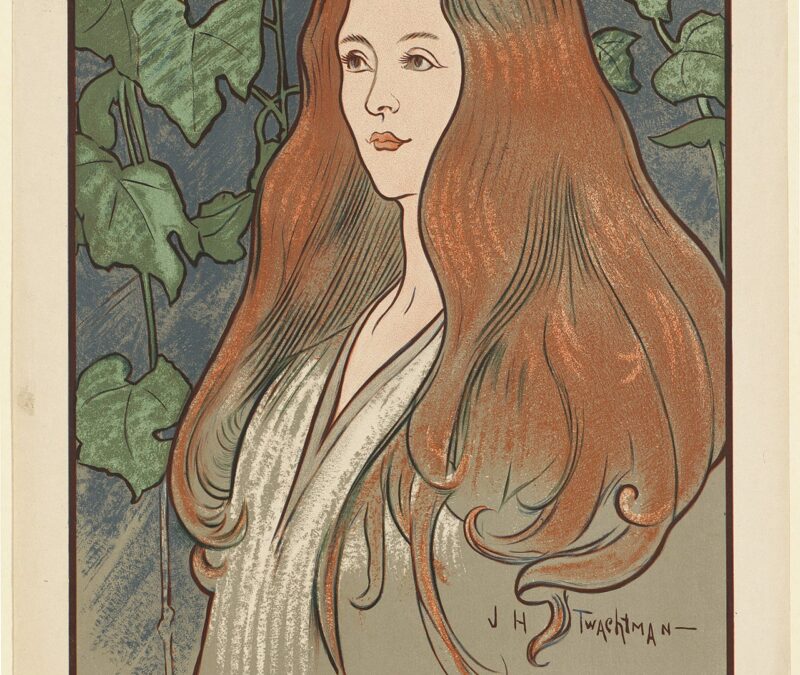 Frederic’s The Damnation of Theron Ware, or Illumination, is a satire of American Methodism. The narrative explores the mid-life crisis of Theron Ware, a married Methodist Episcopal pastor who falls for Celia Madden, an Irish Catholic, in a small town in New...
Frederic’s The Damnation of Theron Ware, or Illumination, is a satire of American Methodism. The narrative explores the mid-life crisis of Theron Ware, a married Methodist Episcopal pastor who falls for Celia Madden, an Irish Catholic, in a small town in New...
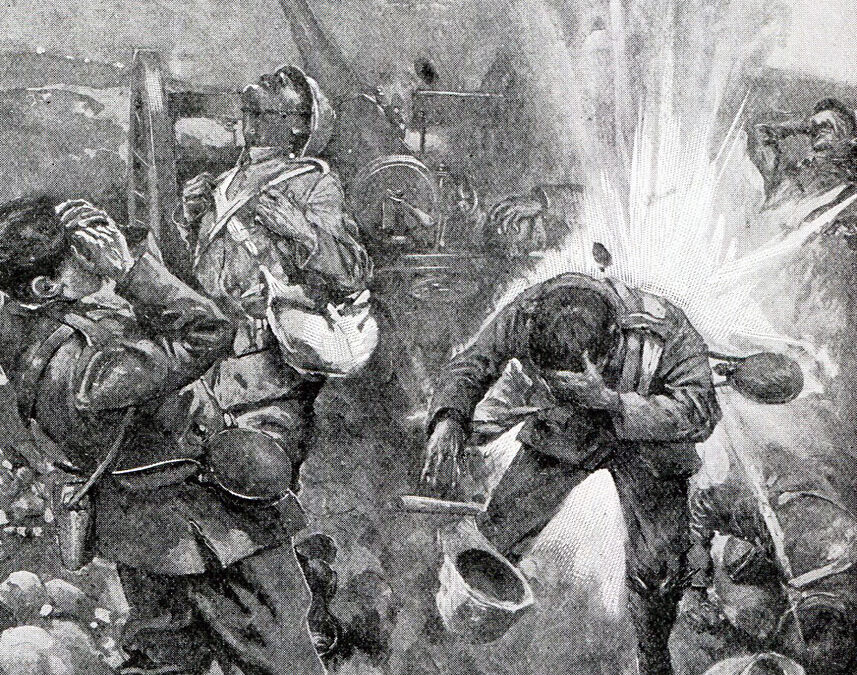 Doyle was knighted for his service during the Boer War (1899-1902), in which he served as a medical doctor. Much of Doyle’s The Great Boer War was written in hospital tents where he treated the wounded and diseased. The memories are a nationalistic view of a war...
Doyle was knighted for his service during the Boer War (1899-1902), in which he served as a medical doctor. Much of Doyle’s The Great Boer War was written in hospital tents where he treated the wounded and diseased. The memories are a nationalistic view of a war...
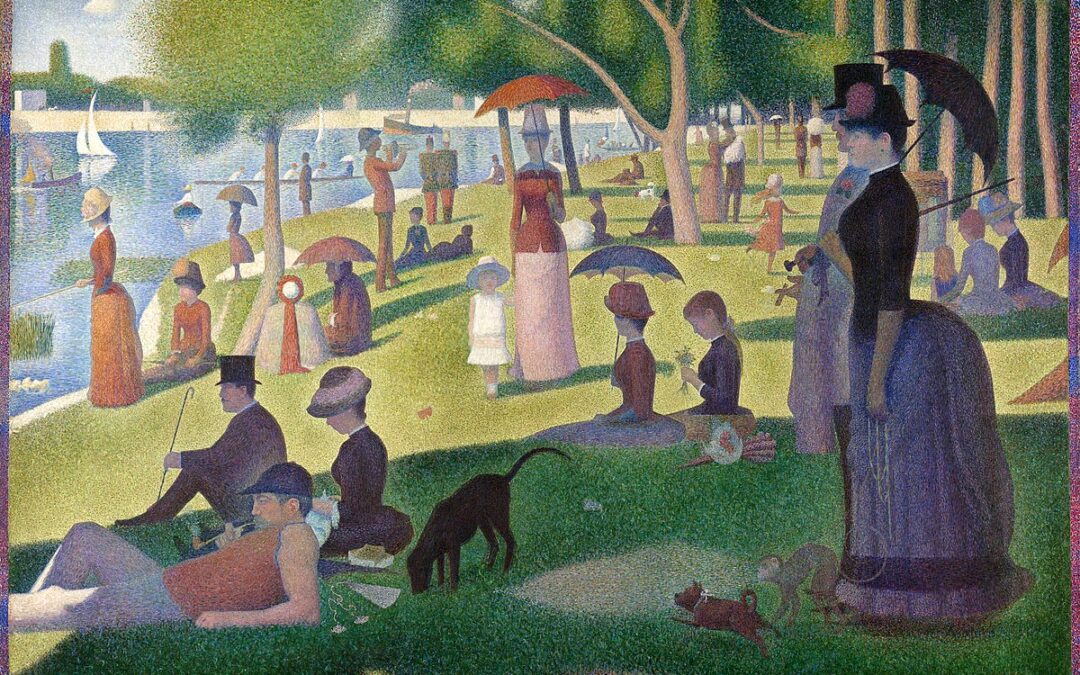 Seurat’s La Grande Jatte is picnicky. Having a combination of leisure, ease, and easy conviviality, it’s absent food. People of all classes coexist amiably. Some sit on the grass in the shade of trades, some promenade, but there are no signs of a luncheon on the...
Seurat’s La Grande Jatte is picnicky. Having a combination of leisure, ease, and easy conviviality, it’s absent food. People of all classes coexist amiably. Some sit on the grass in the shade of trades, some promenade, but there are no signs of a luncheon on the...
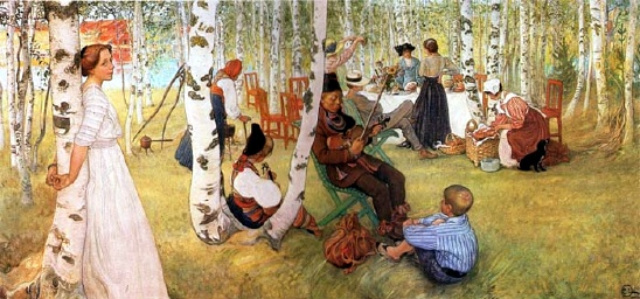 Larsson’s outdoor breakfast is among his favorites. It’s set in a birch grove away from the family house.. Food is packed in a big hamper by a servant. The table, covered with a white cloth, has wooden chairs. In the center foreground is a man playing a...
Larsson’s outdoor breakfast is among his favorites. It’s set in a birch grove away from the family house.. Food is packed in a big hamper by a servant. The table, covered with a white cloth, has wooden chairs. In the center foreground is a man playing a...
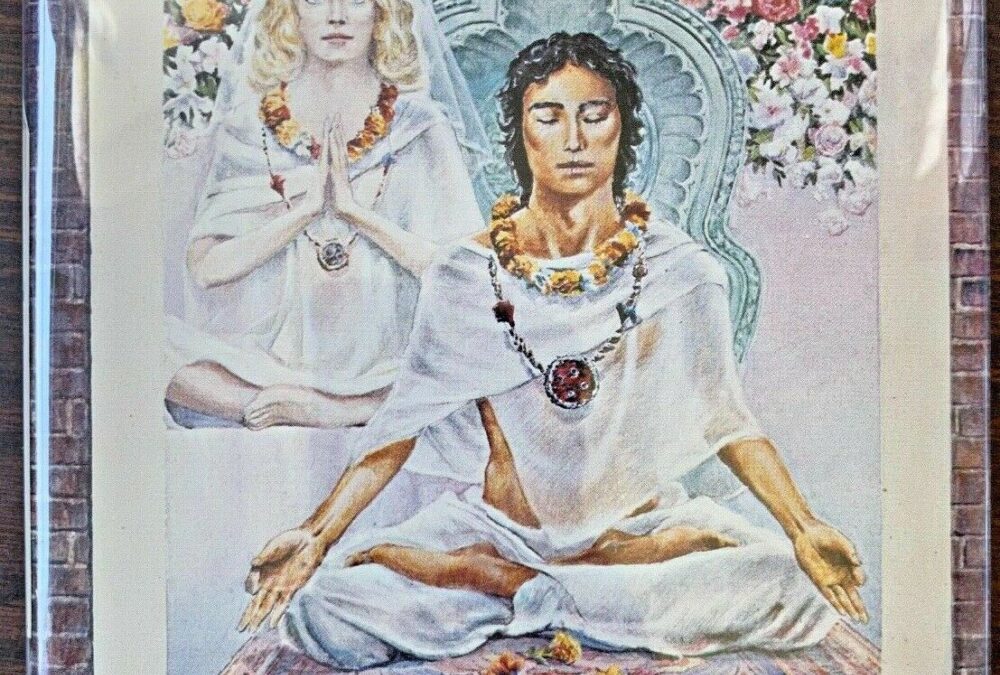 “Picnic with Moonlight and Mangos” from Jhabvala’sHow I Became a Holy Mother (1976) is about a drunken picnic in the garden of Moti Bagh, a 17th-century palace in a suburb of New Delhi. This annual event is often an excuse for sexual liaisons. The pattern is always...
“Picnic with Moonlight and Mangos” from Jhabvala’sHow I Became a Holy Mother (1976) is about a drunken picnic in the garden of Moti Bagh, a 17th-century palace in a suburb of New Delhi. This annual event is often an excuse for sexual liaisons. The pattern is always...
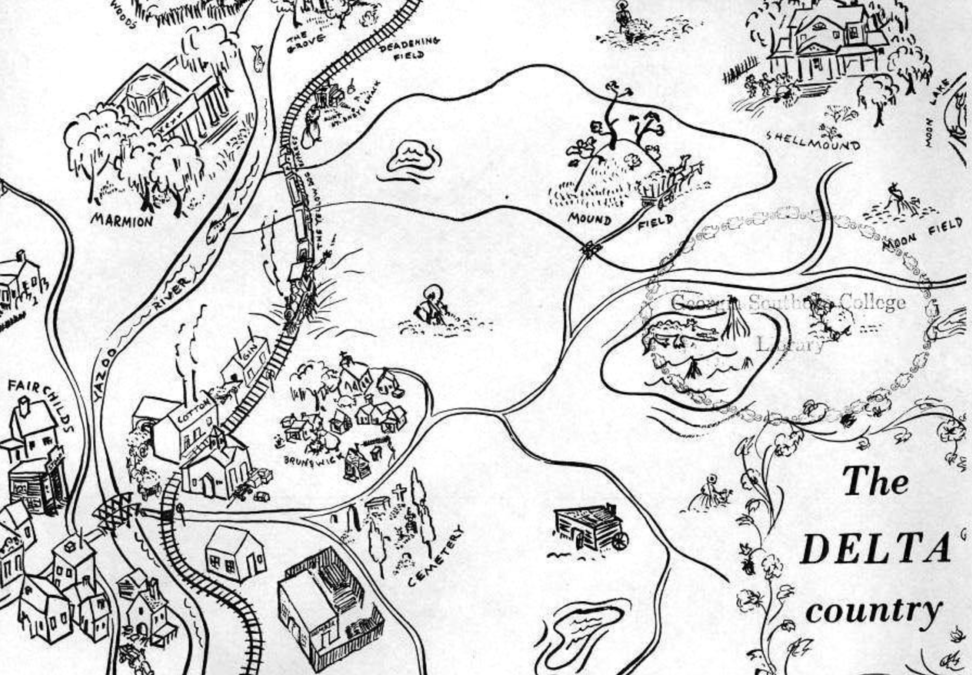 Under a magical starry sky, Welty’s picnic at the Grove calms the frayed edges of family life after a momentous wedding. Though it is held at night, the air is cool and still summery warm, the stars twinkles as shooting stars burst across the sky, and the sound...
Under a magical starry sky, Welty’s picnic at the Grove calms the frayed edges of family life after a momentous wedding. Though it is held at night, the air is cool and still summery warm, the stars twinkles as shooting stars burst across the sky, and the sound...
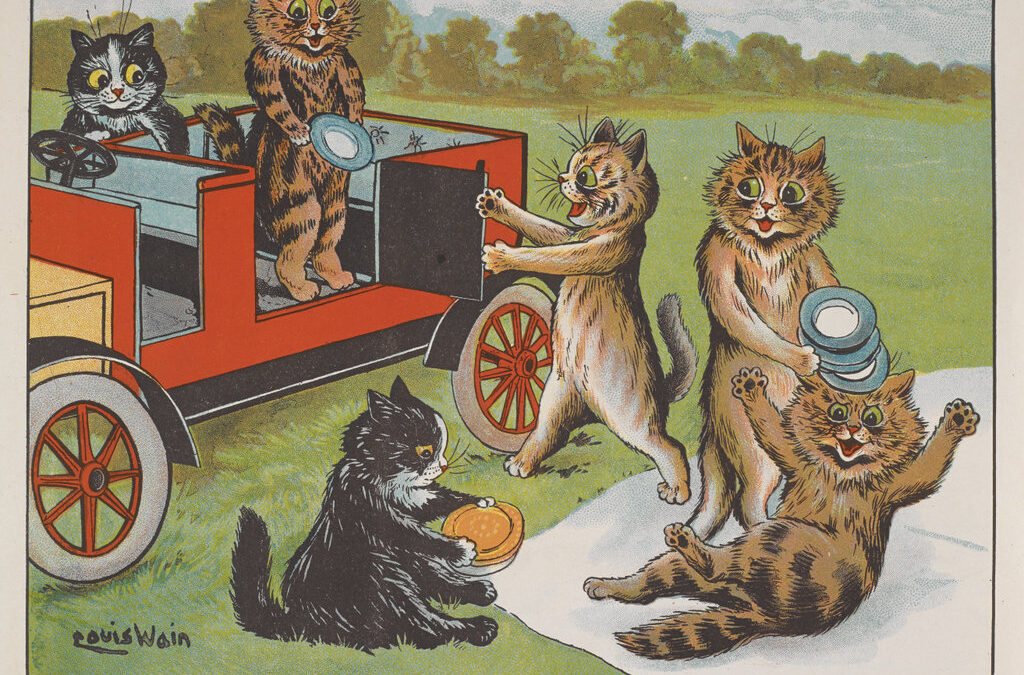 These clever Pussies have come for a picnic in a motor car, they are on their very best behaviour, and have brought a tablecloth and plates with them, and one thing I am certain, their plates will be quite clean when the have finished dinner, because they are sure to...
These clever Pussies have come for a picnic in a motor car, they are on their very best behaviour, and have brought a tablecloth and plates with them, and one thing I am certain, their plates will be quite clean when the have finished dinner, because they are sure to...
 Milne’s picnics Winnie-the-Pooh (1926) are happy leisurely events held in “a “Nice Place for Piknicks” in the area in “The Hundred Aker Wood.” It’s a location just above the “Sandy Pit where Roo Plays.” No doubt,...
Milne’s picnics Winnie-the-Pooh (1926) are happy leisurely events held in “a “Nice Place for Piknicks” in the area in “The Hundred Aker Wood.” It’s a location just above the “Sandy Pit where Roo Plays.” No doubt,...
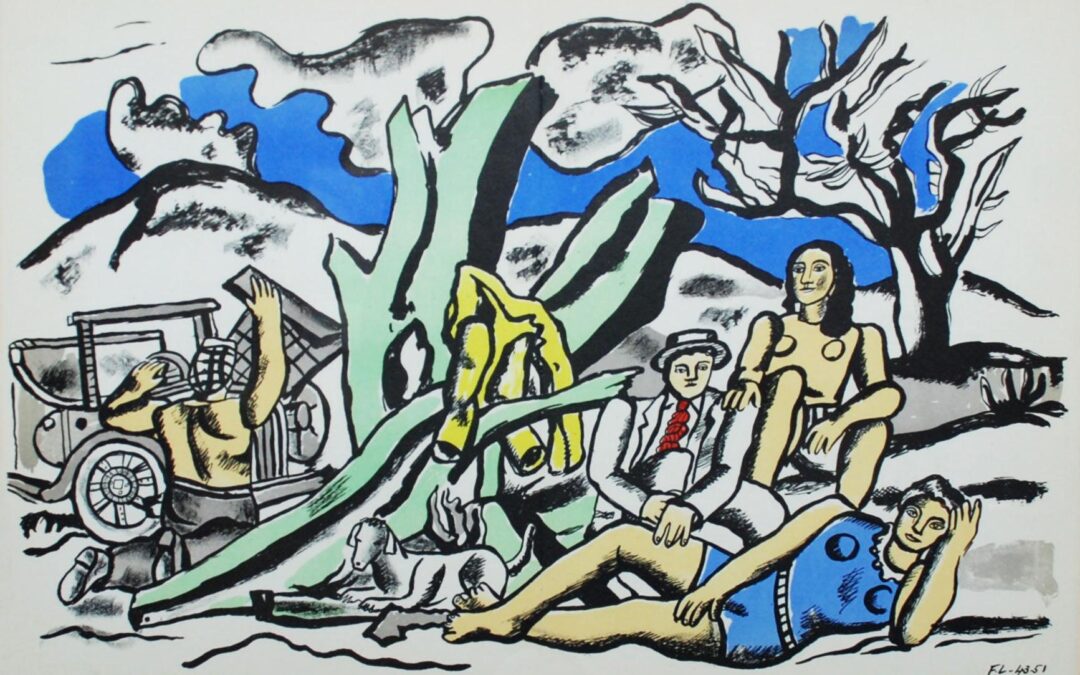 Leger’s style is unmistakable and memorable. Partie de Campagne, a series variously translated as The Picnic or The Country Outing, is a series of variations, and part of a project he called the Great Parade. As lithographs, these were among Léger s most...
Leger’s style is unmistakable and memorable. Partie de Campagne, a series variously translated as The Picnic or The Country Outing, is a series of variations, and part of a project he called the Great Parade. As lithographs, these were among Léger s most...
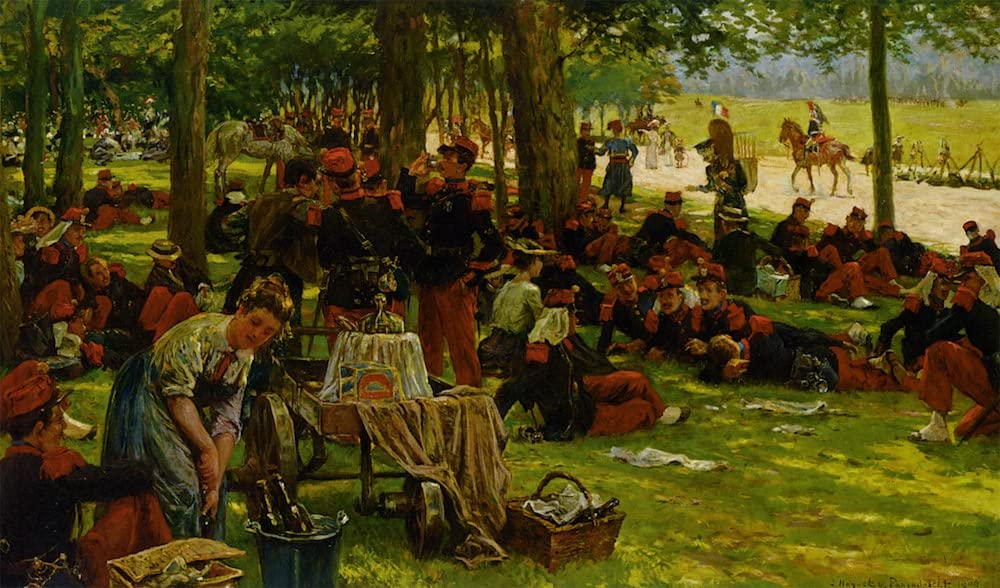 From the Sotheby’s catalog: “The scene depicted is a picnic of French gardistes in the Bois de Boulogne after their parade on the occasion of quatorze juillet. In the background is the sunlit area of the horse path of Longchamp, where the parade took...
From the Sotheby’s catalog: “The scene depicted is a picnic of French gardistes in the Bois de Boulogne after their parade on the occasion of quatorze juillet. In the background is the sunlit area of the horse path of Longchamp, where the parade took...
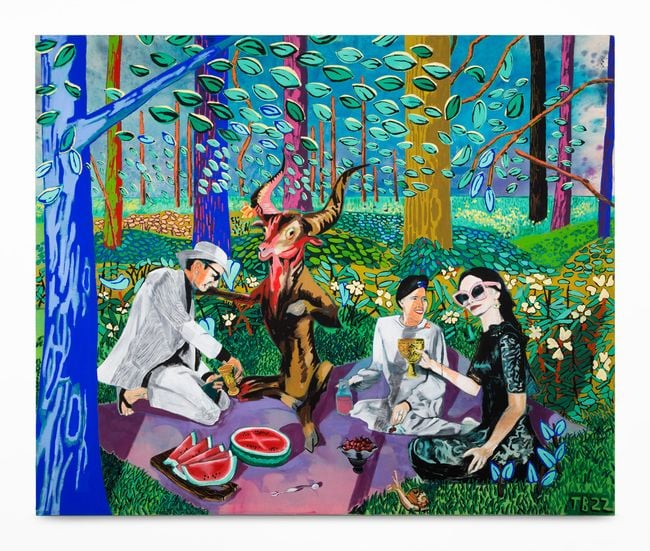 The Devil is portrayed as a smiling horned goat enjoying a picnic with a man and two women dressed in contemporary clothing. The food is watermelon. There is a story for this picnic that is yet to unfold. Featured Image: Theodore Boyer. Luncheon with the Devil. Oil...
The Devil is portrayed as a smiling horned goat enjoying a picnic with a man and two women dressed in contemporary clothing. The food is watermelon. There is a story for this picnic that is yet to unfold. Featured Image: Theodore Boyer. Luncheon with the Devil. Oil...
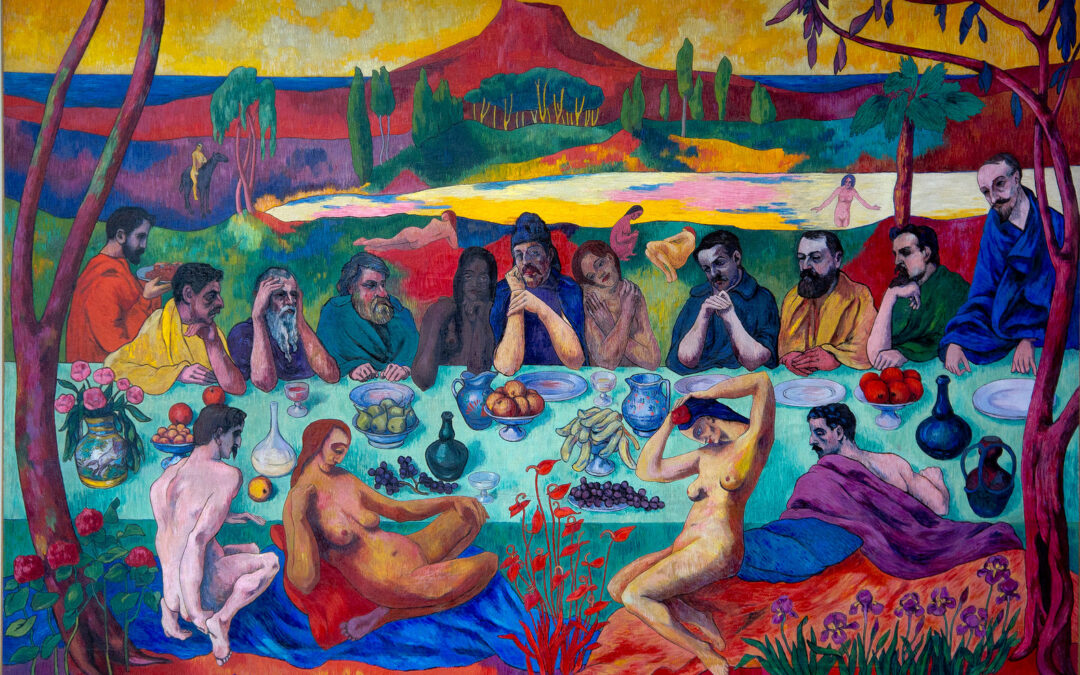 Homage to Gauguin is an allusion da Vinci’s Last Supper. Instead of Jesus, Gauguin is seated (third from right) with his friends and admirers. A picnic feast ought to be jolly, but these picnickers are solemn and unhappy. The images and colors all related to...
Homage to Gauguin is an allusion da Vinci’s Last Supper. Instead of Jesus, Gauguin is seated (third from right) with his friends and admirers. A picnic feast ought to be jolly, but these picnickers are solemn and unhappy. The images and colors all related to...
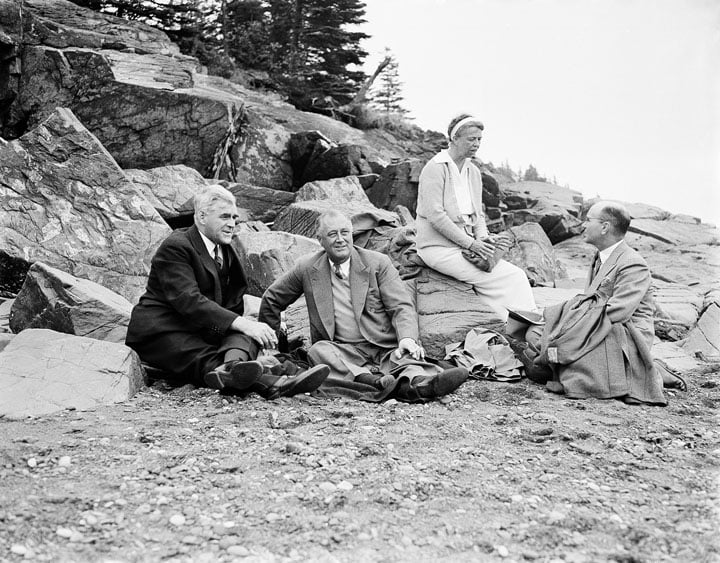 During the first summer of FDR’s presidency, the Roosevelts hosted a Fourth of July picnic at their vacation home on Campobello Island, New Brunswick [about a half mile off the coast of Lubec, Maine]. Formality ruled, and men and women dressed in a causal style,...
During the first summer of FDR’s presidency, the Roosevelts hosted a Fourth of July picnic at their vacation home on Campobello Island, New Brunswick [about a half mile off the coast of Lubec, Maine]. Formality ruled, and men and women dressed in a causal style,...
 Colter’s The Secret Garden Cookbook is mainly a collection of high calory, sugary and fatty foods. She starts with Burnet’s essential food path and never wanders far off. “You can trifle with your breakfast and seem to disdain your dinner,”...
Colter’s The Secret Garden Cookbook is mainly a collection of high calory, sugary and fatty foods. She starts with Burnet’s essential food path and never wanders far off. “You can trifle with your breakfast and seem to disdain your dinner,”...
![James [Jacques] Tissot’s Picnic on the Grass (1881/82)](https://picnicwit.com/wp-content/uploads/2023/08/James-Jacques-Tissot-Le-dejeuner-sur-lherbe-1881-82.jpg) Elizabeth Newton and her children enjoy a birthday party in Tissot’s garden in St. John Wood, London. The partygoers sit on cushions beside a picnic cloth laden with food and drinks prominently placed in the immediate foreground. The children are of secondary...
Elizabeth Newton and her children enjoy a birthday party in Tissot’s garden in St. John Wood, London. The partygoers sit on cushions beside a picnic cloth laden with food and drinks prominently placed in the immediate foreground. The children are of secondary...
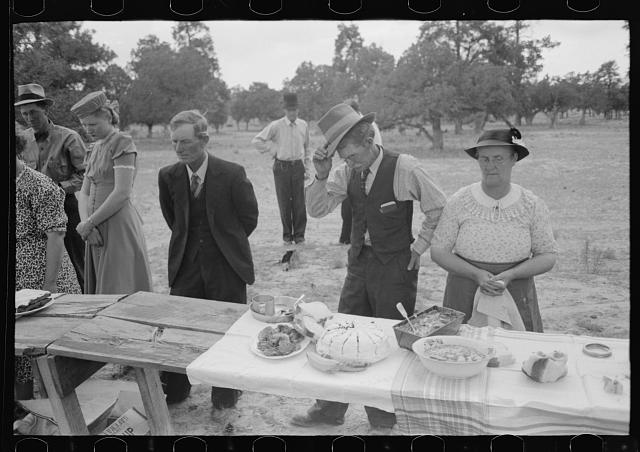 Featured Image: Russell Lee. The Blessing at Dinner on the Grounds at the All-Day Community Sing, Pie Town, New Mexico (1940). Courtesy Library of Congress. LC-USF33- 012785-M5 [P&P] Also, Dinner on the Grounds, Nell Choate Jones. Church Supper (1945) Greenville...
Featured Image: Russell Lee. The Blessing at Dinner on the Grounds at the All-Day Community Sing, Pie Town, New Mexico (1940). Courtesy Library of Congress. LC-USF33- 012785-M5 [P&P] Also, Dinner on the Grounds, Nell Choate Jones. Church Supper (1945) Greenville...
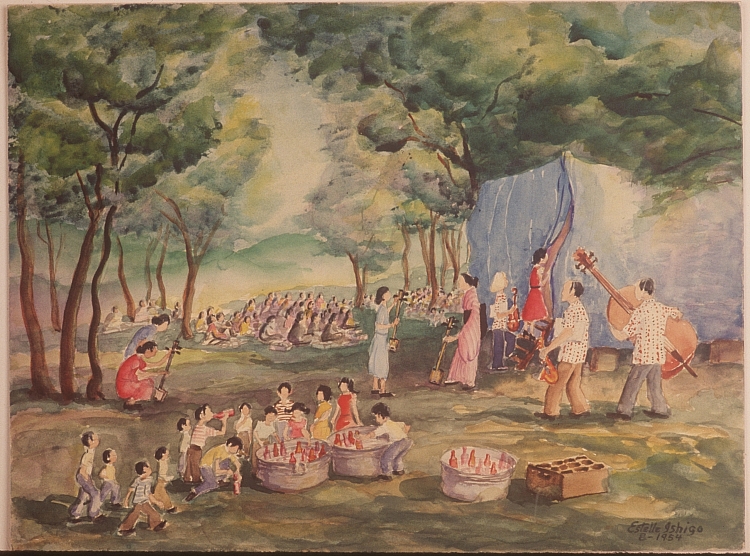 Ishigo accompanied her Japanese husband Arthur when he was interred in 1942 until World War II ended. Japanese Picnic in Elysian Park exemplifies Ishigo’s renewed spirits a decade after the hardship of unjust confinement. Elysian Park is among Los...
Ishigo accompanied her Japanese husband Arthur when he was interred in 1942 until World War II ended. Japanese Picnic in Elysian Park exemplifies Ishigo’s renewed spirits a decade after the hardship of unjust confinement. Elysian Park is among Los...
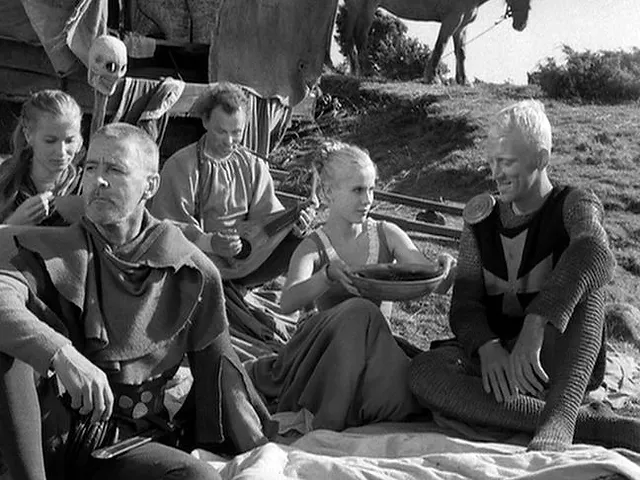 Bergman’s picnics in The Seventh Seal [Det Sjunde Inseglet], are moments of relief in an otherwise deadly serious drama about death and the meaning of God. When Block interrupts his game of chess with Death, he joins Jof (Nils Poppe) and Mia (Bibi Andersson)...
Bergman’s picnics in The Seventh Seal [Det Sjunde Inseglet], are moments of relief in an otherwise deadly serious drama about death and the meaning of God. When Block interrupts his game of chess with Death, he joins Jof (Nils Poppe) and Mia (Bibi Andersson)...
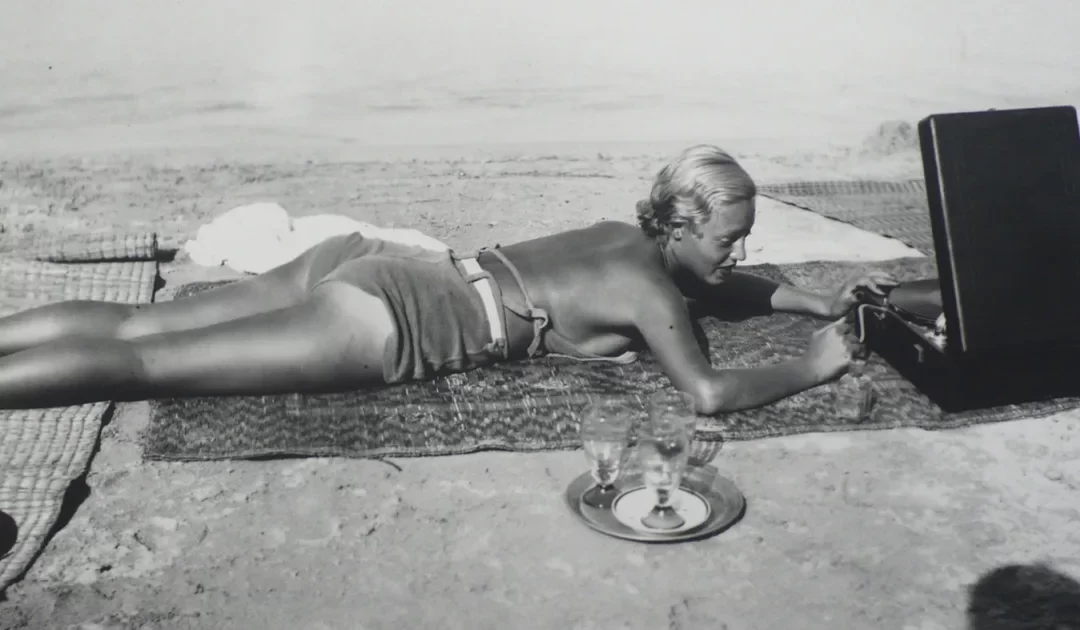 Sunbathing on the beach with champagne. Lartigue’s shadow is seen in the lower left corner. See Jacques Henri Lartigue. Chou Valton at the plage de la Garoupe, Cap d’Antibes, July 1932. Silver Gelatin Print.
Sunbathing on the beach with champagne. Lartigue’s shadow is seen in the lower left corner. See Jacques Henri Lartigue. Chou Valton at the plage de la Garoupe, Cap d’Antibes, July 1932. Silver Gelatin Print.
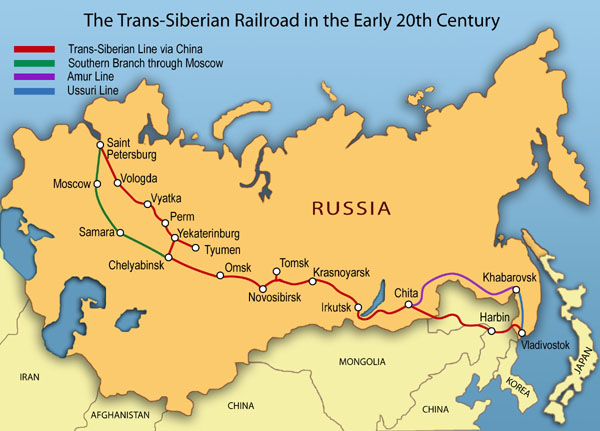 In August 1939, Russia and Germany signed a non-aggression pact. The following October, Major Davidson-Houston was spying for the British Army, and “Siberian Picnic” is his public account of his 5,772-mile Trans-Siberian “Hard Class” train ride...
In August 1939, Russia and Germany signed a non-aggression pact. The following October, Major Davidson-Houston was spying for the British Army, and “Siberian Picnic” is his public account of his 5,772-mile Trans-Siberian “Hard Class” train ride...
 Trollope’s Phineas Redux is the fourth book in the Phineas Finn Series. It was among his most popular novels. Numerous hunt scenes and references suggest Finn’s plight evading his enemies. A halt during a fox hunt provides the opportunity for a simple picnic lunch in...
Trollope’s Phineas Redux is the fourth book in the Phineas Finn Series. It was among his most popular novels. Numerous hunt scenes and references suggest Finn’s plight evading his enemies. A halt during a fox hunt provides the opportunity for a simple picnic lunch in...
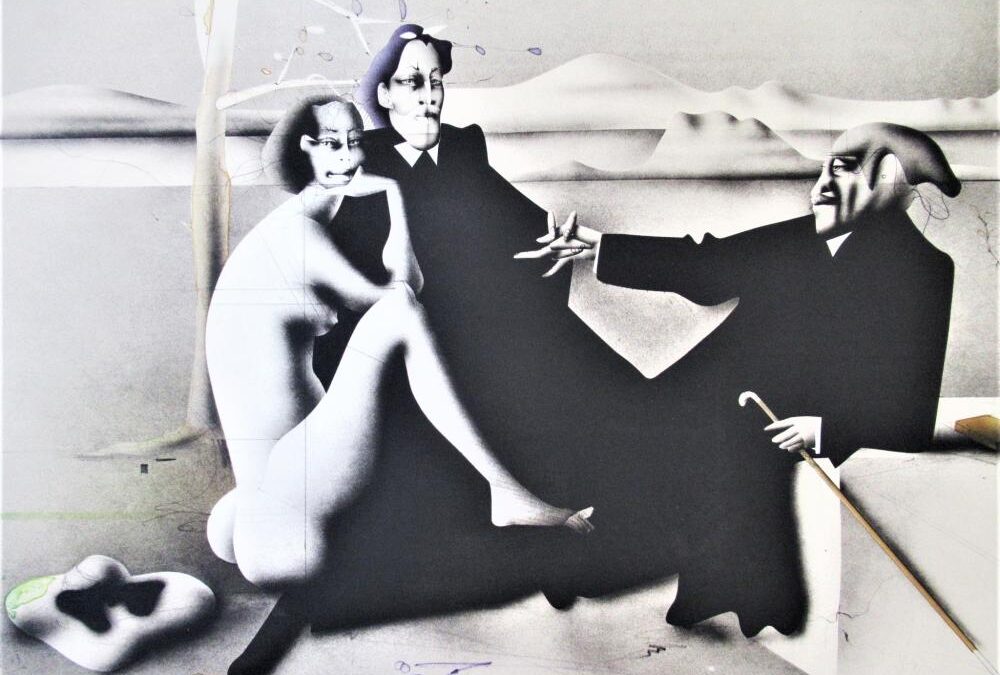 Wunderlich’s Das Frühstuck im Grünen [Luncheon on the Grass] is a surrealistic adaptation of both Édouard Manet’s Luncheon on the Grass. Sensuality, sex, and any semblance of pleasantries are absent. Distorted, seemingly unhappy, figures sit in a barren landscape....
Wunderlich’s Das Frühstuck im Grünen [Luncheon on the Grass] is a surrealistic adaptation of both Édouard Manet’s Luncheon on the Grass. Sensuality, sex, and any semblance of pleasantries are absent. Distorted, seemingly unhappy, figures sit in a barren landscape....
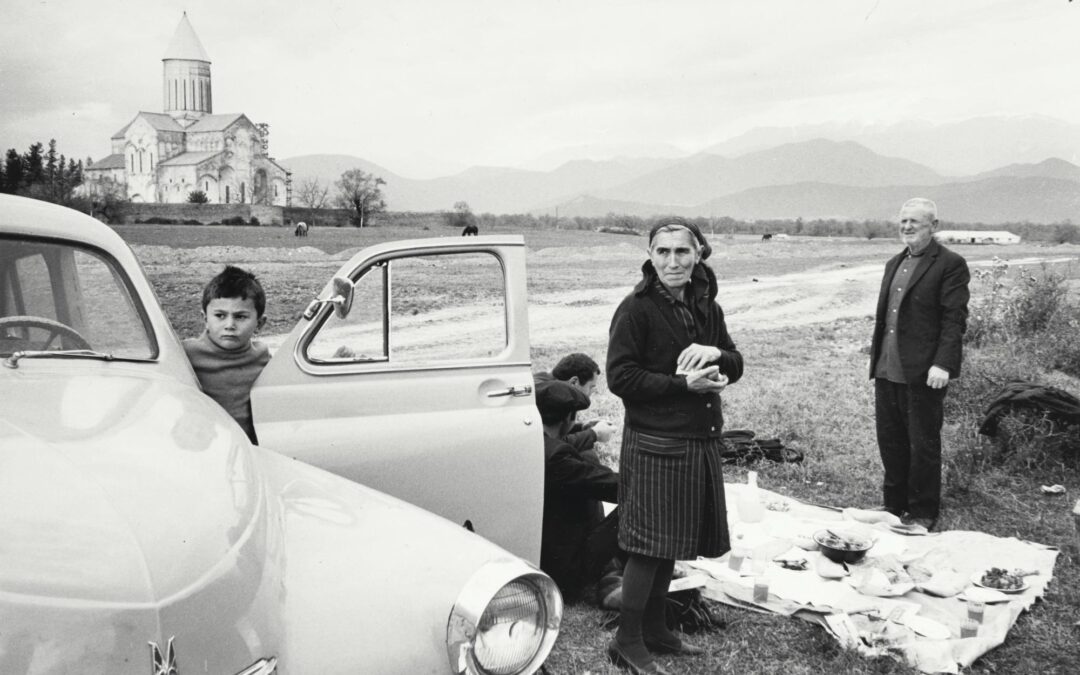 Cartier-Bresson’s Alaverdi Monastery, Geprgis, (USSR) records a family having a roadside picnic while celebrating St. George’s Day. In the midground beyond them looms the Alaverdi Monastery. In the foreground, picnic food is neatly placed on a picnic...
Cartier-Bresson’s Alaverdi Monastery, Geprgis, (USSR) records a family having a roadside picnic while celebrating St. George’s Day. In the midground beyond them looms the Alaverdi Monastery. In the foreground, picnic food is neatly placed on a picnic...
 Pickwick’s picnic on a hunt in Dingley Dell is part of an abortive hunting expedition. It’s famous for Pickwick getting drunk and Sam Weller’s discussion of veal pies, pronounced “weal” in Weller’s Cockney accent. This picnic is...
Pickwick’s picnic on a hunt in Dingley Dell is part of an abortive hunting expedition. It’s famous for Pickwick getting drunk and Sam Weller’s discussion of veal pies, pronounced “weal” in Weller’s Cockney accent. This picnic is...
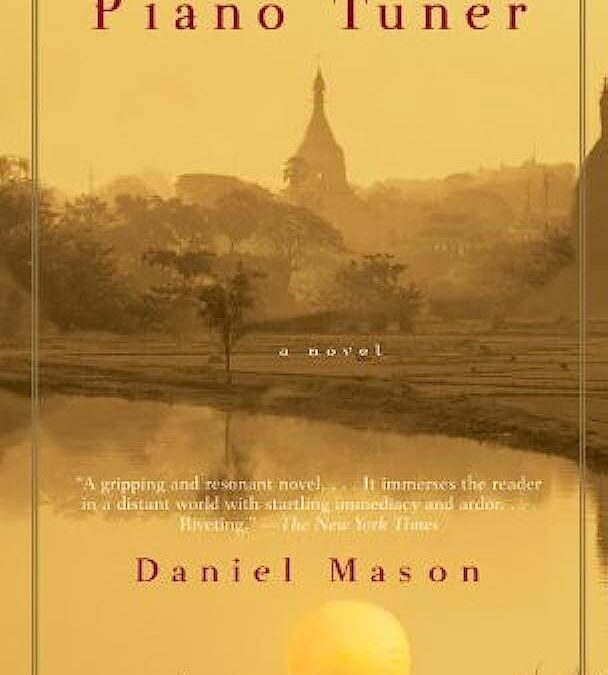 Mason’s The Piano Tuner is an adaptation of Conrad’s The Heart of Darkness. Edgar Drake, the piano tuner, is Charlie Marlow, and Anthony Carroll, Surgeon-Major in the British Army, then annexing Burma. Carroll is accused of setting up his state in defiance...
Mason’s The Piano Tuner is an adaptation of Conrad’s The Heart of Darkness. Edgar Drake, the piano tuner, is Charlie Marlow, and Anthony Carroll, Surgeon-Major in the British Army, then annexing Burma. Carroll is accused of setting up his state in defiance...
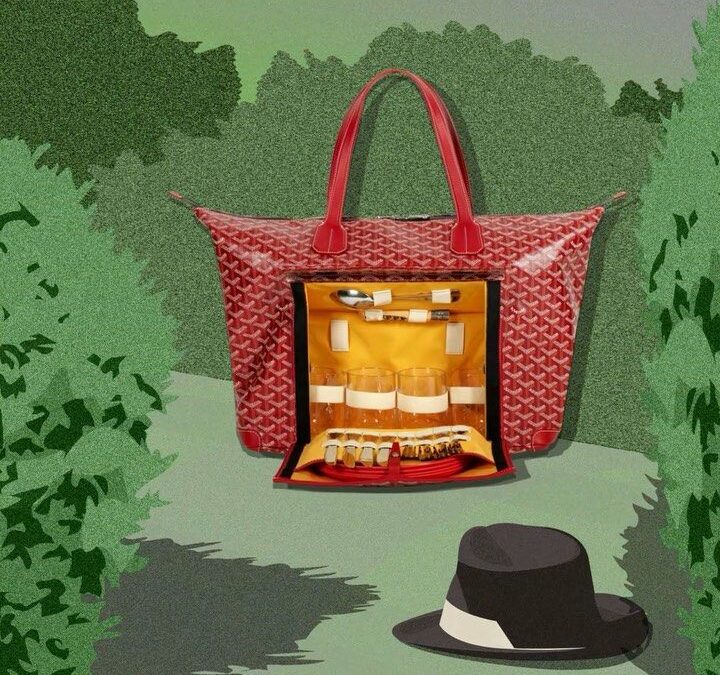 Pellen’s copy for Goyard’s picnic bag is mainly her invention. “The term itself,” she writes, “—a contraction of the expression “piquer (meaning to nibble) des nique (things of little value)” –was coined in the 13th century. During the Middle Ages, the picnic is a...
Pellen’s copy for Goyard’s picnic bag is mainly her invention. “The term itself,” she writes, “—a contraction of the expression “piquer (meaning to nibble) des nique (things of little value)” –was coined in the 13th century. During the Middle Ages, the picnic is a...
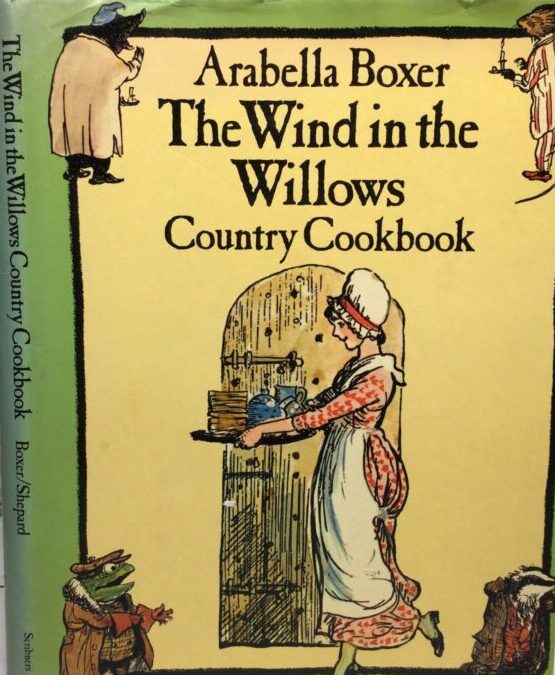 Boxer’s “Food for Excursions” is mainly a collection of carbohydrates, sweets, and fatty meats. Her suggestions include Riverside Sandwich, Sausage Sandwich, Potted Shrimp Sandwich, Toad Hall Steak Sandwich, Stuffed Eggs, River-Bankers Lunch,...
Boxer’s “Food for Excursions” is mainly a collection of carbohydrates, sweets, and fatty meats. Her suggestions include Riverside Sandwich, Sausage Sandwich, Potted Shrimp Sandwich, Toad Hall Steak Sandwich, Stuffed Eggs, River-Bankers Lunch,...
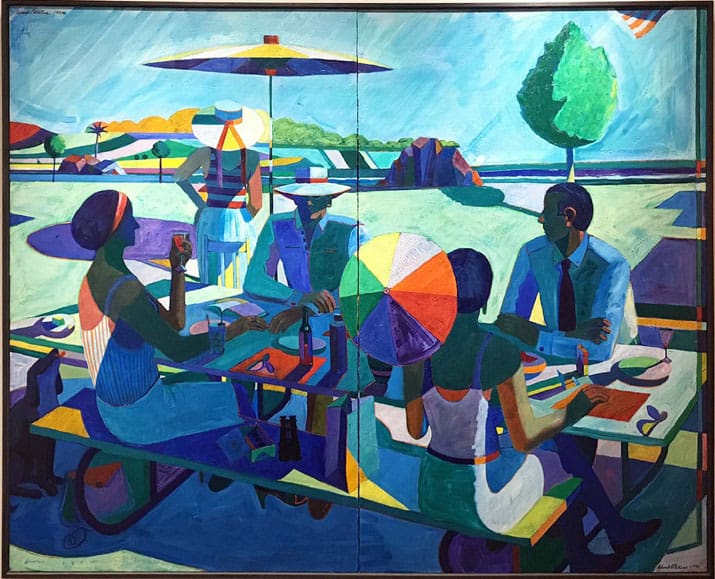 Petersen’s delightful obsession makes him happy. “Each painting,” he says, “has a different kind of mathematical solution; I’m not always able to solve it, but I try to work out a pattern of shapes.” Petersen’s esthetic is to amalgamate abstraction with realism and...
Petersen’s delightful obsession makes him happy. “Each painting,” he says, “has a different kind of mathematical solution; I’m not always able to solve it, but I try to work out a pattern of shapes.” Petersen’s esthetic is to amalgamate abstraction with realism and...
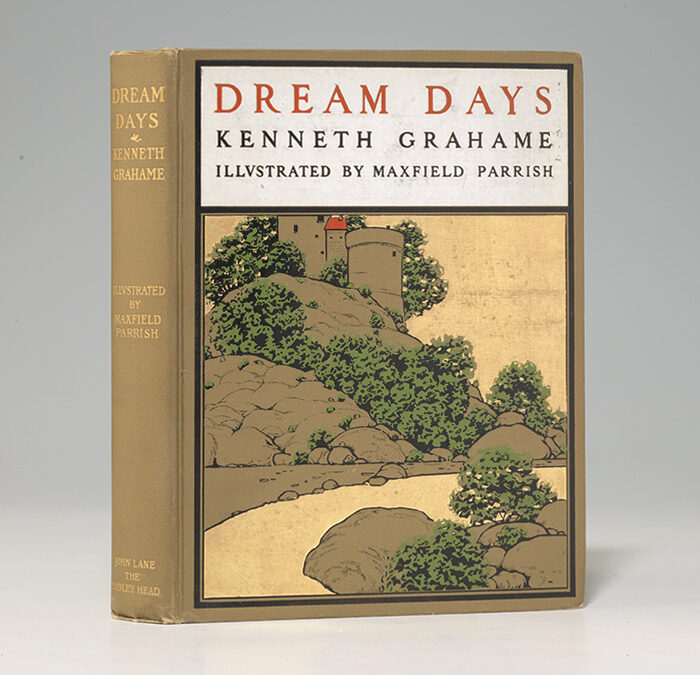 Grahame’s Dream Days are more evidence of his affinity for boats and picnics. Before Ratty’s picnic in Wind in the Willows, Grahame relates a pleasant dream about boating on a river in an Arcadian world. “I just go. But generally, it begins...
Hoffman’s Harvest Moon Walk is a masquerade picnic where revelers dress as vegetables. According to the Griswold Museum, “Hoffman’s eccentric depiction of strangely clad figures captures one of the Lyme Art Colony’s most festive rituals. On an...
Grahame’s Dream Days are more evidence of his affinity for boats and picnics. Before Ratty’s picnic in Wind in the Willows, Grahame relates a pleasant dream about boating on a river in an Arcadian world. “I just go. But generally, it begins...
Hoffman’s Harvest Moon Walk is a masquerade picnic where revelers dress as vegetables. According to the Griswold Museum, “Hoffman’s eccentric depiction of strangely clad figures captures one of the Lyme Art Colony’s most festive rituals. On an...
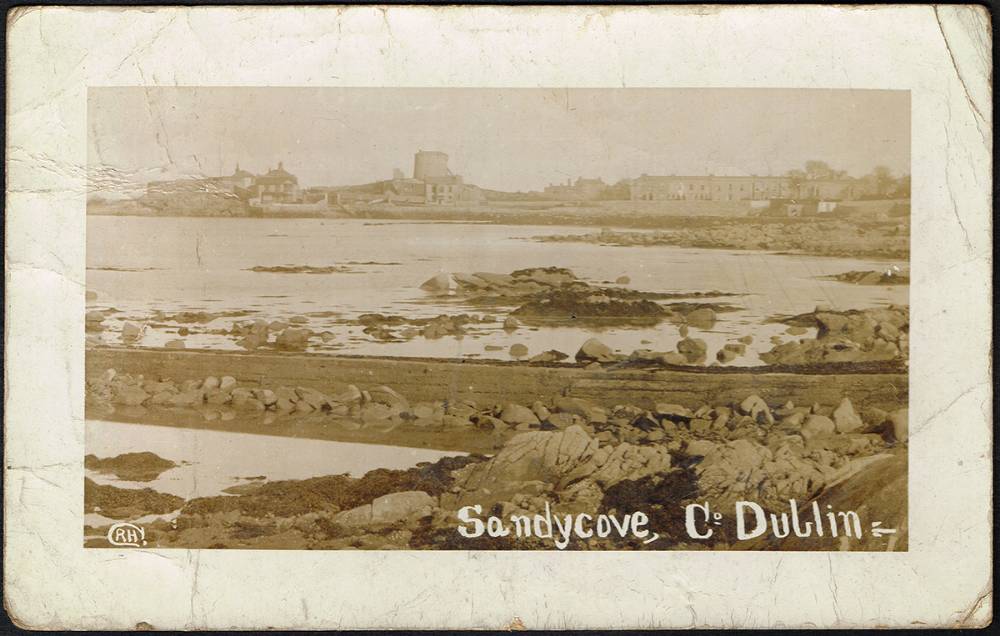 Phoebe Quirke has asked St.John Strafford to a picnic. It’s not the best weather for a picnic. It’s October, the days are cool, and the sky is usually partly sunny. They have been awkward lovers; partly because Phobe is diffident and Strafford is taciturn. They have...
Phoebe Quirke has asked St.John Strafford to a picnic. It’s not the best weather for a picnic. It’s October, the days are cool, and the sky is usually partly sunny. They have been awkward lovers; partly because Phobe is diffident and Strafford is taciturn. They have...
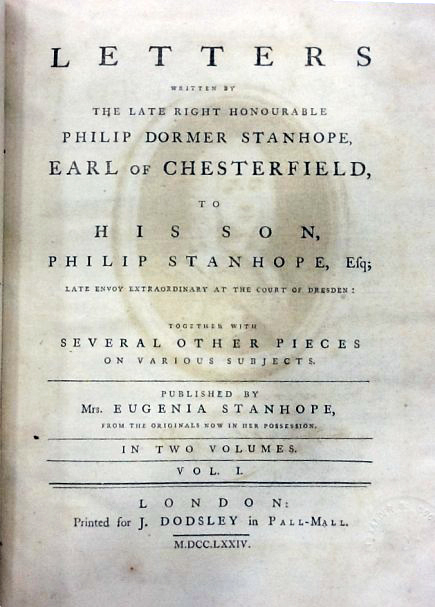 Philip Dormer Stanhope, Lord Chesterfield, is the second person to use picnic in English and spell it in a modern way. His son Philip wrote that he attended a picnic gathering at Madame Valentin’s salon, but his 1748 letter is lost. His father’s letter was published...
Philip Dormer Stanhope, Lord Chesterfield, is the second person to use picnic in English and spell it in a modern way. His son Philip wrote that he attended a picnic gathering at Madame Valentin’s salon, but his 1748 letter is lost. His father’s letter was published...
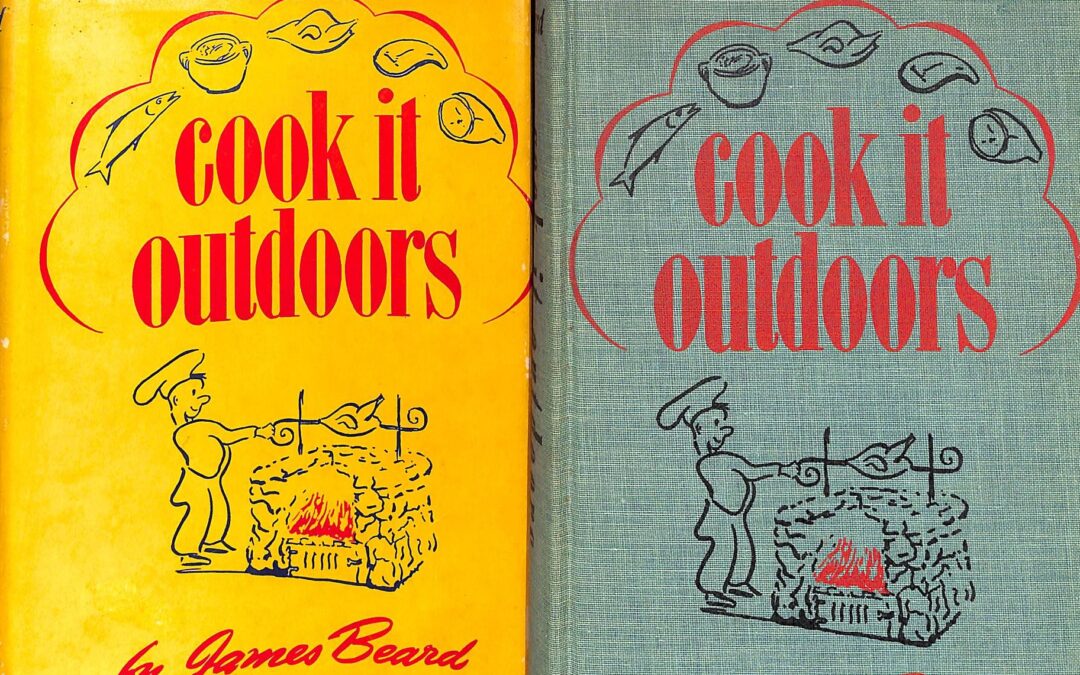 Any cookbook to which picnic is added to the title is a picnic cookbook. Even the first specifically themed picnic cookbook, Linda Larned’s 1915 One Hundred Picnic Suggestions, might be any cookbook. New picnic cookbooks, each striving for some novelty every...
Any cookbook to which picnic is added to the title is a picnic cookbook. Even the first specifically themed picnic cookbook, Linda Larned’s 1915 One Hundred Picnic Suggestions, might be any cookbook. New picnic cookbooks, each striving for some novelty every...
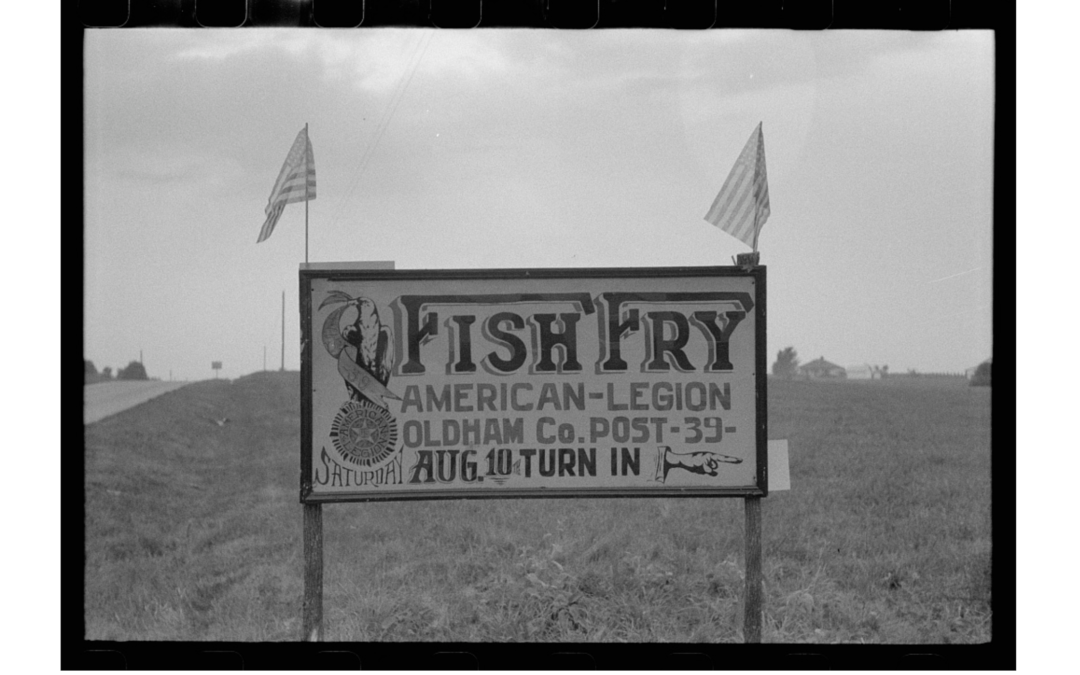 Craigie W. Craigie’s “The Vocabulary of Picnic” is a collection of 19th-century compound expressions for a picnic, such as basket dinner, basket lunch, basket party, and basket picnic. There is a Croquet basket picnic, Grand basket pic-nic, social...
Craigie W. Craigie’s “The Vocabulary of Picnic” is a collection of 19th-century compound expressions for a picnic, such as basket dinner, basket lunch, basket party, and basket picnic. There is a Croquet basket picnic, Grand basket pic-nic, social...



























































































































































![James [Jacques]Tissot Holyday (1876c.)](https://picnicwit.com/wp-content/uploads/2017/04/James-Jaques-Tissot.-Holyday-1109-1080x675.jpg)



























































![George Bellows Picnic [Cooper Lake, Woodstock, NY] (1924)](https://picnicwit.com/wp-content/uploads/2022/01/Bellows_George_The_Picnic_1924-1080x675.jpg)





























![Lee Miller’s Picnic [Ile Sainte-Marguerite] (1937)](https://picnicwit.com/wp-content/uploads/2021/11/Lee-Miller.-Picnic-Ile-Sainte-Marguerite-1937--700x675.jpg)








































![Laurent de Brunhoff’s Babar’s Picnic [Pique-nique Chez Babar] (1949)](https://picnicwit.com/wp-content/uploads/2014/01/Laurent-de-Brunhoff.-Babars-Picnic-1949-1080x675.jpg)





















































![Pál Szinyei Merse’s Postage Picnic in May [aka Majális] (1967)](https://picnicwit.com/wp-content/uploads/2022/06/Pál-Szinyei-Merses-Picnic-in-May-aka-Majális-1873-1080x675.jpg)









![Albert E. Brumley’s All-Day Singin’ and Dinner on the Ground[s] (1972)](https://picnicwit.com/wp-content/uploads/2018/02/Albert-Brumley.-All-Day-Singin-and-Dinner-on-the-Ground-1080x675.jpg)













































































































































![James [Jacques] Tissot’s Picnic on the Grass (1881/82)](https://picnicwit.com/wp-content/uploads/2023/08/James-Jacques-Tissot-Le-dejeuner-sur-lherbe-1881-82.jpg)


















